

The Only Germany Travel Guide You’ll Ever Need
Last Updated: January 5, 2024
*FYI - this post may contain affiliate links, which means we earn a commission at no extra cost to you if you purchase from them. Also, as an Amazon Associate I earn from qualifying purchases. Check out our Privacy Policy and Disclosure. for more info.
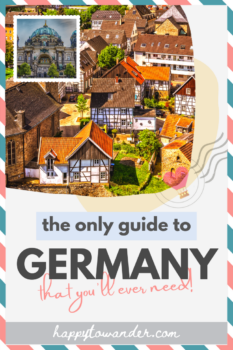
While most commonly associated with beers, bratwursts and tight leather pants, Germany is a country full of delightful finds that extend far beyond the stereotypes.
From dreamy castles and fairytale towns to awe-inspiring nature and sprawling cities, Deutschland has a little something for every kind of traveler… although I’ll admit the leather pants are also great.
I first visited Germany on a 6 week backpacking trip across Europe, and as I sipped my comically large beer under the toasty Berlin sun, I felt a strange sense of calm and belonging.
Spurred by this hunch, I moved to Munich. One study abroad, and 5 years later, I’m still here, with so much giddy enthusiasm for this country that I’ve become a thoroughly insufferable dinner guest.
But my social life’s loss is your gain, my friend… because today, I’ve decided to channel all my Deutschland fangirl tendencies into this concise Germany travel guide filled with all my top tips, itineraries, and recommendations.
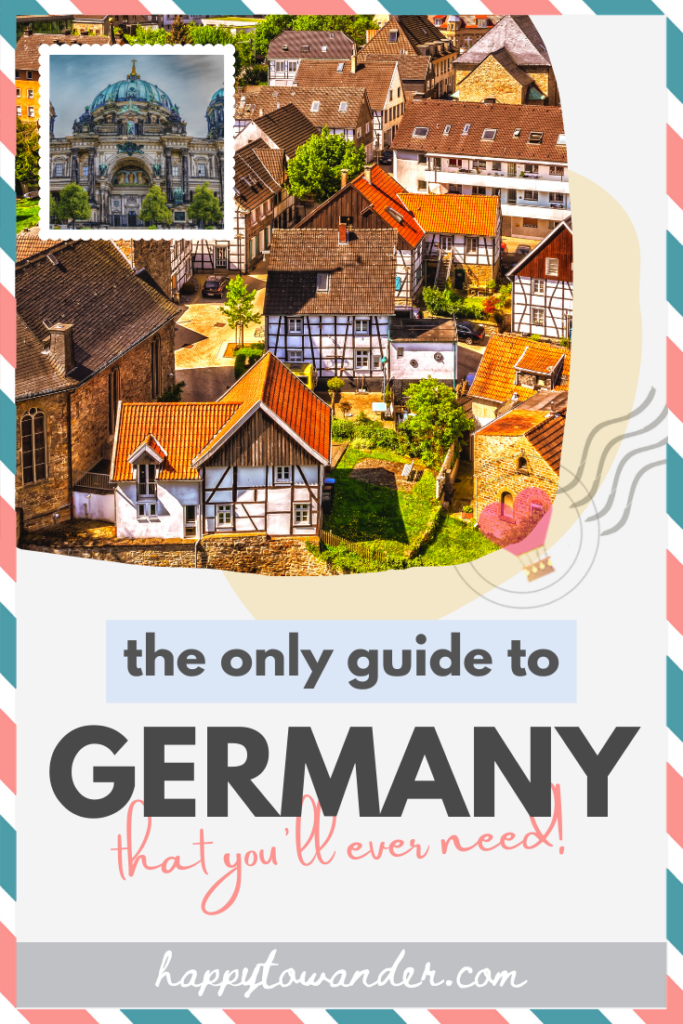
Save this Germany travel guide for later!
I promise it’ll come in handy!
I hope you find it helpful, and of course, feel free to ask any more questions in the comments section or on Instagram here.
Traveling to Germany Basics
Currency: Euro
Language: German, although accents and dialects vary wildly! In larger cities and tourist hotspots, most Germans also speak excellent English.
Getting Around: Trains, buses and flights are plentiful and affordable in Germany – my best tip is to use Omio to compare options easily. Having a car is ideal for visiting smaller towns, more remote locations and numerous destinations in a short amount of time, but is otherwise not needed for big cities.
Germany Highlights (By the Season)
- Winter: Christmas markets, skiing & alpine sports, Karneval and Fasching season (Carnival), Starkbier (Strong beer) season
- Spring: Cherry blossoms in Bonn , Frühlingsfest (Springfest) in Munich
- Summer: Hiking, Beer Garden season, summer festivals/celebrations
- Fall: Oktoberfest and other Volksfests, the world’s biggest pumpkin festival in Ludwigsburg, the Wurstmarkt (world’s largest wine festival)
My Favourite Places in Germany
Let’s get my mega-biased opinion out of the way first – Munich is the city I now call home, and I couldn’t recommend it more… especially if you’re obsessed with beer like I am. This is the birthplace of Oktoberfest after all!
There are lots of fun things to do in Munich , like hopping around the city’s sprawling museum district (many only cost 1 euro on Sundays!), eating up the best Bavarian food that Munich has to offer or soaking in the wealth of historical sites scatered around the city.
It’s also an ideal base for many epic day trips. Going from Munich to Neuschwanstein Castle (AKA the real life Sleeping Beauty castle) takes only 2.5 hours. Or, if you want to visit glorious Salzburg from Munich (AKA the birthplace of Mozart and setting of Sound of Music), that’s only 1 hour by train.
Why visit Munich when you travel Germany:
- Amazing beer & beer festivals
- The English Garden – one of the largest city parks in the world
- Beautiful palaces and museums
- Easy base for amazing day trips to the Alps
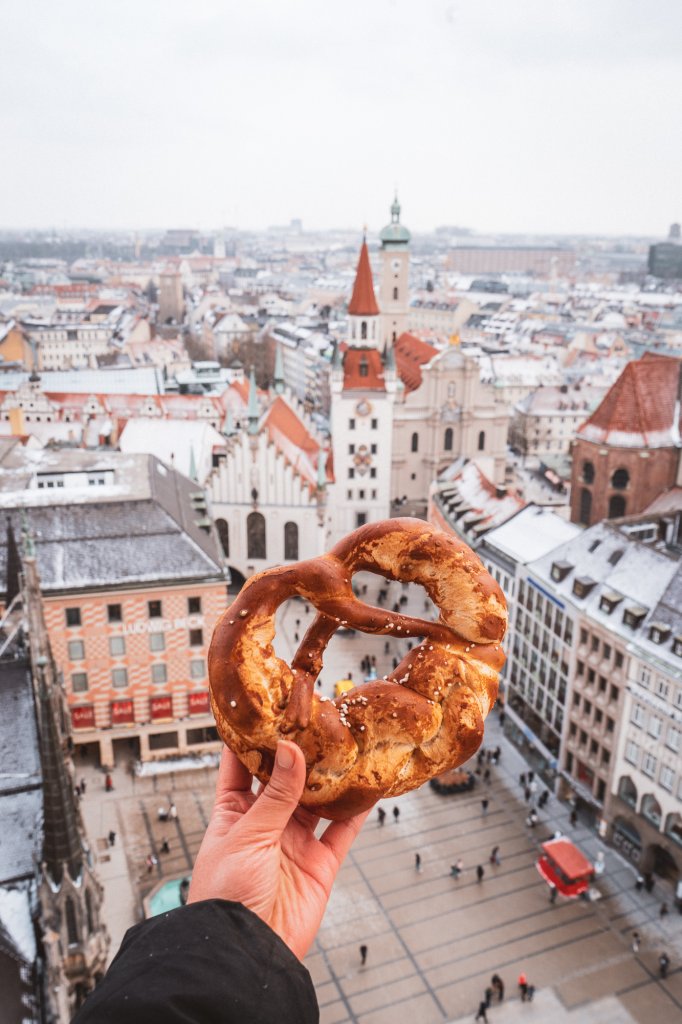
Berchtesgaden National Park
If it’s natural beauty you’re after, Germany’s Berchtesgaden National Park (near the border to Austria) is a must-visit.
Everything here is breathtaking – from the shimmering turquoise lakes and snow-flecked mountains to the adorable Berchtesgaden town center.
And, if you’re up for it, this is the ideal place to enjoy a typically Bavarian wellness weekend.
Why visit Berchtesgaden National Park when you travel Germany:
- Stunning hikes and scenery
- The glorious boat ride on Königssee to see the equally stunning Obersee
- Historic sights like Hitler’s Eagle’s Nest

Hands down one of my favourite places to visit time and time again is Berlin.
This endlessly fascinating city is home to incredible museums, delicious food, and a unique culture that makes it distinct from the rest of the country, despite its status as capital!
Whether you’re a history nerd, an avid partyer, or a famished foodie, Berlin has plenty to offer.
Why visit Berlin when you travel Germany:
- Fascinating history
- World-class museums and attractions
- A thriving nightlife and food scene
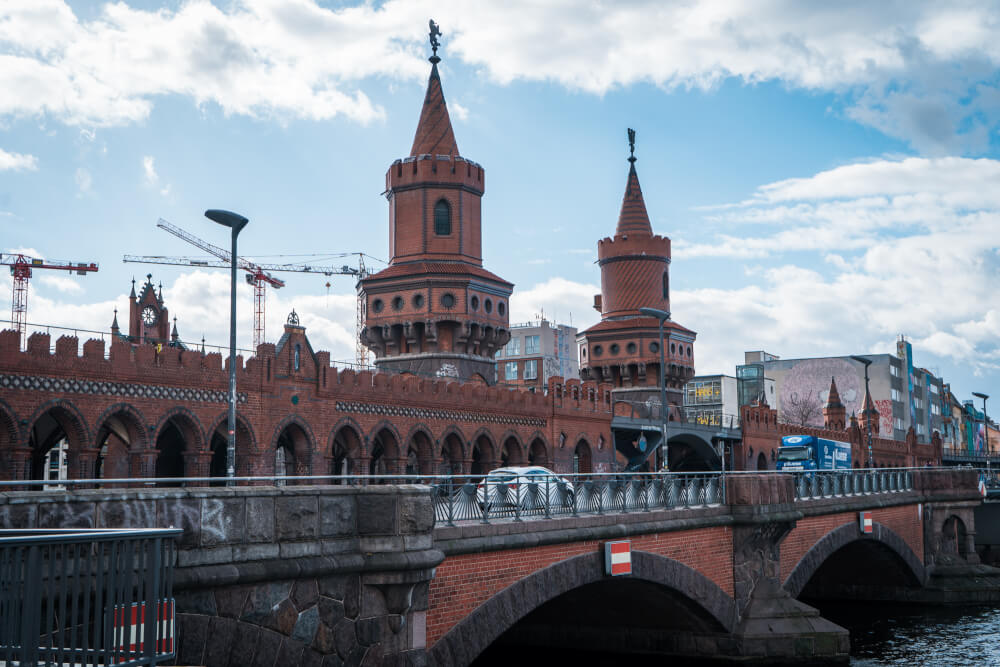
Franconia is a glorious region in northern Bavaria that is divided into Lower, Middle, and Upper Franconia.
To me, it’s one of the most underrated regions in Germany for international visitors, with an abundance of fairytale half-timbered houses, amazing beer, and unique natural landscapes.
Here are some places in Franconia that are absolutely worth visiting:
- Franconian Switzerland
- Würzburg (still haven’t been yet!)
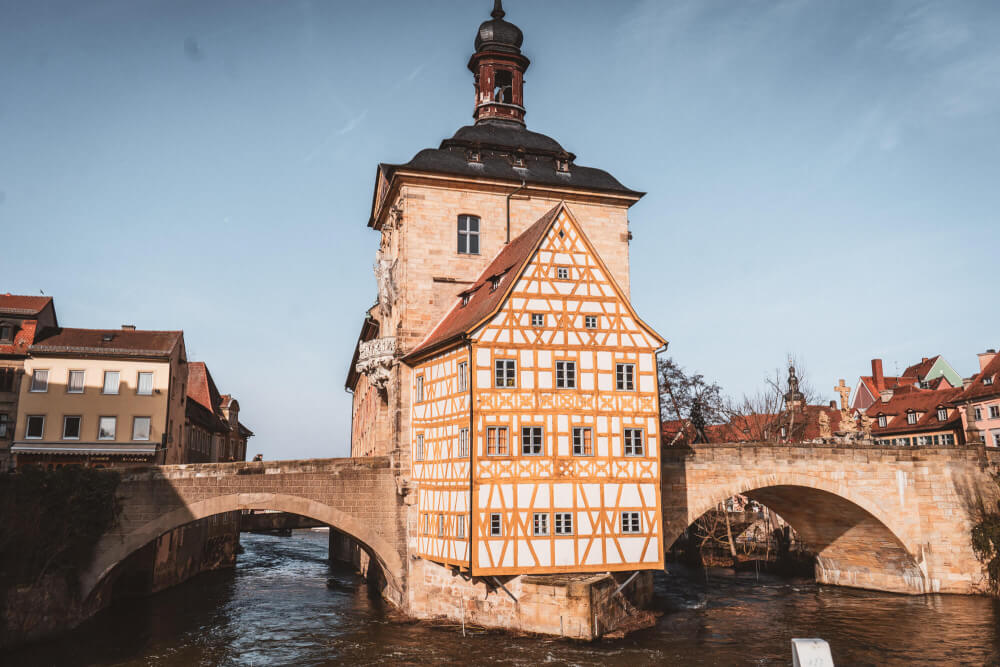
Perhaps the most idyllic entry of this list is Monschau, a sleepy but gorgeous village found near the border to Belgium.
I was lucky enough to come here for Christmas markets a few years ago, and I loved it so much, I skipped the train I’d pre-booked just so I could spend a few more hours there.
Picturesque half-timbered houses clustered around a roaring central river… oh, and a castle on a hill. Because of course they have one.
Why visit Monschau when you travel Germany:
- Super friendly locals
- Picture-perfect scenes at every turn
- Christina might cry if you don’t
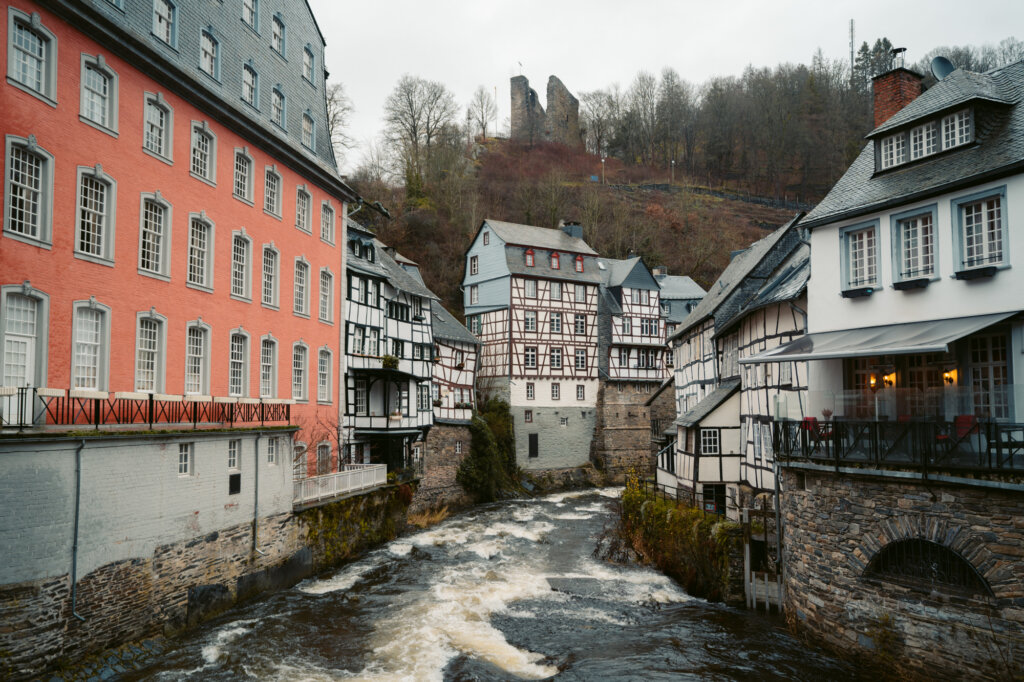
Hamburg is an amazing city I’ve had the chance to visit a few times now. It’s a lifestyle city that reminds me a lot of my hometown, Vancouver.
Home to a mix of classic and modern architecture (including the coolest opera house in the world!), as well as Germany’s #1 attraction – the adorable Miniatur Wonderland, Hamburg has a lot to offer tourists, but perhaps the best way to enjoy it is with a nice beer and sunset along the Elbe.
Why visit Hamburg when you travel Germany :
- Amazing architecture like the Elbphilharmonie
- Fresh and tasty seafood (and a booming foodie scene!)
- A fun, vibrant vibe
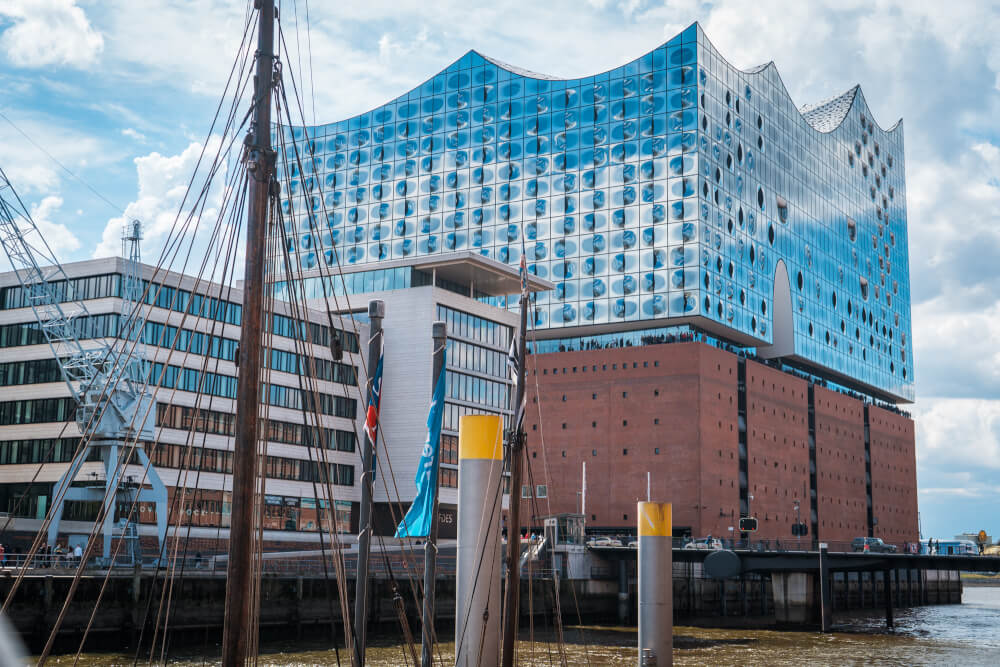
Dresden is one of the most beautiful cities in Germany, and its beauty is all the more astounding when we consider that much of the city was destroyed completely in WWII.
After decades of reconstruction however, Dresden once again shines with its former glory, establishing itself as one of the most important cultural hotspots in Germany.
… and all only a stone’s throw from Saxon Switzerland, one of the most beautiful natural wonders in the country!
Why visit Dresden when you travel Germany :
- Stunning architecture and sights
- World-class museums and culture scene
- Its jawdropping Christmas market (the oldest one in the country!)
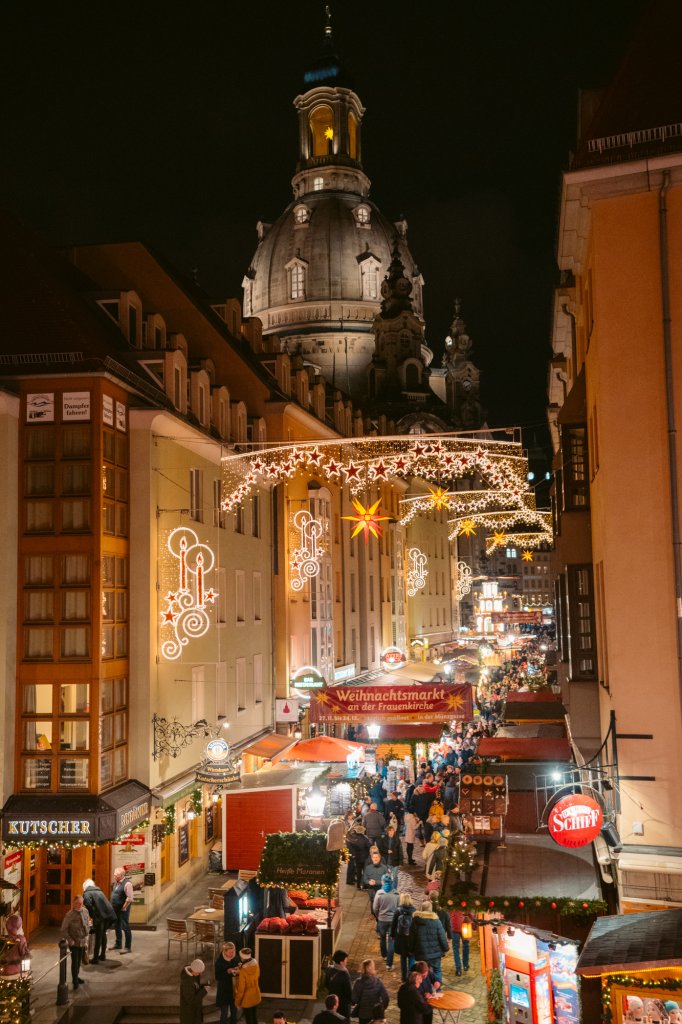
Stuttgart (and its Surrounding Area)
Stuttgart is the biggest city (and capital) of the German state Baden-Württemburg.
It’s perhaps best known as the ‘cradle of the automobile industry’, which explains why it’s home to not just one, but two car-centric museums: one belonging to Mercedes-Benz, and one to Porsche.
Besides cars though, the area around Stuttgart offers up some of the cutest small towns you can find in Germany, all easily reachable by public transport, meaning you get the best of all worlds during a visit here.
Why visit Stuttgart and the surrounding area when you travel Germany:
- Fairytale towns like Esslingen, Ludwigsburg, and Tübingen
- Stuttgart’s Stadtbibliothek, one of the most unique and beautiful libraries in the world
- Lots of fun events like Stuttgart’s Christmas Market and the Cannstatter Volksfest
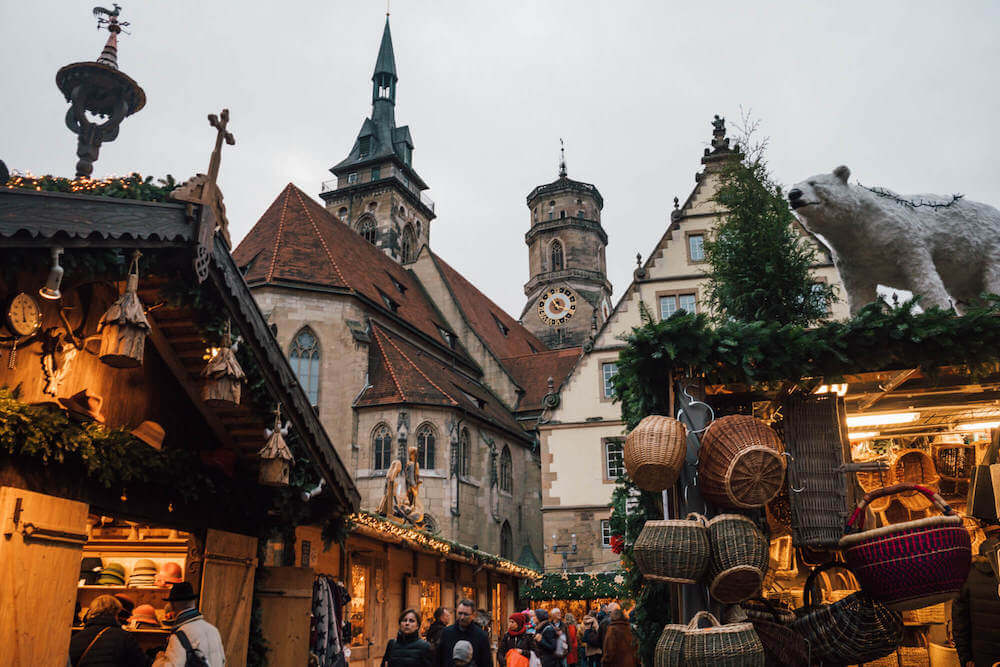
Thuringia is a state often overlooked by international tourists, but if you’re looking for a truly charming German escape, its capital Erfurt makes an excellent choice.
This beautiful city is famed for its unique Krämerbrücke, which is a gorgeous medieval bridge lined with residential buildings.
But that’s not all – there’s also an impressive cathedral, an imposing fortress, and surprises waiting on every corner… quite literally, because Erfurt is the HQ of the German children’s channel KiKA, and there’s plenty of fun statues of famous characters scattered around town.
Why visit Erfurt when you travel Germany:
- Krämerbrücke, the longest inhabited bridge in Europe
- Quirky and fun children’s channel sculptures all over the city
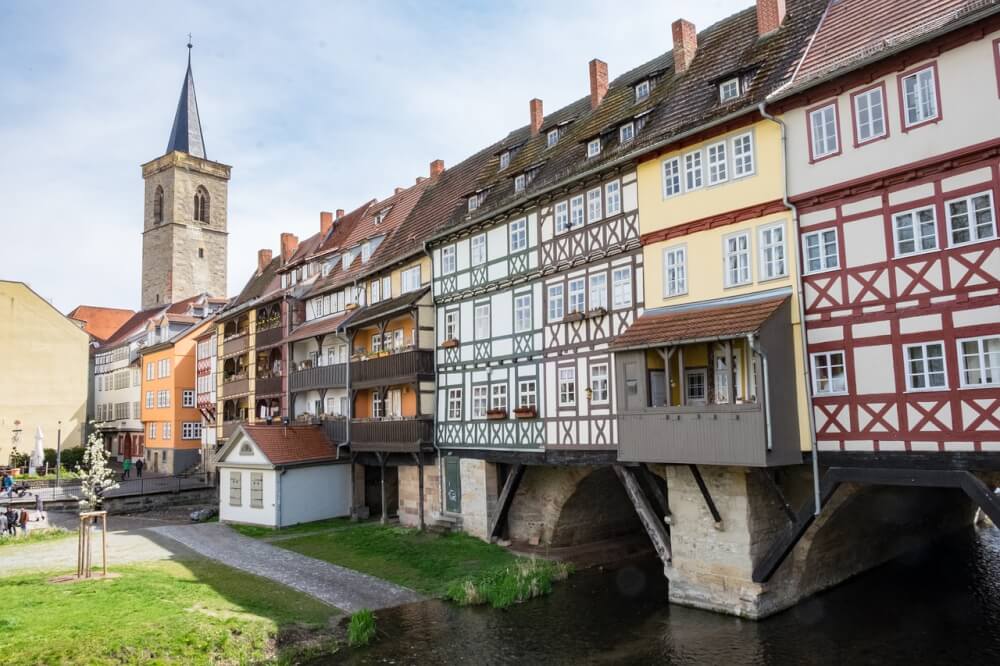
Cologne, to me, is a city synonymous with fun and celebration. While at first glance, it might not rank among the “prettiest” places to visit in Germany (much of it was destroyed in the war), it still boasts several impressive landmarks and sights, like the epic Cologne Cathedral.
Where Cologne really shines though is during special events – the Christmas markets here are some of the best I’ve been to in my entire life, and the Karneval celebrations… well, those are truly epic!
Why visit Cologne when you travel Germany:
- Bucket list events like the Cologne Christmas Market and Kölner Karneval
- The iconic Kölner Dom (Cologne Cathedral), one of the most famous churches in the world
- Fun-loving locals who are among the friendliest I’ve ever encountered in Germany
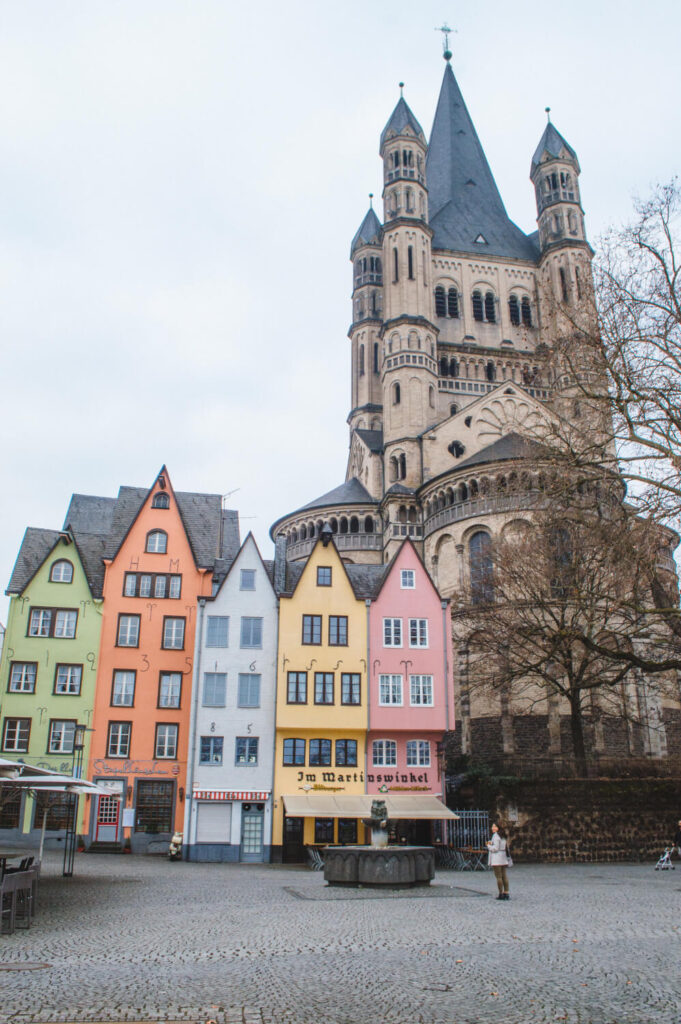
Last but not least, we have Hannover, a city which (in my opinion) is one of the most underrated cities in Germany where tourism is concerned.
Locally, people often joke that Hannover is one of the most boring cities in Germany, but I don’t think that’s true at all. One quick look and you’ll find a stunning palace within the city, an architecturally impressive Town Hall (with a unique elevator offering epic views), and a cool laidback vibe that many compare to what Berlin was like decades ago.
Here are some awesome things to do in Hannover.
Why visit Hannover when you travel Germany:
- Its gorgeous New Town Hall
- The stunning Herrenhausen Palace and its gardens
- A fun, laidback city vibe
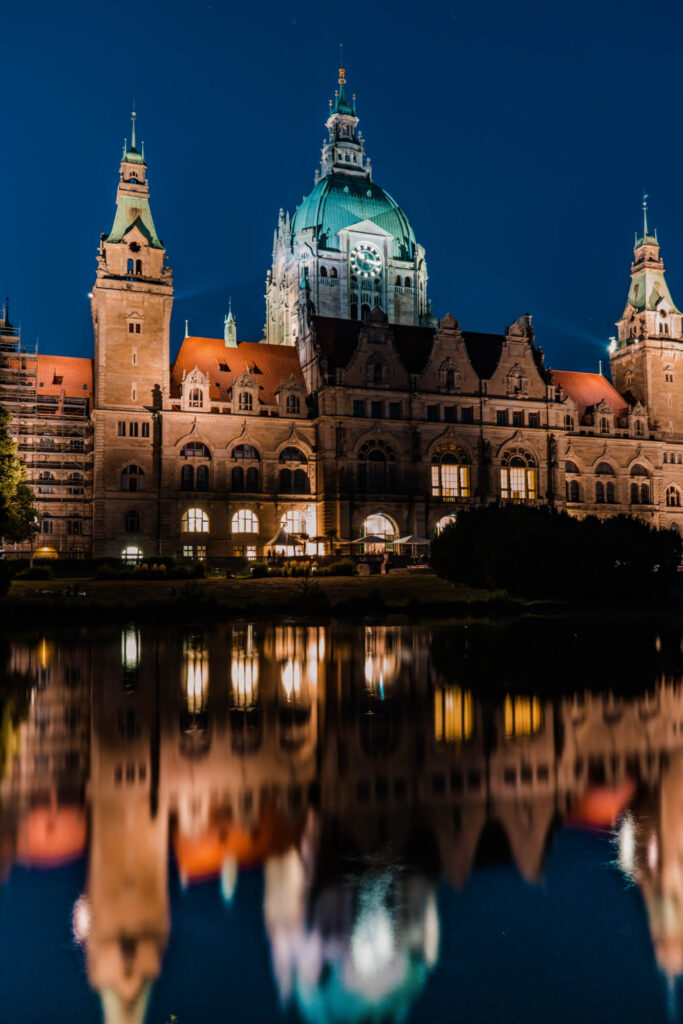
Bucket List Experiences in Germany
Germany is full of incredible bucket list experiences. Here are a few of my favourites:
Christmas Markets
German Christmas markets are the stuff of bucket list dreams.
If you adore Christmas, a German Xmas market trip needs to make it on your bucket list, because nobody captures Christmas coziness and joy quite like the Germans do.
The best part (besides the droolworthy assortment of German Christmas Market foods ) is that you’ll find Christmas markets in just about every city, town, and even the smallest of villages, each with their own unique take on traditions.
Trust me, you could never get bored of visiting these.
Here are some full guides to the Christmas markets I’ve visited in Germany:
- Munich’s Christmas Markets
- Berlin’s Christmas Markets
- Cologne’s Christmas Markets
- Esslingen Christmas Market
- Ludwigsburg Christmas Market
- Karlsruhe Christmas Market
- Düsseldorf Christmas Market
- Nuremberg Christmas Market
- Essen Christmas Market

Oktoberfest
Trust me – Oktoberfest , AKA the world’s largest beer festival, is reason enough to make a trip to Germany.
Typically celebrated annually in Munich, this is one of the most incredible events in the world, with millions of people attending, millions of beer served, and a guaranteed recipe for making memories to last a lifetime.
… If you can remember anything after 5L of beer that is.
Read my full Oktoberfest guide for more details.
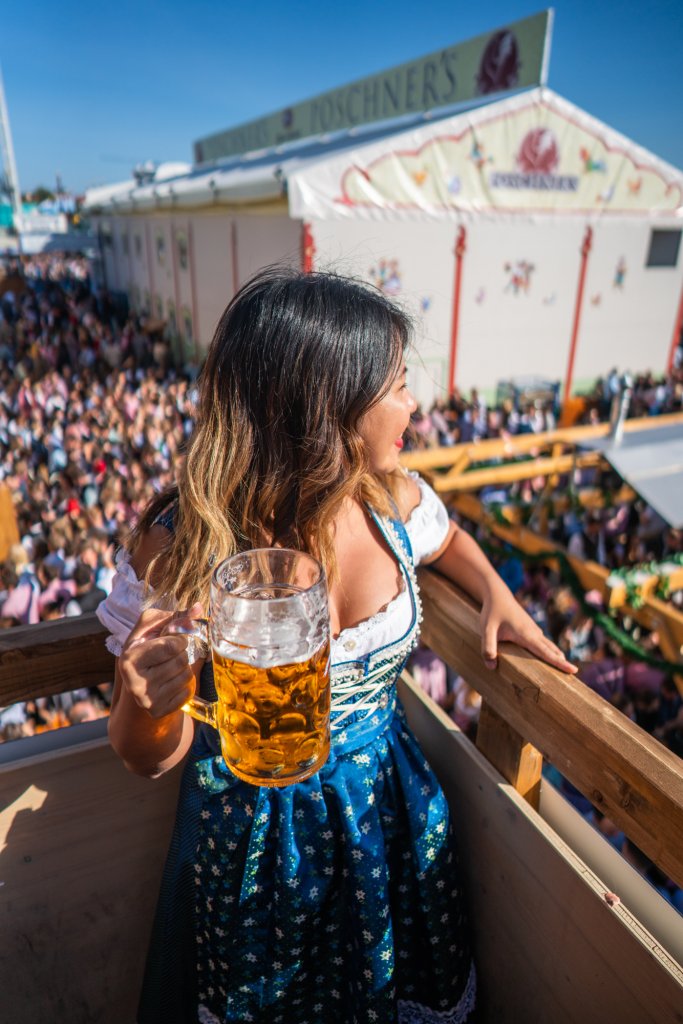
Visiting Fairytale Castles
If you love castles, I recommend avoiding Germany……. because you might just combust from sheer fangirl joy.
Seriously, Germany is every castle lover’s kryptonite, with elegant palaces and fairytale castles in the thousands. If you’re a Disney gal like me who grew up dreaming of happily ever afters, pack a ballgown and head to Germany ASAP.
I promise you won’t be disappointed.
Here are some castles that you must visit in Germany:
- Neuschwanstein Castle
- Nuremberg Castle
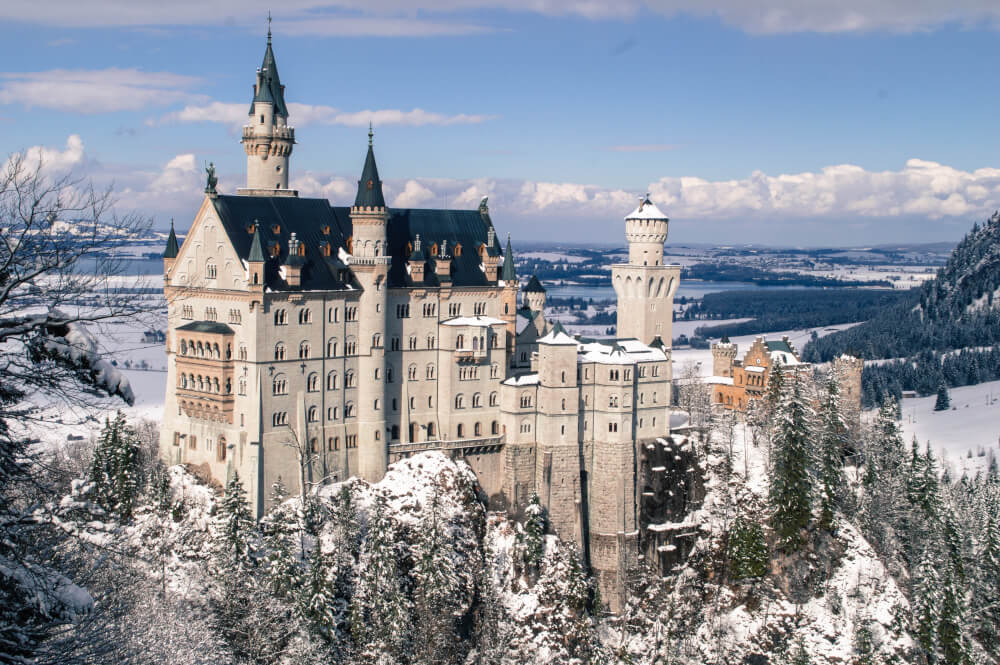
The Cherry Blossoms in Bonn
The cherry blossoms in Bonn (also the birthplace of Beethoven and gummy bear legend, Haribo) are absolutely spectacular, and 100% worth visiting in Spring time. In fact, I’d even say they’re one of the best things to see in Europe at Spring time.
Yes, you, too, can come frolic in these tunnels of pink! Here is my guide on where to find cherry blossoms in Bonn.

Karneval, Fasching, Etc.
Carnival Season is one of the best times to visit Germany if you’re looking for a party.
The grandest celebrations take place just before Lent, and are celebrated throughout the country, although the festivites in North-Rhine Westphalia are probably the best known.
My top recommendation? Go celebrate in Cologne, where the Kölner Karneval draws millions of visitors every year.
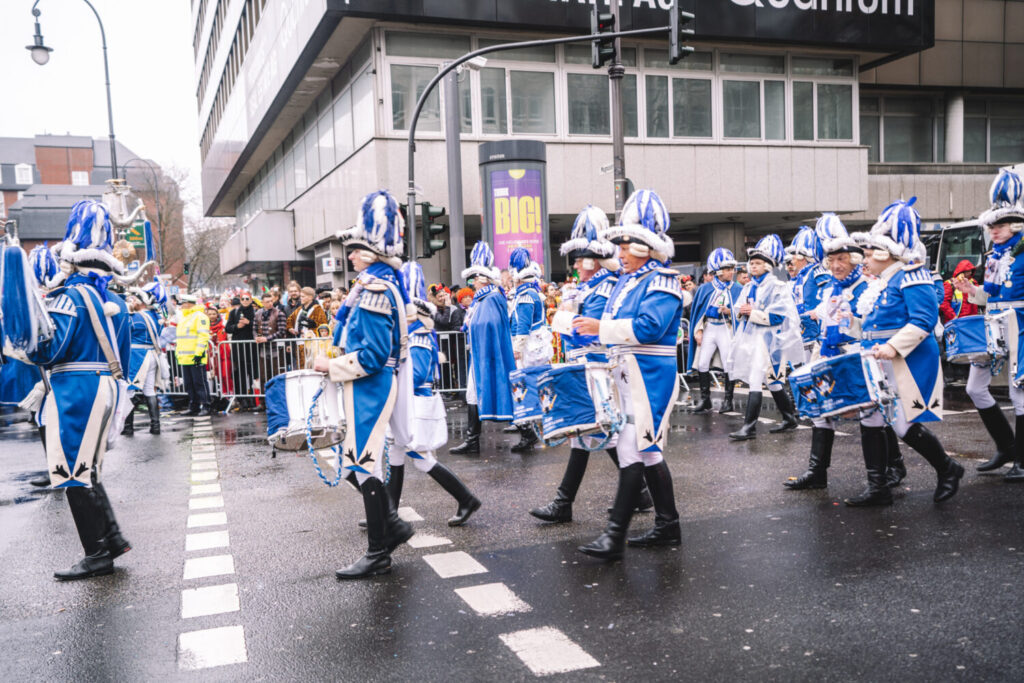
My Recommended Germany Itineraries
Germany is a huge country with a massive diversity in sights… so how can you organize your time efficiently and make the most of your trip? Here are some German trip itinerary ideas…
Germany itinerary ideas for a taste of everything:
- Southern Germany Classic: Munich, the Allgäu (for Castles!), Garmisch Partenkirchen, Berchtesgaden National Park, Stuttgart & Area, Black Forest
- Eastern Germany Classic: Berlin, Dresden, Saxon Switzerland
- Western Germany Classic: Aachen, Monschau, Eifel National Park
- Northern Germany Classic: Hamburg, Bremen , Lübeck, Kiel, Sylt
- The Rhine River Classic: Mainz, Koblenz, Burg Eltz, Cochem, Bonn, Cologne, Düsseldorf
- The Harz Mountains Experience: Harz Mountains, Goslar, Wernigerode, Quedlinburg
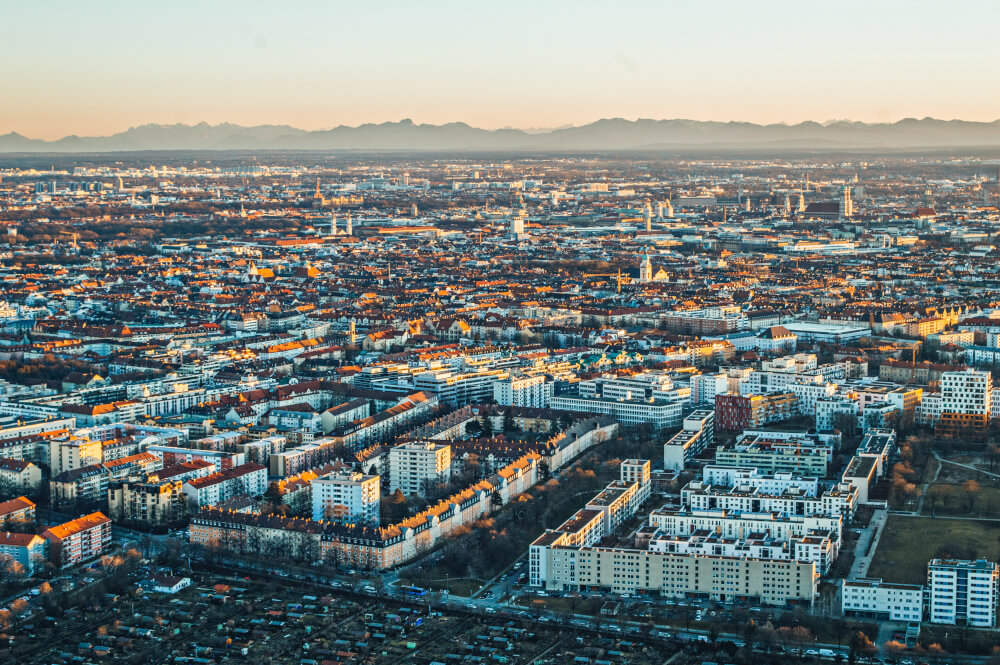
Germany itinerary ideas for city breakers and culture hunters:
- The Big City Tour: Berlin and Munich (a 4 hour express train connects them)
- The BaWu Special: Stuttgart, Ludwigsburg, Tübingen, Esslingen, Heidelberg
- The Bavaria Special: Munich, Nuremberg, Bamberg, Würzburg, Bayreuth
- The Saxony Special: Leipzig, Görlitz, Dresden
- The Rhine City Hop: Bonn, Cologne, Düsseldorf
- The Romantic Villages Hop: Würzburg, Dinkelsbühl, Nördlingen, Rothenburg ob der Tauber, Füssen

Germany itinerary ideas for nature lovers:
- Southern Germany Nature Itinerary: Berchtesgaden National Park, Garmisch-Partenkirchen, the Black Forest and Lake Constance (Bodensee)
- Bavaria’s Best Nature Itinerary: Berchtesgaden National Park, Garmisch-Partenkirchen, Munich’s Lake Region, Franconian Switzerland, Danube Gorge
- Eastern Germany Nature Itinerary: Dresden and Saxon Switzerland National Park

My Top Germany Travel Tips
- If you’re overwhelmed by transport options, Omio is a great resource for comparing trains, buses and flights in Germany at the same time.
- If travelling by train, look into group discount tickets like the Bayern Ticket which give you unlimited train travel for one day on regional trains. It can save you a TON of money.
- If you are traveling to multiple countries nearby (i.e. Switzerland), a Eurail pass might save you money.
Accommodation:
- Booking.com is a great place to search up hotels, and filtering by Free Cancellation allows you to book without paying upfront
- Airbnb can be a very affordable alternative for longer stays/bigger groups
Attractions and Tickets:
- GetYourGuide is a great site for finding tours and attraction tickets
- City passes like the Munich City Pass , Berlin Pass , and the Cologne Card can save you a LOT of money if you plan to visit many tourist attractions in a short time
- If you’re trying to find specific info about a place, try using Google Translate to search in German because German versions of sites always have more info
If you’re past the planning stage and heading to Germany soon, make sure you read this before you go:
- Hilarious must-knows before you visit Germany
More Germany Travel Reads
Feeling inspired to visit Germany after reading all that?
As you can (probably) tell, I’ve written extensively about Germany.
So, here are some more articles that might pique your interest:
- Unique Things to do in Germany (That You Can’t Do Anywhere Else)
- The Best Christmas Markets in Germany
- Hilarious Must-Knows Before You Visit Germany
My Go-To Travel Favourites:
🧳 Eagle Creek: My favourite packing cubes
💳 Wise: For FREE travel friendly credit cards
🍯 Airalo: My go-to eSIM
🏨 Booking.com: For searching hotels
📷 Sony A7IV: My (amazing) camera
✈️ Google Flights : For finding flight deals
🌎 WorldNomads: For travel insurance
🎉 GetYourGuide: For booking activities
4 thoughts on “The Only Germany Travel Guide You’ll Ever Need”
i found myself reading almost every post in your website for days and days and i ABSOLUTELY LOVE IT and adore and thank you for spending so much time and effort to make it so helpful, informative and fun to read. you have helped me plan my trip to munich in december and i cant wait to visit just because of your enthusiasm 🙂
We would like to Thank you for sharing such a beautiful blog! Very informative.
This Germany Travel Guide truly captures the multifaceted beauty of Deutschland, a country that has something to offer to everyone, from culture enthusiasts to nature lovers. Your personal anecdotes from living in Munich make it come alive, making me yearn for a taste of that amazing beer you’ve mentioned, and a wander around the English Garden! The varied seasonal highlights emphasize how Germany is a year-round destination, offering uniquely charming experiences, from the festive winter Christmas markets to the lively summer festivals. It’s heartening to know that navigating around the country is convenient, making it possible to explore its picturesque small towns and vibrant cities. This guide is a treasure trove for anyone planning to travel to Germany – it gives a well-rounded view of the country, infused with personal insights, which makes it even more valuable. I’m particularly intrigued to visit Munich, the city you so passionately call home.
As a Berliner, I can’t agree more with this guide. Germany truly is a delightful mix of tradition and innovation, natural beauty and urban charm, hearty cuisine and diverse cultures. Moving around in Germany is indeed quite convenient thanks to the well-organized public transportation system, including trains, buses, and trams. And yes, English is widely spoken in major cities, so communication shouldn’t be a problem for travelers. As for the varied dialects across regions, it just adds to the unique charm of exploring this beautiful country. Safe travels, fellow adventurers!
Leave a Comment Cancel reply
By using this form you agree with the storage and handling of your data by this website. *
Nomadic Matt's Travel Site
Travel Better, Cheaper, Longer
Germany Travel Guide
Last Updated: August 31, 2023
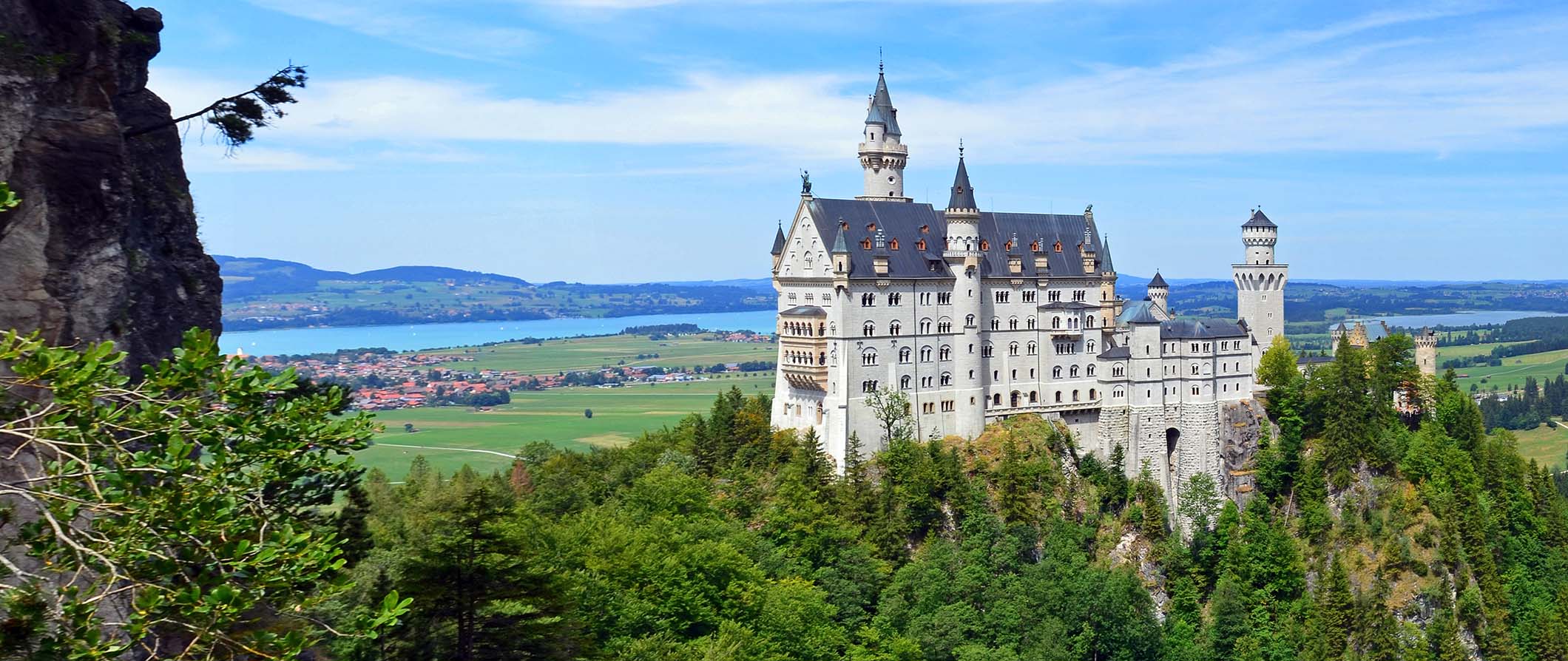
Germany. The country is synonymous with beer, sausages, incredible hiking, majestic castles, serious people, and wild techno parties. It’s huge, diverse, and utterly amazing.
There’s a vibrant art and music scene in Berlin , beautiful forests in the west, majestic cathedrals and castles throughout the country, picturesque “Sound of Music” cities in the south, and overlooked historic cities and beaches in the north.
The more I visit Germany, the more I fall in love with it. Whether you are backpacking, traveling on a mid-range budget, or looking to splash out, traveling around Germany is wonderful.
That said, Germany is a huge country so don’t rush your visit. There’s more to the country than just Berin and those cross-country train rides are longer than you think.
This travel guide to Germany will help you plan your trip, save money, and make the most of your visit!
Table of Contents
- Things to See and Do
- Typical Costs
- Suggested Budget
- Money-Saving Tips
- Where to Stay
- How to Get Around
- How to Stay Safe
- Best Places to Book Your Trip
- Related Blogs on Germany
Click Here for City Guides
Top 5 things to see and do in germany.
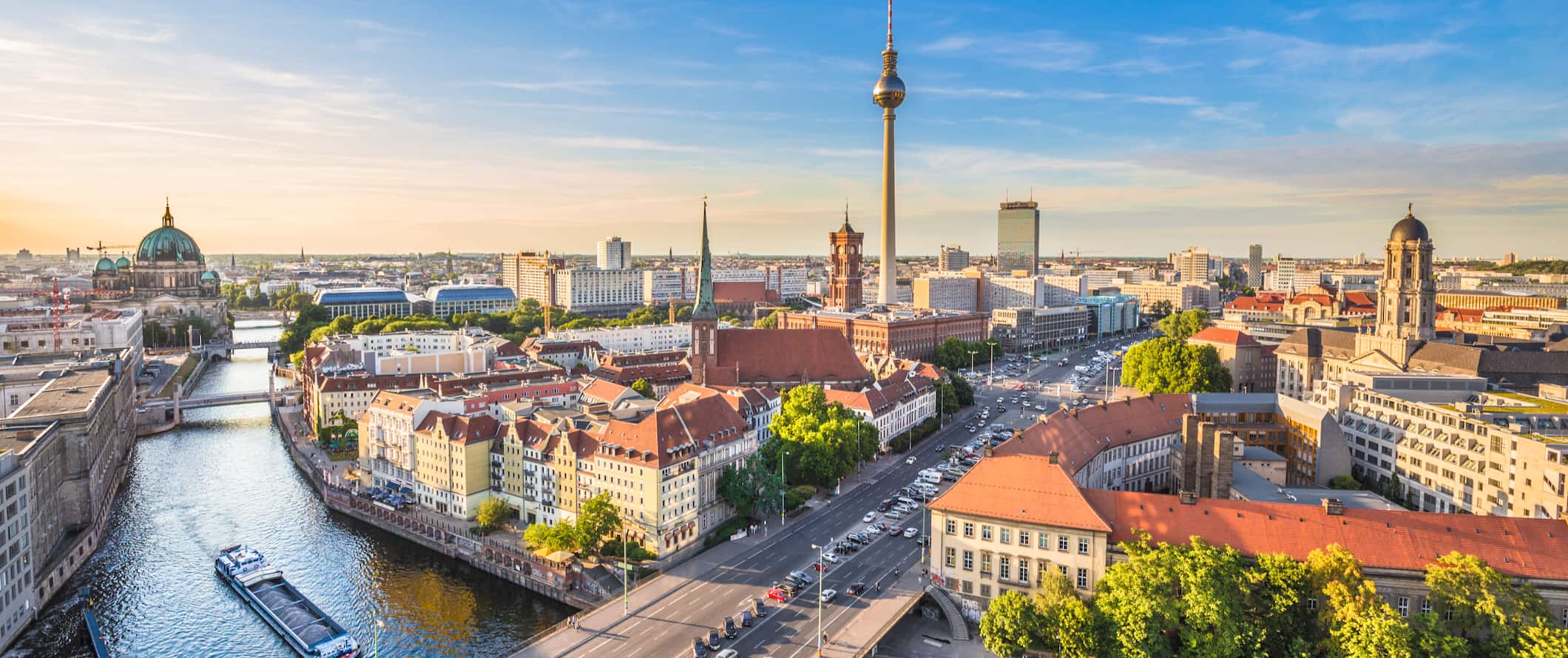
1. Get lost in Berlin
Germany’s hip capital has world-class museums, history, funky neighborhoods, and some of the best nightlife in Europe. From the museums to the art and music scene to the great bars and cheap food, Berlin is electric (and one of the cheapest European capitals). It’s a really amazing city that has grown on me with every visit.
2. See Munich
Berlin’s quiet, upscale cousin, Munich is a city steeped in history, lively beer halls, incredible food, lush parks, and a royal palace. It’s a beautiful destination and there are a lot of Bavarian towns nearby that make for scenic day trips.
3. Party at Oktoberfest
Held annually in September and October, the world’s largest beer festival is filled with huge steins and giant pretzels. I went there for 5 days and had the time of my life. Buy some lederhosen, raise a glass, and sing some German beer songs. Just make sure to plan your trip well in advance as things sell out fast!
4. Explore the Romantic Road
A string of historic cities in Bavaria, the “Romantic Road” is the name for the route through majestic Bavarian towns and their surrounding snow-capped mountains. The area can get quite touristy but it’s a beautiful area and a great choice for road trips and romantic getaways. There are a ton of tour options for the area that are worth checking out. For some of the more further afield attractions, the tours are a must as they are hard to visit without a car.
5. Hike the Black Forest
The Black Forest is so named because of the dark green pine trees that grow here. Spanning over 6,000 square kilometers (2,300 square miles), there are hundreds of miles of hiking trails worth exploring and you can spend some time stopping in towns that are famous for their cuckoo clocks and hearty German fare. If you want to go on a guided hike or adventure activity, you can find a lot here.
Other Things to See and Do in Germany
1. explore lake constance.
Lying along the country’s southwestern border with Switzerland and Austria , Lake Constance (known as Bodensee in German) is Germany’s largest freshwater lake and the third-largest in Central Europe. One of the lake’s main attractions is the island of Mainau, also known as Flower Island, which is home to many specialty gardens, a baroque palace, and one of the largest butterfly houses in Germany. Tickets to visit the island are 10.50 EUR. Be sure to visit the many picturesque medieval villages and castles nearby, enjoy water sports, and go hiking and biking along the 272-kilometer (170-mile) Lake Constance Trail.
2. Visit Hanover
This city was one of the hardest hit during World War II, leaving it with only a few historical landmarks. But what I loved about Hanover were its large green areas of forests and big parks, the River Leine winding through the city, and the Sprengel Museum. Not many people visit, but I think it is one of Germany’s most underrated destinations .
3. Hike Berchtesgaden National Park
This national park, located in the south of Germany along the Austrian border, is an alpine heaven of lush forests, steep rock faces, crystal clear lakes, sleepy villages, and rolling meadows. It’s just you, the chirping birds, and cows ringing their brass bells. Well-marked trails wind through the spectacular scenery, which brims with opportunities for hiking and cycling. While nature is the main attraction, the beautiful red-domed Church of St. Bartholomew (dating to 1697) is a worthwhile stop as well.
4. Check out Trier
Nestled in the Moselle River valley, picturesque Trier is the oldest town in the country. With a 2,000-year-old history, Trier was home to six Roman emperors and contains numerous UNESCO Roman ruins. The most outstanding example is the Black Gate, a monumental structure that was once part of the city walls. Other Roman sites worth visiting include the incredibly well-preserved basilica, the huge amphitheater, the bridge, and the baths. Trier is also home to several important Gothic and Baroque churches, a beautiful main square, and great wine due to its location in the Moselle wine region.
5. Visit Dresden
Dresden, the capital of the German state Saxony, is a vibrant city located along the majestic Elbe River near the Czech and Polish borders. During World War II, the city was subject to one of the most devastating bombings of the war. Tens of thousands of civilians died, and over 90% of the city was razed at the hands of British-American forces. After the war, the city was completely rebuilt. The famous Frauenkirche church, the Neumarkt historic district, the Zwinger Palace, the Royal Palace, and the Semper Opera House have all been restored to their former glory. Other must-see attractions include the Fürstenzug, a unique 102-meter-long (334-foot) porcelain mural dating to the 1870s; and the baroque Grosser Garten, the largest green space in the city.
6. Spend a day in Cologne
Cologne is a cool place to stop in West Germany on your way to or from the Netherlands . The cathedral is the most popular landmark in the city (and one of the most popular in the country), but there’s also a vibrant art scene, incredible international restaurants, and lots of riverside cafes and pubs. It’s an underrated stop worth exploring for a couple of days.
7. See Neuschwanstein Castle
This 19th-century Neo-Romantic palace is the model for the Disney castle and a must for any Germany itinerary. It’s one of the most popular tourist attractions in all of Europe, with over 1.5 million visitors each year. Perched on a rugged hill in Bavaria near the town of Füssen, the palace was commissioned by Ludwig II of Bavaria as a retreat and as an homage to Richard Wagner. Visitors can walk around outside and admire the stunning exterior for free, but the interior is only accessible by guided tour at specific times, which must be booked in advance. While the palace is 6,000 square meters (65,000 square feet) in size, only 14 of those rooms were ever finished. The finished rooms were fitted with very modern technology for the time, such as central heating, hot and cold running water, automatic flush toilets, and telephones. Admission is 15 EUR and guided tours are available . I think the guided tours add a lot of context and would really recommend taking one.
8. See Frankfurt
Often considered just a stopover city (there is a huge airport here), Frankfurt is home to a gigantic exhibition hall (one of the largest in the world so tons of events and conferences are held here), an excellent science museum, and a towering 14th-century cathedral. It’s less expensive compared to other cities in Germany and worth spending a day or two visiting.
9. Visit Olympia Park
Located in Munich, this massive complex was originally constructed for the 1972 Olympic Games. It is topped by the largest roof in the world, which spans over 700,000 feet. There is a really good restaurant here too. Tickets to the stadium cost 3.50 EUR while a ticket to the Olympic Tower costs 11 EUR. You can also skate in the ice arena, swim in the Olympic swimming pool, and reserve court time on the tennis courts. The BMW Museum is also nearby and worth a visit.
10. Tour to Schloss Colditz
Originally built to be a Renaissance palace, this interesting structure has a long, bizarre history. Located between Leipzig and Dresden in the region of Saxony, it’s been a hunting lodge, a poorhouse, and even a mental hospital. It is most famous for being a prisoner-of-war camp during World War II. There is a museum within the palace, with tickets costing 4 EUR. A two-hour guided tour through the castle (and escape tunnels built by prisoners) is 10 EUR. There is even a hostel within the castle (30.50 EUR per night).
11. Visit Hamburg
Located in northern Germany, Hamburg is Germany’s second-largest city. This port city, home to the second-busiest port in Europe, is famous for its parks and canals. Near its core, Inner Alster lake is dotted with boats and surrounded by cafes. The city’s central boulevard connects the Neustadt (new town) with the Altstadt (old town) and is home to landmarks like 18th-century St. Michael’s Church.
12. See Tierpark Hagenbeck
Located in Hamburg, this zoo and aquarium spans over 60 acres and is home to more than 2,500 animals including polar bears, penguins, and walruses. In addition to the classic attractions, there is a petting zoo, a miniature railway, pony rides, a playground for kids, and a serene Japanese garden. Combination tickets for the zoo and aquarium are 40 EUR.
13. Take a break in Bremen
Located in the north (near Hamburg), Bremen is a smaller city worth exploring. The charming medieval Schnoor district makes for a great stroll, and there is a beautiful cathedral and opulent city hall in the historic market square. The medieval harbor has been converted into the Schlachte, a large pedestrian promenade along the banks of the Weser River lined with countless restaurants, beer gardens, and riverboats. Bremen is also home to several fascinating museums, including the Universum Bremen, an interactive science museum in a modern whale-shaped building. The museum also offers a Dining in the Dark three-hour dinner experience, where you learn to experience food with just four out of your five senses.
14. Explore the Rhine Valley
The longest river in Germany, the Rhine holds incredible importance both historically and culturally. The most popular area to visit is the Upper Middle Rhine Valley. This 67-kilometer (41-mile) stretch is a UNESCO World Heritage Site with countless castles, ruins, villages, and vineyards. An extensive network of walking and cycling paths, as well as excellent public transportation, means you don’t even need to rent a car when visiting.
15. Step back in time in Bamberg
Located less than an hour from Nuremberg, Bamberg is one of Germany’s best-preserved medieval towns, home to Europe’s largest intact historic city wall. Founded in the 9th century, the town was important in both the 12th-century Holy Roman Empire and the 18th-century German Enlightenment. It’s an incredibly picturesque town so spend the day wandering around, seeing the old homes, visiting the 13th-century cathedral, the 17th-century palace, the 18th-century city hall, and the seven churches that sit atop each of the seven hills surrounding the village.
16. Take a river cruise
Many of Germany’s major cities lie along large rivers, making river cruises a popular way to see the country. While there are expensive multi-day cruises going from city to city, you can also take a day cruise for a more budget-friendly option . Generally, these are around 15-25 EUR for a 1-2 hour trip. They are super fun.
17. Ascend Germany’s tallest mountain
Located in the Alps along the German-Austrian border, the Zugspitze mountain measures 2,962 meters (9,718 feet) and is a popular destination for winter sports. Even if you’re not into skiing, you can still enjoy the trip up the mountain via one of three different cable cars and a 90-year-old rack railway line. At the top, you’ll be treated to panoramic views and several restaurants with traditional Alpine food. Round-trip cable car tickets cost 24-63 EUR depending on the season and which cable car you take. If you don’t want to go solo, day trips are available from Munich and are the best way to get there and around without transportation.
For more information on specific cities in Germany, check out these guides:
- Berlin Travel Guide
- Cologne Travel Guide
- Frankfurt Travel Guide
- Munich Travel Guide
Germany Travel Costs
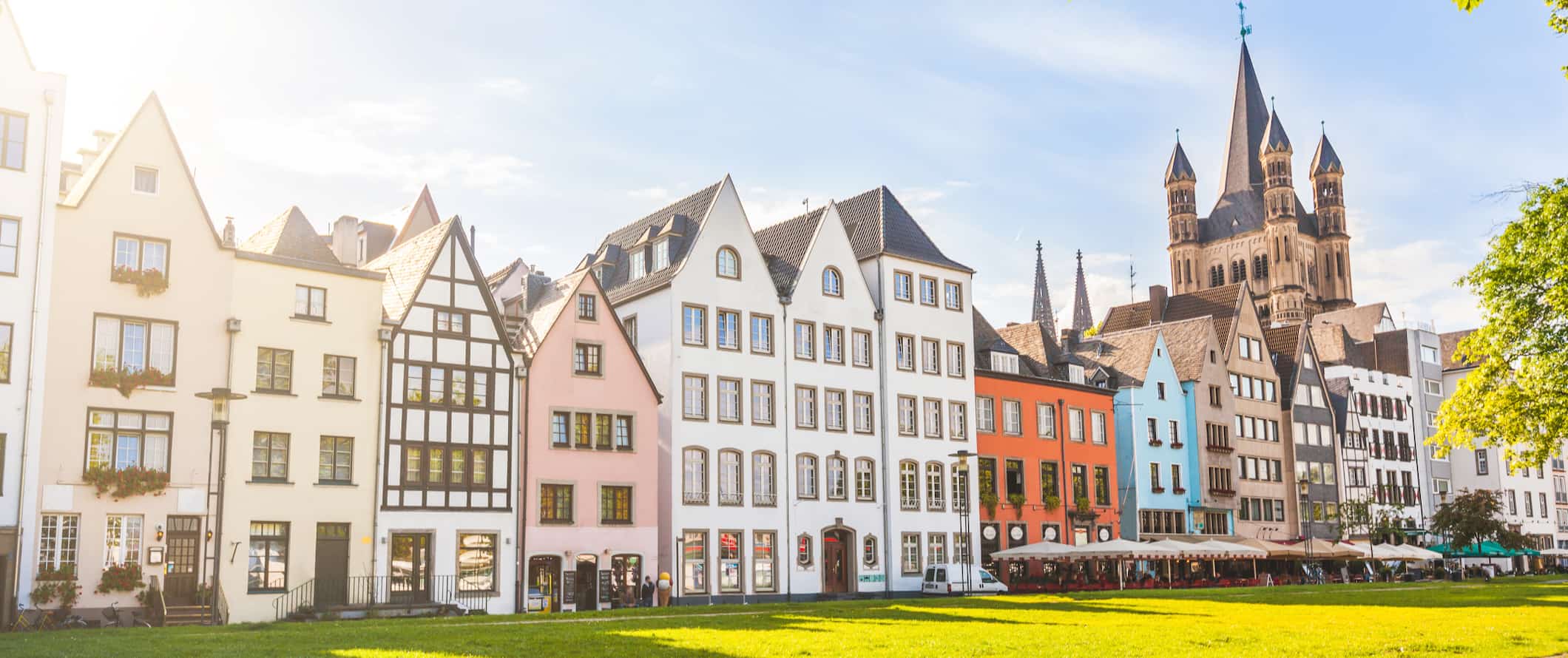
Accommodation – Accommodation in Germany is quite affordable compared to other Eurozone countries. Hostels are plentiful and range from 17-25 EUR per night for a dorm room with 6-8 beds. For a private room, expect to pay 40-60 EUR per night. Free Wi-Fi is standard and many hostels also include free breakfast.
Budget hotel prices begin around 45-65 EUR for a small double room with a private bathroom and free Wi-Fi.
Airbnb is available everywhere with private rooms going for as little as 30-45 EUR per night and entire apartments or homes starting at 50-75 EUR. Book early though or prices will double (or triple).
While wild camping is illegal, there are a ton of campsites around the country. Expect to pay 5-20 EUR per night for a basic plot for two people without electricity.
Food – Food in Germany is very cheap (and hearty). Meat is a staple of most meals, especially sausages; there are over 1,500 different kinds of sausages in Germany (sausages here are known as “wurst”). Stews are also a popular traditional choice, as are potato dumplings and sauerkraut. Breakfast is usually composed of bread, cold cuts, cheese, and boiled eggs.
You can get sausages and bratwurst from outdoor vendors for around 3-5 EUR. Meals at many of the beer halls around the country cost 9-15 EUR. Pre-made sandwiches cost around 5 EUR. Fast food (think McDonald’s) costs around 8.50 EUR for a combo meal.
If you eat in the beer halls, a traditional German meal costs around 14-18 EUR. Turkish, Middle Eastern, and Asian food can be found for as little as 5 EUR, while a nicer meal at a sit-down restaurant costs around 25 EUR.
Beer costs around 4 EUR while a latte/cappuccino is around 3 EUR. Bottled water is around 1 EUR.
If you plan on cooking for yourself, a week’s worth of groceries costs around 40-50 EUR. This gets you basic staples like rice, pasta, seasonal produce, and some meat. While they don’t always offer the most variety, the cheapest places are Aldi, Lidl, Penny, and Netto. Bring your own bag if possible.
Backpacking Germany Suggested Budgets
If you’re backpacking Germany, my suggested budget is 55 EUR per day. This is a suggested budget assuming you’re staying in a hostel dorm, cooking all your meals, limiting your drinking, using local transportation to get around, and doing mostly free activities like hiking and taking free walking tours. If you plan on drinking, add another 5-10 EUR to your daily budget.
On a mid-range budget of 135 EUR per day, you can stay in a private Airbnb room, eat a few meals out, take the occasional taxi to get around, enjoy a few drinks, take the bus between cities, and do more paid activities like visiting museums and castles.
On a “luxury” budget of 245 EUR or more per day, you can stay in a hotel, travel between cities via train, eat out at restaurants for all of your meals, drink more, take taxis to get around, and do whatever tours and activities you want. This is just the ground floor for luxury though. The sky is the limit!
You can use the chart below to get some idea of how much you need to budget daily, depending on your travel style. Keep in mind these are daily averages – some days you’ll spend more, some days you’ll spend less (you might spend less every day). We just want to give you a general idea of how to make your budget. Prices are in EUR.
Germany Travel Guide: Money-Saving Tips
Overall, Germany is not an expensive country to visit. Yes, river cruises are expensive. Yes, there’s plenty of high-end cuisine throughout the country. Visiting Frankfurt, the capital of finance, costs a pretty penny. But those are exceptions to the rule. Overall, Germany is quite affordable for a Eurozone country, with plenty of bargains throughout the country. Here are my best tips for saving money in Germany:
- Eat cheap – Throughout Germany, cheap outdoor sausage vendors offer quick eats for only a couple of euros. Additionally, some of the best and cheapest food in Germany is Turkish and Middle Eastern cuisine. You can get meals for 5-8 EUR that are delicious and filling. It’s what I mainly eat while in Germany whenever I want to eat out.
- Drink cheap – In Germany, buying beer and walking around — known as a ‘Weg bier’ — is totally acceptable. Take advantage of good weather by sitting outside in Germany’s lovely plazas and lush parks and buy your own drinks from the Späti shops, street kiosks, and supermarkets to save money. Also, find the student areas by the universities as you’ll find the discounted places.
- Take the free tours – The bigger cities in Germany have free walking tours. They’re a good way to see the city, learn about the history, and get your bearings without spending money. Just make sure to tip your guide at the end!
- Book your train early – Trains in Germany are expensive but you can get a saver ticket that is around 40-50% off the standard fare if you book at least a week in advance. These tickets have limited availability, so be flexible with your travel plans. Also, if you are more flexible with times, try Flixtrain instead, which has fewer routes between bigger cities sometimes at inconvenient times but is way cheaper than Deutsche Bahn.
- Take the bus instead of the train – While not as comfy or romantic, Flixbus or Postbus are two bus companies with super cheap prices. Download the app and you can get tickets last-minute but be aware that prices vary by time and availability so if you need to be somewhere by a certain time or day book in advance.
- Use rideshares – If you’re flexible in your schedule, use the ridesharing service BlaBlaCar and catch rides with locals between cities (or countries). You save money and get to spend time with locals. Drivers are verified and it’s perfectly safe (though sometimes rides don’t show up, which is why you need to be flexible). While the bus might be cheaper, this is usually faster (and more interesting). Just make sure to check where the pickup and drop-offs are as sometimes they are not exactly central places or main station.
- Stay with a local – While accommodation in Germany is pretty cheap, if you want to get some local insight into the country, you should Couchsurf. Not only will you save money on accommodation but you’ll meet locals who can help get you off the tourist trail and show you around! Plus, they have occasional meet-ups depending on the city so you can meet other travelers and locals
- Bring a water bottle – The tap water here is safe to drink so bring a reusable water bottle to save money and reduce your plastic use. LifeStraw is my go-to brand as their bottles have built-in filters to ensure your water is always clean and safe.
- Look out for free museum days – Most museums in Germany offer free admission on certain days or evenings. Check their website or ask the local tourism office to find out about discounts.
- Get transportation day passes – If you’re going to be using public transportation a lot in a city, get a day pass. Paying for single rides adds up quickly.
- Get city tourism cards – Most of the major cities in Germany offer city tourism cards. These include free admission to major museums and attractions, discounts on restaurants, and usually unlimited public transportation. If you plan on seeing a lot, these cards can save you money.
Where to Stay in Germany
There are lots of fun and social hostels in Germany. Here are some of my suggested places to stay:
- St. Christopher’s (Berlin)
- Circus Hostel (Berlin)
- Wombats (Munich)
- Jaeger’s Hostel (Munich)
- Five Elements Hostel (Frankfurt)
- Meininger (Hamburg)
- Generator Hostel (Hamburg)
- Station Hostel for Backpackers (Cologne)
- Black Sheep Hostel (Cologne)
- Lollis Homestay (Dresden)
- Hostel Mondpalast (Dresden)
- a&o Nürnberg Hauptbahnhof (Nuremberg)
- Five Reasons Hostel (Nuremberg)
How to Get Around Germany
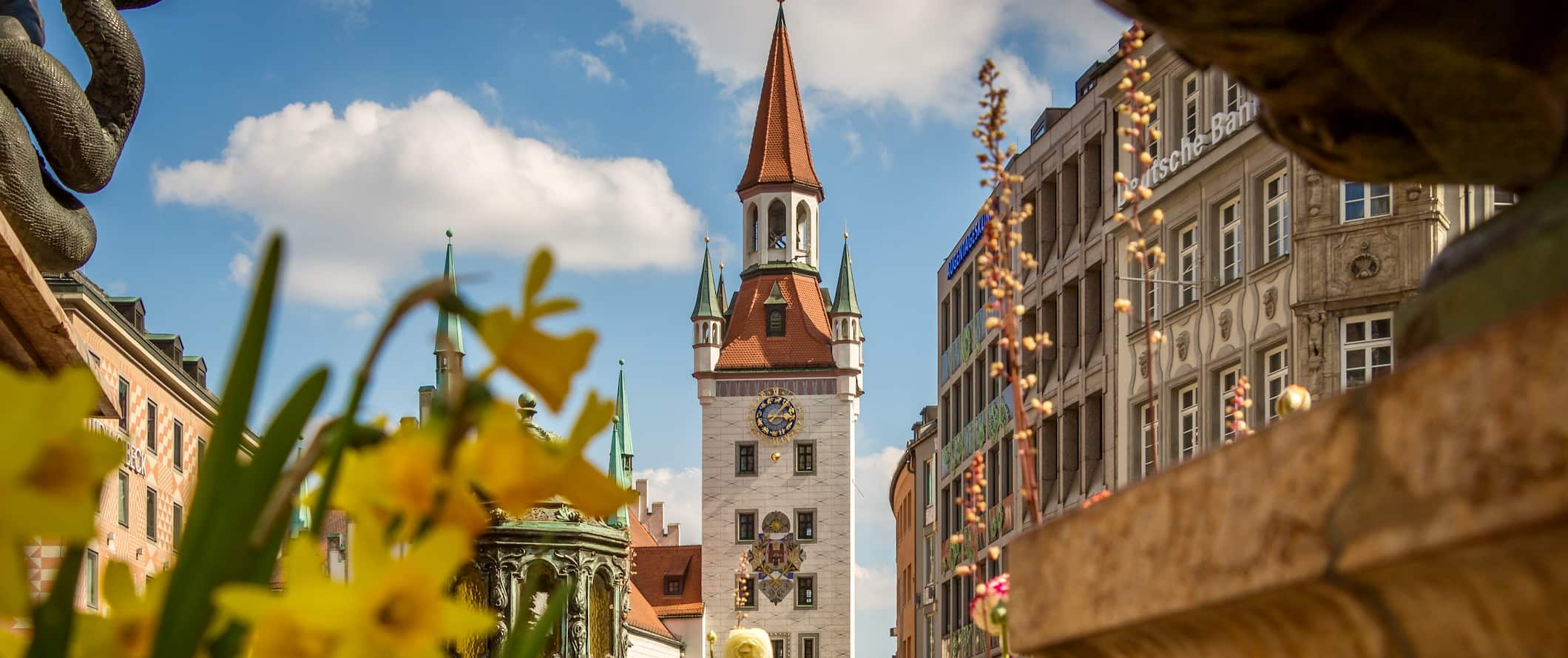
Public transportation – Germany has some of the best public transportation in the world. All the cities and larger towns have public transportation that is reliable and efficient. In cities like Berlin and Munich, all the various networks are integrated: one ticket gives you access to buses, trams, U-Bahn (subway), and S-Bahn (above ground train). Fares are determined by zone, but generally, a one-way fare starts from 2.90 EUR. A one-day unlimited pass is generally around 7-9 EUR while a three-day pass costs 17-20 EUR.
Train – Train travel is an incredibly efficient way to get around Germany, though it’s not cheap. Germany’s main rail system is Deutsche Bahn, which has both high-speed trains and regular trains. The high-speed trains are a quick way to get around but are usually much more expensive.
Take advantage of regional group tickets that start at around 22 EUR. These regional discounted tickets are available in Bavaria, Brandenburg-Berlin, Baden-Wüttermburg, Lower Saxony, North Rhine-Westfalia, Hesse, etc. For example, the Bavarian Bayern Ticket is 58 EUR for a group of 5 tickets for any train in Bavaria from 9am to 3am.
Last-minute tickets from Berlin to Hamburg can cost 50 EUR, but advance bookings start around 20 EUR. Frankfurt to Cologne is also around 20 EUR. It’s always best to book in advance when possible, otherwise, you’ll pay the price for last-minute bookings. You can track schedules and fares on the Deutsche Bahn website.
A Eurail Pass, which allows travelers to explore Europe by providing a set number of stops in a specific time period, might also be a good option if you’re doing some country hopping. Here’s a detailed breakdown of how Eurail passes work and can save you money .
Bus – Aside from hitchhiking, buses are the cheapest way to get around Germany. They are punctual but slow, with comfortable seats, air-conditioning, rest stops, and usually free Wi-Fi.
I recommend Flixbus for the cheapest rates and most comfortable buses. You can get from Berlin to Dresden for as little as 10 EUR, or from Berlin to Munich for 20 EUR. Munich to Hamburg is around 22 EUR.
Ridesharing – Ridesharing in Germany is very common. Ridesharing means you travel as a passenger with someone in exchange for payment toward fuel costs. It’s usually not as cheap as the bus but it’s often faster and you’ll meet some interesting characters! BlaBlaCar and Mitfahren are the two most popular ride-sharing websites.
Car rental – German is a great country to explore by car. Car rentals start at 30 EUR per day for a multi-day rental. Renters need to be at least 21 years old.
For the best car rental prices, use Discover Cars .
When to Go to Germany
Germany is a year-round destination. Summer is the most popular time to visit as temperatures are hot and everyone’s outdoors enjoying the weather. People flock to beer gardens and to the lakes to swim. This is also the peak season, when prices are much higher than usual. During this time, average temperatures hover around 24°C (75°F) and can soar well into the 30s°C (high 80s°F). You’ll want to book accommodation and transportation early (especially in July and August).
Temperatures warm up fast in spring, and the season is marked by the arrival of cherry blossoms. By May it’s warm enough to walk around in t-shirts and shorts. May 1 (Der Erste Mai) is Germany’s Labor Day, and the country breaks out in full celebration. If you’re lucky enough to be here during this time, take to the streets with your fellow Germans and enjoy the live music, drinking, dancing, and general mayhem.
Thanks to the famous Oktoberfest, autumn is a very popular time to visit Germany (especially Munich). From the end of September to early October, millions of people flock here from all over the world to enjoy the most epic beer-drinking festival in the world. If you’re planning on attending Oktoberfest, book your accommodations in advance. Way, way in advance.
An autumn visit to Germany is overall a great idea, especially in Bavaria when the foliage in the hills and mountains makes for some amazing photography. Temperatures can sometimes be chilly, but with light layers, you’ll be fine.
Winter in Germany can be cold, with temperatures as low as -10°C (14°F), but Germany is known for its Christmas spirit and the holiday markets all over the country are well worth your time, especially in Munich, Berlin, and Dresden. Pack some warm clothes and let the delicious glühwein (mulled wine) warm you up.
Winter in Bavaria is a skier and snowboarder’s dream only around one hour outside of Munich. While people might not think of Germany first in terms of skiing in Europe, these slopes are pristine, truly breathtaking, and way cheaper than neighboring Switzerland. Check out Garmisch-Partenkirchen, Füssen, Kranzberg, Zugspitze, and Laber.
How to Stay Safe in Germany
Germany is an incredibly safe place to travel. However, due to a few high-profile terrorist attacks in the country, I often get asked if it’s safe to travel to Germany. I wrote a whole article about how Germany (and Europe) is safe to visit if that’s a concern of yours.
Generally, you just need to watch out for scams and petty crime as you would anywhere (especially in Berlin late at night). Keep an eye on your valuables when in large crowds and on public transportation. Violent crime is rare so as long as you keep your valuables secure you shouldn’t experience any issues.
Scams are rare but if you’re worried about getting ripped off you can read about common travel scams to avoid here .
Solo female travelers should feel safe in Germany, however, the standard precautions apply (never leave your drink unattended at the bar, never walk home alone at night intoxicated, etc.).
If you experience an emergency, dial 112 for assistance.
Always trust your gut instinct. Make copies of your personal documents, including your passport and ID. Forward your itinerary along to loved ones so they’ll know where you are.
The most important piece of advice I can offer is to purchase good travel insurance. Travel insurance will protect you against illness, injury, theft, and cancellations. It’s comprehensive protection in case anything goes wrong. I never go on a trip without it as I’ve had to use it many times in the past. You can use the widget below to find the policy right for you:
Germany Travel Guide: The Best Booking Resources
These are my favorite companies to use when I travel. They consistently have the best deals, offer world-class customer service and great value, and overall, are better than their competitors. They are the companies I use the most and are always the starting point in my search for travel deals.
- Skyscanner – Skyscanner is my favorite flight search engine. They search small websites and budget airlines that larger search sites tend to miss. They are hands down the number one place to start.
- Hostelworld – This is the best hostel accommodation site out there with the largest inventory, best search interface, and widest availability.
- Booking.com – The best all around booking site that constantly provides the cheapest and lowest rates. They have the widest selection of budget accommodation. In all my tests, they’ve always had the cheapest rates out of all the booking websites.
- HostelPass – This new card gives you up to 20% off hostels throughout Europe. It’s a great way to save money. They’re constantly adding new hostels too. I’ve always wanted something like this and glad it finallt exists.
- Get Your Guide – Get Your Guide is a huge online marketplace for tours and excursions. They have tons of tour options available in cities all around the world, including everything from cooking classes, walking tours, street art lessons, and more!
- The Man in Seat 61 – This website is the ultimate guide to train travel anywhere in the world. They have the most comprehensive information on routes, times, prices, and train conditions. If you are planning a long train journey or some epic train trip, consult this site.
- Rome2Rio – This website allows you to see how to get from point A to point B the best and cheapest way possible. It will give you all the bus, train, plane, or boat routes that can get you there as well as how much they cost.
- FlixBus – Flixbus has routes between 20 European countries with prices starting as low 5 EUR! Their buses include WiFi, electrical outlets, a free checked bag.
- SafetyWing – Safety Wing offers convenient and affordable plans tailored to digital nomads and long-term travelers. They have cheap monthly plans, great customer service, and an easy-to-use claims process that makes it perfect for those on the road.
- LifeStraw – My go-to company for reusable water bottles with built-in filters so you can ensure your drinking water is always clean and safe.
- Unbound Merino – They make lightweight, durable, easy-to-clean travel clothing.
- Top Travel Credit Cards – Points are the best way to cut down travel expenses. Here’s my favorite point earning credit cards so you can get free travel!
- BlaBlaCar – BlaBlaCar is a ridesharing website that lets you share rides with vetted local drivers by pitching in for gas. You simply request a seat, they approve, and off you go! It’s a cheaper and more interesting way to travel than by bus or train!
Germany Travel Guide: Related Articles
Want more info? Check out all the articles I’ve written on backpacking/traveling Germany and continue planning your trip:
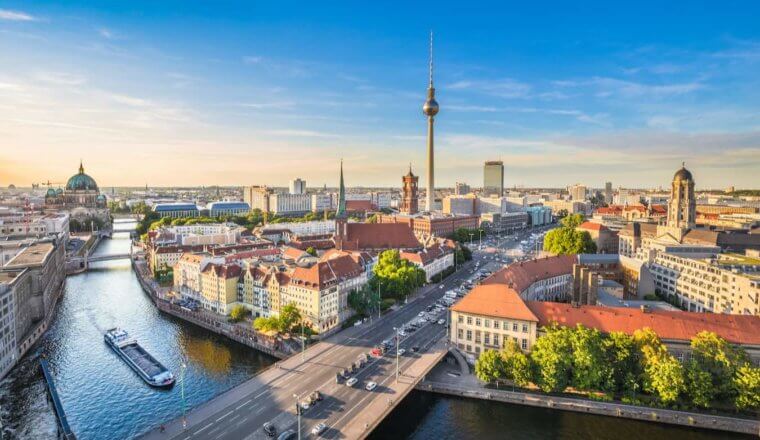
Where to Stay in Berlin: The Best Neighborhoods for Your Visit
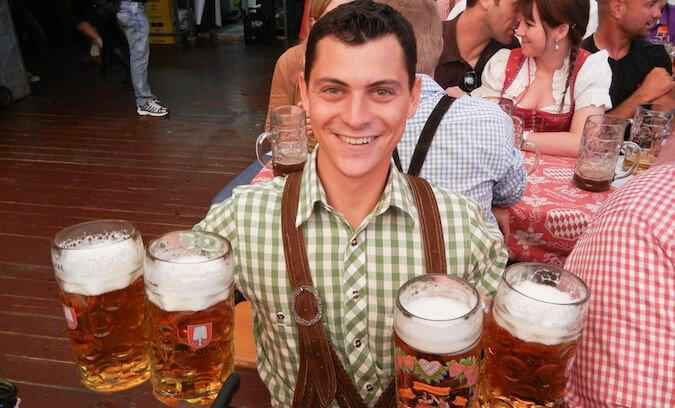
How to Survive Oktoberfest
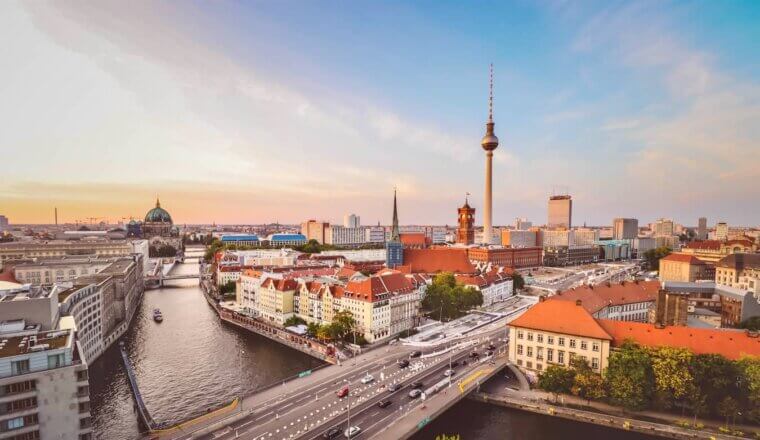
The 18 Best Things To Do in Berlin
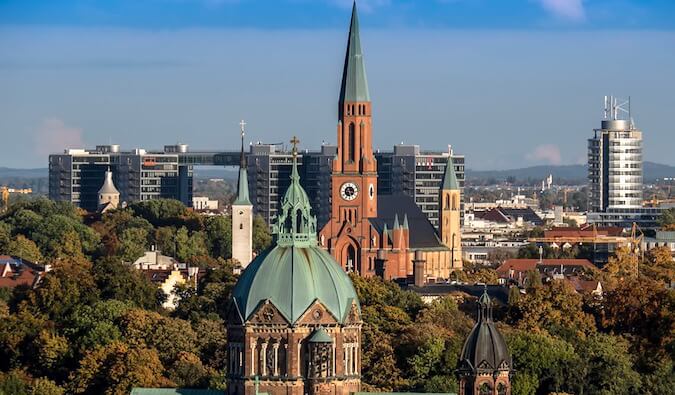
Munich is Better than Berlin
Get my best stuff sent straight to you, pin it on pinterest.
- Where To Stay
- Transportation
- Booking Resources
- Related Blogs
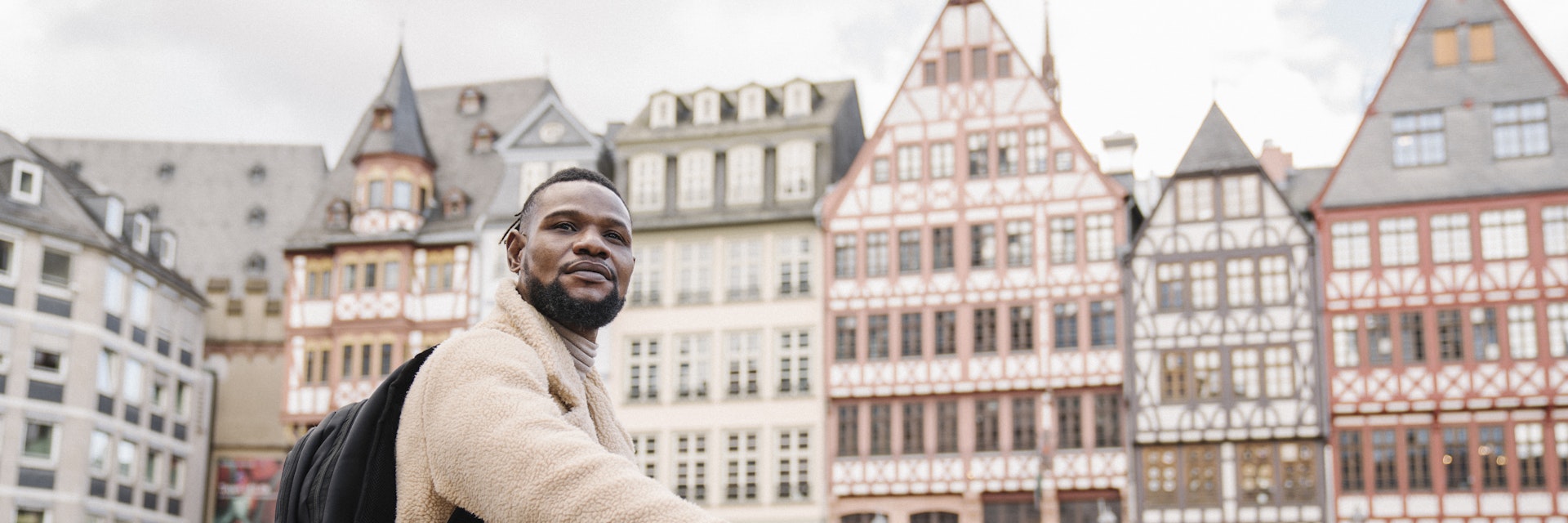
© Westend61/Getty Images
Prepare for a roller-coaster ride of feasts, treats and temptations experiencing Germany's soul-stirring scenery, spirit-lifting culture, big-city beauties, romantic palaces and half-timbered towns.
Best Time to Visit
Best places to visit, your next trip starts here.
Go from dreaming to planning with trip planning options made to help you craft your ideal itinerary.
Attractions
Must-see attractions.
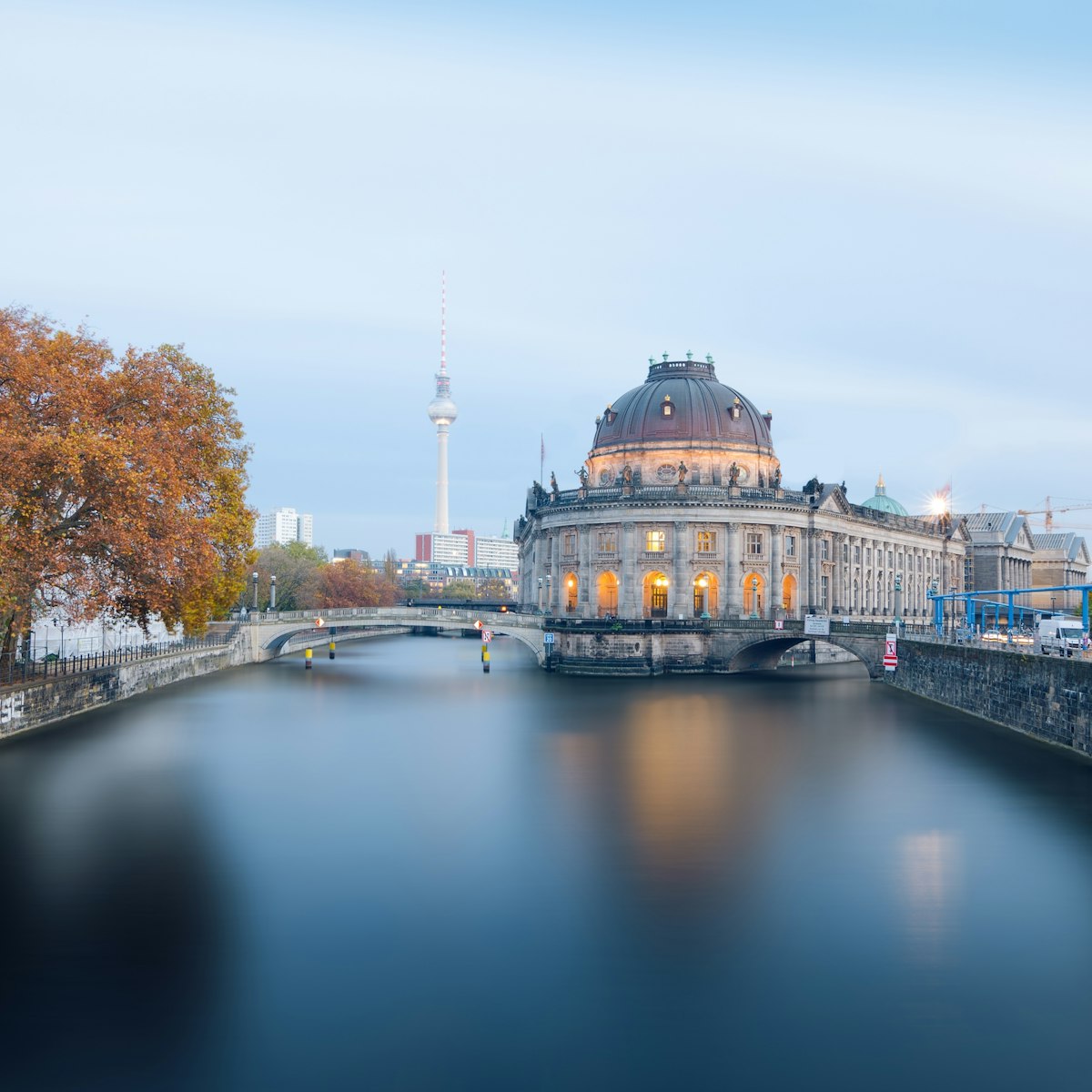
Museumsinsel
Museumsinsel & Alexanderplatz
Walk through ancient Babylon, meet an Egyptian queen, clamber up a Greek altar or be mesmerized by Monet's ethereal landscapes. Welcome to Museumsinsel …
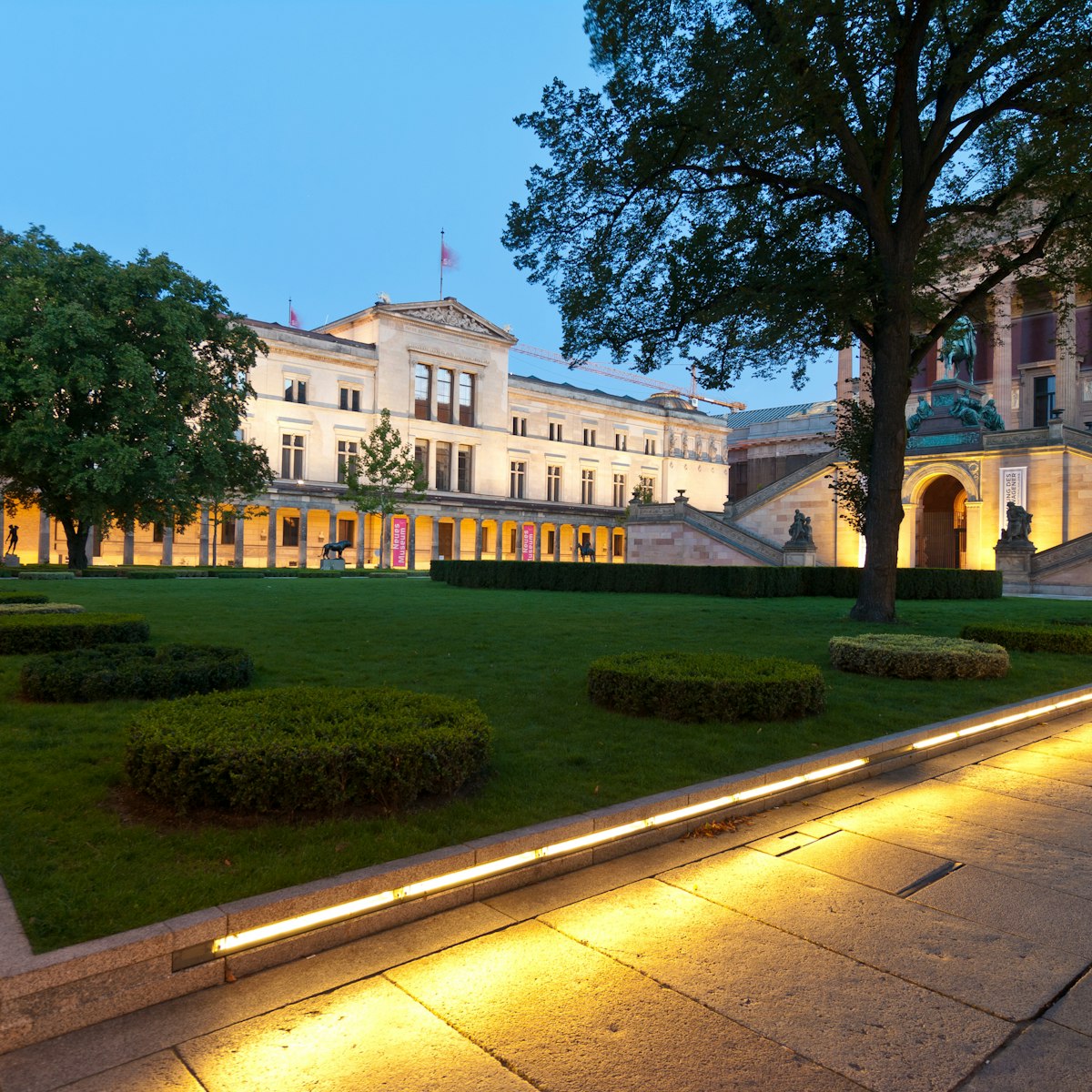
Neues Museum
For over 60 years, not a soul was able to visit Berlin’s Neues Museum – in fact, it sat in ruins. But today it’s one of the city’s most celebrated…
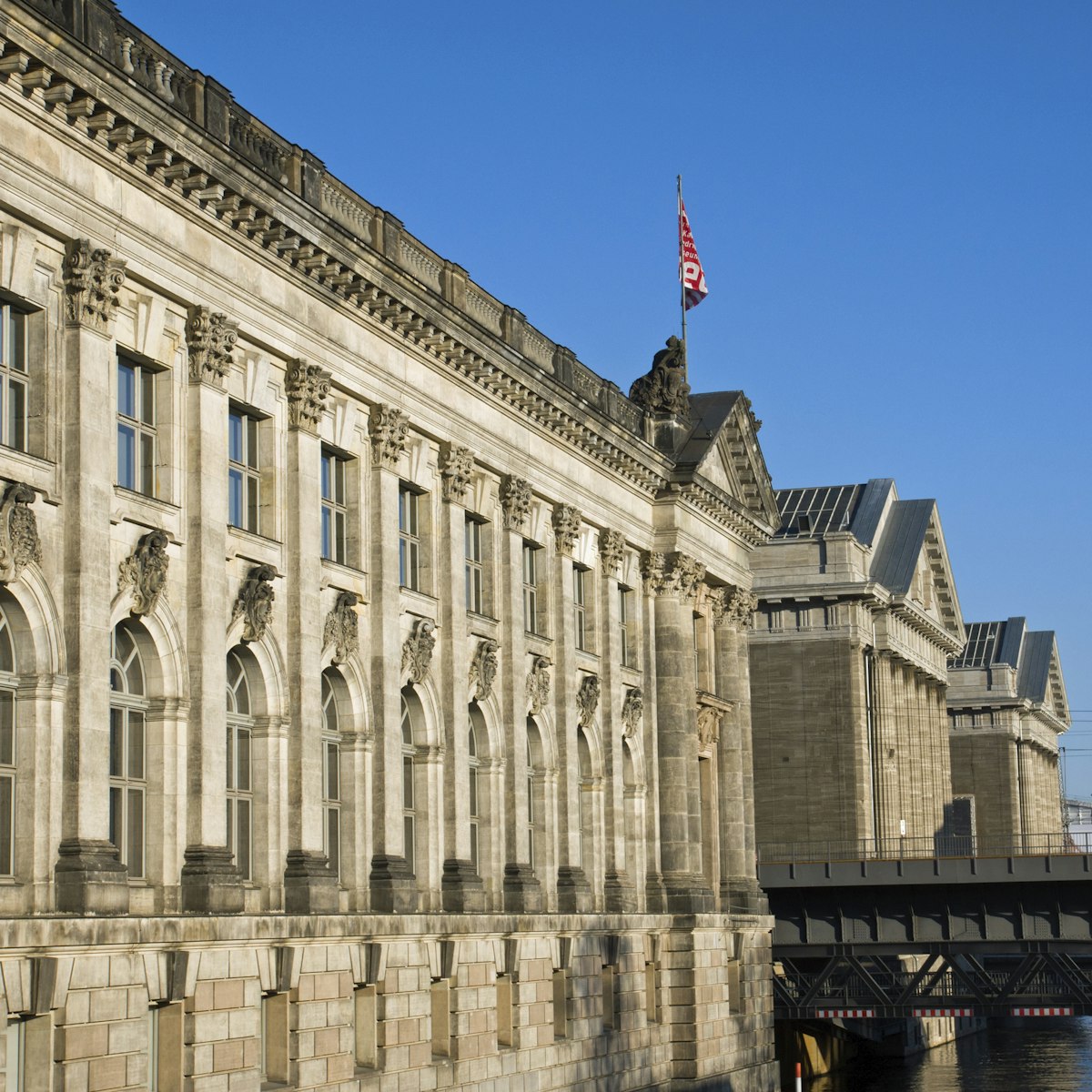
Pergamonmuseum
The Pergamonmuseum is one of Berlin’s most visited historical gems and perhaps also its most controversial. This museum offers an archaeological time-warp…
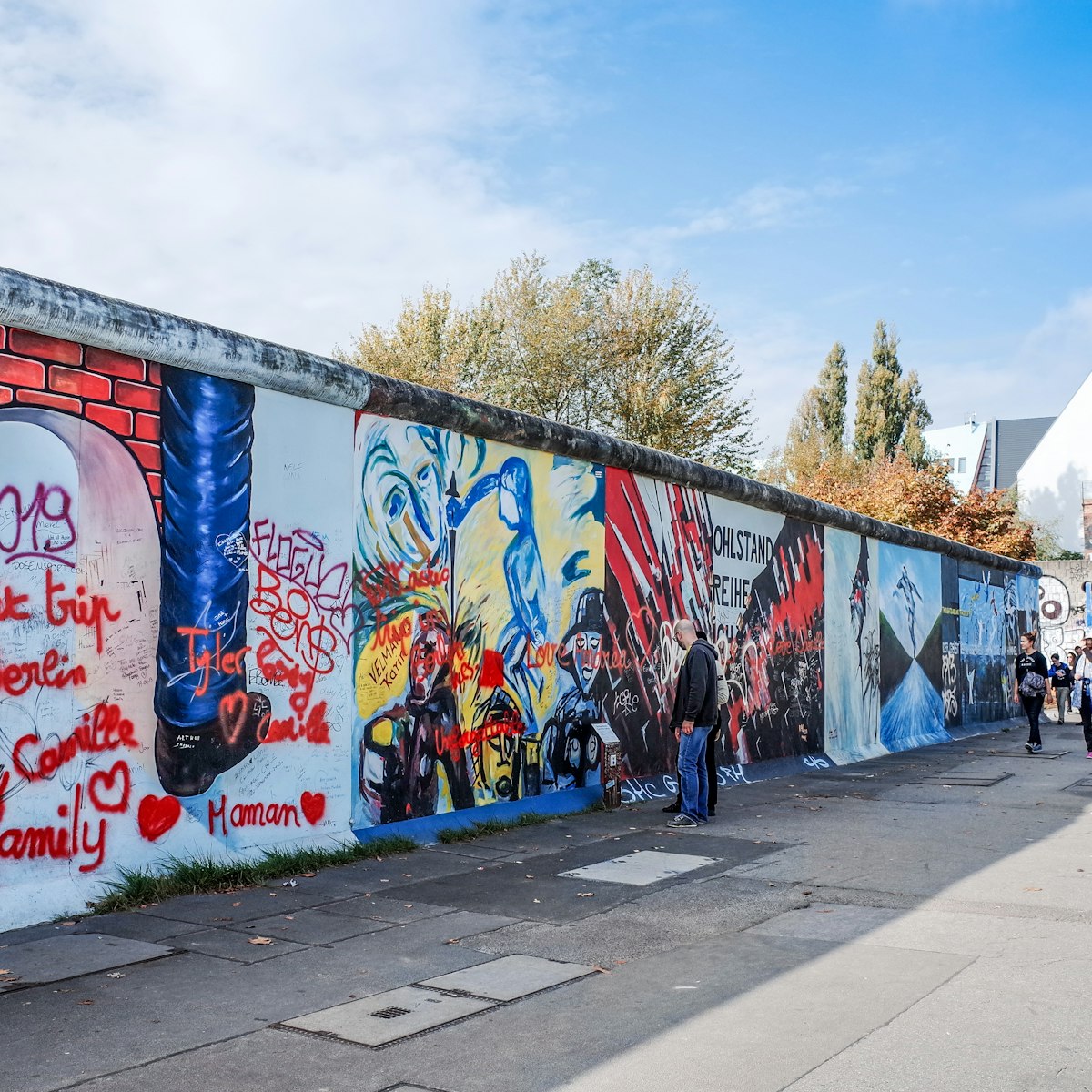
East Side Gallery
Friedrichshain
The East Side Gallery is the embodiment of Berlin’s grit and guts.
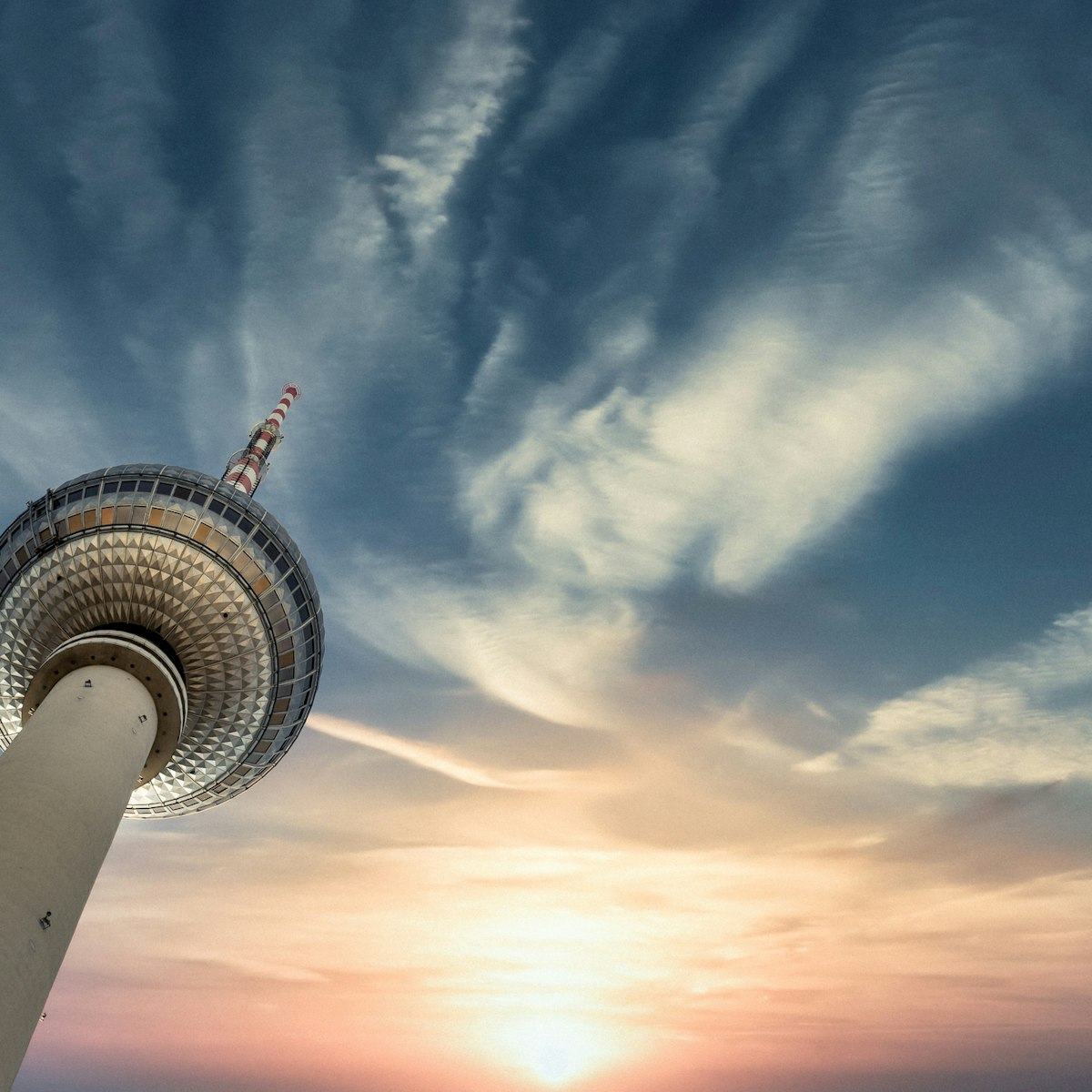
Fernsehturm
Germany's tallest structure, the TV Tower is a Berlin icon.
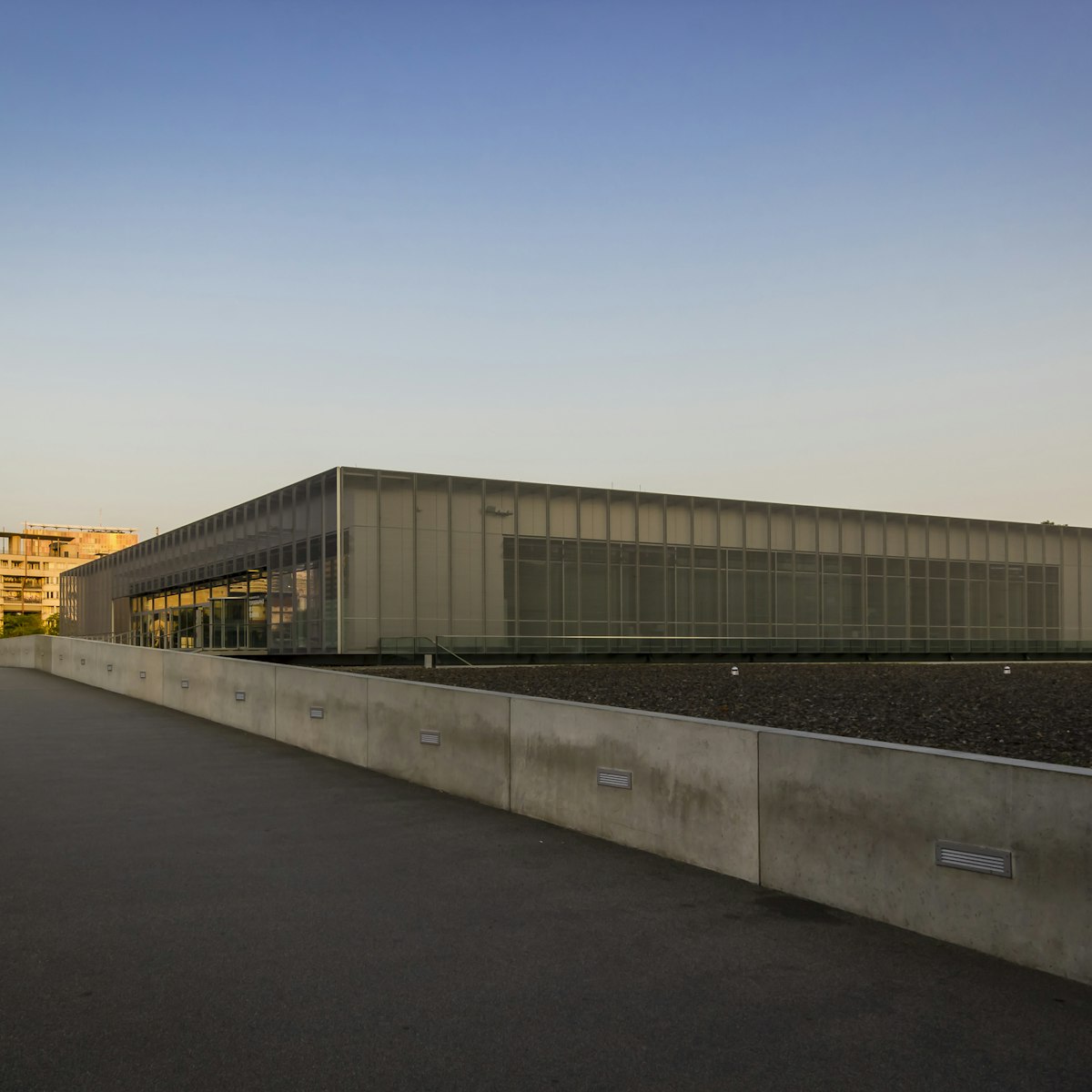
Topographie des Terrors
Historic Mitte
This compelling exhibit tells stories of terror and persecution in Nazi Germany.
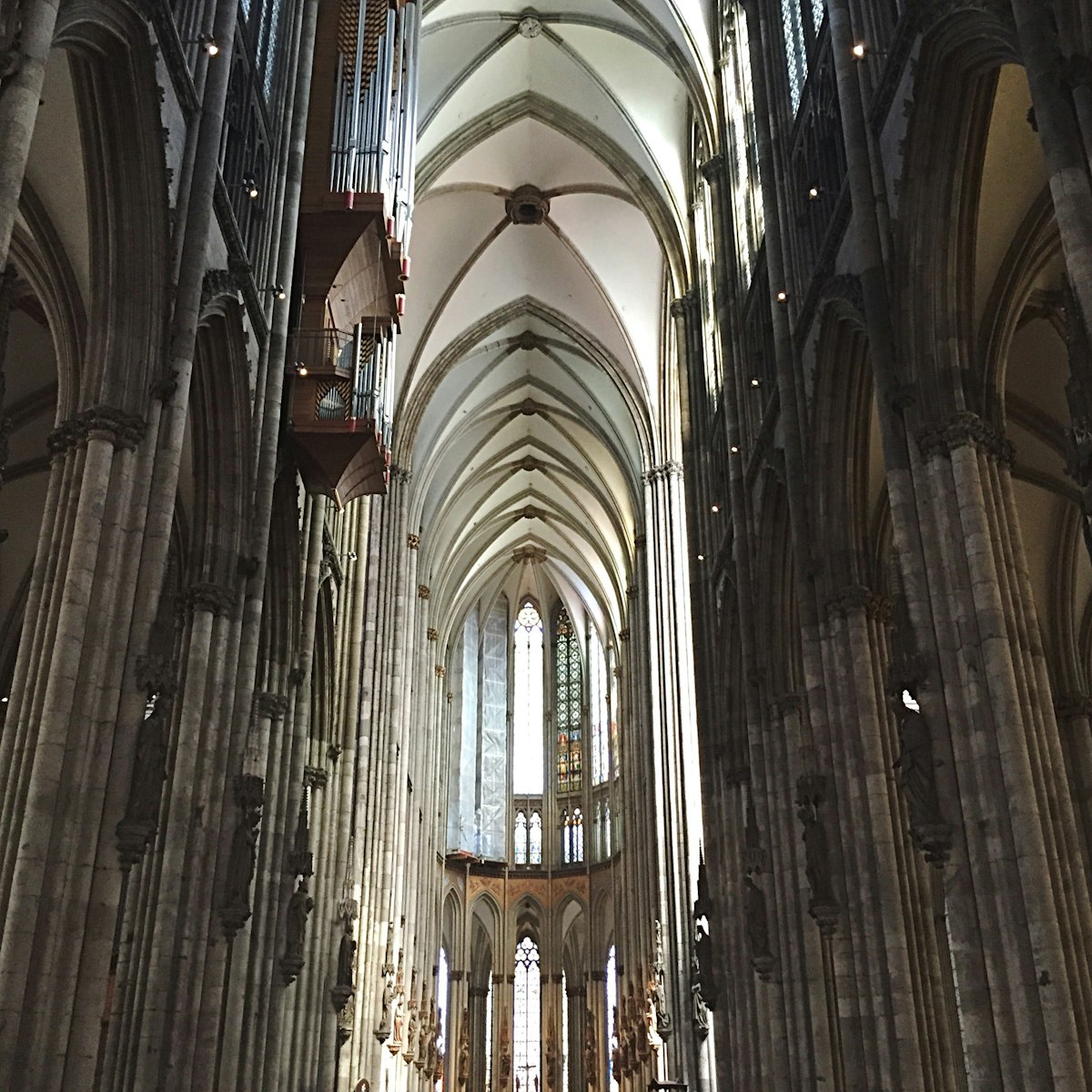
Cologne’s geographical and spiritual heart – and its single-biggest tourist draw – is the magnificent Kölner Dom. With its soaring twin spires, this is…
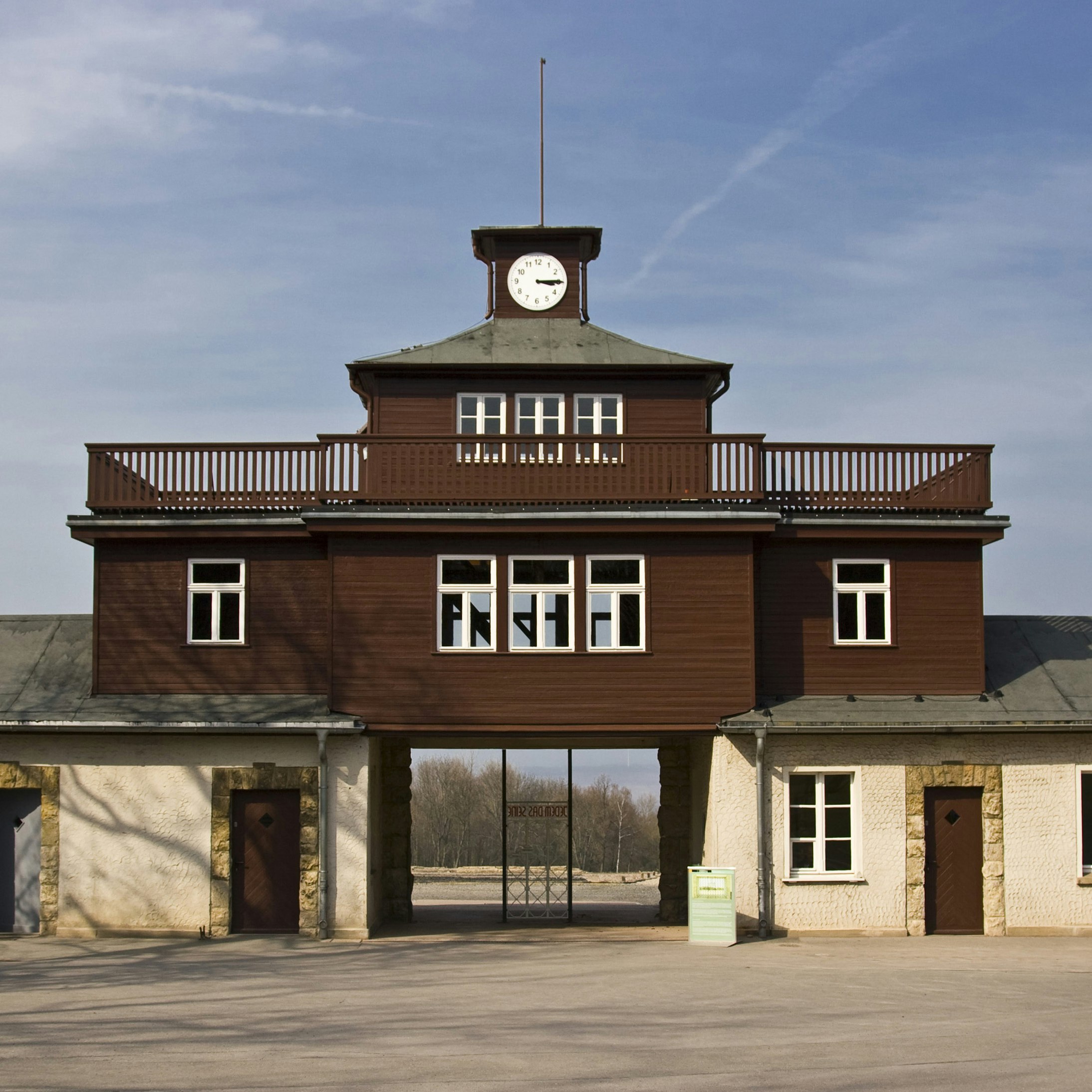
Gedenkstätte Buchenwald
Between 1937 and 1945, hidden from Weimarers and surrounding villagers, 250,000 men, women and children were incarcerated here, some 56,500 of whom were…
Top picks from our travel experts
17 of the best things to do in germany.

Zeche Zollverein
The Ruhrgebiet
A key site along the Ruhr area's Industrial Heritage Trail, the former Zollverein coal mine was a marvel of efficiency while in operation from 1932 until…

Tempelhofer Feld
The airfield of Tempelhof Airport, which so gloriously handled the Berlin airlift of 1948–49, has been repurposed as one of the largest urban parks in the…

Gedenkstätte Berliner Mauer
Prenzlauer Berg
For an insightful primer on the Berlin Wall, visit this outdoor memorial, which extends for 1.4km along Bernauer Strasse and integrates an original…

Biergarten Muffatwerk
Think of this one as a progressive beer garden with reggae instead of oompah, civilised imbibing instead of brainless guzzling, organic meats, fish and…
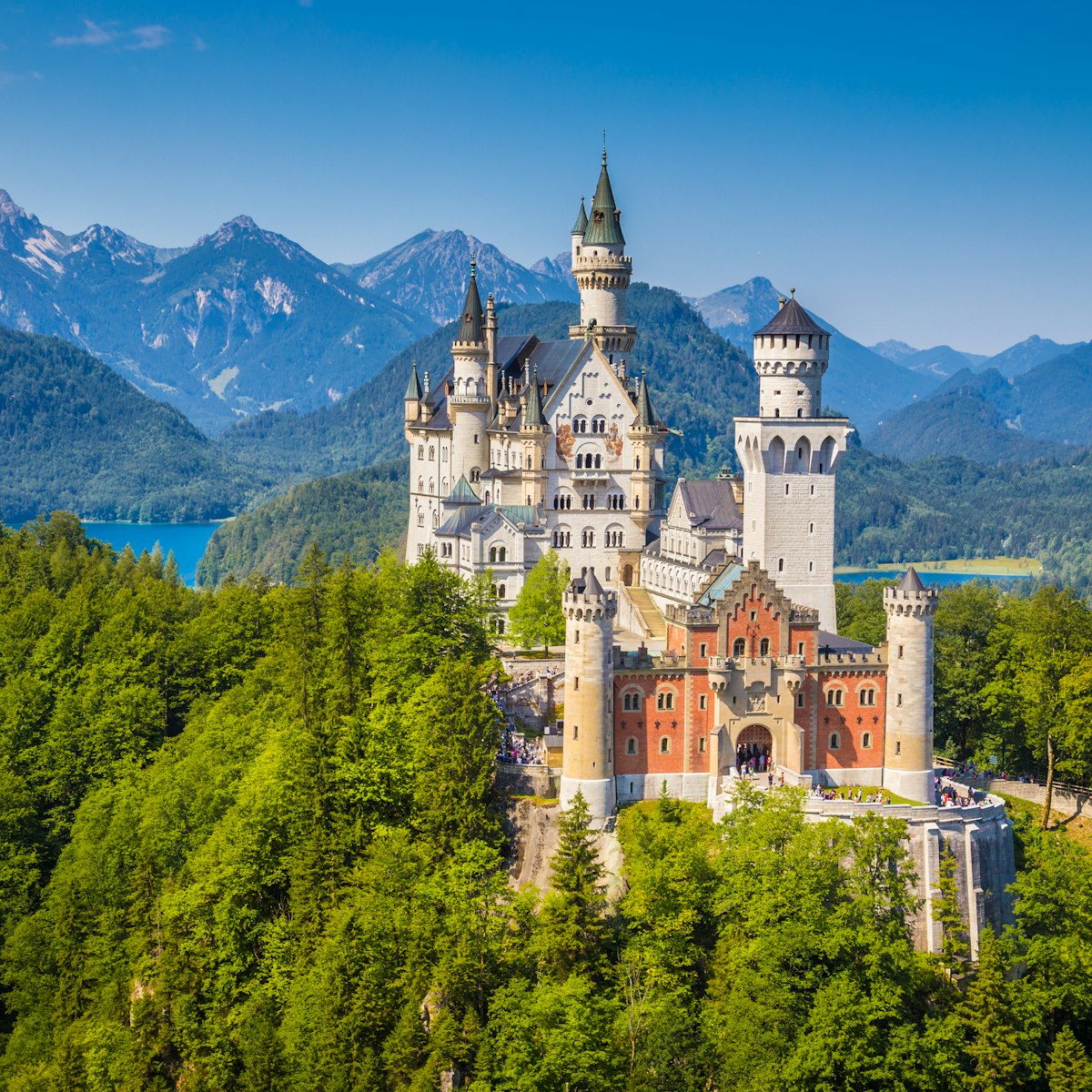
Schloss Neuschwanstein
Appearing through the mountaintops like a mirage, Schloss Neuschwanstein was the model for Disney’s Sleeping Beauty castle. King Ludwig II planned this…

Situated on the shores of the English Garden's Kleinhesseloher See, the Seehaus has a family-friendly beer garden with an attached almost-upmarket…

A collaboration between the architect Matthäus Pöppelmann and the sculptor Balthasar Permoser, the Zwinger was built between 1710 and 1728 on the orders…
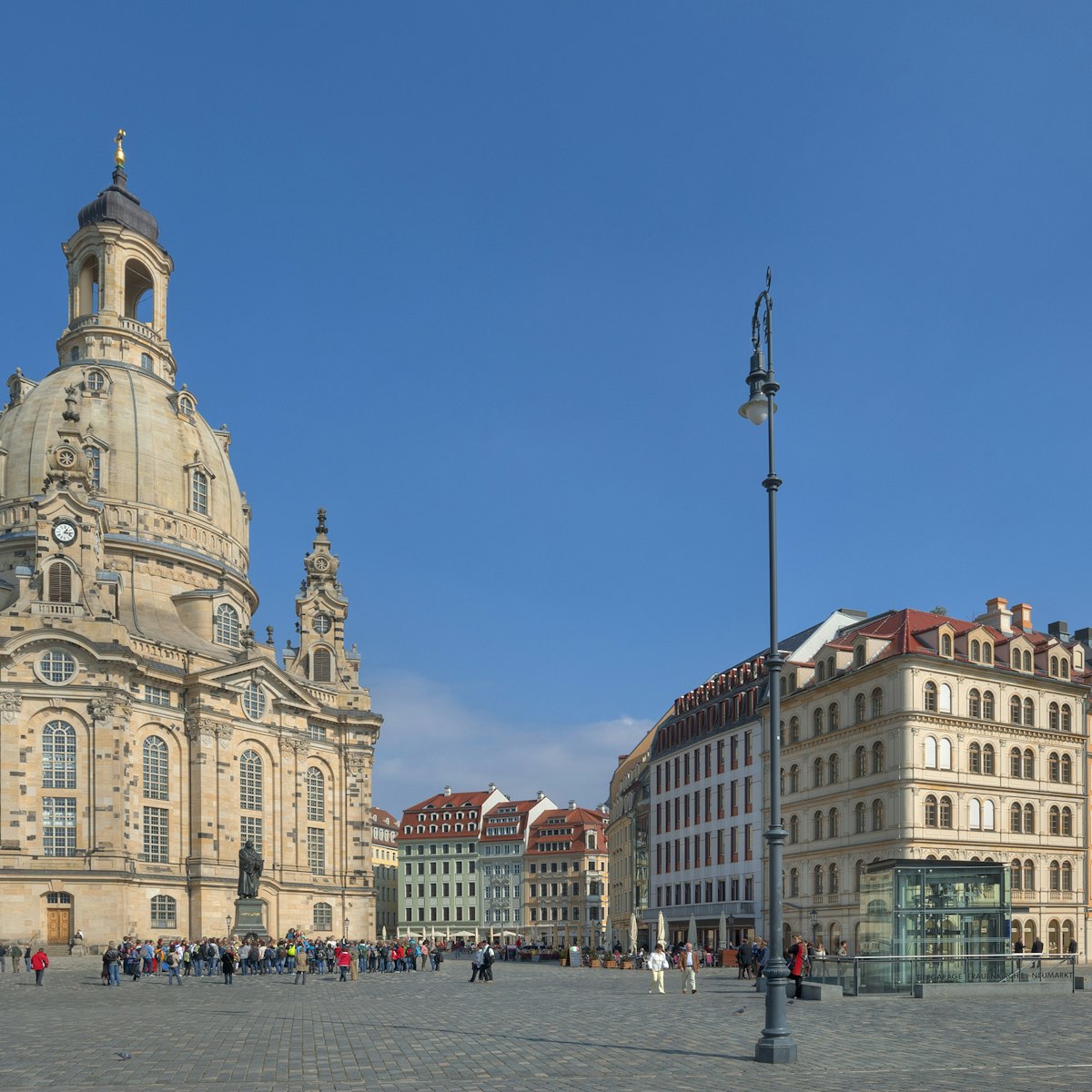
Frauenkirche
The domed Frauenkirche – Dresden’s most beloved symbol – has literally risen from the city's ashes. The original church graced the skyline for two…
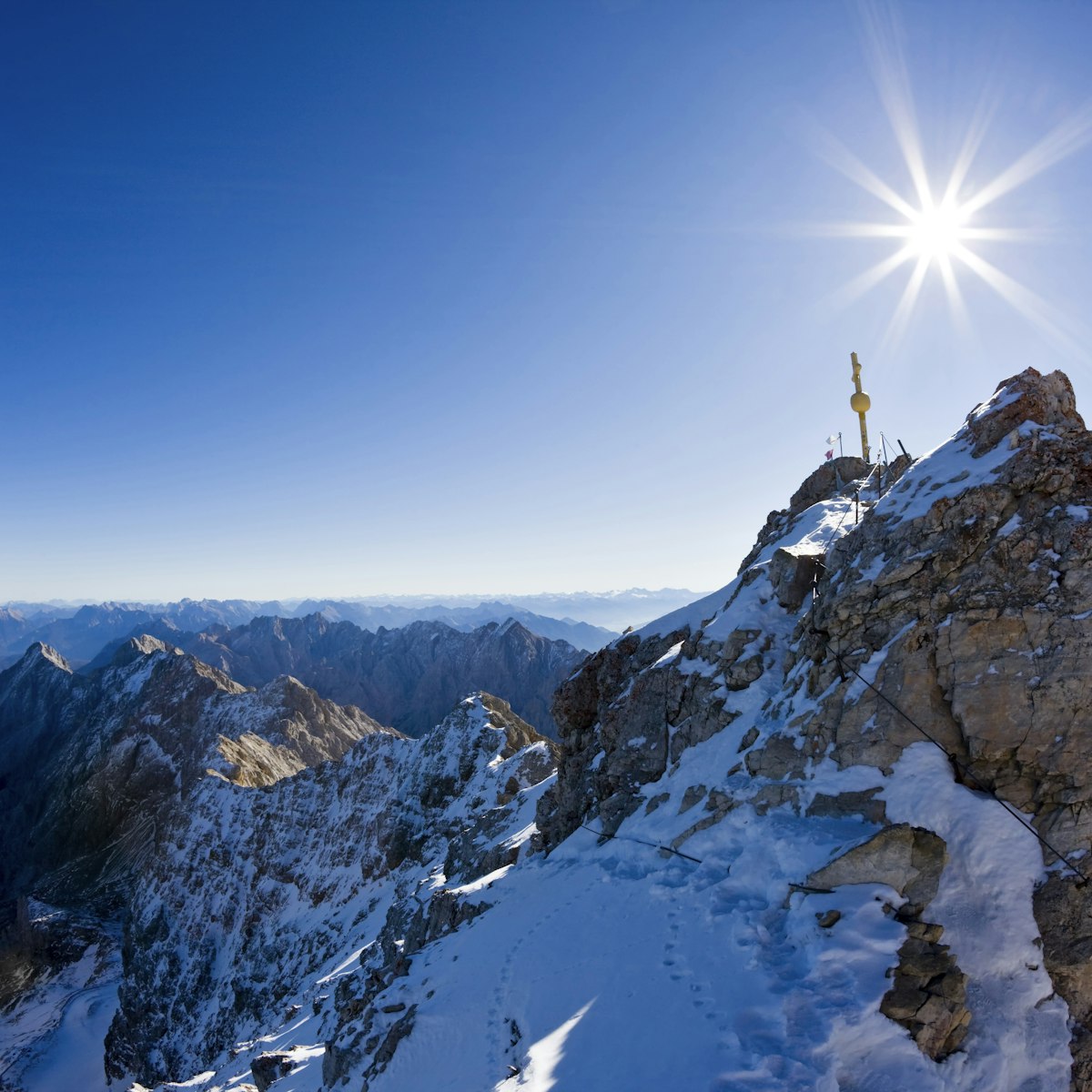
Garmisch-Partenkirchen
On good days, views from Germany’s rooftop extend into four countries. The return trip starts in Garmisch aboard a cogwheel train (Zahnradbahn) that chugs…

Memorium Nuremberg Trials
Göring, Hess, Speer and 21 other Nazi leaders were tried for crimes against peace and humanity by the Allies in Schwurgerichtssaal 600 (Court Room 600) of…
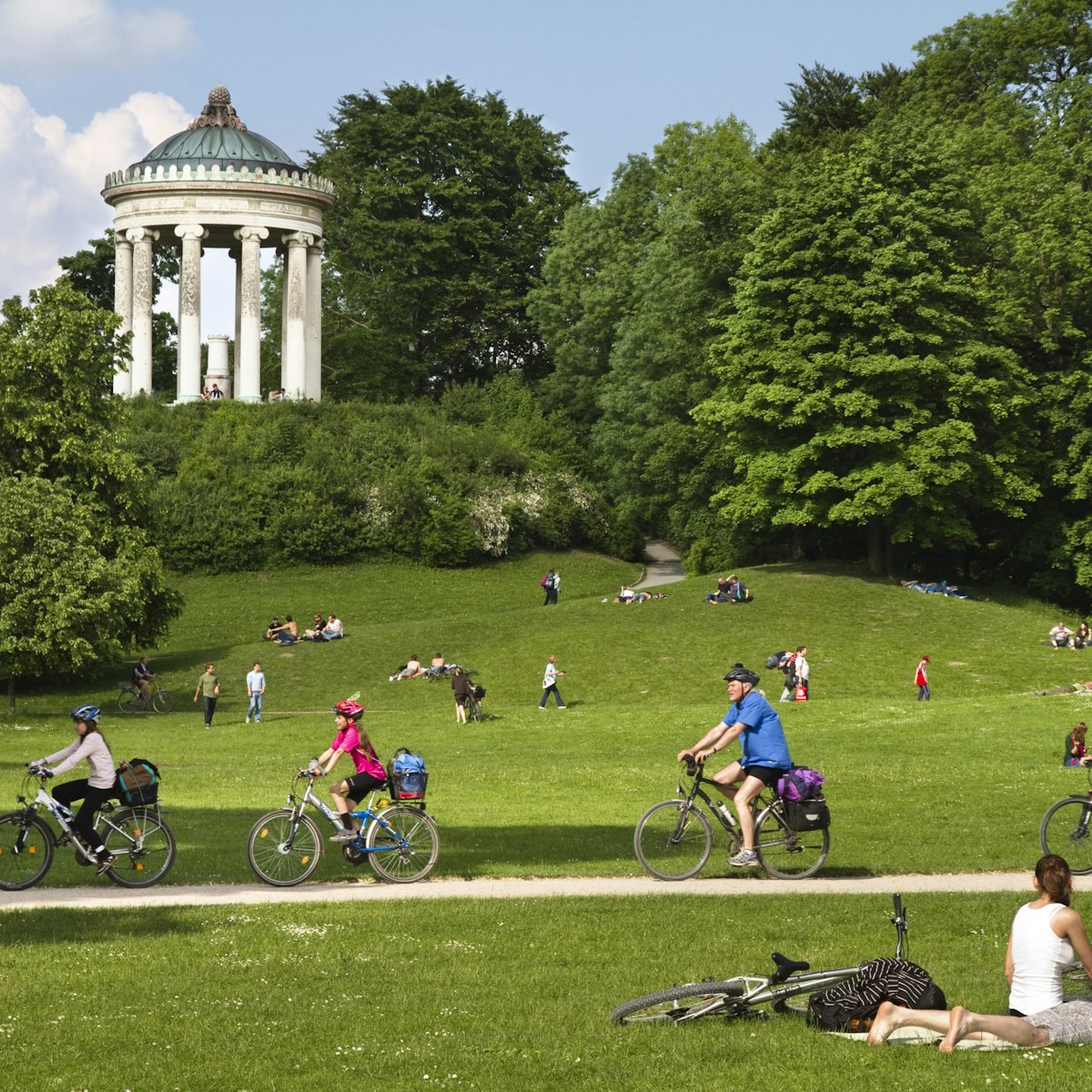
Englischer Garten
The sprawling English Garden is among Europe's biggest city parks – it even rivals London's Hyde Park and New York's Central Park for size – and is a…
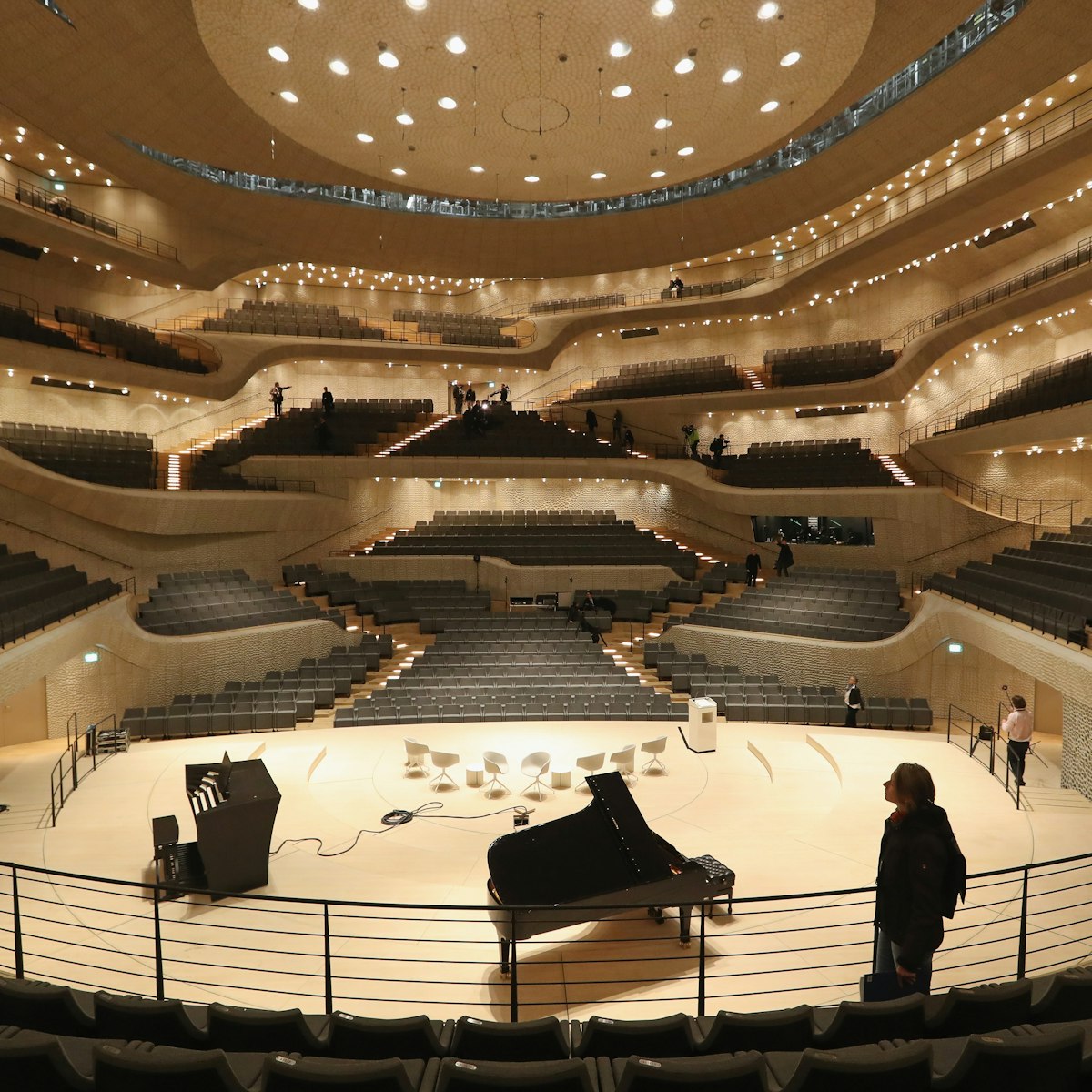
Elbphilharmonie
Welcome to one of the most Europe's most exciting recent architectural creations. A squat brown-brick former warehouse at the far west of HafenCity was…

KZ-Gedenkstätte Dachau
Officially called the KZ-Gedenkstätte Dachau, this was the Nazis’ first concentration camp, built by Heinrich Himmler in March 1933 to house political…
Planning Tools
Expert guidance to help you plan your trip.
Best Things to Do
From cities to countryside and up the highest mountain, experience the best of Germany with these top things to do.
Things to Know
From paying with cash to not crossing against a red light, here are the things you need to know before going to Germany.
Transportation
Germany's public transportation network is one of the best in the world. Here's what you need to know to get exploring.
Visa Requirements
Do you know if you need a visa to visit Germany? We can help you work it out.
Money and Costs
From Deutsche Bahn rail passes to hiking and camping in the summer months there's plenty of ways to save money in Germany.
Best Road Trips
Hit the road with these six touring routes and visit historic towns, castles and palaces, plus epic mountains and remote beaches.
Traveling with Kids
With lots of family-friendly activities and a well-developed infrastructure, Germany is an ideal destination for families traveling with kids of all ages.
Latest stories from Germany
Filter by interest:
- All Interests
- Adventure Travel
- Art & Culture
- Beaches, Coasts & Islands
- Food & Drink
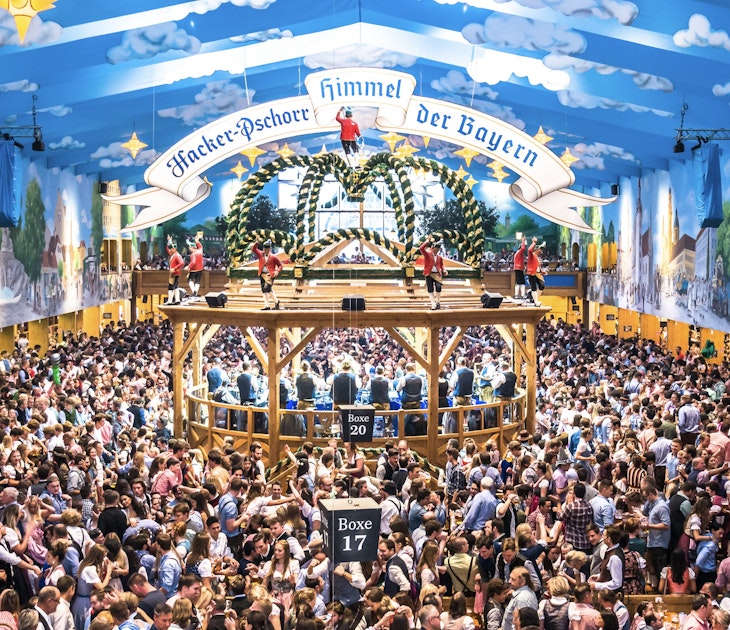
Feb 23, 2024 • 5 min read
As you plan your big trip to Germany this year, don’t sleep our our list of the the top places for scenery, culture, history and (yes) beer.

Jan 30, 2024 • 17 min read

Sep 1, 2023 • 4 min read

Aug 3, 2023 • 4 min read
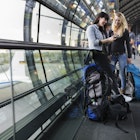
Aug 3, 2023 • 6 min read
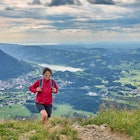
Jul 30, 2023 • 5 min read

Jul 30, 2023 • 6 min read

Jul 29, 2023 • 6 min read

Jul 28, 2023 • 3 min read
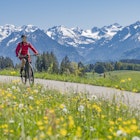
Jul 27, 2023 • 9 min read
in partnership with getyourguide
Book popular activities in Germany
Purchase our award-winning guidebooks.
Get to the heart of Germany with one of our in-depth, award-winning guidebooks, covering maps, itineraries, and expert guidance.
Germany and beyond
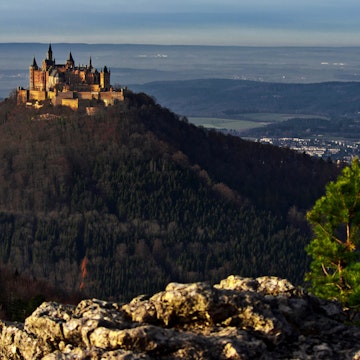

Home » Destinations » Europe » Germany » 5-14 Day Germany Itinerary: A Guide For Planning Your Perfect Germany Trip
5-14 Day Germany Itinerary: A Guide For Planning Your Perfect Germany Trip
Links in this article may earn us a little money if you book/ order stuff. More here .
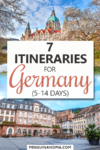
Plan Your Perfect Germany Itinerary with These Detailed Templates!
If you’re looking to plan the perfect trip around Germany, you are in luck! We’re passionate about exploring Germany because it’s a great country – and because Lisa is German!
Jokes aside, we’ve been lucky enough (and have made it a point) to see lots of different parts of the country – from the sea in the north to the mountains in the south. That said, Germany can be a tough country to plan a route or road trip through because there is just so much to see and do!
So, whether you’re looking for the best week in Germany or a Germany itinerary that covers 5 days or 14 days – here’s our master guide with 7 detailed Germany itineraries by train and/or by car! We’ve got cities, attractions, hotels and accommodations, directions, and distances to help you plan the best Germany travel route for you!
We’ve got other great posts to help you plan a visit to Germany:
- Must-Knows + Tips for Travelling to Germany for the First Time
- Helpful German Phrases to Get You By
- Discover 30 Beautiful Places in Germany
- Our Top Hostels in Germany (Stayed at all of them)
Table of Contents
Things to Consider When Travelling in Germany
Before you plan your trip to Germany, there are some things that you should know and keep in mind to make planning easier and to have a successful trip. While you probably know that the currency used in Germany is the Euro, here are some other topics that you should consider as well.
Best Time of Year to Visit Germany
Germany is actually a destination that you can visit year round – but it is important to plan accordingly and go in with the right expectations. If you’re planning a trip during the spring – let’s say from March to May – you could absolutely have beautiful weather… but it may also just rain a lot.
Unfortunately, the weather can be quite difficult to predict. However, as long as you prepare for different possibilities, you can have a great time no matter the weather! Generally you can say that Germany has a moderate climate with cool and rainy winters (more snowy the farther south you get) and warm – but not overly hot – summers.
July and August are usually the warmest months with an average temperature around 20°C. However, there can be days where you have 30°C. Of course, this can vary depending on the exact location you’re travelling to. Often, it is colder by the north coast than it is farther south.
We would honestly recommend that you avoid visiting the country in July if you dislike crowds since this is when the majority of kids are on their summer break from school. As a result, some cities can get quite busy.
Typically, we would recommend travelling in May or June and then from the end of August until the end of September (or even the middle of October). However, there is also a great reason to plan a Germany trip during the winter because of the many beautiful Christmas markets that you could visit at that time of year!
Public Transportation in Germany
Public transportation in Germany is quite good, especially when compared to North America. Yes, sometimes us Germans like to complain about the “Deutsche Bahn” – the German train company – but at the same time we are also super glad that it exists and works well.
If you’re wondering: Yes, all the itineraries mentioned below can absolutely be done if you want to take the train (minus the odd day trip to a castle here and there). If you want to check a train connection and/or buy tickets in advance you can do so on the DB Website . Alternatively, you can also download the DB app to your phone. We both have it and use it regularly.
As an alternative to the train, you can sometimes also use the bus to get from one city/town to another. Since 2013 (before this date it wasn’t allowed), long distance buses have established their presence in more and more cities and are now a popular way to get around for people who are more conscious of their money.
Unfortunately long distance train tickets can sometimes get quite expensive if you don’t book in advance – so the bus can be a good alternative in some cases.
The most popular long distance bus company in Germany is probably Flixbus. We have also used them multiple times to get between cities. If you want to look at the schedule and/or book a ticket, you can do so on their website .
In addition to the trains and long distance buses, the public transport within the cities is also usually pretty good – especially in bigger centres. Many of the cities – or transport associations – have their own transport apps. So, if you know where you are going and plan on using the local buses, trams, metros, etc. then downloading the local transport app would be a great idea!
Car Rental in Germany
If you want to rent a car and plan a Germany road trip, then that is certainly an option as well. Driving in Germany is generally pretty safe and people are not usually as reckless as in some countries in the south of Europe. However, it can get a little crazy in bigger cities like Berlin or Munich – especially if you are not used to driving in bigger centres.
In Germany, you drive on the right side as it is done in the United States, Canada, and many other countries as well. You have probably heard of the “Autobahn” – that’s simply the German name for our highway system. If you follow any of these itineraries, you’ll drive on many different highways.
While it is true that there is no speed limit in some parts of the Autobahn, there are lots of sections where there are actually speed limits in place. You can usually find limits imposed at/around construction zones along the way – so don’t think you can just speed all the time.
And PLEASE don’t drive on the Autobahn like you would on a highway in the United States or Canada – pass on the left and then get back over . If you’re going slower than other cars, there’s no need for you to be in the left (or even in the middle) lane. You can probably tell that this is something that Lisa complains about in Canada frequently, haha.
Since Germany is such a popular destination, there are lots of different rental car agencies to choose from. You can compare prices from different agencies for the duration of your trip with this handy rental car comparison tool . Please make sure to read the fine print so you know whether you need extra insurance, etc.
Also please be aware that many people in Germany drive cars with a stick shift. Rental cars with automatic transmissions exist, but the numbers available are usually lower and these cars might be slightly more expensive.
We’d also recommend that you reserve an automatic car well in advance if you need one – just so you can make sure that one is available for you. It probably wouldn’t be fun learning how to drive a stick shift while on a road trip in a foreign country.
Travel Insurance for Germany
If you’re planning a trip to Germany and you’re not from another EU country, then you should make sure to get travel insurance for the duration of your trip!
While you’ll probably be fine, accidents do happen and it could get really expensive if you’re not covered. That’s why we always travel with insurance.
If you live in another EU country and have health insurance there, you can get the blue health insurance card with which you are covered in other EU countries in emergency cases, as well.
If you don’t have that option – or are from outside of Europe – we recommend that you get private travel insurance.
Germany Itinerary 5 Days
If you only have a few days to travel through Germany, then have a look below at the two 5-day itineraries we have created. For these itineraries, we have assumed that you are not already in the country so they all start and end in bigger cities.
This should help make it easier for you to fly in/out of an airport with good connections if you are coming from overseas.
Depending on your preferences, you can choose between a trip through the northern part of Germany or a trip through the south of the country (mainly Bavaria). If you are interested in bigger cities and/or harbours, then we’d recommend the northern route.
In case you prefer half-timbered houses and beautiful old towns, then you should have a look at the southern route instead. Of course, you can always modify any itinerary to better suit your interests!
Germany Itinerary 5 Days – North
This 5-day Germany itinerary through the northern part of the country can certainly be considered a “sampler-type” of itinerary since you get to see the two biggest cities in the country – but not much more than that.
That’s completely fine though – you can only see so much in five days anyway. If you are interested in bigger cities and don’t have more than a few days, then this itinerary would be great for you!
The total driving time for this itinerary would be about 5 hours 30 minutes with a total distance of approx. 520 km. Of course, this can change depending on the route you are taking and the time of day you are travelling. Commuter traffic could add quite a bit of travel time to your journey.
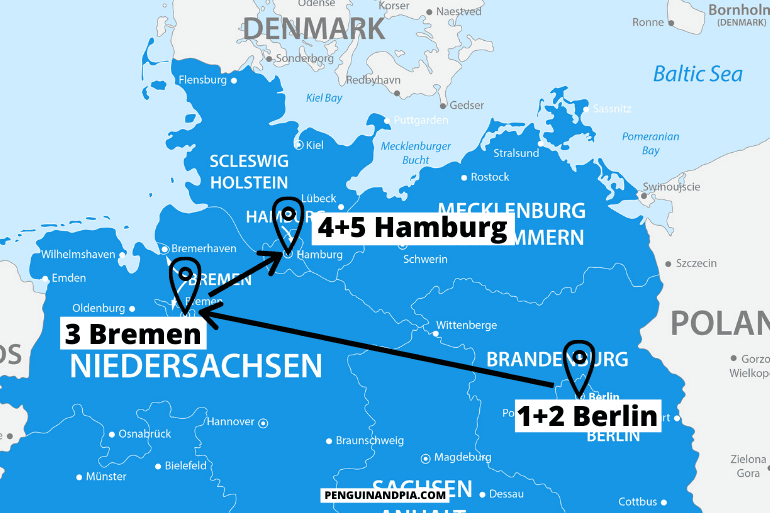
Day 1+2: Berlin Day 3: Bremen Day 4+5: Hamburg
Day 1+2: Berlin
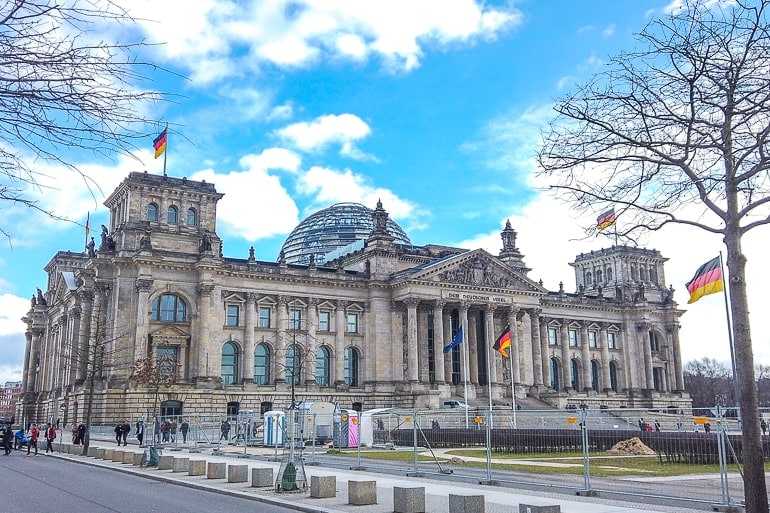
Berlin is a great place to start your adventure since it is the German capital, has multiple airports close by, and has really good train connections.
Since Berlin is such a popular tourist and business city, the car rental industry is well established and there are many different rental agencies to choose from.
— Compare prices from rental car companies in Berlin here
However, since you are only visiting bigger cities on this relatively short itinerary, we believe that a rental car is probably not necessary. Instead, for this trip, it might make more sense to take the train.
Since Berlin is such a big city with lots of things to do, it is worth it to spend (at least) two days in the city. So, remember to book your accommodation in Berlin for two nights .
Accommodation in Berlin : Berlin is a massive sprawling city with loads of different areas to stay and different accommodation options. You can check here for accommodations and hotels in Berlin .
If you are travelling to Berlin with a car, you’ll need a place to park. Check out Park Plaza Wallstreet Berlin Mitte for a stay right in the middle of the city close to Museum Island and other top attractions. It also has a tasty breakfast. Park Plaza has free parking on the street near the hotel (if available) or else it’s for a fee (but a reasonable price considering you’re in the middle).
If you are arriving into Berlin by train, you can check out NH Collection Berlin Mitte am Checkpoint Charlie . Located in the city centre right near the top sight “Checkpoint Charlie”, this popular hotel is in the heart of the action/attractions and is easy to get to via modes of public transit (metro – called the “U” for U-bahn).
If you are searching for a hostel/hotel, check out PLUS Berlin . Located over near the East Side Gallery (the piece of the Berlin wall with the artwork on it), Eric stayed here and really liked it! It’s also very easy to get to using public transit and is close to other areas to go out, etc.
Must-see Attractions in Berlin:
- Brandenburg Gate
- East Side Gallery (Berlin Wall)
We have also written a whole article about classic tourist attractions in Berlin in case you’d like some more inspiration. If you’re looking for some tips on how you could spend a day in Berlin, have a look at our One Day in Berlin Guide .
Day 3: Bremen
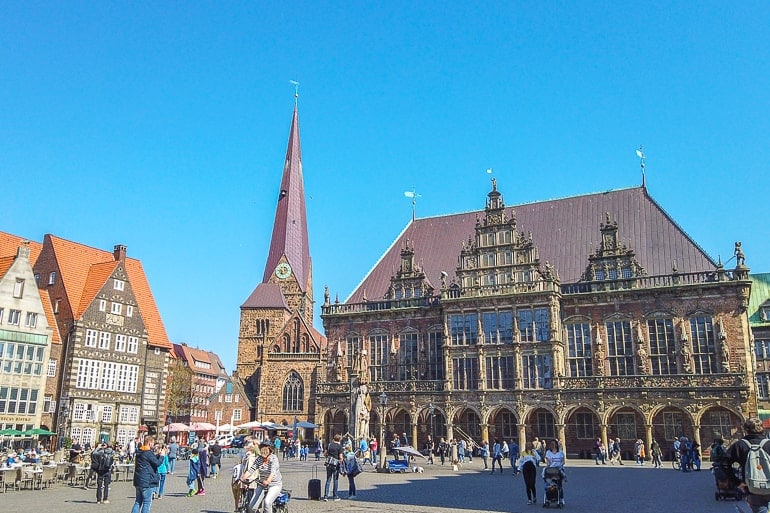
On the third day of your 5 days in Germany, you’ll head for Bremen. We’d recommend that you do the drive/train ride in the morning so you have enough time to explore the city once you get there.
Bremen is a hanseatic city with a nice old town – the market square with the town hall and the cathedral is especially popular. In German-speaking countries, the city is also known for a tale called the “Town Musicians of Bremen” by the Brothers Grimm. You’ll come across the animals of the tale (donkey, dog, cat, and rooster) many times as you stroll through the city.
The drive from Berlin to Bremen will take you approximately 4 hrs 10 min by car , but only around 3 hrs by train . If you take the train, try to book in advance if you can as this will usually save you some money.
Accommodation in Bremen: Bremen is a popular city to explore and it’s also on the larger side so you’ll find plenty of accommodations to suit your needs. There are hotels in the city centre/old town which put you within walking distance of the river and top attractions. You can check here for accommodations and hotels in Bremen .
For a popular choice in the historic middle, you should check out the very popular Radisson Blu Hotel Bremen . Funny story – we know there’s underground parking because we parked there when we visited Bremen by car.
If you want to stay closer to the train station just outside the historic centre (but still very central), check out the Dorint City-Hotel Bremen . This lovely and also very popular hotel is close to the pretty Windmill and flower gardens and has water views just outside the old city walls.
Must-see Attractions in Bremen:
- Marktplatz with Town Hall and Cathedral
- Böttcherstraße
- Schnoorviertel
If you want some more tips for Bremen, have a look at our detailed Things to do in Bremen Guide .
Day 4+5: Hamburg
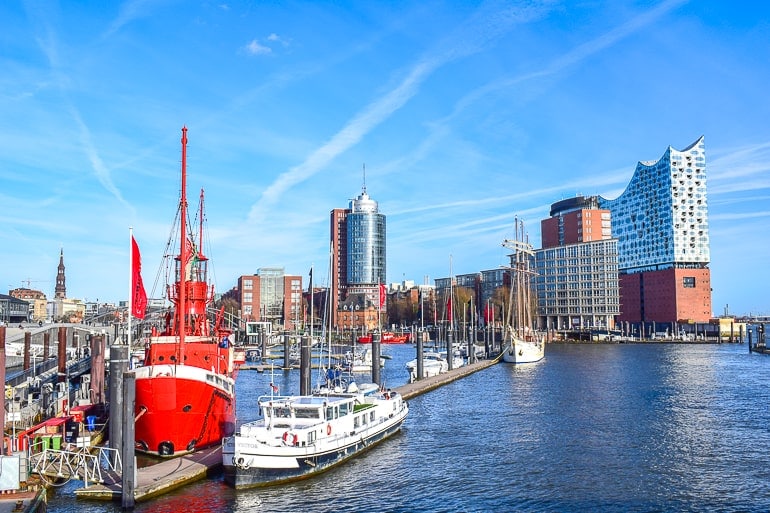
Hamburg is the second-biggest German city and the last stop on this short itinerary. We have been to Hamburg numerous times now and it is actually one of our favourite bigger German cities. You’ll find that the atmosphere of the city is very different than in Berlin. Not necessarily better or worse – just different.
Interesting (and slightly irrelevant) fact: The cities you visit on this itinerary are the three city states that exist in Germany in addition to the 13 area states such as Bavaria, Nordrhine-Westphalia etc.
The drive from Bremen to Hamburg is actually pretty simple and should only take around 1 hour 30 minutes by car and just around 1 hour if you take an ICE (fast train) . The train connection between these two cities is great with trains running pretty frequently. That should make it quite easy to find a train connection that works for your schedule.
Accommodation in Hamburg : Hamburg is popular city with loads of different accommodations and areas to stay in. You can check here for accommodations and hotels in Hamburg .
If you are travelling to Hamburg with a car, you might want to check out the Mövenpick Hotel Hamburg . Located in an old water tower, this unique hotel has a number of cool features with stunning views and parking onsite. It’s very popular – and also close to public transit for getting around!
If you are travelling to Hamburg by train, ARCOTEL Rubin Hamburg is a great hotel option for you to check out. Located in the cool area of St. Georg, you can easily walk to the hotel from the train station. It’s also walkable to other parts of the city centre and other attractions.
If you are looking for a hostel in Hamburg, you might want to check out Generator Hamburg as a reliable and popular hostel stay close to central station and the heart of the city.
If you want more details about accommodations in the city, we have a more detailed guide on where to stay in Hamburg .
Must-see Attractions in Hamburg:
- Speicherstadt
- Elbphilharmonie
- St. Pauli Piers
As one of our first ever articles on Penguin and Pia, we actually wrote a short Hamburg Guide . Have a look if you want some more Hamburg inspiration. Unfortunately it’s not nearly as detailed as our newer article – looks like it’s time for an update!
Germany Itinerary 5 Days – South
If you would like to explore the southern part of Germany instead of the north, then we would recommend the following 5 days Southern Germany itinerary. Compared to the northern itinerary, this trip includes stops in some smaller towns and cities. So, if you are interested in seeing some places of various sizes, beautiful old towns, and maybe a castle, then this might be a good itinerary for you.
The driving distance of this trip is just around 680 kilometres with a total driving time of approx. 7 hours . Depending on your mode of transportation, this can – of course – vary slightly.
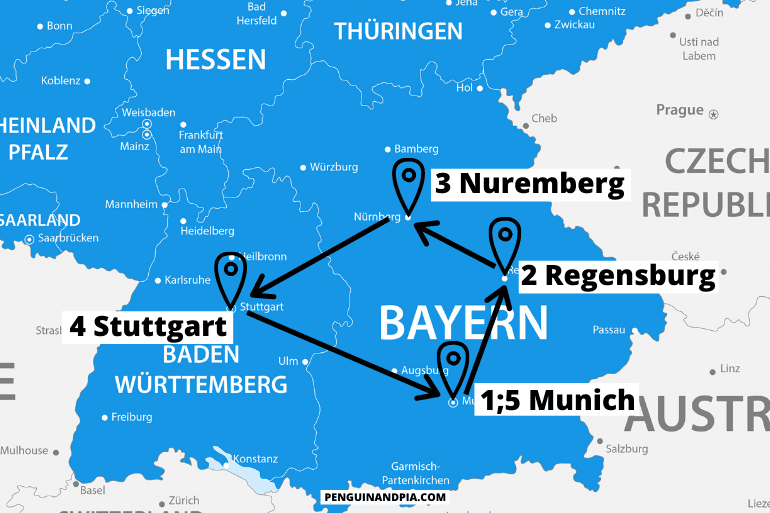
Day 1: Munich Day 2: Regensburg Day 3: Nuremberg Day 4: Stuttgart Day 5: Munich
Day 1: Munich

We are starting (and ending) this itinerary in Munich since it is an easy airport to fly in and out of from other parts of the world. If you are coming from another part of Europe by train, the connections to Munich are also usually pretty good.
Munich is the third-biggest German city and a very popular tourist destination. International travellers often mainly know the city because of the Oktoberfest which happens every year from the middle of September until October.
However, there is so much more to do and see in Munich than just the “Wiesn” (as the Oktoberfest is sometimes called as well). We are always happy to return to Munich because there is just so much to explore.
If you are thinking about renting a car for this itinerary, then you’ll be happy to know that it is quite easy to get a rental car in Munich. You can either pick it up directly at the airport after you land (if you arrive by plane) or in the city centre before you head to the next stop on this journey.
— Compare prices from rental car companies in Munich here
Accommodation in Munich: Munich is very large and popular city so finding a place to stay is no problem. The issue becomes that there are too many places to choose from! That said, you can check here for accommodations and hotels in Munich .
Specifically, we stayed at the very popular H2 Hotel München Olympiapark and we would highly recommend it for the value for money. The hotel has nice, cozy rooms, a super great breakfast buffet, and has a metro station steps from the front entrance to take you to the city centre.
There’s also onsite parking which makes this hotel perfect if you are travelling to Munich by car. The famous Olympic Park and BMW Museum are close by, too!
If you want to stay a little more in the city centre, then check out the Platzl Hotel Superior . This trendy hotel is in the heart of the Old Town just steps from top attractions like Marienplatz and the famous Hofbräuhaus. It’s also easy to get to the central train station either walking or on the metro.
If you are looking for more details on accommodations in this massive city, we wrote a detailed guide on where to stay in Munich .
Must-see Attractions in Munich:
- Marienplatz with New Town Hall
- Olympic Park
- Victuals Market
- English Garden
We also have a great little guide on how to spend one day in Munich if you want more details.
Day 2: Regensburg
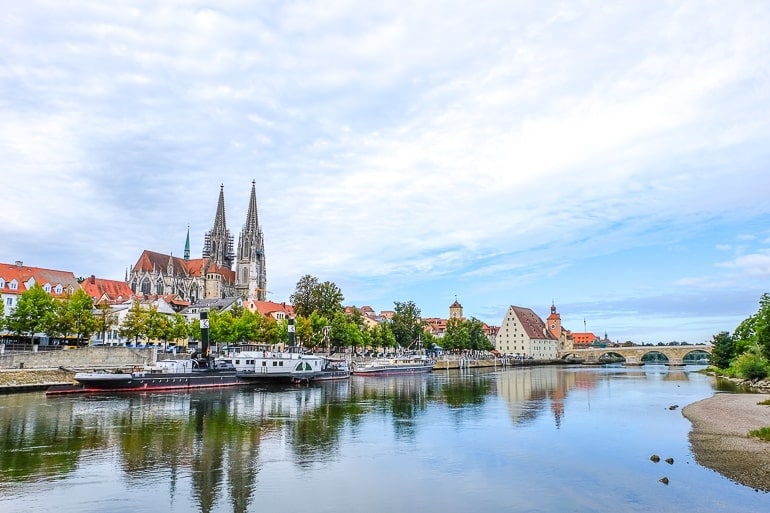
On day two of your trip you’ll be on your way to Regensburg, a small city in Bavaria on the Danube river. Due to its location by the river, Regensburg is a popular stop for people on a river cruise. So don’t be surprised if you see many different tour groups in the Old Town.
We recently spent a couple of days in Regensburg to get to know the city better and enjoyed our time there. One of the highlights is the Old Stone Bridge in the city centre which was built in the 12th century. We actually filmed a small YouTube video in Regensburg – which you can watch here if you are curious about what the city looks like.
The journey from Munich to Regensburg takes approximately 1 hr 20 minutes by car and around 1 hr 30 minutes by train . If you decide to travel by train – and especially if you are travelling with other people – we would recommend that travel with a “Bayernticket” (Bavaria Ticket). This ticket for train travel within the state of Bavaria usually allows you to save some money compared to regular prices.
Accommodation in Regensburg: If you are staying a night in Regensburg, you’ll have a number of great accommodations to choose from. To get started, you can check here for accommodations and hotels in Regensburg .
When we visited the city, we stayed at the Holiday Inn Express – Regensburg and really liked it. It’s a newer hotel and it really shows. The breakfast was excellent and there is even an onsite parking garage if you are travelling with a car. It’s not in the Old Town or near the river – but we did walk there one day and it only took about 15 minutes.
If you are travelling by train and you are on-foot, then check out the Altstadthotel Am Pach . This simple hotel is located right in the heart of the old town so you’re close to everything there is to see and do in Regensburg – including the beautiful Danube River. They also have breakfast included.
Must-see Attractions in Regensburg:
- Old Stone Bridge
- St Peter Cathedral
We are currently still working on our Regensburg Guide – but we’ll link it here once it is published.
Day 3: Nuremberg
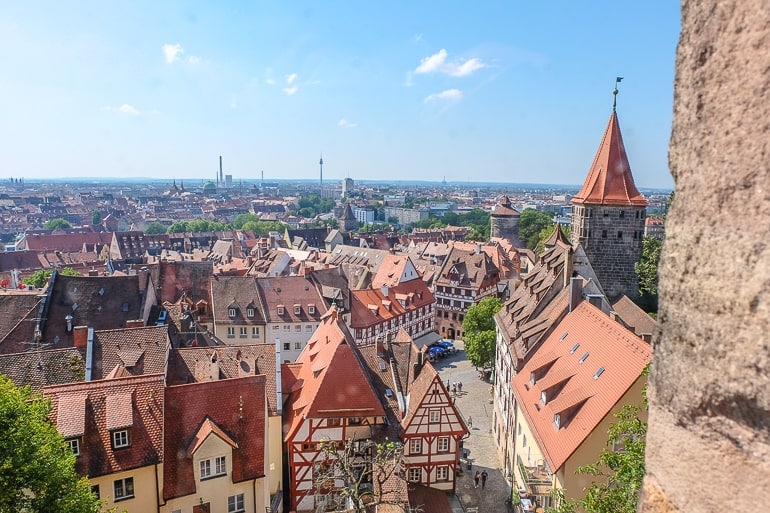
On the third day of this 5 day Southern Germany itinerary you’ll drive – or take the train – from Regensburg to Nuremberg. Nuremberg is a medium sized city in a part of Bavaria called Franconia. If you pay attention, you might notice that the dialect spoken here is quite different from that spoken in Munich and other places farther south.
Lisa actually grew up in this part of Germany so she has been to Nuremberg many, many times. Last year we also went to explore the city together and had a great time. Travellers from abroad mainly know the city for the Nuremberg Trials which took place there after World War II. You can certainly learn alot of history in this German city!
Since Nuremberg is quite close to Regensburg the drive won’t be long – giving you slightly more time to explore the city.
The journey takes approximately 1 hour 10 minutes by car and between 1-2 hours by train depending on which train you take (some stop more often than others). Once again, a regional ticket – such as the Bavaria Ticket – will probably save you some money if you travel with more people.
Accommodation in Nuremberg : Since Nuremberg is a very popular city to visit in Germany, there are many, many places to stay scattered throughout the city centre and around it. You can check here for accommodations and hotels in Nuremberg .
When we visited, we stayed at Five Reasons Hotel and Hostel and we really liked it. Located just inside the medieval city walls, we were really close to the train station and yet also steps from top attractions like the Germanisches Nationalmuseum. The place was bright and great value for the price which we liked a lot.
Close to Five Reasons, we had friends stay at the Sheraton Carlton Nuremberg and they loved it. We actually saw it with our own eyes – it had a pool with views of the city among other perks. There’s also a parking lot right across from the hotel if you’re coming to Nuremberg by car. It’s walking distance to the old centre and the central train station so best of all worlds!
Must-see Attractions in Nuremberg:
- Imperial Castle of Nuremberg (Kaiserburg)
- Documentation Center + Nazi Party Rally Grounds
- Albrecht Dürer’s House
As is the case with Regensburg, we are also still working on our article for Nuremberg. Once it’s live, we’ll link it here.
Day 4: Stuttgart
Stuttgart is the capital of the German state called Baden-Württemberg and the only place on this itinerary that is not located in Bavaria. The city is mainly known for being a “car hub” since both Mercedes-Benz and Porsche have their headquarters there. There are also museums dedicated to both car brands.
Stuttgart is a bit smaller than Munich but there is still a lot to see. In fact, one day won’t be enough to see the whole city – but it’ll allow you to get a good first impression. Next to the car museums, you could visit some of the many green spaces and/or old buildings that the city has to offer.
Driving from Nuremberg to Stuttgart by car will take you approximately 2 hours 15 minutes. If you have the time, you could even take a small detour and stop in Rothenburg ob der Tauber, known for its picturesque Old Town.
By train , the journey from Nuremberg to Stuttgart will take between 2 hrs 10 minutes and 2 hrs 30 minutes – depending on the type of train you are taking. Try to book your ticket in advance if possible as this can save you some money.
Accommodation in Stuttgart: There are many places to stay in Stuttgart – especially in the city centre. You can check here for accommodations and hotels in Stuttgart .
If you’re travelling to Stuttgart with a car, check out the Abalon Hotel ideal . Located very much in the city centre, this popular hotel has an underground parking garage and offers a good breakfast selection.
If you’re travelling to Stuttgart by train, you can check out the Pension am Heusteig . This guesthouse-style accommodation doesn’t have parking but offers a great breakfast and is a doable walk or metro ride from the train station. Funny enough, these two accommodations are very close to one another!
Must-see Attractions in Stuttgart:
- Schlossplatz
- Mercedes-Benz Museum
- Staatsgalerie Stuttgart
Day 5: Munich
On the last day of your trip you’ll make your way back to Munich since it is usually easier to leave Germany through the Munich airport than smaller airports in the surrounding area.
However, if you don’t have to get to an airport – and/or are taking the train home – you could also stay an extra night in Stuttgart if you wanted. Both cities are worth spending an extra few hours in – so you really just have to see what works best for you.
If you decide to get back to Munich, then the journey from Stuttgart to Munich will take approximately 2 hours 20 minutes by car and just slightly less (2 hrs 15 minutes) by train .
Accommodation in Munich : We already went over accommodations in Munich in Day 1 of this itinerary. So, you can head back up for the full details – but we would highly, highly recommend the H2 Hotel München Olympiapark as great value for money with great breakfast, parking, and a metro stop outside the front door.
Don’t forget we also have our detailed guide on where to stay in Munich if you want to have a deeper look at accommodations in the city.
We also have a post on spending one day in Munich if you want more details about the city!
Germany Itinerary 7 Days
If you have slightly more time to explore Germany, we have also created two 7 day Germany itineraries for you. Similar to the 5 day itineraries, we made two different itineraries since it’s pretty much impossible to see the whole country in just a week.
Instead of a northern and southern itinerary, this time we have focused on the western and eastern parts of the country. But please don’t read too much into that description – we use the terms quite loosely. As always, you’re welcome to modify any part of the itinerary to make it better fit your schedule/interests.
Germany Travel Itinerary 7 Days – West
For this itinerary, the total driving time would be around 14 – 15 hours and the distance would be slightly over 1100 km . For these calculations, we included the day trip to Monschau (and back to Cologne) as well as the day trip to Freiburg im Breisgau (and back to Stuttgart), which would be a longer day trip anyway.
So, depending on which day trips you decide to add on to (or remove from) this itinerary, your driving time and distance could be noticeably different than the estimates given above!
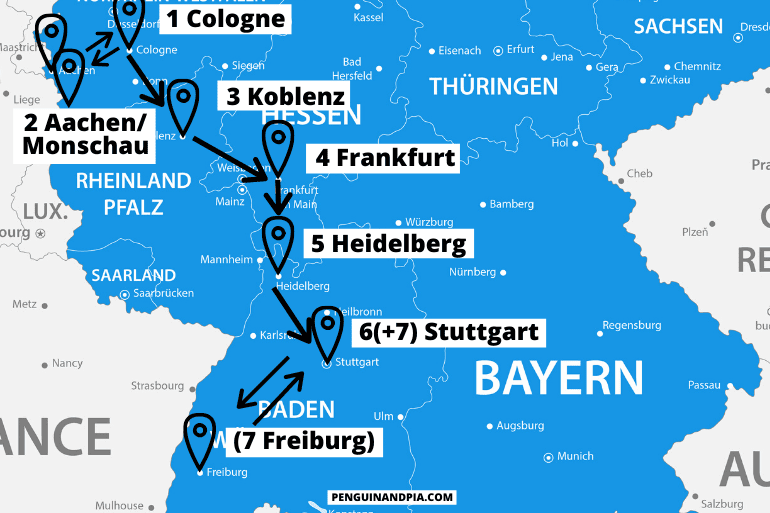
Day 1: Cologne Day 2: Day Trip to Monschau/Aachen Day 3: Koblenz Day 4: Frankfurt Day 5: Heidelberg Day 6: Stuttgart Day 7: Stuttgart / Day Trip to Freiburg im Breisgau
Day 1: Cologne
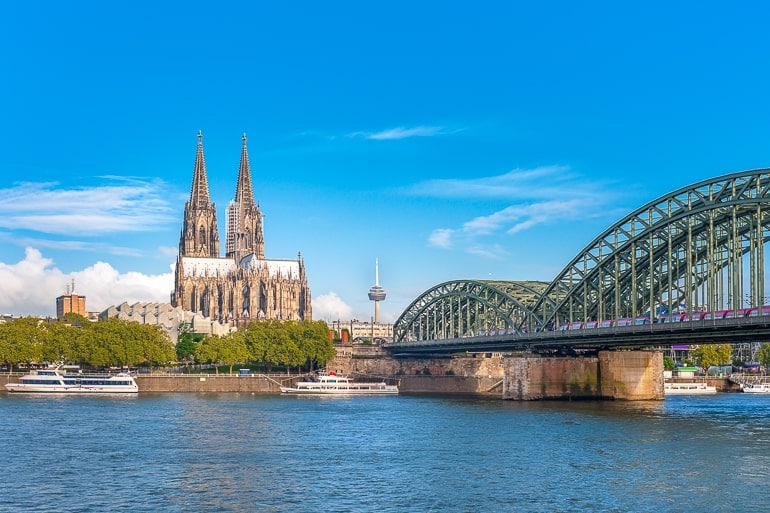
As we have already explained above, we like to start these itineraries in bigger cities to make it easier for people from overseas to get to Germany and start their adventure without hassle. Cologne is Germany’s fourth-biggest city (by population) and has two pretty good airports (Airport “Köln Bonn” and Airport “Düsseldorf”) close by for those coming from far away.
If you want to rent a car for this itinerary, it should be pretty easy to get one in Cologne since it’s quite an international city with lots of visitors.
— Compare prices from rental car companies in Cologne here
Cologne is a pretty spread-out city so you won’t be able to see the whole city in a day or two. However, the highlight of the city is certainly the Cologne Cathedral which is located right next to the central station and the Rhine River.
Make sure to plan some time to visit this impressive building – we always spend much longer in there than we originally plan. It’s free to enter so it can get very crowded depending on the day and time you’re visiting.
Accommodation in Cologne : Cologne is a very big city with multiple areas to stay in. As such, there are lots of accommodation options across the city. Wherever you book, remember to book your accommodation for two nights since you will go on a day trip and then return to Cologne on the second day. You can check here for accommodations and hotels in Cologne .
We have stayed in the Lindner Hotel City Plaza and loved it. The floors all have themes (we got Cologne Zoo with animals), the breakfast buffet is absolutely fantastic, and it’s a short walk to the Cathedral along one main street. There’s also parking available at/near the hotel for those with a car.
If you want to stay more in the heart of the city centre, check out something like the CityClass Hotel Residence am Dom . It’s popular, centrally located with shops and restaurants around, and only a short walk to the train station.
If you are looking for a hostel in Cologne, Eric once stayed at Cologne Downtown Hostel and it was honestly excellent. There’s a grocery store right below it and it’s located in the city centre. It also has a large balcony to enjoy the sunshine from!
Must-see Attractions in Cologne:
- Cologne Cathedral
- Cologne Chocolate Museum
Day 2: Day Trip to Monschau/Aachen
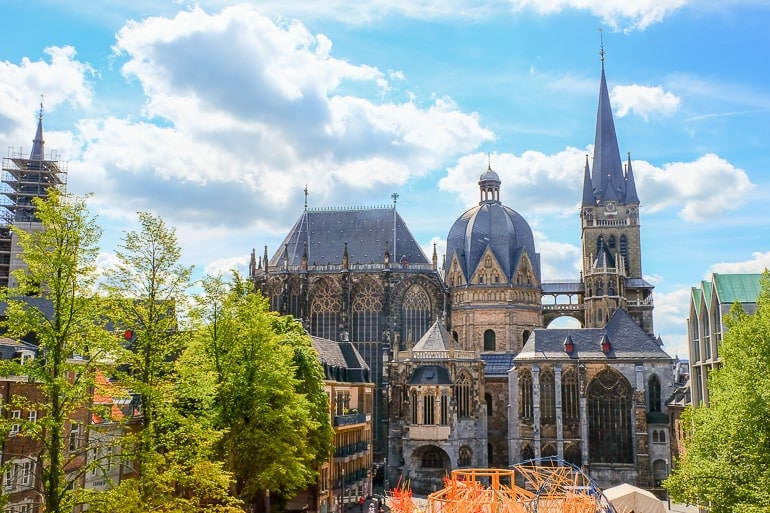
On the second day of this Germany itinerary, you have a few different option: you can either spend another day in Cologne if you feel like you haven’t seen enough of the city yet or take a day trip to Monschau or Aachen. Both of these are two places not too far from Cologne.
Monschau is a popular day trip in the area mainly because of its picturesque buildings in the old town. In fact, you probably have already seen photos of it on social media. To get to Monschau from Cologne, you can either drive or take a combination of trains and buses.
Getting to Monschau takes around 1 hr 40 minutes by car and approx. 2 hours by public transport . To visit Monschau by public transport, you can take the regional train from Cologne to Aachen-Rothe Erde and then take Bus #66 from there to Monschau.
Must-see Attractions in Monschau:
- Monschau Castle
If you want to go on a day trip but don’t want to venture that far, then Aachen would be another great option. This city is actually Germany’s most western city very close to the borders of The Netherlands and Belgium.
We’ve lived close to Aachen for a while and have written a whole guide full of things to do in Aachen that you should read if you want more information. In our opinion, one day is the perfect amount of time to explore the city since it doesn’t have that many attractions and the old town in the city centre is quite compact (but still very pretty).
Getting from Cologne to Aachen is also very easy. It takes approx. 1 hr 20 minutes by car and just around 50 minutes by regional train . You should look into getting a “Schönes Tag Ticket NRW” for the day if you’re travelling with more people as this can save you some money.
Must-see Attractions in Aachen:
- Aachen Cathedral
- Elisenbrunnen
Day 3: Koblenz
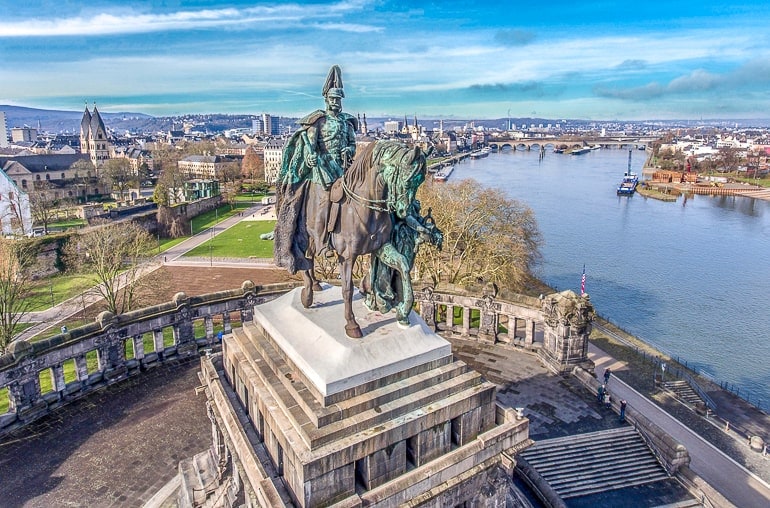
From Cologne, your journey continues to Koblenz – another city on the Rhine River. Koblenz is a smaller German city with a population of slightly over 110,000 inhabitants.
There are quite a few castles and nice hikes in the area which are easy to reach from Koblenz – just in case you decide that you don’t want to spend the day in the city. Depending on the time of year, you could also look into booking a boat tour on the Rhine river. This way, you get a unique perspective of the beautiful region.
Getting from Cologne to Koblenz is pretty easy and will take approximately 1 hour 30 minutes by car and between 50 minutes and 1 hr 10 minutes by train . We really like this train journey since the tracks follow the river for a majority of the trip. As a result, you get some really nice views – and might even spot some of the beautiful castles in the area!
Accommodation in Koblenz: Koblenz is certainly not a huge city – but you’ll still find a good number of places to stay for a night or two. You can check here for accommodations and hotels in Koblenz .
For a hotel right in the city centre, check out the Sander Hotel . This lovely hotel is super popular and close to shops and the rivers. If you are arriving to Koblenz by car, there is onsite parking at the hotel. However, since the city is smaller you can also easily reach the hotel by walking from the central train station.
Must-see Attractions in Koblenz:
- Deutsches Eck
- Ehrenbreitstein Fortress
- Koblenz Cable Car
Day 4: Frankfurt
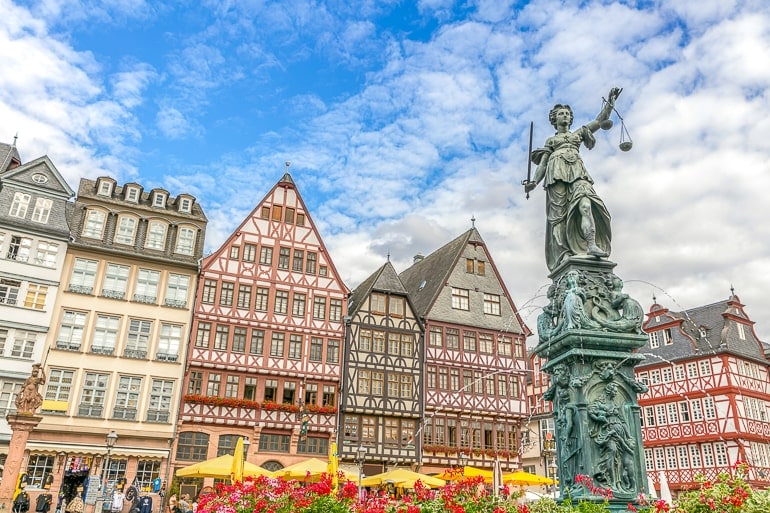
The next stop on your itinerary is Frankfurt, arguably one of the country’s most popular transport hubs due to the busy Frankfurt airport. Frankfurt is an interesting city that divided people: some people really enjoy it while other people don’t like it at all. To be fair, we haven’t spent enough time in the city to really solidify our opinion.
Either way, we do believe that Frankfurt is a stop that you shouldn’t miss if you are trying to get to know different areas of Germany. Known as the financial hub of Germany, this city with its many skyscrapers can feel quite a bit more modern than other German cities. However, the city also has a beautiful, historical market square that you should visit.
The journey from Koblenz to Frankfurt is another easy one – and if you are taking the train (we would recommend that!), you’ll once again follow the Rhine River for big parts of the journey and be rewarded with some great views.
The train ride will probably be between 1 hr 25 minutes and 2 hrs 12 minutes long – depending on the connection you choose. By car , the trip will take around 1 hr 30 minutes . Of course, this can vary depending on traffic.
Accommodation in Frankfurt : There are loads of places to stay in Frankfurt given its popularity and size. You can check here for accommodations and hotels in Frankfurt .
A great option in Frankfurt is the Motel One Frankfurt-Römer . Located very much in the heart of the city centre close to the old town and river, this cool hotel has underground parking if you are arriving to Frankfurt by/with a car. It also serves up a great breakfast!
If you are arriving by train to Frankfurt, you should check out Fleming’s Express Hotel Frankfurt . Located literally right beside the central station (which is in the city centre), this upscale hotel is very popular because it’s very affordable and also has a great breakfast.
Must-see Attractions in Frankfurt:
- Palmengarten
Day 5: Heidelberg
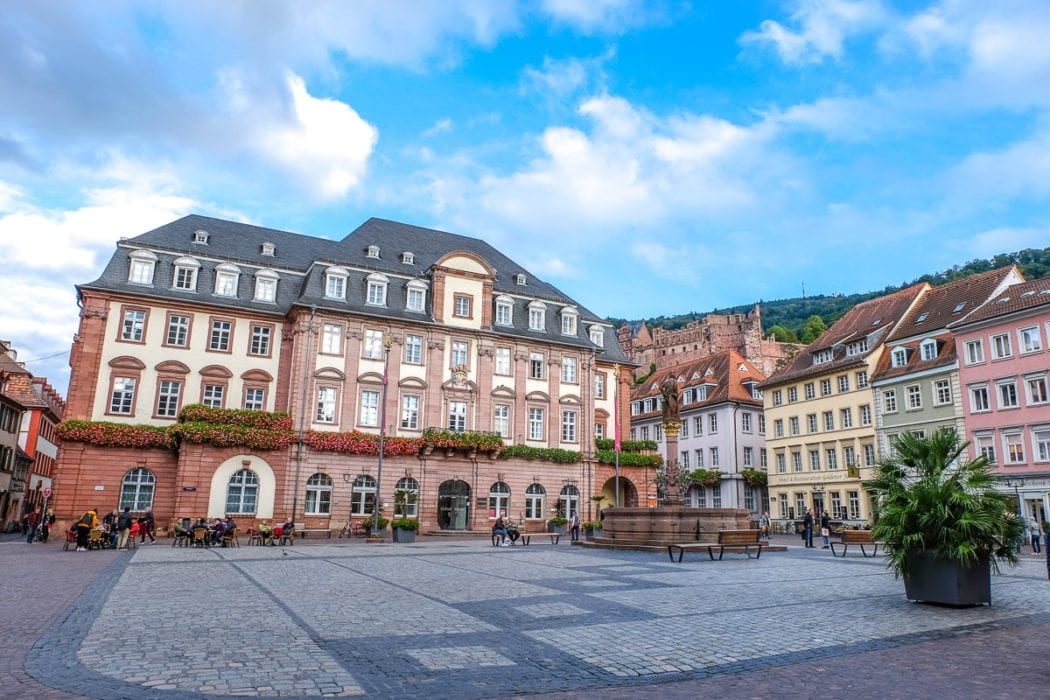
After your day in Frankfurt, you’re heading to Heidelberg which is actually one of our favourite German cities. The highlight of the city is certainly the castle on top of the hill which is visible from many different parts of the city.
Heidelberg is smaller than Frankfurt so you can see quite a bit in just 24 hours. The Old Town is beautiful and lots of attractions are located there. Our highlight was probably the tower climb of the Church of the Holy Spirit. From up there, you get a beautiful view of the Old Town. A very close second was the cable car ride up to the Königstuhl which was lots of fun – even in the rain.
Getting from Frankfurt to Heidelberg won’t take too long. The journey will be approximately one hour by car and between 45 minutes and 1 hr 30 minutes by train – depending on which type of train you are taking.
Accommodation in Heidelberg: If you’re heading for Heidelberg (good choice), there are lots of great places to stay. You can check here for hotels and accommodations in Heidelberg .
We stayed a little outside the old town – but close to the train station – at NinetyNine Heidelberg City . This hotel was really, really great. The beds were comfy and the decor has animals everywhere – you have to see it to understand!
There’s onsite parking (paid) and street parking (free, but not guaranteed) if you are travelling with a car. There’s also a tram stop right outside the hotel to get directly into the city centre in minutes.
If you are looking to stay in the historic old town, then check out colourful hotels like Hotel Holländer Hof which overlooks the river or Hotel Zum Ritter St.Georg which is literally overlooking the main Marktplatz.
Must-see Attractions in Heidelberg:
- Heidelberg Palace
- Church of the Holy Spirit (mainly tower climb)
If you want to learn some more about Heidelberg and what there is to do, you can read our detailed Heidelberg Guide here .
Day 6: Stuttgart
The next day you will drive to Stuttgart, a city that we’ve already mentioned in one of our Germany itineraries for 5 days. As we have already mentioned, you’ll probably really enjoy Stuttgart if you are interested in cars.
Even if you aren’t, there is still lots for you to explore. Did you know that wine also plays a huge role in Stuttgart and the surrounding region? If this is something that interests you and you’re there in the summer (specifically around the end of August), then you should stop by the “Stuttgarter Weindorf” (“wine village”) – but obviously, please don’t drink and drive.
As for getting from Heidelberg to Stuttgart, the journey will take you approximately 1 hr 20 minutes by car and between 40 minutes and 1 hr 30 minutes by train . As mentioned before, the time differs depending on the type of train you are choosing.
Accommodation in Stuttgart: Stuttgart has many places to stay so you can check here for accommodations and hotels in Stuttgart .
Be sure to see the Abalon Hotel ideal if you have a car. This hotel has underground parking available and a tasty breakfast. It’s also in the city centre which makes sightseeing easy.
Those coming to Stuttgart by train should look at the Pension am Heusteig . It’s a guesthouse that is located not too far from the first hotel here and it’s a doable walk or metro ride from the central station.
Day 7: Stuttgart / Day Trip to Freiburg im Breisgau
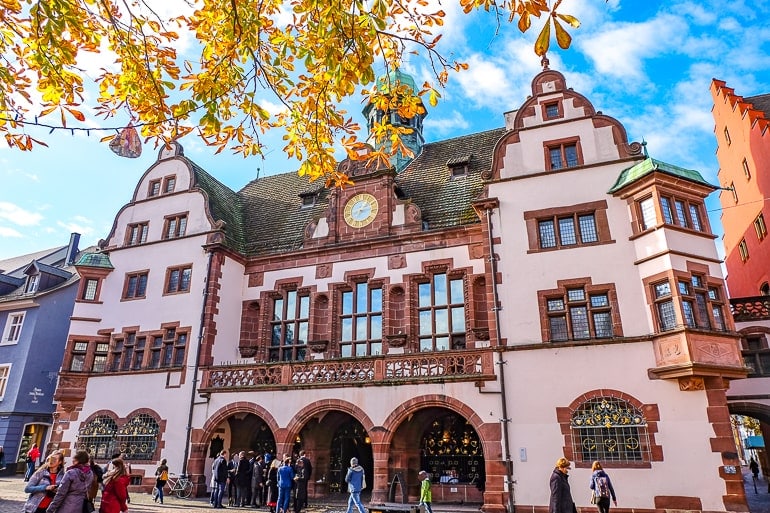
For this itinerary, you can decide how you would like to spend your last day. You could either spend another day to explore more of Stuttgart (and maybe relax for a bit) or you could head farther south and spend a day in Freiburg im Breisgau. We really enjoyed spending time in this small city in the south of Germany during our visit.
We are currently still in the process of writing our Freiburg guide, but we’ll link it here once it’s done. However, a good way to start your exploration of the city is by wandering the old town.
In Freiburg, you’ll find that many of the cobblestoney streets have small water-filled runnels – called Bächle – running alongside it. Sometimes they even have small yellow ducks in them!
The journey from Stuttgart to Freiburg im Breisgau is slightly longer than most other parts of this itinerary. It takes approximately 2 hrs 30 minutes by car and around 2 hours by train . Since this train journey will probably include at least one ICE (the fast train), we’d recommend that you book your train tickets early if you can to save some money.
Must-see Attractions in Freiburg:
- Freiburger Münster (Cathedral)
- Schlossberg + Tower
- New + Old Town Hall
Germany Travel Itinerary 7 Days – East
If the other week-long Germany itinerary doesn’t interest you and/or you really want to visit the German capital Berlin, then you might prefer this eastern route instead.
The driving time would be just slightly over 10 hours and would be approximately 900 km driving distance – including the day trip to Potsdam (which would honestly be easier with public transport, though)!
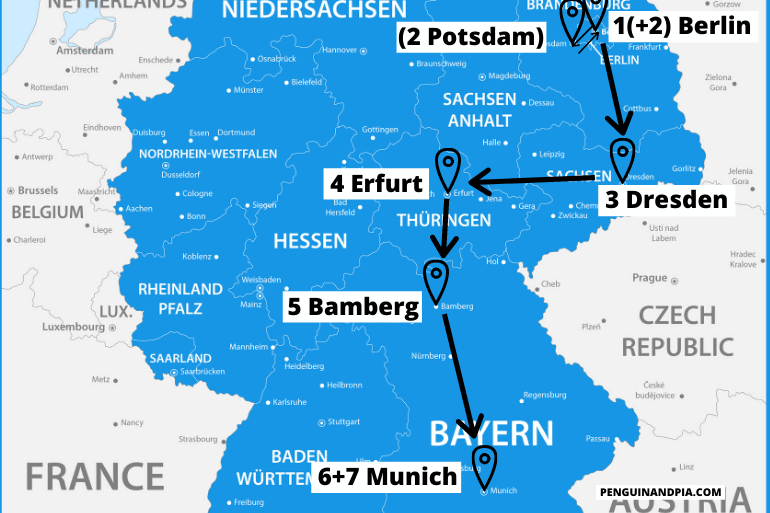
Day 1: Berlin Day 2: Berlin / Day Trip to Potsdam Day 3: Dresden Day 4: Erfurt Day 5: Bamberg Day 6+7: Munich
Day 1: Berlin
Once again, this itinerary begins in Berlin since it is one of the big cities that is easier to get to for people coming from overseas. Similar to the five day itinerary that started in Berlin, you’ll stay two nights in the German capital. There is just too much to see to spend only one day – and even in two days you wouldn’t be able to explore everything.
In case you’ve already been to Berlin on a different trip and/or aren’t a huge fan of big cities, we also give you the option of a day trip to Potsdam (a city close by) on the second day. More on that below.
Accommodation in Berlin : Finding a place to stay in Berlin can be tough because there are just so many options. You can check here for accommodations and hotels in Berlin .
If you have a car, check out Park Plaza Wallstreet Berlin Mitte . Located right in the middle of the city close to Museum Island, this hotel has a great breakfast and free parking on the street behind the hotel. Otherwise, parking is paid but for a decent price for the city centre.
Those without a car travelling by train should see the NH Collection Berlin Mitte am Checkpoint Charlie . If you want a hotel close to a top attraction that is easy to get to with public transport, this is definitely one of them!
Across the city, PLUS Berlin is a really good hostel/hotel that Eric stayed at a few years ago. It’s a big place but it was a great stay over by the East Side Gallery (part of the Berlin Wall with the graffiti on it).
As already mentioned above, if you want to read some more about Berlin, check out our articles on Things to do in Berlin and How to spend one day in Berlin .
Day 2: Berlin / Day Trip to Potsdam
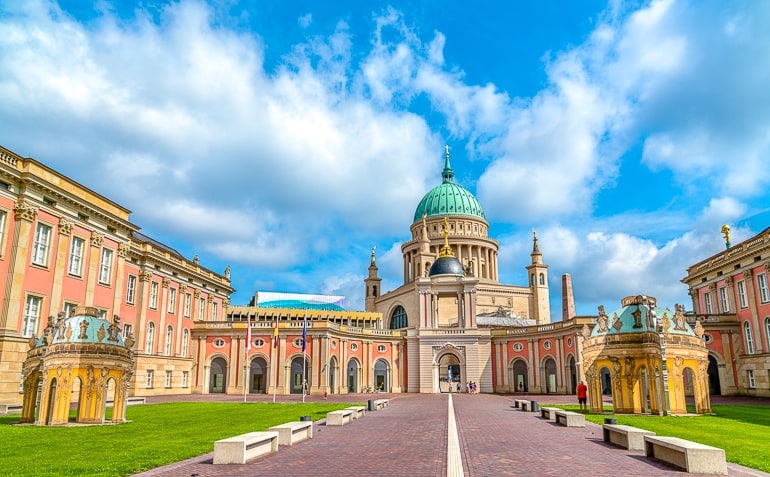
On your second day, you can choose between spending another day in Berlin to see more of the German capital or going on a day trip to Potsdam – which is a smaller city not far from Berlin.
Potsdam is actually the capital city of the German state called Brandenburg. It’s most popular attraction is probably Sanssouci Palace with the beautiful Sanssouci Park surrounding it.
During our visit, we also enjoyed walking through the Dutch Quarter with its small shops and cafes. Since the city isn’t too big, one day gives you a chance to get a good impression and check out some of the more popular sights.
It is also very easy to get to Potsdam from Berlin. If you decide to drive , it’ll take you approx. 40 minutes , but it could be longer – traffic depending. We would honestly recommend that you do this day trip by taking public transport. This way, you don’t have to worry about traffic and/or finding a parking spot.
For trains, you can take the S-Train #7 (S7) from Berlin Central Station (as well as other train stations) straight to Potsdam Central Station. The journey will take around 35 minutes with trains running very frequently throughout the day.
Must-see Attractions in Potsdam:
- Sanssouci Palace
- Dutch Quarter
- Cecilienhof
Day 3: Dresden
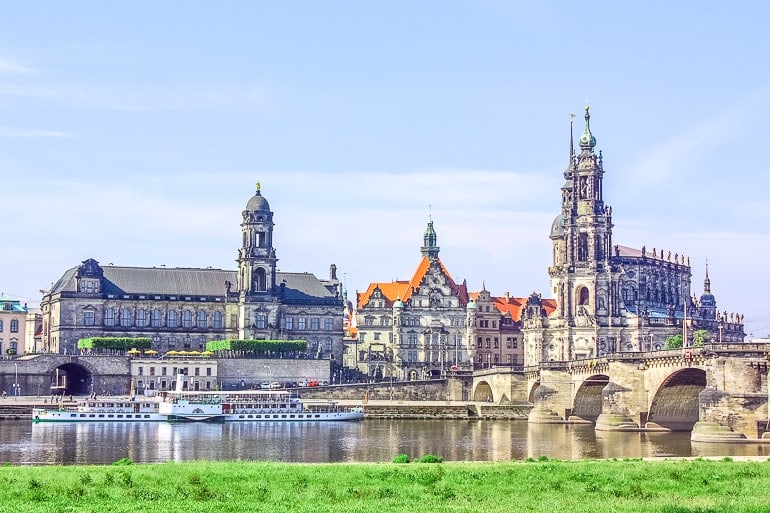
The third day of this Germany itinerary will take you from Berlin to Dresden which is a German city close to the Czech border. To be honest, we haven’t spend that much time in Dresden yet – and it’s certainly on our list of places to visit this year.
One of the city’s main attractions – the Zwinger – is known across the country and a sight that you shouldn’t miss during your visit. It’s a beautiful palace built in a baroque style.
Fun fact: When Lisa was a kid, she didn’t actually know that the “Zwinger” was a palace. Since that word can also mean “dog kennel” in German, she was always confused as to why people would want to visit it during their time in Dresden!
As for getting from Berlin to Dresden, the drive will take you around 2 hrs 10 minutes by car and around 2 – 3 hours by train. Once again, this depends on which connection you choose.
Accommodation in Dresden: There are a number of accommodations in the compact “Innere Altstadt” close to the River Elbe for you to choose from. You can check here for accommodations and hotels in Dresden .
For a great hotel option right in the old town, look no further than the Star Inn Hotel Premium Dresden im Haus Altmarkt . You’re a short walk to the train station, the river, and all the best old sights in Dresden if you stay here and arrive by train. If you come to Dresden by car, the hotel has discounted underground parking available.
Another option right in the old town (and even closer to the river) is Aparthotel am Schloss . Since this is an apartment-style hotel, it’s a great option if you are looking for more of a base to relax in a “home away from home”. It’s a very popular choice, too – and also has onsite parking.
Must-see Attractions in Dresden:
- Frauenkirche
Day 4: Erfurt
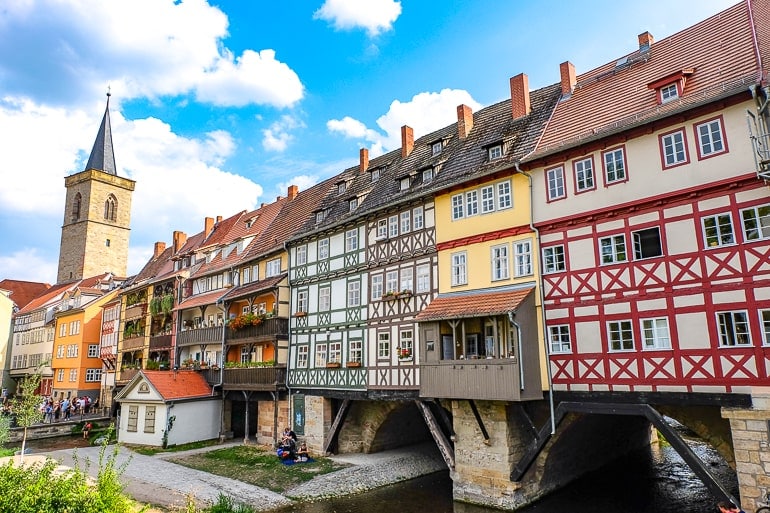
Erfurt is a popular city to visit in the middle of Germany – and it’s also the capital city of the German state Thuringia. We’ve spent some time in Erfurt a few months ago and instantly fell in love with the city. Its size is perfect (in our opinion) – giving you enough things to do without feeling overwhelming.
Maybe you’ve seen photos of one of the city’s most popular attractions, the Krämerbrücke. This bridge is not only pretty to look at and photograph, it’s also unique in the sense that there are buildings on the bridge and when you’re walking on it, you can’t actually see the water running below.
Visiting the bridge and climbing the tower of the Ägidienkirche, a church at one end of the bridge, is something we’d certainly recommend during your time in the city. We actually filmed a short video of our time exploring Erfurt. If you are interested in seeing what parts of the city look like, then you can find our video here .
Getting to Erfurt from Dresden won’t take you too long. It will take approx. 2 hours 20 minutes by car and between 2 and slightly over 3 hours by train .
Accommodation in Erfurt: Since Erfurt isn’t a huge city, there aren’t a ton of accommodations – but certainly more than enough to find one that works for your style and budget. You can check here for hotels and accommodations in Erfurt .
We stayed at Gästehaus in der Gotthardtstraße and really liked our stay. It’s located in a quiet neighbourhood just north of the city centre – a short walk to the Krämerbrücke. The host was lovely, the room was cozy, and there was secure onsite parking for those driving to Erfurt.
If you want to stay RIGHT in the city centre then you should check out Hotel Krämerbrücke Erfurt which is right beside the famous bridge. This might be a good place to stay if you are travelling to Erfurt by train and you’re on-foot.
Must-see Attractions in Erfurt:
- Krämerbrücke
- Erfurt Cathedral
- Citadel Petersberg
For more details, have a look at our Things to do in Erfurt article .
Day 5: Bamberg

Bamberg is a small city – or larger town – in the German state called Bavaria. It’s actually located in a region called Franconia, which is noticeably different from the Bavaria that you might know in the area surrounding Munich, etc.
We’ve been to Bamberg multiple times over the years (it’s also close to the part of Germany where Lisa grew up) and are always happy to come back. Bamberg is known for its cute, historic old town which is actually a declared UNESCO World Heritage Site.
One of the most popular buildings the city has to offer is the Old Town Hall (shown above) which is built on an artificial island. The story behind it is quite interesting.
The drive from Erfurt to Bamberg is doable and will take approx. 2 hrs by car and around 3 hrs by train . On the way, you’ll drive through quite a few tunnels since you’ll drive through an area known as “Thuringian Forest”.
Accommodation in Bamberg: Bamberg is a small place to visit so there aren’t a ton of options but still enough to find what you’re looking for. You can check here for accommodations and hotels in Bamberg .
Anywhere you stay is basically in or close to the old town/city centre. For a place to stay with parking (for those arriving by car), check out Welcome Hotel Residenzschloss Bamberg . It’s located right on the river.
You might also want to see Palais Schrottenberg to stay right in the middle of the Old Town! For reference, the train station is a short walk to the north of the river – not far from these places in the centre.
Must-see Attractions in Bamberg:
- Bamberg Cathedral
- Old Town Hall
- Alte Hofhaltung
If you want some more information about Bamberg, please read our detailed Bamberg, Germany Guide .
Day 6+7: Munich
From Bamberg, your journey will continue to Munich which will be the last stop on this 7 day eastern itinerary. Not only is this the third biggest city of the country, it is also one of the most internationally known destinations in Germany.
Whenever we come back to Munich, we always enjoy our time there. For some reason, the atmosphere always feels more laid back than in other big German cities and the people are usually quite friendly. We might also be a little bit biased, though, since Lisa grew up in this part of the country and is more used to the mentality, dialect etc. than in other parts of Germany.
For this itinerary, you’ll spend two days in Munich since there is quite a lot to see. Next to the obvious attractions like the Marienplatz with the New Town Hall and the Frauenkirche close by, there are also lots of museums and other things that you can explore.
If you’ve already been to Munich before and/or decide that one day in the city is enough for you, you could also opt for a day trip on one of these days. We’ve just recently written a whole Day Trips from Munich Guide , which you can browse through to get some inspiration!
Driving from Bamberg to Munich will take about 2 hrs 20 minutes by car and between 2 and 3 hrs by train . If you decide to only take regional trains instead of the ICE (fast train), you should look into getting the Bayernticket. This can save you some money, especially when you’re travelling with more people.
Accommodation in Munich: Since Munich is so large and popular to visit, there is definitely no shortage of places to stay! You can check here for accommodations and hotels in Munich .
That said, we loved our stay at H2 Hotel München Olympiapark . Located up by the famous Olympic Park, we’d highly recommend it since it was amazing value for money. The breakfast was huge and delicious and there’s a metro station outside the lobby door that takes you into the heart of the old town in minutes. There’s also parking if you are arriving by car.
For a hotel that is a little more central, you should see the Platzl Hotel Superior this hotel is really popular – and for good reason. It’s located around the corner from attractions like Marienplatz and the famous beer hall, Hofbräuhaus.
For more help looking into accommodations and neighbourhoods in Munich, check out our where to stay in Munich guide .
(Check out our guide to one day in Munich if you want more details on things to do and see.)
Germany Itinerary 10 Days
Although we have tried to create short itineraries that allow you to see more than just the standard cities, it is no doubt easier to see more of Germany if you are able to travel for longer than one week. To give you a couple different options that you could look at (and then potentially modify), we have created two 10-day Germany itineraries.
Once again, we believe that ten days would not be enough time to see the whole country – and even if you managed to do that it would be too stressful (in our opinion). Both of the following itineraries give you a good mix of bigger and smaller cities as well as a few interesting day trips. So, have a look and see which one you like better!
Germany Itinerary 10 Days – North
If you’re interested in seeing more of the northern part of Germany and experiencing the mentality and way of life of people in the flatter part of the country, closer to the sea, then have a look at the following 10-day itinerary!
The total driving time would be slightly less than 17 hours with a distance of approx. 1470 kilometres. For these calculations, we have included the day trips to Schloss Drachenburg, Lübeck, and Flensburg. So, if you decide to skip any of these, your driving time and distance would obviously be slightly lower.
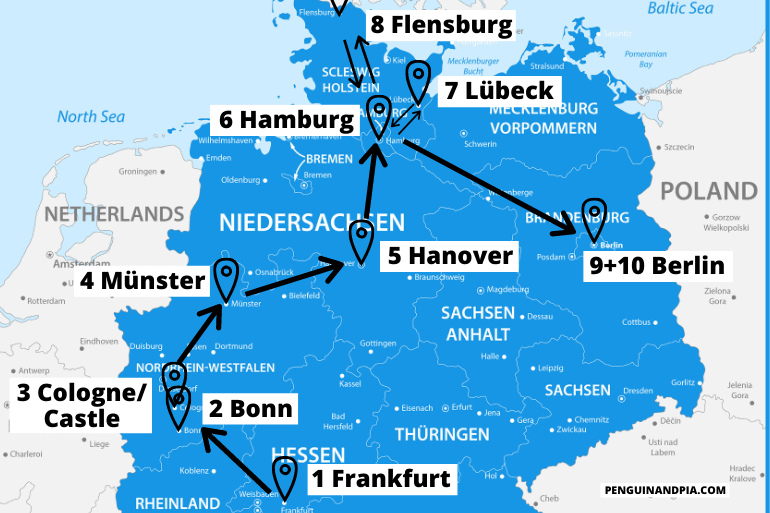
Day 1: Frankfurt Day 2: Bonn Day 3: Day Trip to Schloss Drachenburg / Cologne Day 4: Münster Day 5: Hanover Day 6: Hamburg Day 7: Day Trip to Lübeck Day 8: Day Trip to Flensburg Day 9+10: Berlin
Day 1: Frankfurt
Similar to some of the other itineraries mentioned in this article, we start this 10-day itinerary in Frankfurt. By now you should probably already know why – Frankfurt has the biggest airport of the country which should make it easier for people coming from overseas to get to Germany and start their adventure.
Furthermore, Frankfurt is quite centrally located so it is easy to get to many different cities from here. So even if you decide against following our itineraries step-by-step, Frankfurt would be a good starting point!
— Compare prices from rental car companies in Frankfurt here
Accommodation in Frankfurt : You’ll find plenty of places to stay in Frankfurt. You can check here for accommodations and hotels in Frankfurt .
One really popular hotel in Frankfurt is the Motel One Frankfurt-Römer . This Motel One is near the river and walking distance to lots of things in the city centre. If you are coming to Frankfurt with a car, Motel One has underground parking which can make life easy! They also have a nice breakfast.
A hotel option closer to the train station is Fleming’s Express Hotel Frankfurt . This hotel is just to the north of the main station which makes it a great option if you are arriving by train and have no car. It’s popular because it has a great breakfast and is good value for money.
Day 2: Bonn
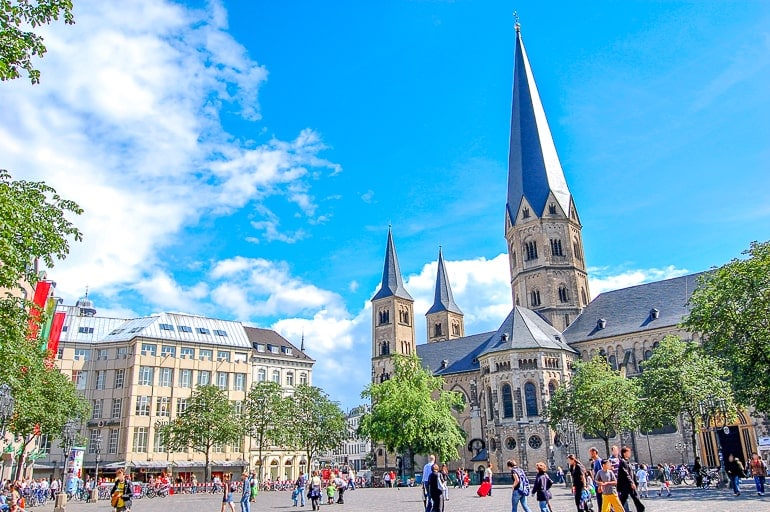
On the second day, you’ll head from Frankfurt to Bonn. As you might know, Bonn used to be the capital of the Federal Republic of Germany during the time that Germany was split into two countries. Later, the capital was relocated from Bonn to Berlin.
If you are interested in learning more about the history of Germany during your time in the country, then Bonn would be a good city to do that in. For example, you could visit the so-called “Haus der Geschichte” which is a museum about the history of the Federal Republic of Germany.
It won’t be difficult to get from Frankfurt to Bonn since the two cities are not too far apart. The journey will take approximately 1 hr 50 minutes by car and between 1 hr 20 minutes and 2 hrs if you take the train . Once again, we’d recommend that you book your train ticket in advance if possible.
Accommodation in Bonn: There are a number of accommodation options in Bonn which you can choose from – many are right in the city centre/old town. You can check here for accommodations and hotels in Bonn .
Keep in mind to book your accommodation for two nights for this itinerary. (You could also spend the following night in Cologne if you day tripped to there, though).
For a great hotel in the heart of the old town, check out BrauHotel Bonn . You can easily walk here from the central train station but they also have a and parking garage close by if you arrive by car. There’s also a craft beer bar on the ground floor!
Another option is the Hilton Bonn . This hotel offers you amazing views of the Rhine River. It’s a bit north of the city centre but still very much close to it. There is parking but it can be expensive so keep that in mind when you book.
Must-see Attractions in Bonn:
- Bonn Minster
- House of the History of the Federal Republic of Germany (Haus der Geschichte)
Day 3: Day Trip to Schloss Drachenburg / Cologne
On day three of this itinerary, you can choose to stay in Bonn, or go on one of two day trips: to Schloss Drachenburg (a castle not far from Bonn) or to Cologne which is also close by.
Schloss Drachenburg is actually a private villa/mansion that was built to look like a castle in the 19th century. Today, it is a popular attraction in the area.
From Bonn, you can either drive to Königswinter by car (and then leave your car at the car park) or take public transport to the Königswinter/Clemens-August-Straße station. You can find more information about that and opening hours etc. on the offical website .
If you are not a huge fan of castles, then you might opt for a day trip to Cologne instead. In this case, you might even decide to change your base and spend the night in Cologne instead of returning to Bonn at the end of the day. That is definitely an option that you can choose since there are lots of accommodation options in Cologne as well.
Getting to Cologne from Bonn will take you around 40 minutes by car (this can obviously depend on traffic) and only approx. 25 minutes by train . Just a quick warning: Trains can get very full if you are travelling during rush hour traffic – so try to avoid that if you don’t like being surrounded by lots of people in a small space.
Day 4: Münster
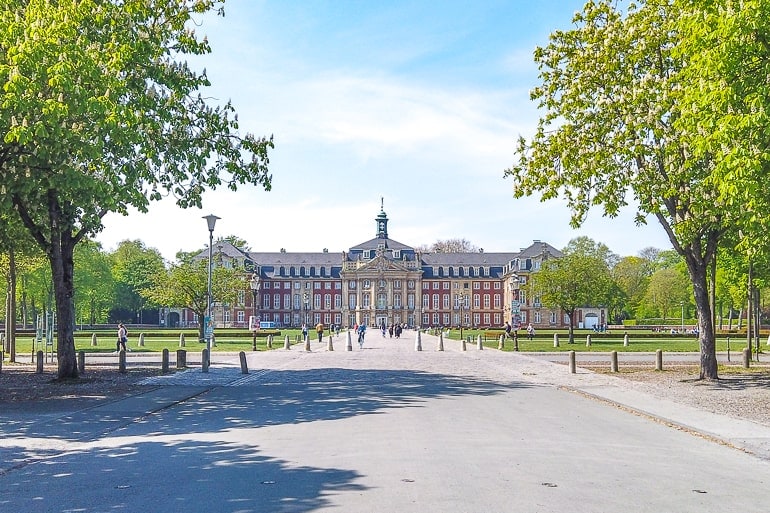
The next day you’ll head from Bonn – or Cologne – to Münster. Since Bonn and Cologne are so close, the journey wouldn’t really differ much from either city.
Münster is a smaller German city that we really enjoy. To be honest, it sometimes reminds Lisa of Copenhagen – mainly because of the many bikes that you can see all around the city. The University of Münster plays a big role in the city and the vibe – depending on which part of the city you are in – is noticeably younger.
One of the highlights of the city – for locals and visitors alike – is the lake Aasee which is located quite centrally. When the weather is nice, there are always people sitting on the grass enjoying the sun and maybe even out on the water (depending on the time of year). You can rent a small paddle boat to explore the lake from a unique perspective.
The journey from Bonn to Münster should take you slightly less than 2 hrs by car and between 2 hrs and slightly more than 3 hrs by train . If you want to save some money and are travelling with other people, then you should look into getting an “NRW Schönes Tag Ticket”. With this ticket, you wouldn’t be allowed to travel on ICE’s (the fast train), but the connections using only regional trains wouldn’t be much longer.
Accommodation in Münster: Münster might feel small but it’s actually pretty spread out and offers accommodations for all styles and budgets. You can check here for accommodations and hotels in Münster .
If you want a popular hotel option right in the centre, the H4 Hotel Münster is a short walk to the heart of the historic centre. It also has onsite parking for those travelling to Münster by car – but you can easily walk there from the train station in the south of the city centre.
Must-see Attractions in Münster:
- Münster Prinzipalmarkt
- Historic Town Hall
- Münster Cathedral
For a more detailed guide, have a look at our Things to do in Münster, Germany article .
Day 5: Hanover
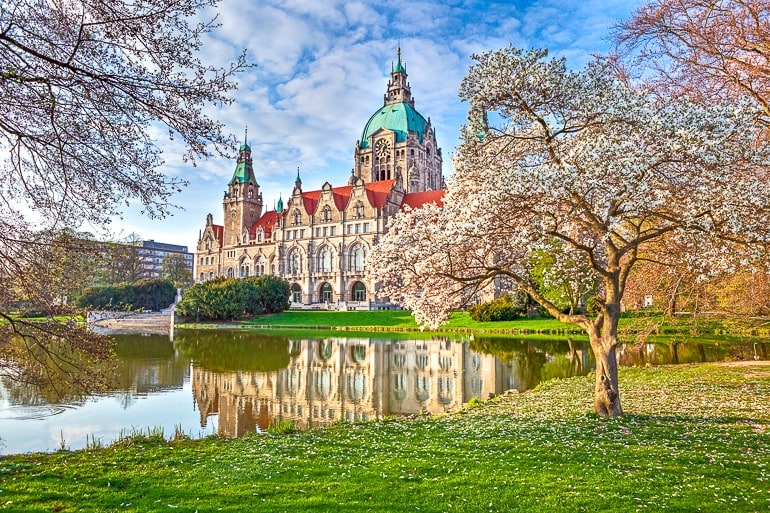
The following day you are travelling from Münster to Hanover. In German “Hannover” is actually written with two “n”, so don’t be surprised if you see it being written slightly differently.
Hanover is the biggest city and the capital of the German state called Lower Saxony. Compared to some other cities on this itinerary it is a less popular tourist destination. To be fair, even we haven’t spent that much time in Hanover yet. Hopefully we’ll be able to change that soon. However, that’s not to say that Hanover is not worth a visit.
Not only can you explore some beautiful gardens and interesting museums in the city, but it is also located pretty much halfway between Münster and Hamburg. That makes it a great stop to break up the journey and spent another day in a city that allows you to explore without too many other (international) tourists around.
By car , the journey from Münster to Hanover will take you around 2 hrs . If you choose to travel by train instead, it will take you approximately the same amount of time .
Accommodation in Hanover: Hanover is a larger city but the accommodation are still relatively packed together in and around the historic city centre. You can check here for accommodations and hotels in Hanover .
For a stay right in the city centre, check out the Hotel Loccumer Hof . This popular hotel is a very short walk from the central station which is perfect if you are arriving to Hanover by train. That said, they also have parking onsite so this hotel works well if you arrive by car!
For another hotel option, check out the Arthotel ANA Prestige am neuen Rathaus . This boutique hotel is directly across from the beautiful New Town Hall in the south end of the city centre by the greenspace and water! They also have a really nice breakfast and parking available.
Must-see Attractions in Hanover:
- New Town Hall
- Marktkirche
- Herrenhausen Gardens
Day 6: Hamburg
On day six of this 10-day itinerary you’re on your way to Hamburg. If you’ve read the details of any of the shorter itineraries in this article, you’ll know that we really like Hamburg.
The city offers modern areas, such as “HafenCity”, mixed with historic (e.g. “Speicherstadt”) and alternative areas (“Sternschanze”) . This makes exploring the city all the more interesting – there is truly something for everyone. During your time in the city, we’d also recommend that you climb the tower of the St. Michael’s Church. From up there, you get a beautiful view of most parts of the city.
The journey from Hanover to Hamburg won’t be long. Depending on the route you are taking (Highway A7 or A1), it’ll take between 1 hr 30 minutes and 2 hrs by car . If you opt for the train , you can expect the journey to take between 1 hr 15 minutes and 1 hr 30 minutes . This depends on the connection you choose.
Accommodation in Hamburg : Hamburg has many, many places to stay. You can check here for accommodations and hotels in Hamburg .
The Mövenpick Hotel Hamburg might be a good option if you have a car while you travel around Germany. This cool hotel is inside an old water tower which gives guests stunning views of the city around. There’s also parking onsite and it’s close to a transit stop for getting around the city.
Located not too far from the central train station, ARCOTEL Rubin Hamburg makes for a good hotel option if you don’t have a car. It’s located in St. Georg which is a lively area within walking distance of the city centre.
Those that need hostel for their stay in Hamburg might be happy with Generator Hamburg . It’s a popular hostel in the city and is close to the train station for easy getting around. If you’re unsure about where to stay, you can always check out our detailed guide on where to stay in Hamburg .
Once again, if you’d like to read our (very) short Hamburg guide, you can find our Things to do in Hamburg article here .
Day 7: Day Trip to Lübeck
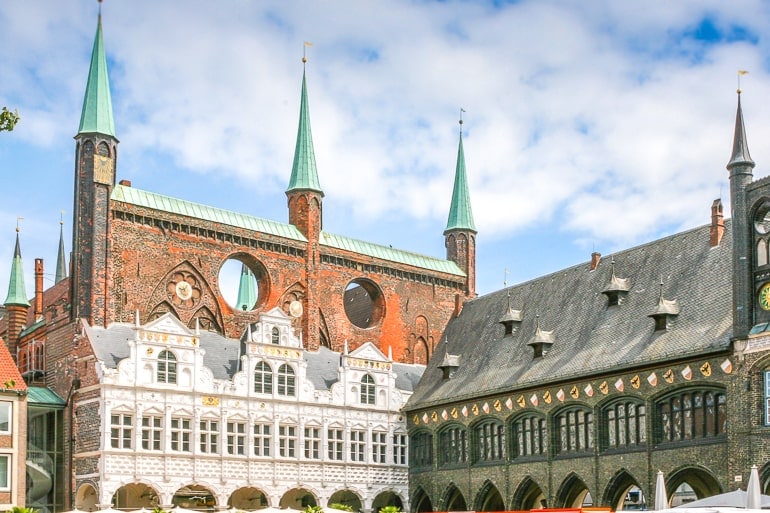
For the next couple of days, we decided to include some day trips from Hamburg. This allows you to stay in one accommodation for longer than just one night and gives you the option to see some more of Hamburg as well. If you don’t want to visit any other cities and want to spend more time in Hamburg instead, then feel free to skip one or both of the day trips mentioned.
Lübeck is the closer one of the two day trips mentioned from Hamburg. Within Germany the city is mainly known for its delicious “Lübecker Marzipan” (Lübeck Marzipan) – but of course there is much more to the city than just that. One of the highlights is the Holsentor, a red-brick city gate dating back to the 15th century.
The journey from Hamburg to Lübeck will take you slightly over 1 hr by car and just around 45 minutes by train . In our opinion, that’s great for a day trip since it gives you lots of time to actually see the city instead of spending a lot of time in the car/on the train.
Must-see Attractions in Lübeck:
- Marienkirche
- Heilig-Geist-Hospital
Day 8: Day Trip to Flensburg
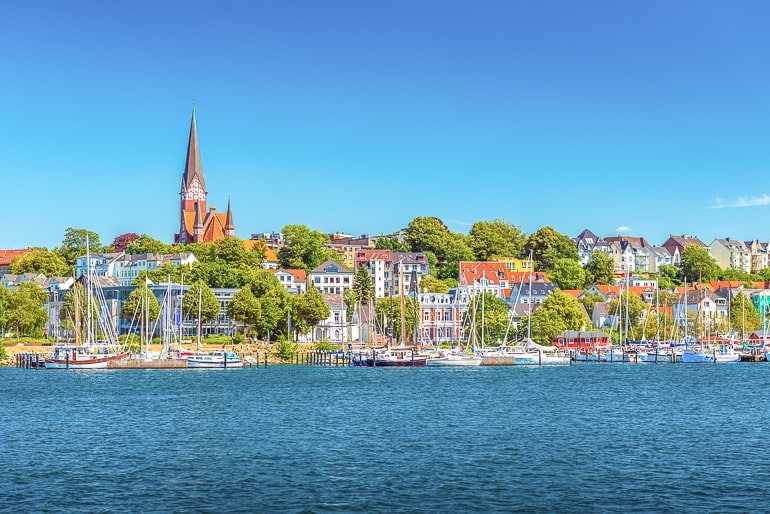
For the following day, we have another day trip option for you. The journey to Flensburg is slightly longer than to Lübeck – but it would be worth it. Flensburg is a smaller German city in the north of Germany, very close to the Danish border.
Since it is located close to the water, shipping plays an important role in the city to this day. If you’re interested in learning more about that, then the Maritime Museum would be a good place for you to visit.
Another thing we would recommend is a walk along the Rote Straße. Here you’ll find different “Hinterhöfe” (similar to backyards) with cute cafes and small shops.
Getting to Flensburg from Hamburg should take slightly less than 2 hrs by car and the same amount of time by train . As already mentioned, it would be a longer journey than to Lübeck, but if you want to experience a smaller, maritime city, the trip would be worth it!
Must-see Attractions in Flensburg:
- Historischer Hafen (Historic Harbour)
- Flensburger Schifffahrtmuseum (Maritime museum)
- Museumsberg Flensburg
Day 9+10: Berlin
On the second to last day of this itinerary, you’ll head from Hamburg to Berlin where your journey ends. This allows you to spend two days in the German capital. Since there is so much to do in Berlin, we’d recommend that you do some research beforehand to narrow down which attractions you’d like to visit.
If you’ve never been to Berlin before classics like the Brandeburg Gate and the Reichstag would be a good place to start. We’ve written a few different articles about Berlin – one about classic attractions (link below). Maybe these will be a good starting point to gather some more information!
The drive from Hamburg to Berlin will be one of the longest mentioned as part of this itinerary – so you should keep that in mind. It’ll take approximately 3 hrs 20 minutes by car (with traffic it could be longer), but just 1 hr 50 minutes by train .
It’s a popular train route since it connects the two biggest German cities so trains run frequently throughout the day. Once again, we’d recommend to book your train ticket in advance to get one of the discount tickets and save some money.
Accommodation in Berlin : As the capital city, there are lots of accommodation options for Berlin. You can check here for accommodations and hotels in Berlin .
Those travelling to Berlin with a car should look into the Park Plaza Wallstreet Berlin Mitte for a hotel in the city centre with free street parking available. There’s always paid parking for a reasonable fee if those are full and you’ll be close to top attractions.
The NH Collection Berlin Mitte am Checkpoint Charlie is a popular hotel option for those coming to Berlin by train since it’s close to attractions in the city centre and you can get there very easily with the metro.
Finally, if you need a hostel/hotel, check out PLUS Berlin . This is where Eric stayed a few years back and really enjoyed it. You’ll be close to the East Side Gallery – the part of the Berlin wall with the artwork on it. It’s also easy to get in and out of the city centre from here.
Also feel free to have a look at our guide on Berlin Attractions and tips for a day in Berlin .
Germany Itinerary 10 Days – South
This 10 day Germany itinerary begins and ends in Frankfurt – so it’s pretty much a small loop through the southern part of the country. If you want to be closer to the mountains (for part of the trip at least) instead of the sea, then this itinerary might be better suited for you than the other 10 day version.
For this itinerary, the total driving time would be slightly over 17 hours with a total distance of approx. 1330 kilometres. This includes the day trips to Neuschwanstein Castle, Garmisch-Partenkirchen, and Tübingen. So depending on if/how you modify the itinerary, these estimates could differ.
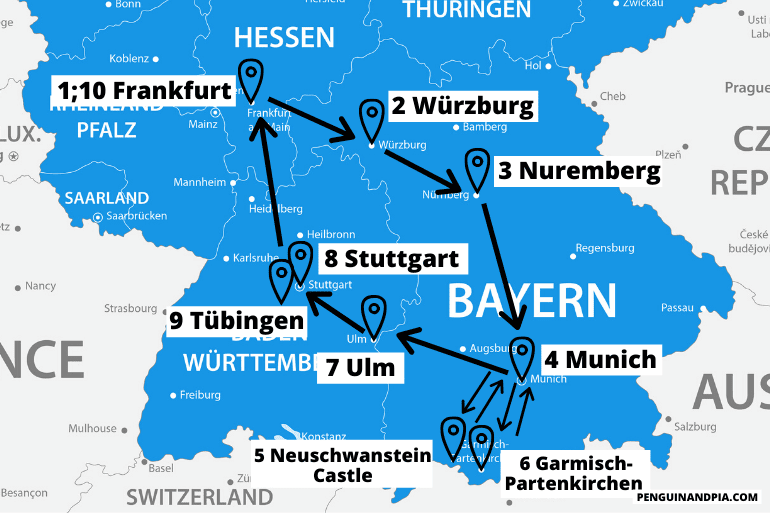
Day 1: Frankfurt Day 2: Würzburg Day 3: Nuremberg Day 4: Munich Day 5: Day Trip to Neuschwanstein Castle Day 6: Day Trip to Garmisch-Partenkirchen Day 7: Ulm Day 8: Stuttgart Day 9: Day Trip to Tübingen Day 10: Frankfurt
Similar to the northern version of this itinerary for 10 days, you begin your adventure in Frankfurt. During your day in the city, you shouldn’t forget to visit the Römerberg with the beautiful half-timbered houses. If you want to get a nice few of the city from above, then you should look into visiting the Main Tower as well.
Frankfurt is also a great place to pick up your rental car – if you decide to complete this itinerary by car instead of using public transport. You can either pick up a car at the airport or at different spots in the city centre. This obviously also depends on the rental company you choose.
Accommodation in Frankfurt: Frankfurt is full of accommodation options – from the city centre to the airport. You can check here for accommodations and hotels in Frankfurt .
For a hotel in the heart of the city, check out the Motel One Frankfurt-Römer . Complete with underground parking, good breakfast, and a top location in the centre and close to the river, this hotel is a decent option if you are travelling around with a car.
For those not travelling with a car (and taking the trains around Germany), check out Fleming’s Express Hotel Frankfurt . This nice looking hotel is really popular for its breakfast, price, and the fact that it’s steps from the central train station.
Day 2: Würzburg
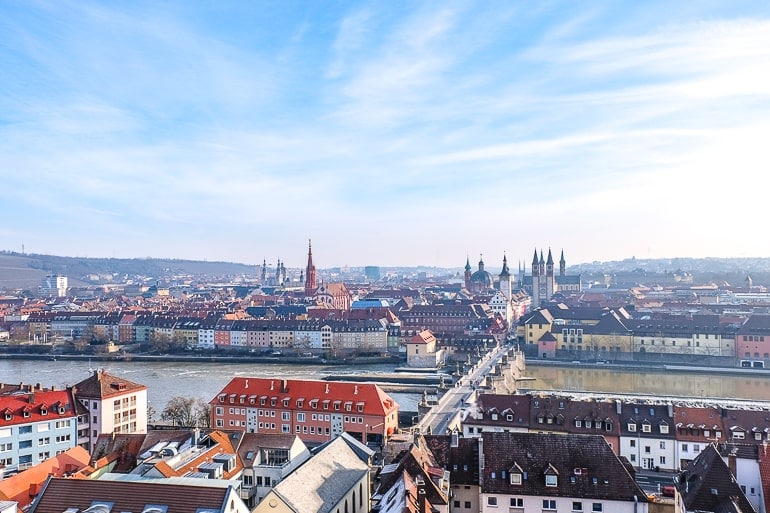
On day two of this itinerary, you’ll be on your way to Würzburg, a small German city that we’re always happy to return to. Similar to Stuttgart, Würzburg is located in a region that is known for its wine.
As such, it comes as no surprise that a highlight in Würzburg is to drink a glass of (white) wine on the Old Bridge across the Main river. We’ve done that multiple times and would especially recommend it during the evening when it gets dark.
Another thing you shouldn’t miss in Würzburg is the short walk up the hill to Marienberg Fortress. Up there you can not only explore the old fortress, but you also get a beautiful view of the old town and other parts of the city.
We actually wrote a whole guide about Würzburg (link below) where we not only talk about things to do but also mention some great cafes and restaurants!
The drive from Frankfurt to Würzburg will be a short one. It should only take you around 1 h 20 minutes by car and between 1 h 07 minutes and 1 hr 50 minutes by train depending on the type of train you’re taking (ICE vs. regional train).
Accommodation in Würzburg: Würzburg isn’t a huge city so you’ll find a number of places to stay packed together in the city centre and a number of other hotels and guesthouses around. You can check here for accommodations and hotels in Würzburg .
On a recent trip, we stayed at the Best Western Hotel Würzburg-Süd . It’s a little south of the city centre but the tram stop is right outside the hotel so you’re into the historic city centre in minutes. There is also an onsite parking lot if you’re arriving to Würzburg by car. We booked this one last minute but we would stay again.
If you want to stay a little more central, then you can check out Hotel Strauss . With a location close to the river, the train station, and the city centre – it’s a great option fo those arriving by train.
We also once stayed at Hostel Babelfish for a budget accommodation and it was honestly not too bad, either. It’s right across from the train station for easy access in and out of the city.
Must-see Attractions in Würzburg:
- Marienberg Fortress
- Würzburg Residence
If you want more tips for visiting Würzburg, have a look at our detailed Things to do in Würzburg Guide (+ insider tips) .
The next day you’ll be on your way to Nuremberg, which is another city in Bavaria that we really like. In German, Nuremberg is actually written/called “Nürnberg” – just an FYI, so you’re not confused when you see this written somewhere.
As we have already mentioned in the description of one of the shorter itineraries, there is a lot of history to be found in the city. Not only can you explore an old castle in the middle of the city, you can also learn a lot about Germany’s dark history if you’re interested.
Getting from Würzburg to Nuremberg will take approx. 1 hr 20 minutes by car and between 53 minutes (ICE) and 1 hr 13 minutes (regional) by train . If you’re travelling with more people and decide to just take a regional train, look into getting a “Bayernticket” as that could save you some money.
Accommodation in Nuremberg : Nuremberg is a larger and well-travelled city in Germany so you will have no problem finding a place to stay! You can check here for accommodations and hotels in Nuremberg .
We ended up staying in the very popular Five Reasons Hotel and Hostel and we enjoyed our stay. The room was bright with new furnishings. It’s also located just inside the old city walls so we were close to the metro, a short walk to central train station, and also close to the heart of the old town!
Very nearby was the Sheraton Carlton Nuremberg – we had friends stay there. They really liked this hotel which had a swimming pool with city views and other great perks. If you are arriving to Nuremberg by car, there’s a parking lot across the street from the hotel as well as street parking around. The train station is very close as well so it’s a great location overall.
- Documentation Center Nazi Party Rally Grounds
Day 4: Munich
On day four of this Germany trip, you’ll be on your way to Munich. As you might know Munich is the capital of the German state called Bavaria and there are lots of things to do in this city.
That’s why you’ll spend three nights in Munich. This way you can explore the city in more detail if you want or go on a couple of day trips from Munich to see other popular attractions as well. It’s really up to you.
The journey from Nuremberg to Munich won’t be overly long and it’s a route Lisa has driven many times. It’ll take you around 2 hrs by car (of course traffic depending) and between 1-3 hrs by train.
Since this is a popular train route, there are lots of different connections of varying length – some are quick and others are slower trains with more stops. Since that’s the case, we’d recommend that you plan in advance and try to catch a better connection to avoid an unnecessarily long train ride!
Accommodation in Munich: Since Munich is such a popular and large city, there are plenty of accommodation options for you to choose from. You can check here for accommodations and hotels in Munich . Just remember to book your accommodation for three nights if you are following this itinerary!
We stayed at the H2 Hotel München Olympiapark which is a very popular hotel because of the price and the value. It was a prefect stay. The breakfast was amazing, they had parking, and the location was great – only a quick metro to the heart of the city centre. You also have the Olympic Park and BMW Museum as top attractions nearby!
If you’re itching to stay right in the heart of the action in Munich, check out the Platzl Hotel Superior . This is a hotel around the corner from Marienplatz in the old town with the famous beer hall Hofbräuhaus just steps away. The central train station is also walkable from here.
Of course, you can learn all about the best areas to stay in more detail with our Munich accommodation and neighbourhood guide .
Learn more about Munich with our one day in Munich post!
Day 5: Day Trip to Neuschwanstein Castle
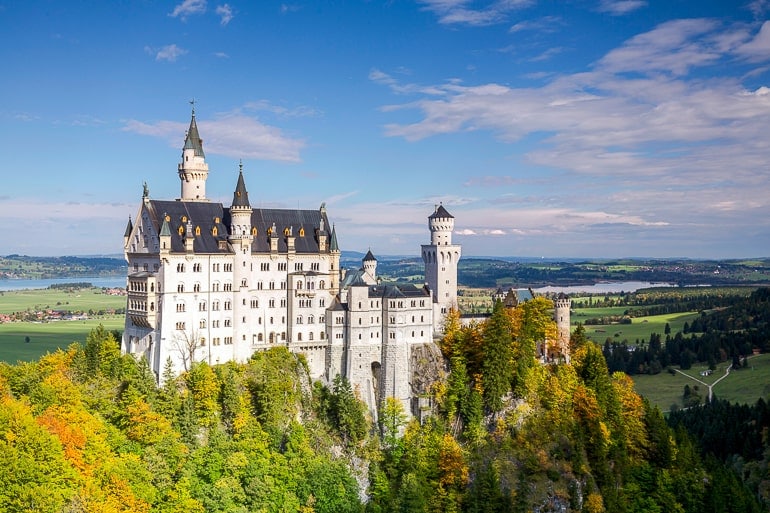
Neuschwanstein Castle probably doesn’t need a lot of introduction – it is arguably one of the most popular day trips from Munich. If you want to see this fairy-tale castle with your own eyes, then this day trip might be for you.
However, it is such a popular attraction that depending on the time of year it can get incredibly crowded. So if you are planning this itinerary for the middle of summer, we’d honestly recommend that you think twice about whether you really want to do this day trip. A second day in Munich wouldn’t be so bad either, would it?
If you are set on visiting Neuschwanstein Castle, then have a look at our Day Trips from Munich Guide . In that article – under the Neuschwanstein Castle section – we talk about all the different ways you can get to the castle.
In case you don’t want to stress too much about logistics and are not travelling with a rental car, you could always look into a day tour that brings you to Neuschwanstein Castle and then back to Munich. Here are some examples:
- Neuschwanstein and Linderhof Palace – A very popular tour to check out two castles in one day!
- Just Neuschwanstein Castle – Grab your live guide and check out the classic castle you came to see!
- Neuschwanstein Castle and Füssen – Explore the surrounding area on this day trip + see that great castle!
Day 6: Day Trip to Garmisch-Partenkirchen
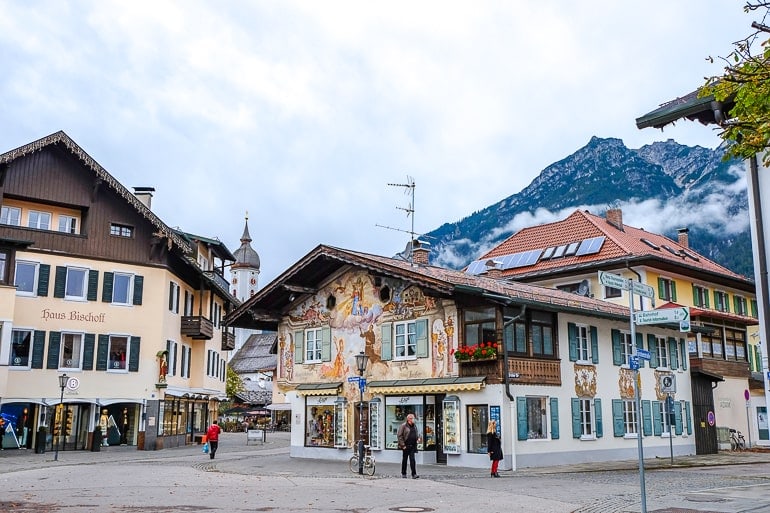
Another popular day trip from Munich – and the one we would recommend for Day 6 of this itinerary – is a trip to Garmisch-Partenkirchen in the south of Bavaria, close to the Austrian border.
We have been to Garmisch-Partenkirchen recently and really enjoyed our day there. However, that was during the shoulder season, so we can’t really say much about how busy it gets in the summer or during the ski-season.
There are a few good reasons for visiting Garmisch-Partenkirchen. The obvious one is that the town is super close to the mountains and it is very easy to reach the “Zugspitze” (Germany’s highest mountain) from here.
Of course, you don’t have to go that high up – there are also lots of other mountains and great hiking trails in the area if you’re looking for a day in nature.
Other reasons why people come to Garmisch-Partenkirchen is to visit the Partnach Gorge which is quite beautiful and/or the old town where you can admire the decorative paintings found on many houses.
It’s actually quite easy to get from Munich to Garmisch-Partenkirchen. By car , it should take you around 1 hr 10 minutes and by train the journey would be approx. 1 hr 22 minutes . It’s actually a nice drive/train ride since you’ll get some great views of the mountains as you get closer to your destination.
Must-see Attractions in/close to Garmisch-Partenkirchen:
- Partnach Gorge
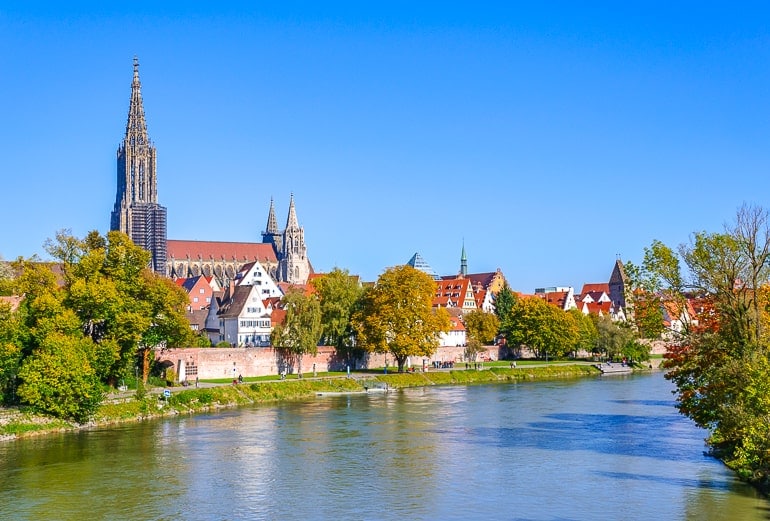
The following day you’ll travel from Munich to Ulm, a small city in the German state of Baden-Württemberg. It is actually located right by the border with Bavaria – “Neu Ulm” in fact is a city on the Bavarian side. When you’re there, it sometimes feels like it is just one bigger city. For you as a visitor, this doesn’t really matter – just an interesting side note.
Ulm is mainly known for having the church with the tallest steeple in the world – so that is something you shouldn’t miss during your visit. Other than that, we’d also recommend that you check out the Fishermen’s Quarter where you can find some beautiful, half-timbered houses.
Getting from Munich to Ulm won’t take you long. The journey will take approx. 1 hr 40 minutes by car and between 1 hr 19 minutes and 2 hrs by train. Once again, this depends on which type of train connection you choose (ICE vs. regional trains).
Accommodation in Ulm: It’s best to stay in the centre of Ulm since it’s not huge and the attractions can mostly be found there. You can check here for accommodations and hotels in Ulm .
For a boutique hotel option right in the city centre, check out Boutique 005 Ulm City . This hotel is super walkable to the train station if you are arriving by train but also offers an option for parking. It’s location makes it really close to all the top attractions in the city.
For a stay closer to the river, you can check out the Hotel am Rathaus – Hotel Reblaus . With onsite parking available and a really good breakfast, this more “authentic” hotel is an experience not to be missed in Ulm.
Must-see Attractions in Ulm:
- Ulmer Münster
- Fishermen’s Quarter
Day 8: Stuttgart
From Ulm, you’ll head to Stuttgart on the next day. Stuttgart is a city that we have mentioned a few times in this article already. If you’ve read some of the other itineraries, you’ll know that Stuttgart is known for both cars and wine.
Of course, there’s more to see in the city than that. If you’re interested in architecture, you might enjoy visiting the New Palace at the “Schlossplatz” and if you’re into art, the Staatsgalerie (an art museum) might be for you.
Getting to Stuttgart from Ulm will only take slightly over 1 hr by car and approx. the same amount of time by train . There are slower trains – called RB instead of RE which stands for “Regional Express” – that take longer than that. However, if you plan ahead, you shouldn’t have a problem catching an RE or ICE Train since they run frequently throughout the day.
Accommodation in Stuttgart: Since there are a number of places to stay in, you can check here for accommodations and hotels in Stuttgart .
Those with a car can check out the Abalon Hotel ideal because it has an underground parking garage while those travelling to Stuttgart by train can check out the Pension am Heusteig since it’s easy to get to walking or with the metro.
Day 9: Day Trip to Tübingen
On day 9 of this itinerary, you have the choice between either spending a second day in Stuttgart or taking a day trip to Tübingen, a university town not far away.
Tübingen is a popular day trip from Stuttgart and is mainly known across the country for its old university. In fact, some of Lisa’s friends have studied there. When in town, you shouldn’t forget to visit the market square with its 15th century town hall. Another popular attractions is the Hohentübingen Castle on the hill which nowadays is home to a museum.
It won’t take you long at all to get to Tübingen from Stuttgart. That makes it great for a (half-)day trip. The journey should only take around 42 minutes by car and between 43 minutes and 1 hr 30 minutes by public transport – depending on the connection you choose.
Must-see Attractions in Tübingen:
- Hohentübingen Castle
- Market Square with Town Hall
- Hölderlinturm
Day 10: Frankfurt
On the last day, you’ll make your way back to Frankfurt. This is where your itinerary ends since it will hopefully be easy for you to get back home from here.
The journey from Stuttgart back to Frankfurt will probably be the longest one for this trip – but it’s still easily doable. It should take you approx. 2 hrs 25 minutes by car and between 1 hr 17 minutes and 3 hrs 30 minutes by train. Once again, this is dependent on the connection you choose (ICE vs. regional trains).
Accommodation in Frankfurt: Since you’re back in Frankfurt, we already went over accommodations in Day 1 of this same itinerary. That said, you can check here for accommodations and hotels in Frankfurt and specifically check out the Motel One Frankfurt-Römer for a central hotel with parking.
Germany Itinerary 14 Days
This Germany itinerary is the longest one that we have for you – for now. If anyone is interested in a 21 day version, please let us know!
The distance you’d cover with this 14 day itinerary would be around 1960 kilometres . The driving time would be approx. 22.5 hours – but of course, this varies depending on traffic and the exact route you decide to take.
As you’ll see below, sometimes the driving time between two cities is longer than 3 hours. So, while this itinerary is totally doable in two weeks – if you wanted to slow down the pace a bit, you could just as easily spend more time in some of the cities and complete the itinerary in more days.
Since you have probably already read about most of these places in some of the itineraries above, we’ll try to keep the descriptions short and not get too repetitive.
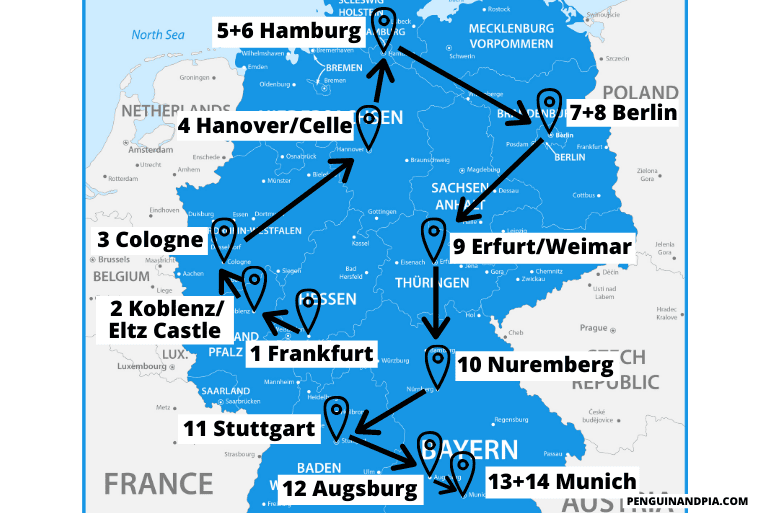
Our version here is written as an “incomplete route” from Frankfurt to Munich. However, as with most of our itineraries, you are welcome to reverse the direction if that works better for you and/or start and end in the same city. So, to see a big part of the country, your 14 day Germany itinerary could look something like this:
Day 1: Frankfurt Day 2: Koblenz / Eltz Castle Day 3: Cologne Day 4: Hanover or Celle Day 5+6: Hamburg Day 7+8: Berlin Day 9: Erfurt or Weimar Day 10: Nuremberg Day 11: Stuttgart Day 12: Augsburg Day 13+14: Munich
Once again we begin this itinerary in Frankfurt since it is an easy city to get to. As we have mentioned before, there are a few things to see in the city so you can start exploring on day one!
Frankfurt is also a great city to pick up a rental car. Since many international (business) travellers fly into Frankfurt, there should be many cars available with automatic transmissions. In smaller German towns you’ll find that this is not always the case.
Accommodation in Frankfurt: If you are making a stop in Frankfurt, you can check here for accommodations and hotels in Frankfurt .
As for accommodation options, the Motel One Frankfurt-Römer has parking available and is located in the city centre close to the Main River. That’s important if you have a car with you but it’s also walkable to the train station, so you know.
Another great hotel option that is even closer to the train station is Fleming’s Express Hotel Frankfurt . This hotel is known for its prime location to the north of the station, its tasty breakfast, nice decor, and fair price. This is definitely a popular place you should at least look into if you are travelling by train around Germany.
Day 2: Koblenz / Eltz Castle
On day two of this itinerary, you’ll be on your way to Koblenz, a small German city on the Rhine river. You can either explore the city or use it as a base to visit one of the many castles close by.
Our suggestion would be a visit to Eltz Castle which is a beautiful medieval castle surrounded by a forest. Please keep in mind that the castle is not open year round. You can check opening hours here .
You could also visit Eltz Castle as a day trip from Frankfurt but then you’d have to return to Frankfurt at the end of the day. This wouldn’t make much sense unless you want to spend some more time in Frankfurt anyway, as Cologne (your next destination) is closer to Koblenz and Eltz Castle than Frankfurt.
The drive from Frankfurt to Koblenz should take around 1 hr 30 minutes by car . If you want to take the train , the journey would take between 1 hr 30 minutes and 2 hrs 15 minutes . From Koblenz, it is only about a 30 minute drive to Eltz Castle.
Accommodation in Koblenz: Since Koblenz isn’t that large, you should have no problem finding and choosing an accommodation that works for you. You can check here for accommodations and hotels in Koblenz .
If you want a popular option right in the heart of the city centre, you should see the Sander Hotel . This hotel is located within walking distance to the rivers as well as restaurants and shops in the centre. If you travel by car to Koblenz, they have onsite parking which is handy. That said, you can also easily walk from the hotel to the train station in minutes.
Day 3: Cologne
The next stop on your 14 day Germany itinerary is Cologne, a city we have mentioned already in some of the previous itineraries. As you might know, the highlight of the city is the Cologne cathedral which is quite an impressive sight. As the city is located on the Rhine river, a boat tour might also be a great activity depending on the time of year you are visiting.
Getting to Cologne from Koblenz takes around 1 hr 15 minutes by car and between 50 minutes and 1 hr 15 minutes by train . The train tracks follow the Rhine river for part of the journey which allows for some beautiful views!
Accommodation in Cologne : There are lots of great places to stay in Cologne. You can check here for accommodations and hotels in Cologne .
We recently stayed at the Lindner Hotel City Plaza which was great value for money. The breakfast buffet is incredible and it’s an easy, short walk into the city centre near the Cathedral. It also has parking available for those with a car.
If you want to stay a little closer to the river and the Old Town, check out the CityClass Hotel Residence am Dom . With many things around to keep you busy – like attractions, food, and/or drinks – you’re just a short walk to the central train station if you stay here.
For those looking for a hostel, Cologne Downtown Hostel was a great stay for Eric a number of years ago. It’s really popular, in a great location, and has a nice rooftop balcony to enjoy.
Day 4: Hanover or Celle
Day 4 of this itinerary will take you to either Hanover or Celle depending on your preference. Celle is a noticeably smaller city/town than Hanover and the two places are only a few minutes apart.
Getting from Cologne to Hanover will take approximately 3 hrs 10 minutes by car and between 2 hrs 40 minutes and 3 hrs 5 minutes by train .
Accommodation in Hanover: Since Hanover is a well-travelled city for people moving around Germany, there are a number of accommodation options in and around the city centre. You can check here for accommodations and hotels in Hanover .
To stay very close to the central train station in the city centre, you should see the Hotel Loccumer Hof . The location makes it great if you are travelling by train and on foot. They also have onsite parking if you are arriving to Hanover with a car!
To the south of this hotel, the Arthotel ANA Prestige am neuen Rathaus is an option right across from the New Town Hall. This hotel has a beautiful, light style and is also close to the water/parks. Complete with breakfast and onsite parking, you can’t go wrong here!
If you want to spend a night in a smaller German city instead, then Celle is a good option as it is not far from Hanover. That will make it easy to reach the next stop on your itinerary without too much of a detour. The journey from Cologne to Celle would be slightly longer and take around 3 hrs 30 minutes by car and 3 hrs 19 minutes by train .
Accommodation in Celle: Celle isn’t that big at all – so there are only a handful of places to stay. That said, there are still some great options. You can check here for accommodations and hotels in Celle .
Of note, check out Hotel Borchers . This hotel – one of only a handful located in the heart of “city centre” is a top pick with a tasty breakfast and an underground car park. You can also walk there from the Celle train station which is located not too far across town.
Must-see Attractions in Celle:
- Celle Castle
- Bomann Museum
- French Garden
Day 5+6: Hamburg
An itinerary across a large part of the country wouldn’t really feel complete without including Hamburg. Since there is quite a bit to see in this hanseatic city, you’ll spend two nights in the city to give you more time to explore.
Getting from Hanover to Hamburg will take you approx. 1 hr 45 minutes by car and between 1 hr 15 minutes and 2 hrs 30 minutes by train . As mentioned before, this varies depending on the type of train connection you choose.
The journey from Celle to Hamburg will be approximately 15 minutes shorter at 1 hr 30 minutes by car . If you opt for the train, you can expect travel times between 1 hr 10 minutes and 2 hrs .
Accommodation in Hamburg : Since Hamburg is a well-travelled city, it makes sense that there are loads of places and areas to stay in. You can check here for accommodations and hotels in Hamburg .
The Mövenpick Hotel Hamburg might work for those with a car since they have onsite parking. This old water tower is a different hotel than you might be used to but it’s a great experience overall.
Something closer to the central station to get to on foot would be the ARCOTEL Rubin Hamburg which is located in St. Georg. This is an area with shops and restaurants and is very much part of the city centre.
Those looking for a budget accommodation can check out Generator Hamburg which is a popular hostel close to the train station. If you’re ever unsure or want more advice, we have a detailed guide on where to stay in Hamburg .
Day 7+8: Berlin
Of course, we couldn’t forget to include a stop in the capital of the country when planning a longer trip through Germany. Since there is so much to do and see in Berlin you will spend two nights there.
This will also give you some more time to recover from all the driving you have done so far on this journey. Getting from Hamburg to Berlin takes approximately 3 hrs 20 minutes by car (obviously traffic depending) and just about 1 hr 50 minutes by train .
Accommodation in Berlin : There are lots of hotel options in Berlin. You can check here for accommodations and hotels in Berlin .
The Park Plaza Wallstreet Berlin Mitte is a good option in the city centre for those coming to Berlin with a car while the NH Collection Berlin Mitte am Checkpoint Charlie is located right at the attraction “Checkpoint Charlie” in the city centre.
A great option for a hostel/hotel where Eric stayed a few years back is PLUS Berlin . You can find it near the famous East Side Gallery which is a very popular attraction to check out.
As mentioned a few times now, we also have more articles on t hings to see in Berlin and a one day Berlin itinerary .
Day 9: Erfurt or Weimar
For the following day you have the choice between Erfurt or Weimar as your next destination. Both are small cities in the state of Thuringia with Weimar being smaller than Erfurt. If you know anything about Martin Luther, an important figure in the Protestant reformation, then you might have heard of one or both of these places before.
If you’re looking for a place with a beautiful old town and some nice churches as well as buildings for you to explore, then we’d really recommend Erfurt. We had a great time during the days we spent there. The city also has some really nice, cozy cafes if that is something that you care about.
Getting to Erfurt from Berlin will take a while – but it is a great stop on the way to the south of Germany. You can expect the journey to take approx. 3 hrs 40 minutes by car and just around 1 hr 50 minutes by ICE (fast train) .
Accommodation in Erfurt: With Erfurt being a smaller city with a smaller central area to explore, finding a place to stay isn’t too difficult. You can check here for hotels and accommodations in Erfurt .
When we visited Erfurt, we booked the Gästehaus in der Gotthardtstraße . This was a simple guesthouse with a nice host and cozy rooms located just a short walk north of the Krämerbrücke. There’s also a small parking lot onsite if you’re coming to Erfurt with a car.
For a stay that is more central, check out Hotel Krämerbrücke Erfurt . It’s located basically right beside the Krämerbrücke making it a great option if you are travelling by train and you’re on foot.
Once again, if you want to learn some more about Erfurt before you visit the city, check out our detailed Erfurt Guide here .
If you instead preferred to learn some more about the well-known German writers Goethe and Schiller – or about Germany’s dark past – then you should plan to visit Weimar instead.
Two of the highlights there are Goethe’s and Schiller’s House – now turned into museums. Close to Weimar there’s also the Buchenwald Memorial which was a former Nazi concentration camp. This was the first KZ-Memorial Lisa ever visited. It was a somber experience, but also an important one in regards to understanding more about Germany’s past.
The journey from Berlin to Weimar will be slightly shorter than to Erfurt – at least by car. It’ll take approx. 3 hrs 15 minutes by car and around 2 hrs 20 minutes by train .
Accommodation in Weimar : There are a handful of places to stay in Weimar since it’s a smaller city – but you still have good options. You can check here for accommodations in Weimar .
In particular, check out Amalienhof Hotel und Apartment . This classic and very popular hotel is just south of the heart of the city centre. It features parking onsite and an excellent breakfast. It’s also not too far to walk to the train station if you are arriving on foot.
Must-see Attractions in/close to Weimar:
- Buchenwald Memorial
- Goethe’s House
- Schiller’s House
Day 10: Nuremberg
On day 10 of your itinerary, you’ll drive – or take the train – from Erfurt/Weimar to Nuremberg. This Franconian city has also been mentioned in some of the shorter itineraries.
The journey from Erfurt to Nuremberg will take approx. 2 hrs 40 minutes by car in a southern direction. The drive from Weimar to Nuremberg will just be a couple minutes longer.
If you decide to take the train, the journey would take between 1.5 hrs and 2 hrs from Weimar and between 1 hr 10 minutes and 1 hr 30 minutes from Erfurt .
Accommodation in Nuremberg : Nuremberg is a city with loads of history and attractions so it’s very popular. As such, you will find hotels and accommodations all over the city – from the old town to the surrounding areas. You can check here for accommodations and hotels in Nuremberg .
We booked a stay at Five Reasons Hotel and Hostel and we would recommend it. You can find the place inside the massive old city walls so the location was great – walkable to the central train station and also to go find top attractions.
On the same trip, friends of our stayed at the Sheraton Carlton Nuremberg . It was close to where we stayed and they really enjoyed it. There’s this great pool on an upper floor with city views as well as a parking lot across the street if you travel to Nuremberg by car. The train station is close as is the old town by walking so it’s great option overall, too.
Day 11: Stuttgart
The following day you will be on your way from Nuremberg to Stuttgart – once again, a city we have mentioned multiple times now during this article. From Nuremberg, it’ll take you around 2 hrs 15 minutes by car and between 2 hrs 10 minutes and 2 hrs 30 minutes by train to get to Stuttgart.
As we’ve mentioned before, if you are driving and have the time, you could take a small detour and stop in Rothenburg ob der Tauber for a stroll through its beautiful old town. We’ll leave that up to you!
Accommodation in Stuttgart: You can check here for accommodations and hotels in Stuttgart .
The Abalon Hotel ideal has parking for those with a car while the Pension am Heusteig is a guesthouse close by but is easy to get to by the metro system if you arrive by train to central station and you are walking.
Day 12: Augsburg
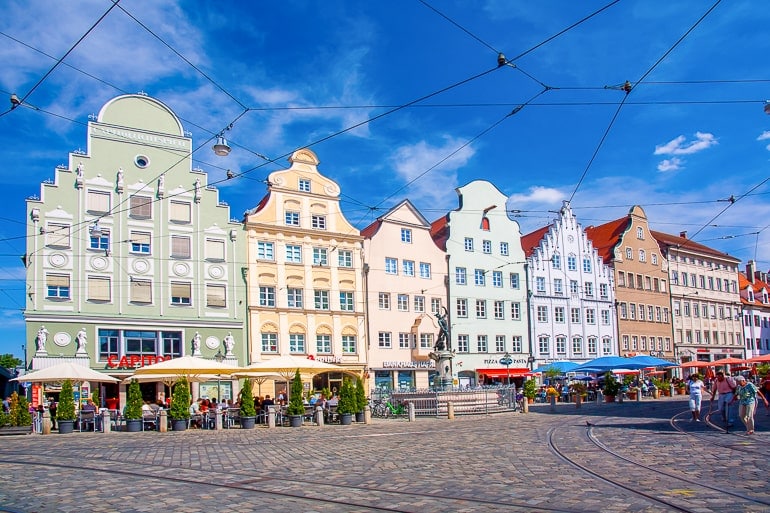
On day 12 you’ll be on your way from Stuttgart to Augsburg, a small city in Bavaria and one of Germany’s oldest cities. Around Germany, most people have heard of Augsburg because of its “Fuggerei” – a historic social housing complex where rent has increased very slowly over the centuries. It’s certainly worth a visit!
It’ll take you around 2 hrs by car to get from Stuttgart to Augsburg. If you opt for the train , then you can expect the journey to take approx. 1 hr 40 minutes .
Accommodation in Augsburg: In Augsburg, you will find a number of places to stay around the city centre. You can check here for accommodations and hotels in Augsburg .
For a reliable stay, check out Hotel Augusta . This popular hotel – located right in the city centre – features breakfast and has parking available if you are travelling to Augsburg by car.
The nice thing about Augsburg is that because it’s a smaller city, you can easily walk to the hotel from the train station if you are arriving by train.
You might also check out City Hotel Ost am Kö which is another hotel in the heart of the centre walkable to the station. It also has breakfast and parking garage right nearby.
Must-see Attractions in Augsburg:
- Augsburg Cathedral
- Perlach Tower
Day 13+14: Munich
On your second to last day of this itinerary you will drive from Augsburg to Munich. That’s the last stop on your two week Germany adventure. In Munich, there is more than enough to see to spend two days in the city.
Munich also has an airport with good international connections in case you’re coming from overseas and need to take a plane to get back home. If that’s not the case, we’d encourage you to see whether the train would be an alternative to get you back home as well.
The journey from Augsburg to Munich should take just less than 1 hr by car and between 30 and 48 minutes by train. So it’s certainly one of the shortest transitions mentioned in this article.
Accommodation in Munich: If you’re exploring Munich while in Germany, there is no shortage of places to stay and areas to check out. You can check here for accommodations and hotels in Munich . For this itinerary, remember to book your Munich accommodation for two nights.
We really liked our stay at the H2 Hotel München Olympiapark . From the really good breakfast, nice rooms, and excellent location with metro access nearby – you cannot beat the price for Munich. There’s also parking available if you’re travelling with a car to Munich.
For a spot right in the heart of Munich’s charming old town, check out the Platzl Hotel Superior . This is a trendy hotel that puts you super close to all the action at busy Marienplatz and is steps from Hofbräuhaus, the beer hall made famous decades ago. You can also catch the metro or walk to the central train station from here.
If you are looking for more details on accommodations in this city, we wrote a detailed guide on where to stay in Munich .
To learn more about the city – as we have mentioned before – check out our post on Munich in a day if you want more details about the city!
And there you have it – one massive Germany guide with more than one Germany itinerary to suit your travel needs! Whether you’re looking for a short 5 day or a wild 14 day itinerary – we’re sure you’ll have a great time exploring Germany. We’re actually really happy to have created this post – Lisa especially. It’s always fun to help others explore your home country!
As always, Happy Germany Itinerary Waddlin’, – L&E
- Compare flights on Skyscanner
- Check for Hotel Deals or Book A Hostel
- Get A Rental Car (depending on the destination)
- Research plug types and possibly get a travel adapter
- Go over our packing list
Pin it for later!
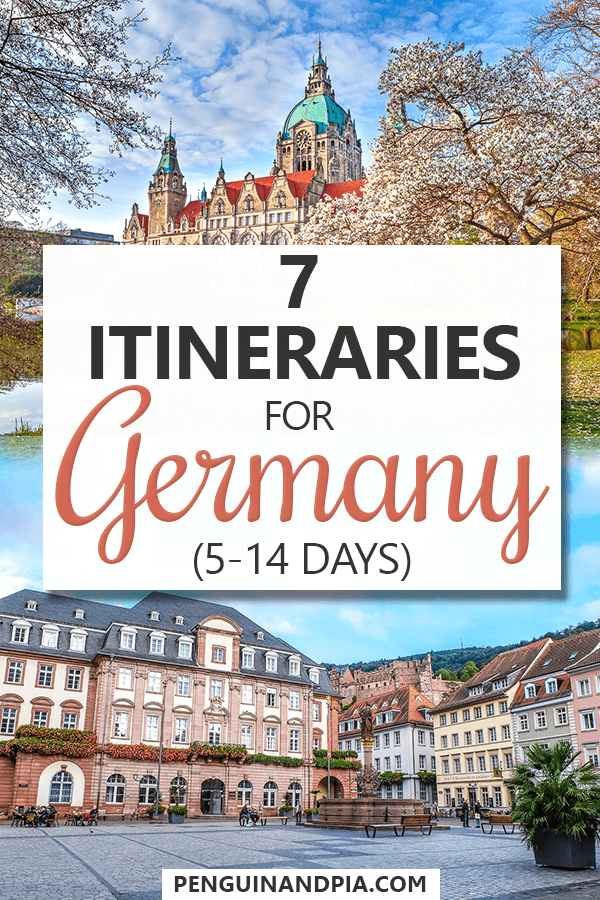
As an Amazon Associate we earn from qualifying purchases.
Destinations
Privacy policy
Disclaimer & Affiliate Disclosure
Terms of use
© 2024 Creativlier Media Inc.

Germany Travel Guide
Looking for an in-depth Germany travel guide ?
Then you’re in the right place!
Planning your Germany travel itinerary but not sure where to start? We’ve got you covered!
There’s so much to see in this country of 83 million people.
From big cities to little Alpine villages, you’ll find that Germany is rich in culture, history, and natural splendors. In this Germany tourist guide, we’ll be sharing some of the best highlights with you.
If you’re wondering where to go in Germany, the cities are a great place to start. Destinations like Berlin, Munich, Hamburg, and Frankfurt all offer something different, from modern architecture and 24/7 nightclubs to historic churches and cobblestone streets.
Of course, some of the best places to go in Germany are the smaller cities and towns. Leipzig , for example, is just a short train ride from Berlin. Johann Sebastian Bach’s former home is full of history, classic German architecture, and art galleries.
The small towns in the Bavarian Alps also offer idyllic experiences and enough space to really see the stars at night. Again, if you’re wondering how to travel Germany, there’s no one way to do it!
The country’s modern transportation system and its central location make it easy to travel to Germany from other European destinations . The country is well-connected to its neighbors by rail and inexpensive flights from nearby countries are easy to find.
A Eurail Pass is also a great option for backpackers who want a little flexibility, particularly those who qualify for youth fares (ages 12-27). Keep all your options in mind as you plan a trip to Germany.
Keep reading to dive into resources that will help you with planning a trip to Germany in Western and Central Europe.
Note: This guide to Germany travel contains affiliate links to trusted partners!

Germany Map
Use this Germany travel map to begin planning your trip to this incredible country!
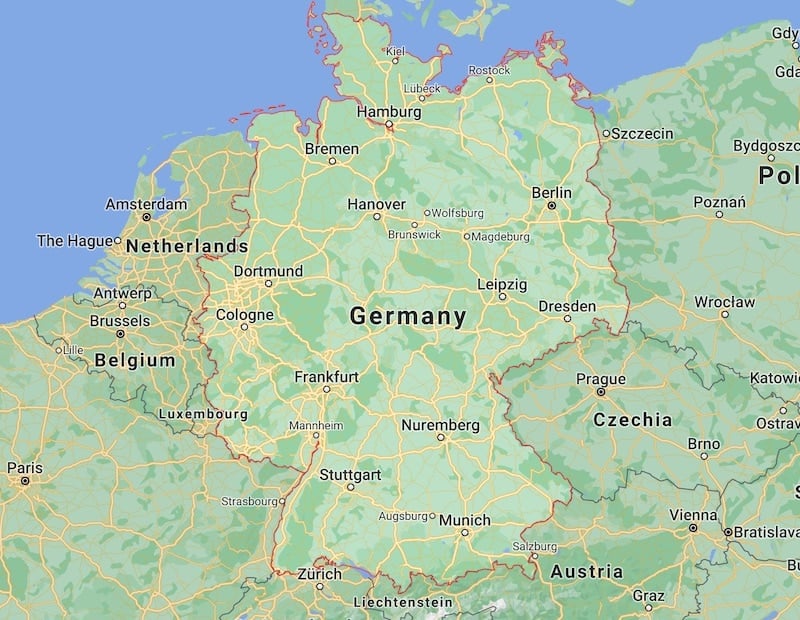
Click here for an interactive Google Map version of the above graphic.
Planning A Trip To Germany Itinerary Resources
If you’re looking for a helpful travel guide for Germany , check out:
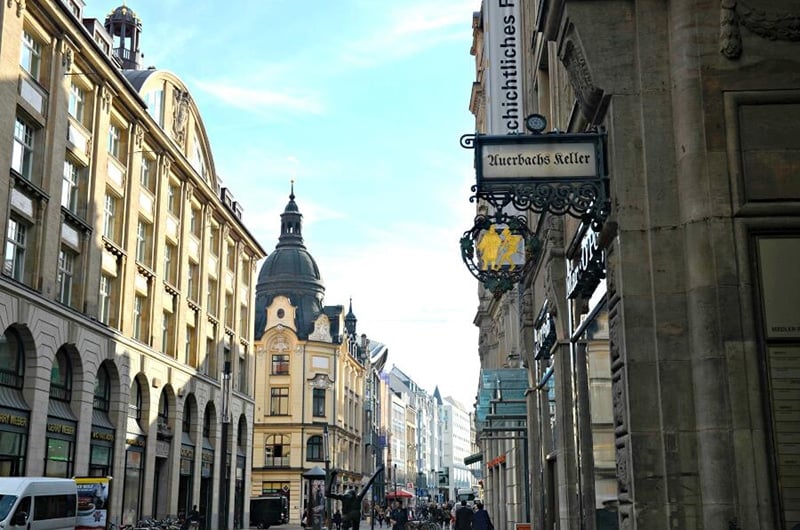
Leipzig: A Must-Have Day Trip From Berlin, Germany
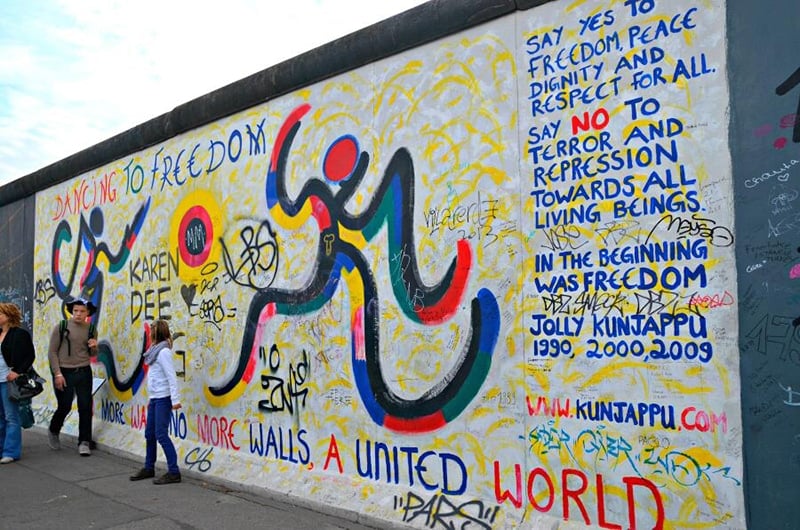
Exploring Germany’s Berlin Wall History, 25 Years After The Fall
Best Things To Do In Germany
Wondering what to do in Germany ? The following guides can help! The experiences shared are highlights of any Europe travel itinerary !

10 Amazing Offbeat Things To Do in Germany

How The Berlin Marathon Showed One Traveler That We’re All In This Race Of Life Together
Germany Travel Tips
This Germany travel advice can help you plan the perfect trip!

10 Reasons Why Germany Should Be Your Next Trip
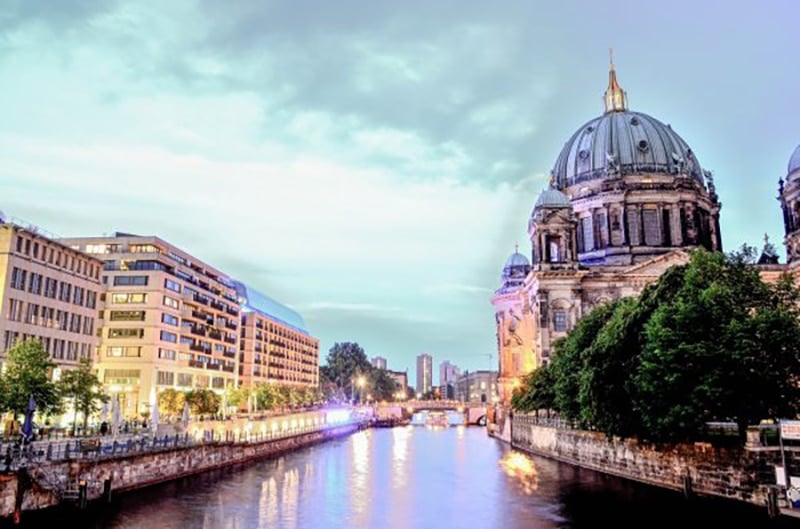
10 Tips for Traveling Berlin On A Budget
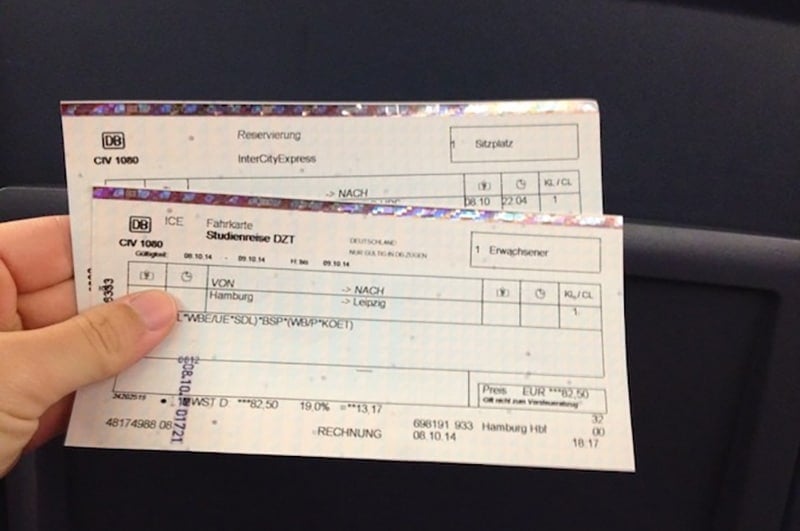
17 Essential Germany Transportation Tips For Travelers
Top Guided Tours In Germany
Explore local culture with a Germany tour guide through these unique excursions:
- Bavarian Schnitzel Cooking Class in Oberaudorf Farmhouse (Oberaudorf)
- Neuschwanstein Castle and Linderhof Palace Day Tour (from Munich)
- Cologne City Tour Experience cathedral city on the Rhine (Köln)
- Best of Bohemian and Saxon Switzerland Day Trip (from Dresden)
- Bavarian Beer and Food Evening Tour (Munich)
- 3-Hour Berlin Highlights Tour (Berlin)
Renting A Car In Germany
Need a rental car for your Germany trip?
Use Discover Cars to quickly compare your car rental options.
Germany Train Travel
Getting around Germany by train, bus, or ferry?
Omio is a must! I use this tool for all of my public transportation needs when traveling Europe.
The site is straightforward and user-friendly — and you can pre-book your tickets in advance at a discount.
They even offer flight and car deals!
Germany Hotels
Click here to browse hotels in Germany!
Prefer self-contained stays?
Click here to check out unique local apartments and rentals!
You can also use this map to search for local stays and experiences:
Germany Travel Insurance
It doesn’t matter if you’re traveling solo or with a group on a Germany tour. When visiting Germany — or any other country in the world — make sure to get travel insurance to protect your health and safety.
In my opinion, the best travel medical insurance for travelers is SafetyWing as they’ve got a large network and offer both short-term and long-term coverage — including coverage if you’re traveling for months as well as limited coverage in your home country).
Additionally, SafetyWing is budget-friendly and offers $250,000 worth of coverage with just one low overall deductible of $250.
With coverage, you’ll have peace of mind as you embark on your Germany itinerary.
Click my referral link here to price out travel insurance for your trip in just a few clicks .
Germany Travel Guide FAQ
Below, find answers to frequently asked questions about traveling in Germany .
Q: What are the best places in Germany for tourists?
Germany offers something for every kind of traveler, so your destination really depends on the kind of trip you want to have.
Looking to party until the wee hours of the morning and visit historic sites from World War II and the Cold War? Head to the capital city of Berlin .
Visiting during Oktoberfest or want to experience the famed German Christmas markets? Munich is the place to be.
Want to take in world-class concerts and wander along canal-side streets? Head to Hamburg.
Not much of a city slicker? Germany has plenty of open space for you to enjoy.
The Black Forest in the Baden-Württemberg region features iconic natural sights and is an excellent spot for hiking. The area is also home to many thermal baths in resort towns like Baden-Baden where you can relax in the natural curative spring waters.
And for those looking for the storybook Bavarian experience, a trip to Neuschwanstein Castle is an absolute must!
This 19th-century romantic castle in the Bavarian Alps has inspired many an artist, including Walt Disney, who modeled Sleeping Beauty’s castle at Disneyland after the iconic home.
Q: What are the best ways to travel cheaply in Germany?
There are many ways to stretch your budget while visiting Germany. First off, be mindful when choosing your travel dates. Prices tend to be higher and travel destinations are usually busier around the German public school holidays and major trade fairs in certain cities, so check local school schedules and event calendars before booking your trip.
Try to book your trip for the shoulder seasons; for example, if you’re planning a summer getaway, try to book in June or September which are still warm but not quite as busy.
If you’re planning to travel around Germany by train , be sure to book directly with Deutsche Bahn, the German rail service. Third-party retailers tend to tack on extra fees. You can also order a rail pass here for more flexible travel options. The sooner you book, the better — fares tend to go up closer to the date of travel.
As for accommodations, Germany has plenty of hostel and homeshare options. Many hostels offer private rooms for around $50 USD per night and are just as clean and modern as city hotels.
Looking for a little more room? Check out sites like AirBnB and VRBO for apartment and home rentals throughout the country.
Q: What are the do’s and don’ts when traveling to Germany?
As with any other country, Germany has its own customs and cultural standards. Here are some general do’s and don’ts:
– Be on time. Punctuality is seen as a sign of respect in Germany and most things start on schedule. Whether you’re taking a tour or meeting someone for coffee, try to arrive a little bit early.
– Use titles and last names when addressing people. Herr [Last Name] or Frau [Last Name] are generally appropriate unless otherwise noted.
– Learn a little bit of German before your trip.
– Make sure you have proper health insurance before your trip, as medical care can be expensive in Germany. SafetyWing is one excellent travel medical insurance recommendation.
– Tip at least 5-10% at restaurants. Tipping for most services (salons, taxis, hotels, etc.) is not common in Germany but it is still expected in restaurants. Anything over 15% is considered generous. Also, be sure to tip your tour guide if you are taking a free tour.
– Keep cash on hand. Many restaurants throughout the country do not take credit cards.
DON’T
– Get too loud or too intoxicated. Unless you’re in a nightclub or an Oktoberfest tent, this behavior is generally frowned upon.
– Wear shoes in someone’s house. Most Germans take off their shoes upon entering their house and expect visitors to do the same. If you must keep them on, make sure it’s okay with your host first.
– Throw out your bottles. When purchasing drinks in glass or plastic bottles, a small deposit (usually around 10 cents) is added to your price. If you return the empty bottles to a local shop, you’ll get that deposit back, regardless of whether or not you purchased the bottle at that shop.
– Show the Nazi salute or any other Nazi symbol. This should simply go without saying, but it is also illegal to show any Nazi symbol in Germany.
Q: How much money do you need per day in Germany?
Your budget for a trip to Germany will of course depend on your individual travel plans but the average traveler spends about $130 USD per day in the country for accommodations, transportation, food, and other expenses.
Q: Is Germany safe?
Germany is considered quite safe compared to most destinations. Violent crime is rare in the country.
Petty theft and pickpocketing do occur, particularly in train stations and at major tourist attractions, so be sure to keep your valuables close, be aware of your surroundings, and have a plan for avoiding pickpockets .
Racially-motivated assaults against those perceived as “foreigners” have also occurred in recent years. Stay vigilant, particularly if you are traveling alone.
Q: How long can a tourist stay in Germany?
Most tourist visas will allow you to stay in Germany for up to 90 days without engaging in any professional activity during your stay.
Q: Do I need a Germany travel visa?
Travelers from the United States, United Kingdom, Australia, Canada, Schengen Area member countries, and several other countries do not need a visa to visit Germany for a period of fewer than 90 days.
It’s recommended to view your country’s Germany International Travel Information page for the most up-to-date information on entry and exit requirements. You can also contact the Consulate General of Germany.
Q: What is the best time to visit Germany?
While Germany is a year-round destination, for fewer crowds and better deals, spring is a great time to visit. You’ll experience mild weather and can take part in the many events that happen during this time, like Frühlingsfest (aka “Little Oktoberfest”) and Kirschblütenfest.
Additionally, many travelers love visiting in December for Germany’s famous European Christmas markets .
Q: Where is Germany?
Germany is located in West and Central Europe. Its borders are Denmark to the north, Poland and the Czech Republic to the east, Austria to the southeast, and Switzerland to the south-southwest.
Q: Are credit cards accepted in Germany?
Credit cards are widely accepted in Germany, though it’s always wise to carry some cash on you, especially when frequenting smaller mom and pop type establishments and street stalls.
Q: Can you drink the tap water in Germany?
Yes, the water is safe to drink in Germany.
Q: Do they speak English in Germany?
In tourist areas and big cities, you’ll typically find people who speak English, though not everyone does, and even fewer people do in more rural areas.
If possible, it’s smart to learn a bit of the language and know some common German phrases before traveling.
Q: What is the local currency in Germany?
The local currency in Germany is the Euro (€).
What would you add to this Germany travel guide?

Enjoyed this ultimate guide to Germany travel? Pin it for later!
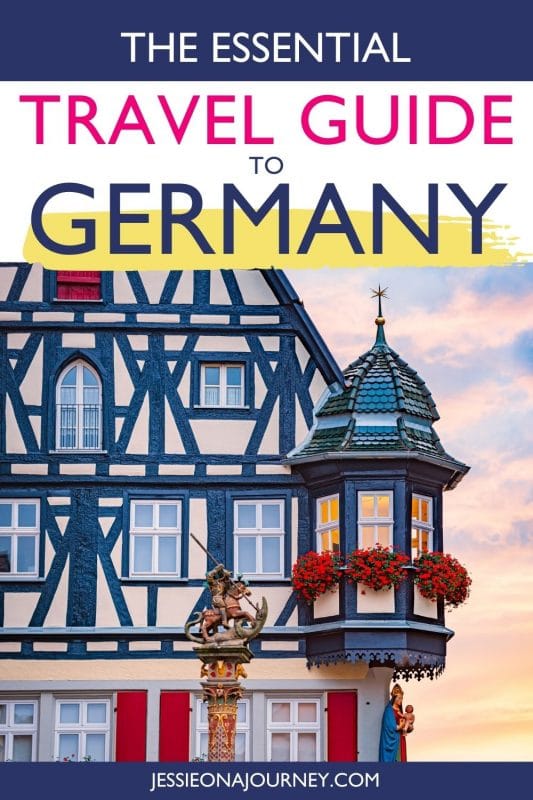
Travel Guide Germany
Book your individual trip , stress-free with local travel experts
- roughguides.com
- Travel guide
- Itineraries
- Local Experts
- Travel Advice
- Accommodation
Plan your tailor-made trip with a local expert
Book securely with money-back guarantee
Travel stress-free with local assistance and 24/7 support
Elisabeth and Alain Wilbois
This e-mail is to express how we enjoyed the trip we had with Henry as driver and guide, all over Malaysia. Henry was very committed in his role: he could ...
Though it remains far less well known or understood by outsiders than some of its neighbours, since reunification Germany has at last gained a higher profile as a place to visit, thanks partly to the remarkable resurgence of Berlin, one of the most fascinating and exciting cities in Europe. But the appeal of the reunified Germany is not limited to the capital. Use our travel guide to Germany to get inspired and plan your travel to Germany. If you prefer to be more hands-on, get a copy of the Rough Guide to Germany .
Travel facts about Germany
Where to go in germany, unesco world heritage sites in germany, food and drink in germany, outdoor activities and sports in germany, german wines: a wine-making renaissance, history and heritage in germany, art, architecture and culture in germany, tailor-made travel itineraries for germany, created by local experts.
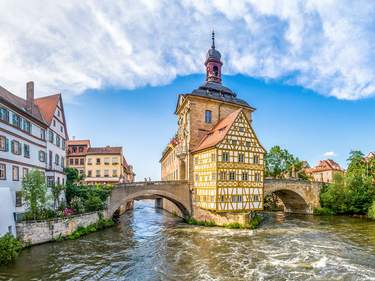
9 days / from 2221 USD
A self drive exploration of UNESCO Sites in Southern Germany
Explore UNESCO World Heritage Sites across different German states. This self drive trip allows you to design your own days with recommendations stated for each day.
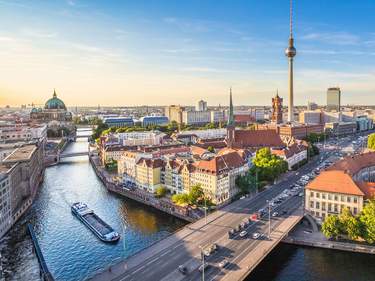
7 days / from 2851 USD
Explore Berlin and Potsdam in depth
The German capital Berlin has plenty to offer: from historical sites to world-class museums and a vibrant nightlife. Enjoy this private tour to explore a wide range of activities in Berlin and Potsdam, including several UNESCO World Heritage Sites.
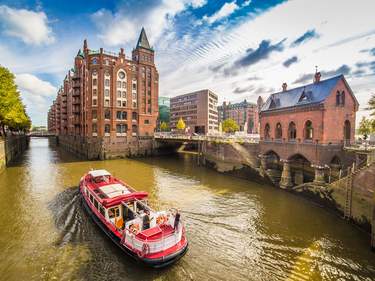
8 days / from 1473 USD
Explore Northern Germany on Your Own
From Bremen to Stralsund - Northern Germany offers plenty of gems to explore. With well-developed public transportation links, this itinerary is suited for everyone wanting to explore on their own - getting lost on the cobble-stoned streets of many UNESCO World Heritage Highlights.
Tailor-made trips for Germany
- Germany occupies 357,112 square kilometres territory in Central Europe. It has land borders with nine countries and a coastline of 2389km on the North and Baltic seas.
- Politically, Germany is a parliamentary democracy, with an upper house – the Bundesrat – and a lower chamber, the Bundestag , both in Berlin. The administrative structure is federal, with the sixteen Länder (states) having a high degree of autonomy.
- Germany is the largest economy in the European Union , and it is the world’s largest exporter . As the economic heart of the euro zone it is also home to the headquarters of the European Central Bank .
- With a population of around 82 million, Germany is the most populous nation in the European Union, and it is also among its most densely populated and highly urbanized . The four largest cities are Berlin (3.46 million inhabitants), Hamburg (1.8 million), Munich (1.35 million) and Cologne (1 million).
- Germans DO have a sense of humour and they DO love to sunbathe naked . DON’T feel you can’t mention the war though. Today Germans are avid consumers of their own history, and the Nazi era is picked over exhaustively in TV documentaries, in books, and at the cinema.

Berlin is at the top of the list for places to visit in Germany / © canadastock/shutterstock
Best cities and towns in Germany
For many visitors, one of Germany’s cities will be where to go first. Berlin is genuinely exciting – a metropolis on fast-forward, growing into its rediscovered role as the nation’s capital yet preserving evidence of its sometimes unhappy role in European history.

Many other cities have proud histories as independent city-states or as capitals in their own right: thus, there’s nothing remotely “provincial” about ancient, liberal Cologne , Dresden’s restored Baroque splendour or the proud Bavarian metropolis of Munich . The financial capital, Frankfurt , impresses with its dynamism and international spirit, while Bonn , the former West German capital, charms with its scenic setting and excellent museums.
Elsewhere, chic Düsseldorf and laidback Stuttgart embody aspects of the German economic miracle, while the eastern city of Leipzig fizzes with fresh energy. Mercantile Hamburg looks askance at the rest of the country, maintaining the worldliness of a great port, while Nuremberg evokes the triumphs and tragedies of Germany’s past.
Cultural attractions of capital city-quality are not limited to the bigger cities, and many of the most rewarding places are quite small : the cathedral cities of Bamberg and Regensburg ; the Hanseatic ports of Lübeck , Stralsund and Wismar ; the “Prussian Versailles” of Potsdam ; and micro-capitals like Weimar , Schwerin and Eichstätt .
Germany has university towns as evocative as any: Heidelberg is the most famous, but Freiburg , Marburg and Tübingen are just as charming. As for the spa towns , at their best – in Baden-Baden, Bad Homburg or Wiesbaden – they combine health benefits with turn-of-the-century elegance and lovely natural settings.
Landscape, nature and road-trips in Germany
For a potted digest of Germany’s cultural riches the Romantic Road is deservedly popular, a road journey linking Rococo churches with medieval cities and eccentric royal castles. Other themed “roads” are devoted to fairy tales, half-timbering or wine. Often, the most magical places – a fortress on a crag, a placid village rising above vineyards, an ancient market square of improbable quaintness – await discovery on such routes.
Nor should Germany’s undeniable natural beauty be overlooked. The Bavarian Alps , the Black Forest and the valleys of the Rhine and Mosel have long been celebrated. Still, the talcum-powder softness of Rügen’s beaches , the smart resorts of Sylt and the lonely splendour of Mecklenburg’s lakes have yet to make it onto the international travel agenda. A shame, but great for travellers who like to explore great outdoor places away from the crowd.
One unsung pleasure of a visit to Germany is the opportunity to meet its people . The officious neighbour who complains if you don’t hang your socks out to dry in alphabetical order may not be entirely fictional, but you’re far more likely to be struck by the warmth and open-mindedness of Germany’s people – and particularly its young people. You can have fun testing how liberal a place is by observing how the locals react to the red Ampelmann when crossing the street: the bigger and more laidback the city, the more likely they are to ignore the no-jaywalking rule. In contrast, the sight of upright citizens waiting patiently for the green light despite an absence of traffic as far as the eye can see is still one of the more comic pleasures of small-town Germany.
Discover more places in Germany

- Hesse Travel Guide
- Mecklenburg-Western Pomerania Travel Guide
- Munich and central Bavaria Travel Guide
- Northern Bavaria: Franconia Travel Guide
- North Rhine-Westphalia Travel Guide
- Rhineland-Palatinate and Saarland Travel Guide
- Saxony Travel Guide
- Saxony-Anhalt and the Harz Travel Guide
- The Alps and eastern Bavaria Travel Guide
- The Black Forest Travel Guide
- Thuringia Travel Guide
- World Heritage sites in Germany
- Bremen and Lower Saxony
Germany sport a whopping 46 UNESCO world heritage sites worth your visit. There is a bit for everyone: from places of historical significance and cultural achievements to industrial heritage sites , palaces and castles , the natural beauty of parks and landscapes , whole medieval towns , modern architecture , and even some really obscure listings . If you intend to include some of these sites in your trip to Germany, download a free copy of the Rough Guide to the World Heritage sites in Germany .
The pleasures of travelling to Germany are not only intellectual. The excellence of its beer derives from the sixteenth-century Reinheitsgebot, the world’s oldest food purity law.
Germany’s food culture is traditionally characterized by wholesome but hearty dishes, a vast array of sausages and excellent but calorific cakes. Yet the impact of immigration, travel and increasing culinary ambition has been powerful, and most towns nowadays offer a wide selection of international options, usually including Balkan, Greek, Italian and Turkish. Learn more about food and drink in Germany .
Though the dangers of over-indulgence are ever present, so too is the antidote. The tradition of the Kur or spa visit has endured to a far greater extent in Germany than elsewhere. If you want to unwind in saline or hot springs while travelling in Germany, there are innumerable spa towns up and down the country.
In summer, the nation’s endless forests and mountains play host to hikers and cyclists while the Alps tempt international visitors with an excellent array of downhill ski runs in winter. Find out more about outdoor activities and sports in Germany .

The Black Forest in Germany is popular for hiking, cycling and motorcycle road trips © Funny Solution Studio/Shutterstock
Germany’s wine growers did themselves no favours when, in the 1970s, they responded to growing demand from abroad by exporting the cheapest and worst of what they produced. German wine was saddled for decades with a reputation for poor quality.
All that is now changing. A new generation of wine makers is eschewing high technology, chemicals and the mass market in favour of organic production that reflects the terroir , or soil and climate conditions of the region. It helps that Riesling – Germany’s most popular grape – strongly reflects the conditions in which it has been grown. The result is a resurgence of light, drinkable, dry white wines that range from elegant crispness to the subtly mineral. German wines are increasingly common on wine lists in North America and in parts of Asia, where they match the cuisines well.
Germany’s major wine regions are mostly in an arc that follows the course of the Rhine from the Mosel in the west to Baden in the south. To the east, wine is grown in more challenging climatic conditions in Franconia , Saale-Unstrut and along the Elbe near Dresden.
The 2006 football World Cup was something of a turning point, both with regards to Germany’s image abroad and to its own self-image, rehabilitating the idea of German patriotism for the first time since the war. When football fans descended on cities all over the country, they discovered a friendly, multiethnic and multicultural nation that was, for the most part, at ease with itself, finally happy to fly its own flag in a harmless display of national pride.
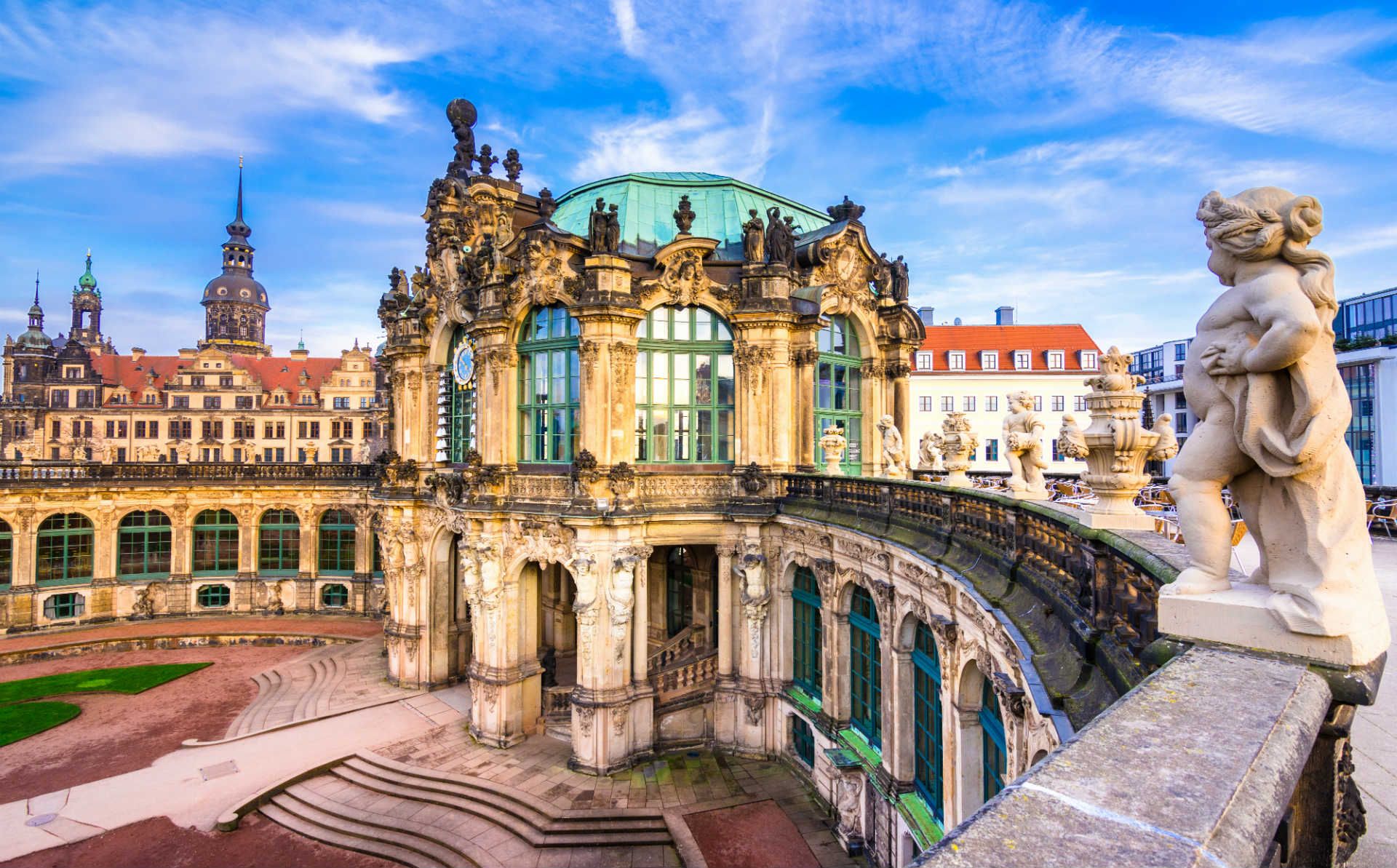
Throughout Germany you will find landmarks of its rich history, like the Zwinger in Dresden - © shutterstock
It’s now three decades since the events of 1989 swept away the Berlin Wall and brought to an uplifting end a turbulent and agonizing century for Germany, ill-served at crucial points in its brief history as a united nation-state by erratic and adventurous rulers who twice led it into disaster. In 1918, as Kaiser Wilhelm II’s vainglorious dream of empire ended in defeat, starvation and revolution; and at the end of World War II, as Hitler’s vile race-war rebounded in terrible fashion on the German people who had chosen him as their leader. There followed a period of forty-five years in which not one Germany but two faced each other across a tense international divide – the so-called Iron Curtain – throughout the years of the Cold War.
Political fragmentation is nothing new in Germany. From the tenth century until the early nineteenth, the Holy Roman Empire provided only a loose semblance of sovereignty over a vast collection of states, and it’s this jumbled history, as much as the country’s varied geography, that explains Germany’s sheer diversity. According to an old German expression, city air makes you free, and for centuries many of Germany’s cities governed themselves without feudal overlords.
In stark contrast was the absolutist yoke of the feudal states , which ranged from substantial kingdoms like Prussia, Saxony or Bavaria to tiny landgraviates and prince-bishoprics. Yet each made its contribution to Germany’s heritage, in the architectural and cultural splendour of many a former Residenzstadt. The Lutheran Reformation and its aftermath left their mark too: northern Germany is predominantly Protestant, the south more Catholic, yet the division is not clear cut. Staunchly Protestant towns alternate with devoutly Catholic ones, while in some places the two traditions share a single church.
Germany’s contribution to the world of classical music is undeniable, and provides a powerful pretext for a visit, whether to experience the glories of the Berlin Philharmonic or of Wagner’s Ring at Bayreuth, or to follow in the footsteps of great composers: Bach in Leipzig, Beethoven in Bonn.

Television tower in Berlin - © shutterstock
Germany’s reputation as the cradle of modernism is also well deserved, and a pilgrimage to the Bauhaus in Dessau or the Weissenhofsiedlung in Stuttgart is sure to please design fans. German modernism was preceded by the older traditions of the Romanesque, Gothic, Renaissance, Baroque and Rococo , each of which left a rich legacy of artistic and architectural treasures.
Germany’s prowess in fine art is less well known, yet from the pioneering realism of Albrecht Dürer to the ethereal Romanticism of Caspar David Friedrich , it’s a powerful tradition that is well worth discovering. Most German cities of any size have excellent art galleries , with Berlin and Cologne hubs of the European contemporary art scene.
Modern architecture in Germany - Reinventing the urban scene
Since reunification, Germany has experienced a rush of high-profile building projects, adding style and excitement to the urban landscape.
Berlin led the way, at times seeming like a perpetual building site. Daniel Libeskind’s Jewish Museum , the government quarter including the Reichstag, and David Chipperfield’s resurrection of the long-ruined Neues Museum all grabbed headlines, while Peter Eisenman’s monument for the murdered Jews of Europe ensures the Holocaust is remembered right at the heart of the capital.
But the action isn’t limited to Berlin. In Düsseldorf , star architects including Frank Gehry transformed a redundant dock into the Medienhafen , a funky setting for some of the city’s best restaurants and bars. In Munich , Herzog & de Meuron’s Allianz-Arena created a new symbol for the city, while a handsome new synagogue and museum reinstated a highly visible Jewish presence. In the Ruhr area , redundant industrial sites have been recycled to create some of Europe’s most original cultural spaces.
The stream of projects shows little sign of abating. Herzog & de Meuron’s extension of Duisburg’s Küppersmühle art gallery perches a translucent cube atop dockside silos, while their audacious design for the Elbphilharmonie in Hamburg places a concert hall above a portside warehouse.
Top image: Neuschwanstein castle © VOJTa Herout/Shutterstock
Travel advice for Germany
From travel safety to visa requirements, discover the best tips for traveling to Germany
- Eating and drinking in Germany
- Travel Tips Germany for planning and on the go
- Culture and Etiquette in Germany
- Getting around Germany: Transportation Tips
- How to get to Germany
- Shopping tips for Germany
- Sports and Outdoor activities in Germany
- Travelling with children in Germany
- Best time to visit Germany
The Rough Guides to Germany and related travel guides
In-depth, easy-to-use travel guides filled with expert advice.

Find even more inspiration here

Planning your own trip? Prepare for your trip
Use Rough Guides' trusted partners for great rates
written by Rough Guides Editors
updated 22.07.2021
Ready to travel and discover Germany?
Get support from our local experts for stress-free planning & worry-free travels.
- Travel advice
- Where to stay
Protect Your Trip »
Best places to visit in germany.
Full of culture, lively locals and great beer, Germany is home to many captivating travel destinations. Whether you're looking to soak up art, architecture and history or imbibe at Oktoberfest, this country appeals to a variety of tourists. U.S. News weighed factors like sights, food, culture, accessibility and value, in addition to expert and traveler opinions, to create the best places to visit in Germany. Vote for the destinations you love below to help shape next year's ranking.
Neuschwanstein
Garmisch-partenkirchen, black forest, berchtesgaden, rüdesheim am rhein.

Germany's capital city is akin to Paris and London in that you just can't visit the country without going. Like many large cities, Berlin offers something for everyone, from a lively nightlife scene to restorative green spaces. Those looking take in the arts can explore the impactful East Side Gallery (on the Berlin Wall) or visit the more traditional art galleries at Museum Island. Berlin also pays homage to its ominous past with powerful and humbling attractions. Must-visit historical sites include the Memorial to the Murdered Jews of Europe, the Berlin Wall Memorial, the Brandenburg Gate and Checkpoint Charlie.

Visitors flock to Munich every fall to take part in Oktoberfest, a two-week-long ode to Bavarian traditions featuring Germany's best beers and bratwurst. But Munich, one of the largest German cities, offers so much more than just this festival. The city is home to beautiful gardens, exquisite churches and engaging museums worth exploring. Wander around Munich's charming neighborhoods and spend some time in Marienplatz, a central square that's home to the world-famous Rathaus-Glockenspiel and hosts a popular Christmas market.

Though Neuschwanstein Castle was never meant for visitors, it has become one of Germany's most popular tourist attractions. King Ludwig II commissioned the castle as a place of refuge from public life. Today, more than 1 million people stroll through the property every year. The castle's Romanesque Revival-style is certainly romantic; in fact, it inspired Sleeping Beauty Castle at Disneyland. But what elevates this castle to bucket list status is its unbelievable setting, perched in the Bavarian Alps. From the castle, travelers can get an eyeful of the surrounding mountains, Alpine lakes and striking foliage (especially during fall).

This scenic mountain town in the Bavarian Alps calls to adventure-hungry travelers. In winter, Garmisch-Partenkirchen draws skiers looking to hit the slopes and learn about the Winter Olympics that were held here in 1936. In summer, hikers descend upon the town hoping to climb Zugspitze, Germany's highest peak (the summit is also reachable via cable car). Other can't-miss attractions include Lake Eibsee and Partnachklamm, a narrow gorge characterized by steep rock walls and roaring rapids. Meanwhile, if you're looking to unwind, take a stroll through Historic Ludwigstrasse or explore the grounds of Linderhof Palace and Park.

One of the best places to see Germany's natural splendor is the fairy-tale-inspiring Black Forest. This section of Baden-Württemberg encompasses more than 2,000 square miles of enchanting waterfall-filled forests, rolling hills and lengthy valleys dotted with half-timbered villages. A great introduction to the Black Forest is driving along its scenic namesake highway (Schwarzwaldhochstrasse); be sure to start or end your journey in the spa town of Baden-Baden to benefit from its thermal springs. You'll also want to save time for visiting gorgeous natural wonders like the picture-perfect Triberg Waterfalls, Lake Titisee and the Feldberg, the Black Forest's highest peak.

Dresden is made for architecture enthusiasts. The city, which is located in eastern Germany near the Czech border, features remarkable facades and edifices adorned with ornate architectural details. Though you'll have your pick of stunning structures, make sure you visit the Dresden Zwinger (a Baroque-style palace) and Dresden Royal Palace (a Renaissance landmark where the Fürstenzug, the world's largest porcelain mural, resides). If you prefer modern architecture, head to Kunsthofpassage to gaze at its quirky buildings, one of which has singing drainpipes. And those visiting during festive season can't miss Striezelmarkt, Germany's oldest and largest Christmas market.

For a memorable vacation in the Bavarian Alps, visit Berchtesgaden. This destination, which sits on the Austrian border, captivates visitors with its massive peaks, cascading forests, deep valleys and Alpine lake and river that make up Berchtesgaden National Park. Start your journey driving the scenic Rossfeld Panoramastrasse before traveling south to awe-inspiring Lake Königssee and the Eagle's Nest, a mountaintop beer garden. If you enjoy skiing, arrive in winter when Jenner Mountain is blanketed with snow.

First-time visitors to this historic German city should make a beeline for Cologne Cathedral – this breathtaking example of Gothic architecture is a UNESCO World Heritage Site and the city's most popular landmark. Meanwhile, travelers with a sweet tooth should make time in their schedule for a tour of Cologne's Chocolate Museum. Other activities include relaxing on the lawn at Rheinpark, exploring Cologne's Old Town, cruising the Rhine River and taking in spectacular city views from a cable car. Visit in February or March when Cologne's annual Carnival celebration takes place, an event featuring festivities like masked balls, parades and parties.

Go off the beaten track on your next getaway by heading to this Bavarian city in southeast Germany. Boasting centuries-old architecture and a prime location along the Danube River, Regensburg is known as one of Germany's oldest and best-preserved medieval cities. Most of Regensburg's top attractions can be found in the city's UNESCO-listed Old Town, including landmarks like St. Peter's Cathedral, Haidplatz Square and the Stone Bridge. Other sights worth visiting include the Thurn und Taxis Palace and Walhalla, a hall of fame honoring exemplary German-speaking figures throughout history.

This city in southwestern Germany is well known for housing the country's oldest university. However, its good looks and superb location along the Neckar River also make it a great destination to enjoy old-world character and a small-town ambiance. To see as much of this beautiful city as possible, take a long stroll through Heidelberg's old town and across its picturesque Old Bridge. Then, ride the funicular railway to Heidelberg Castle, and continue on to Königstuhl for impressive views. Additional must-see sights to add to your vacation itinerary include the Philosopher's Walk, Heidelberg Zoo and the Student Prison at Heidelberg University.

Boasting elaborate churches and palaces around every corner, Würzburg is a photographer's paradise. From the Baroque-style Residence Palace to the Romanesque St. Kilian Cathedral, there are countless buildings worth exploring. Not only can travelers enjoy beautiful architecture, they can expect manicured gardens and parks, such as Ring Park and the University of Würzburg's Botanical Garden, along with numerous vineyards and estates offering wine tastings (Würzburg is located in Germany's Franken wine region). When you're not sipping on delicious vino, consider visiting the grand Marienberg Fortress or snapping a photo of Würzburg's iconic Old Main Bridge.

Primarily known for its winemaking capabilities, Rüdesheim am Rhein is a small village located at the base of Germany's Rhine Valley. While you'll surely want to spend the majority of your time here sampling Rüdesheim am Rhein's famous riesling, you should save time for other activities as well. The restaurant- and market-lined Drosselgasse alley is a perfect place to hear live music, and you'd be remiss to skip the one-of-a-kind Siegfried’s Mechanical Music Cabinet during your trip. Another worthwhile activity is a castle cruise along the Rhine River.

Frankfurt is best known as the financial capital of the eurozone thanks to it housing the European Central Bank, but don't assume the city is nothing more than a concrete jungle. Frankfurt doubles as a tourist-friendly destination with all kinds of attractions. Here, you'll find the Frankfurt Museum Embankment, a riverside perimeter that comprises more than a dozen museums, including the popular Städel Museum. Other noteworthy sights include the city's colorful old town, the Main Tower observation deck and the Palmengarten, a beautiful botanical garden.

Located less than 22 miles southwest of bustling Berlin, Potsdam makes for a perfect daytrip. The city offers a quieter, more serene atmosphere complete with parks and eye-catching historical landmarks. The city's most popular attraction, Sanssouci Palace, is a UNESCO World Heritage Site so breathtaking that it is often compared to Versailles. The palace's name means "without a care," so plan on spending unhurried hours there taking in its splendor and the surrounding grounds. You'll also want to save time for visiting Cecilienhof Country House – where the historic Potsdam Conference took place – and strolling through the charming Dutch Quarter.

Home to Germany's largest cruise port, the Elbe river and hundreds of canals flowing through the city center, Hamburg is a great place to explore by boat. But for those on foot, many top attractions are clustered in the heart of the city, including the Alter Elbtunnel and Planten un Blomen park. Speicherstadt, a UNESCO World Heritage Site worth visiting, offers Miniatur Wunderland, the world's largest model railway system that enraptures visitors of all ages. Plus, Hamburg is a haven for music lovers with its impressive Elbphilharmonie complex, which features two concert halls and a plaza with sweeping city views.

The second-largest city in Bavaria, Nuremberg is a must-visit destination due to its well-preserved history (both medieval and more recent). The city's darker World War II connections are on display at the Documentation Center Nazi Party Rallying Grounds and the Memorium Nuremberg Trials museum. Go further back in time with a visit to the vast, all-encompassing Germanisches Nationalmuseum, which includes artwork from prehistoric times to today. Then, wind your way through old town's endearing streets, where you'll find half-timbered houses, a four-story fountain and the imposing Imperial Castle, which dates back to the days of the Roman Empire.

Head to this small medieval city in northern Bavaria to feel as if you've stepped back in time. Bamberg is famous for housing notable Enlightenment-era writers and philosophers like E.T.A. Hoffmann and Georg Wilhelm Friedrich Hegel. Plus, Bamberg boasts a gorgeous location along the Regnitz river and a collection of exquisite architectural beauties, including the Romanesque Bamberg Cathedral and the Old Town Hall. But no visit would be complete without seeing the dreamy rose garden at the New Residence palace.

Upon first glance, Lübeck might look like any other mid-size German city. However, this northern destination with Nordic beauty holds plenty of historical significance, so much so that UNESCO designated it a World Heritage Site. Between the 12th and 16th centuries, Lübeck was considered one of Europe's most important trading ports. The city still remains a hub for maritime commerce with its location on the Baltic Sea. After learning more about Lübeck's maritime roots at the European Hansemuseum, travelers can check out the stately Holsten Gate in the city's charming old town or explore its many waterways during a boat tour.

Sitting on the banks of the Rhine River about 80 miles northwest of Frankfurt, Koblenz is overlooked by the hilltop Ehrenbreitstein Fortress. This idyllic setting is an added bonus to the city's strong cultural offerings, which range from institutions like the DB Museum Koblenz and the Ludwig Museum to monuments like the German Corner. You should also make time for a ride on the Koblenz Cable Car, which offers panoramic views of the Upper Middle Rhine Valley. Plus, with access to both the Rhine and Moselle rivers, Koblenz is an excellent destination for a river cruise (many routes take travelers past vineyards, castles and more).

Situated about 10 miles east of Germany's border with Luxembourg, the country's oldest city draws history buffs in droves. Trier was founded by Romans in 16 B.C. and is filled with some of the best-preserved ruins from that era. Must-see Roman relics include St. Peter's Cathedral, Porta Nigra, the Basilica of Constantine and the Imperial Baths. When you need a break from learning about Trier's ties to the Roman Empire, explore old town's colorful Hauptmarkt square, visit Karl Marx's birthplace or take a scenic boat tour along the Moselle river.
Vote to Add these Destinations to the Rankings

Saxon Switzerland National Park

You May Be Interested In

Best Places to Visit in Spain

Best Places to Visit in France

Switzerland
Best Places to Visit in Switzerland
Best places to visit in europe for 2023-2024.

Best Places to Visit in Italy

Best Cheap European Vacations for 2023-2024
If you make a purchase from our site, we may earn a commission. This does not affect the quality or independence of our editorial content.
Recommended
The 50 Best Hotels in the USA 2024
Christina Maggitas February 6, 2024

The 32 Most Famous Landmarks in the World
Gwen Pratesi|Timothy J. Forster February 1, 2024

9 Top All-Inclusive Resorts in Florida for 2024
Gwen Pratesi|Amanda Norcross January 5, 2024

24 Top All-Inclusive Resorts in the U.S. for 2024
Erin Evans January 4, 2024


26 Top Adults-Only All-Inclusive Resorts for 2024
Zach Watson December 28, 2023

Solo Vacations: The 36 Best Places to Travel Alone in 2024
Lyn Mettler|Erin Vasta December 22, 2023

26 Cheap Beach Vacations for Travelers on a Budget
Kyle McCarthy|Sharael Kolberg December 4, 2023

The 50 Most Beautiful White Sand Beaches in the World
Holly Johnson December 1, 2023

The 26 Best Zoos in the U.S.
Rachael Hood November 16, 2023

44 Cheap Tropical Vacations That Feel Expensive
Holly Johnson|Alissa Grisler November 10, 2023

- Resource Center
- view Cart ( )

10 Best Germany Travel Guides from Experienced Travel Bloggers
Recent Posts
- » Black Forest Cake Recipe
- » 7 Decor Items You Can Find At Grandma's House
- » The 12 Best Oktoberfest Beer Events in the USA | Bavarian Clockworks
- » A Collection of the Best German Gifts
- » 8 Trendy Modern Cuckoo Clocks for Millennial Shoppers
Posted by Bavarian Clockworks on 2nd Jun 2016
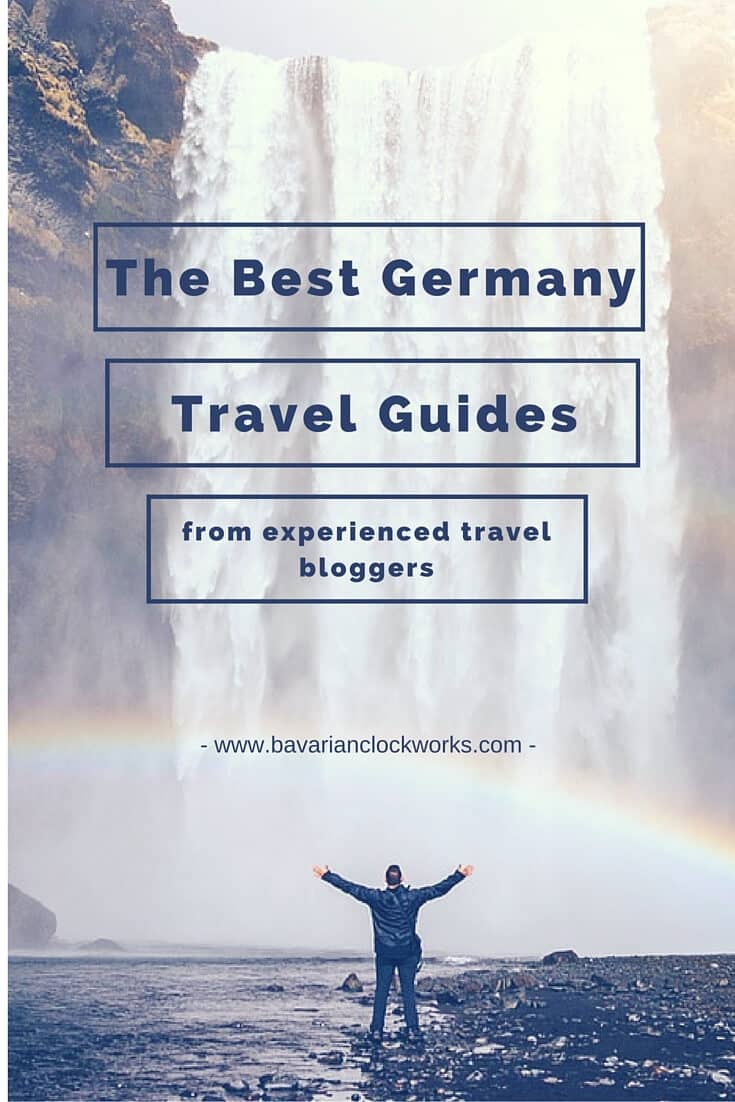
Germany has grown to one of the most popular travel destinations in the world, and in todays information era, it’s no wonder that many of these travellers are doing their research before they head to the airport. Travel guides are one of the most valuable pieces of content someone can find when starting their research into their destination. We’ve read through countless travel guides for Germany, and researched into the type of traveler the authors were, to bring you the 10 Top Germany Travel Guides from Experiences Travel bloggers.
These world travellers each have a unique story behind why they started a travel blog, and the reasons they ended up landing in Germany. Whether they were backpacking through Europe, spent their honeymoon in the beautiful Black Forest , or moved abroad to the city of Berlin, each of them share a unique but informative perspective on travelling Germany.
That Backpacker | Audrey Bergner
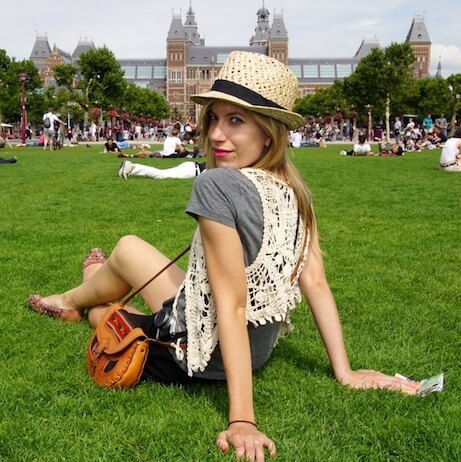
Travelling in Germany
Audrey is a full time travel blogger so spends most of her time on the road. She has done extensive travel throughout Germany, including Berlin, Hamburg, Bebenhausen, Tuebingen, and more. Starting her blog in 2010, she never expected this ti turn into her full time job. But through sharing captivating photos and unique travel experiences covering topics from cuisine and local drinks, to museums and traditions, That Backpacker has grown in popularity, and offers some incredibly valuable guides on traveling Germany.
Follow That Backpacker
Happiness and Things | Silke Elzner

Germany Travel
Silke is based in Sydney, Australia, and has been running her travel blog "Happiness and Things" since early 2013. Silke is originally from Germany, so offers an incredibly in depth perspective of German travel, with a "local" type of insights. The main goal for her blog is to encourage and inspire people to go out and explore themselves, and to help them plan their trips in a way that they will get the most out of the experience. Though she shares travel advice and experiences from all over the world, this write-up captures a very unique essence of what Germany has to offer.
Follow Happiness and Things
Travels of Adam | Adam Groffman

Moving to Germany
Based in Berlin, Germany, though as a travel writer, Adam is regularly traveling. In addition to writing and managing his popular travel blog, travelsofadam.com, Adam also works with Eating Europe Tours on their online marketing. Travels of Adam started in 2009 in preparation for a gap year he was planning, and wanted to keep himself productive while traveling by sharing about his experiences.
Follow Travels of Adam
FlyEatTravel | Miro and Mirko Henzel
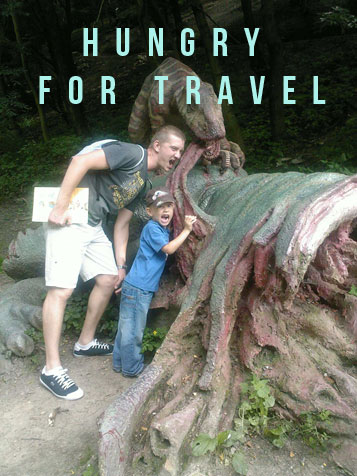
The Ultimate Guide to Munich
Miro and Marko are a father and son team that has travelled to 3 continents, dozens of countries and hundreds of cities, these professionals not only know travel but have an obviously unique dynamic to share. These two share a lot of family friendly travel experiences, from visiting beaches to theme parks to historical museums. This guide to Munich, truly is "ultimate" and for anyone planning to touch down in this city, this is a must have resource!
Follow FlyEatTravel
Women Travel the World | Rosemary Neaves

Travelling Alone in Germany
Rosemary is a writer/blogger that focuses on topics related to women and travel. Based out of New Zealand, she shares both stories from her travels and other women explorers as well. The "Women Travel Blog" was a way for her to not only share stories of women travellers, but to compile information about women owned accommodations and tour businesses emerging around the world, particularly ones that cater to female travellers.
Follow Women Travel the World
Nina Travels | Nina Potuje
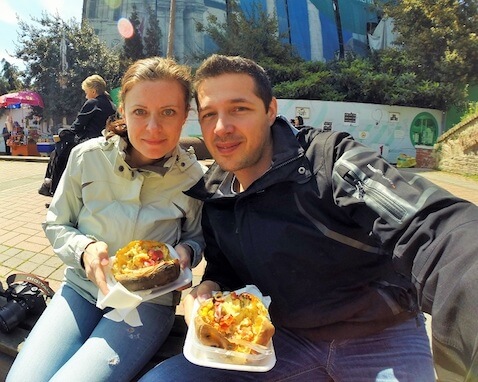
Nina and Simon are based in Slovenia, near the capital of Ljubljana. They started our blog about 4 years ago because their family and friends always wanted to hear about their travels, every time they returned home. A blog allowed them to not answer the same questions or tell the same stories over and over, plus it helped people follow their travels live and keep more up to date. As the blog became more and more popular, they starting including useful travel tips and information for everyone wanting to go travel, drawing from their experiences on the road.
Follow Nina Travels
Grown-Up Travel Guide | Andy Higgs

Germany Travel Guide
Andy is an Englishman that has been living in Trondheim, Norway for the past 17 years. The Grown Up Travel Guide was started in 2012 because he was always being asked for travel advise about his more "grown up" style of travel. What makes Andy's content so unique is he caters to those travellers who don't want to be hauling a massive backpack from hostel to hostel. Andy travel with class, and shares tips and advice for a higher quality of travel.
Follow Grown-Up Travel Guide
Kevin & Amanda - Food, Travel, Photography

Guide to Munich, Germany
Kevin and Amanda are a bright and energetic couple that share everything they can from their travels on their blog. Covering all sorts of topics from food to photography, they have great content that takes a very bright outlook on travel and the countries they've visited. We found this guide to Munich, Germany, to be very well rounded for all of the foodies out their, as they talk about and share 'delicious' photos of German cuisine favourites, mixed in with some popular must see places to visit.
Follow Kevin and Amanda
Oh God, My Wife is German | Obi G. Macaroni

Everything Germany
Obi G. Macaroni (or "OGM" as he prefers) started Oh God, My Wife is German in 2011 after he began compiling lists and notes of all the hilarious things his German wife did or said. When they shared some of these quotes or idioms with their friends, they realized they were not so much inside jokes, but great pieces of humour with widespread appeal. This blog is filled with tons of great insider information about German people and culture. While not necessarily a "travel guide", anyone preparing for a trip to Germany can learn a lot about the people and social memes from OGM's writing!
Follow Oh God, My Wife is German
Angloitalian | Dale Davies & Franca Calabretta
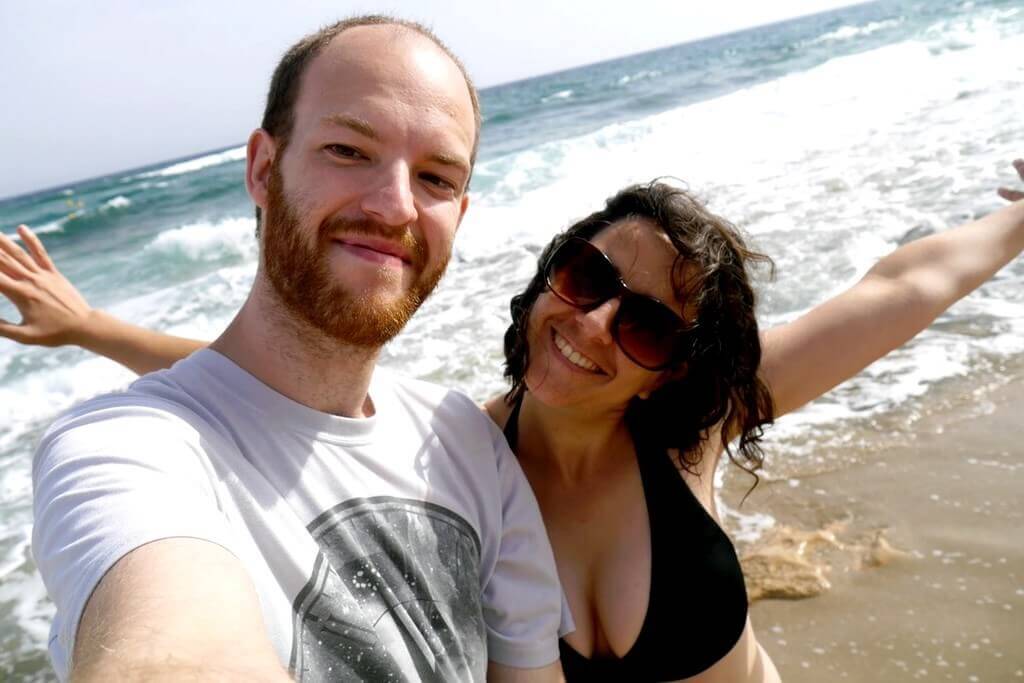
Berlin on a Budget
Dale Davies is a forever smiling Brit who chose to leave his retail hell behind him and make full-time travel a reality, and Franca Calabretta moved away from her home town of Alberobello in Puglia, Italy more than ten years ago, so often feels more at home while one the road. This duo is truly unique for a number of reasons; 1. They are budget travellers (though never let it make them crazy, if something costs 'this' much, they pay 'that' much), 2. They are slow travellers, and 3. They are vegan travellers. This rare combination of travel lead to a special kind of guide focused on Berlin, Germany, and we thought it would resonate with anyone who values these styles of travel.
Follow Angloitalian
Save These Travel Guides for Your Next Trip to Germany
This roundup of excellent Germany travel guides was carefully put together to cover a diverse style of travel experts. If you find yourself resonating with one or two of these travel pro's, then be sure to bookmark their site or follow them on social media, because like all travel bloggers they are always exploring new destinations and releasing travel guides for countries around the globe.
If you or someone you know is planning a trip to Germany, these travel tips can help you navigate your journey, hit the must-see locations, and create an absolutely memorable trip. Bon Voyage!
For all of us who can't make the trip to Germany just yet, check our list of the 12 Best Oktoberfest Events in the USA.
- #Germany travel
- #Germany travel guides
Best Time to Visit
Weather & Climate
Top Cities to Visit
Germany's Islands
How to Get Around
Driving in Germany
Top Attractions
Germany With Kids
Best Festivals
Scenic Road Trips
Where to Go Hiking
Best Beaches
Ski Resorts
Christmas Markets
Food to Try
Beer Regions
Your Trip to Germany: The Complete Guide
Germany Guide: Planning Your Trip
:max_bytes(150000):strip_icc():format(webp)/ebephoto-5b7352c3c9e77c005080d5ad.jpg)
Planning a trip to Germany? Encompassing everything from beers, sausages, and underground clubs to world-class museums, medieval castles, and Baroque architecture, Germany offers a wealth of things to see and do. And whether you want a breath of fresh sea air in Hamburg or to indulge in typical Bavarian gemütlichkeit in Munich , you're bound to find a destination that meets your fancy.
Before you go, use our guide to Germany to find out the best things to do, food to eat, budget tips, and places to stay.
Planning Your Trip
- Best Time to Visit : If you're traveling to see the sites, the months of May and September usually offer less crowds and better weather. However, events like Oktoberfest and Germany's ever-popular Christmas markets draw tourists every year.
- Language: German
- Currency: Euro
- Getting Around : Every corner of Germany is well-connected by car or train, with renowned scenic routes, like the Wine Road , Castle Road, Fairy Tale Road , and German Clock Road. The country has several major international airport options, including Frankfurt Airport and Berlin-Tegel Airport .
- Travel Tip: High travel times are during Easter, summer break (July to August), Oktoberfest in Bavaria, and December, when the Christmas markets pop up.
Things to Do in Germany
Thinking of Germany brings forth images of the majestic Alps, lederhosen-wearing festival-goers, and avant-garde cultural events in the city's capital.
In the north, the capital of Berlin is the center of multiculti (international) Germany, with never-ending events, restaurant openings, and world-famous clubs. Don't neglect the wild coastline of beaches, Hamburg (Germany's second-biggest city) or city-state Bremen . Or go east for some ostalgie (German Democratic Republic nostalgia) in Dresden and Leipzig.
In the southwest, step into the Black Forest —home of the Grimm Brothers—and visit the fairytale-like town of Freiburg. Get to party-capital Cologne for Karneval, or explore the surrounding cities of Wiesbaden, Frankfurt, and Mainz .
With stunning natural attractions and charming cities like Munich, Bavaria has a big personality. Its festive atmosphere comes complete with hearty German meals, traditional beer halls , biergartens , and—of course—Oktoberfest. Don't forget to explore the smaller towns that surround picturesque Lake Konstanz , or medieval villages like Rothenburg ob der Tauber . Need help narrowing down ideas? Here are the top three cities you should check out:
- Berlin is the largest city in Germany and the cultural center of the country. Here, you'll find world-class museums, UNESCO-worthy attractions , and a buzzing nightlife .
- Surrounded by lush greenery, grand medieval castles, and historic streets showcasing Baroque architecture, Munich exemplifies what foreigners think of when picturing a trip to Germany. The biggest event in the country and Munich's Oktoberfest is a two-week festivity that takes place every fall.
- Come late winter, the entire city of Cologne turns into one big, weeklong party for Karneval . Expect costumes, parades, balls, and political commentary. While you're there, be sure to check out the magnificent cathedral and Kölsch bier .
Explore more things to do with our stories on Germany's top cities , the 10 top attractions in Germany , and guide to family travel in Germany .
What to Eat and Drink in Germany
While wurst (sausage) might be the unofficial dish of Germany , German food can appeal to almost any palate. There are dumplings, spätzle (noodles), and loads of potatoes, schnitzel, and schweinshaxe (pork knuckle). International cuisine has also fused with German culture to produce street food favorites like döner kebab and currywurst . And not everything is meat! Vegetarian and vegan food is increasingly popular and even offered in tiny dorfs (villages) around the country.
But you can't talk about German cuisine without bringing up beer. Beer in Germany is not just a drink, it is an institution associated with some of the country's most important locations and festivals. With the oldest continuously-operating brewery in the world, Weihenstephaner , Bavaria has especially embraced the latest in the craft beer movement .
There is also an established wine scene in Germany , with vines dating back to Roman times, particularly around the Rhine and Mosel Rivers. For those that abstain from alcohol, you can find coffee, tea and juices like apfelschorle, along with many other offerings.
To happily eat and drink your way through Germany, read our guides to the best restaurants in Berlin , what to eat at Oktoberfest , and the top 10 foods to eat in Germany .
Where to Stay in Germany
From castle hotels to eclectic hostels, there are a wide array of accommodation options in Germany. Discount hotel options can usually be found around a town's Hauptbahnhof (main train station), with other options like well-established chains and boutique hotels in the city center. There are also luxury spa destinations such as the opulent town of Baden-Baden .
While reserving beforehand is always recommended—especially in the summer high season or Munich around Oktoberfest —you can find accommodations by looking for signs advertising Zimmer Frei (free room) or Pension (B&B).
Discover some of the best places to stay during your visit, including Germany's most unique hotels and top hostels .
Getting There
Many travelers arrive at Germany's biggest airport in Frankfurt , although there are additional airports in Berlin , Munich, and other German cities. The country's biggest cities—including Berlin , Frankfurt , and Munich—offer a comprehensive public transportation system.
Visitors can choose to rent a car and fly down the Autobahn, or take a scenic drive through the country. Don't feel like driving? You can enjoy a relaxing, high-speed train ride on the national train network, Deutsche Bahn , or hop on a bus; there are several services offering low-priced transport to cities around the country and beyond.
Culture & Customs in Germany
Visitors to Germany may be surprised by how easy it is to navigate. Despite German being the official language, many people—particularly in service industries—speak some English and can help you navigate the country (especially if you try using some key German phrases ).
Be prepared for people to be direct to the point of rude, although most people are helpful. Germany is generally very safe , with the main concern being petty crime and theft.
While dining out, you should ask for the bill when you are ready to pay ("Die Rechnung, bitte"). Pay up—with a tip of around 10 percent —when they arrive at your table.
Money Saving Tips in Germany
- Peak travel times are during Christmas, Easter, summer, and Oktoberfest in Munich. Attractions will be at their most crowded and accommodations will be at a premium.
- In Germany, it pays to plan ahead. The further in advance you can book flights, train tickets, rental cars, bus tickets, and accommodations, the cheaper they will be.
- Deutsche Bahn offers many discounted tickets and deals, such as their Länder-Tickets; these allow up to five travelers to move within a state to different destinations at a very low price.
- Many of the cities also offer their own discount cards. Inquire at the tourist office if you plan on visiting multiple city attractions.
Learn more about the cheapest ways to enjoy the country with our best budget travel tips for Germany.
Your Trip to Berlin: The Complete Guide
Lübeck: Planning Your Trip
Your Trip to Munich: The Complete Guide
Guide to Hamburg
Regensburg: Planning Your Trip
The Best Time to Visit Cologne
How to Visit Munich on a Budget
Getting Around Frankfurt: Guide to Public Transportation
Your Trip to Frankfurt: The Complete Guide
The Best UNESCO Sites in Germany
Traveling by Train in Europe: Where, Why, and How
Munich Airport Guide
The Top 11 Things to Do in Stuttgart, Germany
Vienna Guide: Planning Your Trip
The Top 23 Things to Do in Munich
Your Trip to the Czech Republic: The Complete Guide
Germany: The perfect destination with beautiful nature and cultural attractions for every taste
Privacy settings.
Here you will find an overview of the types of cookies used on the website. You can set your consent for each category individually. Further information can be found in the privacy policy .
- Essential Cookies For the use of the website with all functions (e.g. user settings, watch lists, etc.)
- Statistics Statistics Cookies collect information anonymously. This information helps us to understand how our visitors use our website.
- Marketing In order to provide you with the best possible offer in cooperation with our partners, we use marketing tools. For example, in order to use our chatbot, you must activate this setting.
- External contents Required for viewing external media and third-party content. The provider may set cookies for its part. The respective data protection regulations of the provider apply.
- Inspiring Germany
- Cities & Culture
- Nature & Outdoor Activities
- Royal Palaces & Castles
- Experience & Enjoy
Current highlights
- Sustainable travel
- Barrier-free travel
- Easy language
- Federal states
Old Towns with UNESCO World Heritage status
Discover now
Classical Art Museums: Genuine Masterpieces
Castles and palaces: fairytale film settings, the latest trend: travelling out into the countryside by train., 16 highlight natural landscapes, 52 unesco world heritage sites and so much more, must-see museums, enjoy vegan and eco-sustainable city getaways, a 48-hour trip is full of possibilities, read our latest articles here, excellent hiking experiences in quality regions, creative and refreshing: the 'workation' travel trend, children are welcome: where the little ones take the main stage, off the beaten track: 12 insider tips for distance hikers, 10 palaces and castles off the beaten path, slow travel by train: 9 gorgeous rail routes, 250 years of caspar david friedrich: pathways of history, university cities: youthful vibes and colorful atmosphere, capitals of culture: a grand entrance on the european stage, hotspots of automobile history, baroque cities: travel back in time to the 17th and 18th centuries, bauhaus: follow in the footsteps of this world-famous art school, nightlife cities: paradise for night owls, football hotspots: cities with an extra kick, action and adrenalin: tours for adventurers.
Aerial view of the Dauner Maar in the Volcanic Eifel ©AdobeStock (RalfenByte) Geological time travel: land of volcanoes To the overview
Experience nature and national parks as completely accessible
Pilgrimage: slow down, meditate, reflect, along the magic of peaceful lakes and wild river landscapes, romantic or fairytale: german holiday routes, the world of german animals: more than fox and deer, top spots for astronomy fans: starry skies, 16 highlights in germany, from medieval banquets to the song of the nibelungs, a journey back in time to the baroque era, top tips for special holiday experiences, where world history was written, dine and sleep in regal style, this is the taste of germany, wine experiences from the ahr to württemberg, craft beer: hop heroes everywhere, germany has a (wine) queen, an a to z of health and wellness, health spas and health resorts - a little time out, wine hikes: 5 regions for connoisseurs, discover german originality, chemnitz: european capital of culture 2025, 52 unesco world heritage sites, summer of football: germany 2024, caspar david friedrich, simply feel good, germany’s top 100 survey, journey of discovery by train, travel from austria to germany with öbb, travel from switzerland to germany with sbb, from france to germany at high speed, barrier-free, experience germany barrier-free, all four seasons enchant in their own way.
The sun is warming the air, the days are getting longer, everywhere things are budding and blossoming: it's spring in Germany - time for getaways, blossom festivals, asparagus feasting and popular Easter traditions.
Summer At Last: Beer Gardens, Swimming Fun, Strawberry Ice Cream
Golden sunshine, colourful forests: the Indian summer can also be found in Germany. An ideal time for active holidaymakers and wellness fans. And for epicures, since this is harvest time.
Winter is the favourite season for any romantic. Outside, snowed-in forests and frozen lakes beckon. Inside, it feels cosy with baked goods, mulled wine and candlelight.
Follow us on Instagram
@germanytourism
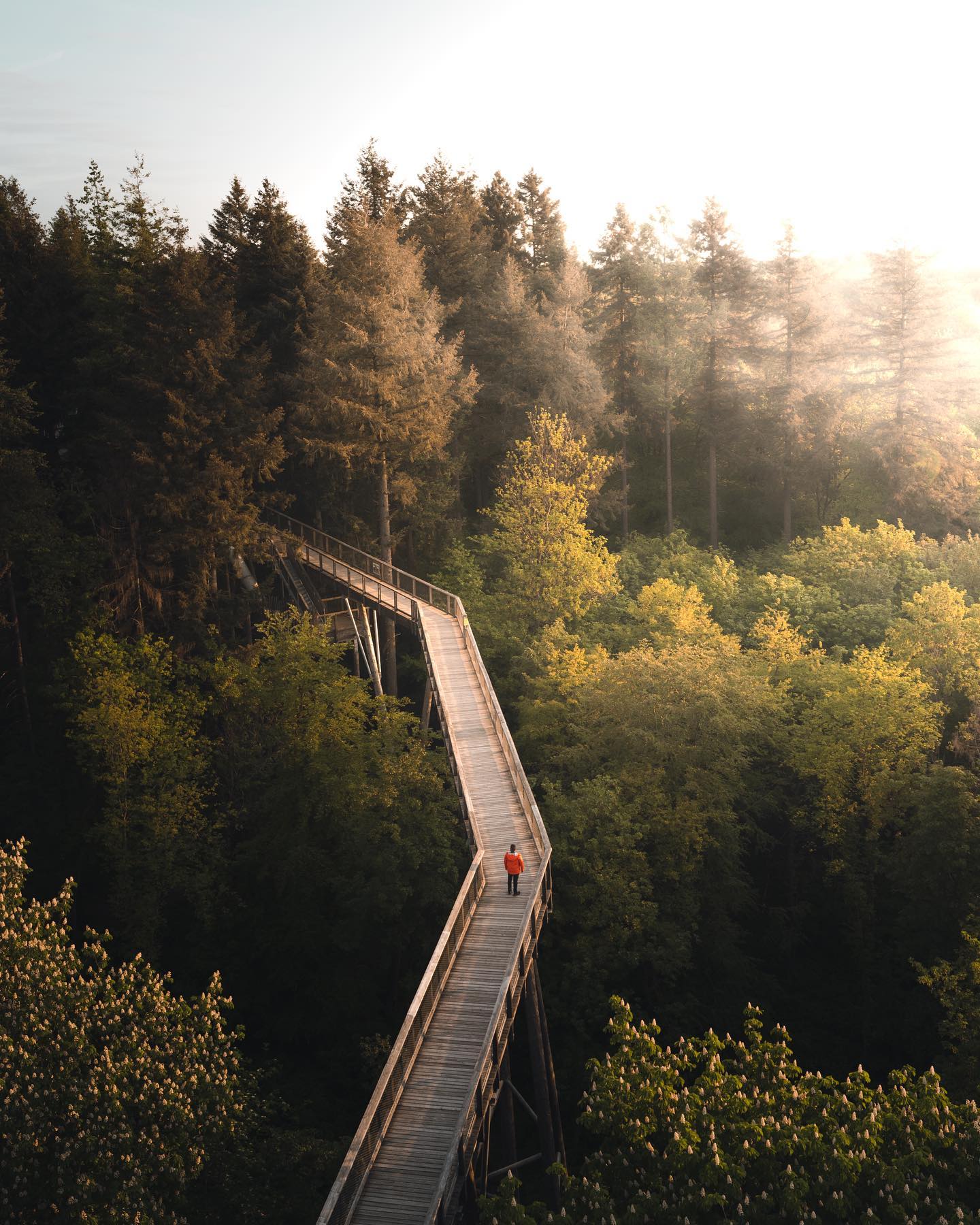
Discover Germany
You're almost there
You will shortly be receiving an email to confirm your subscription. Please remember to click on the verification link so we can authenticate your email address.
We look forward to sending you all the latest news and information about Germany.
You have clicked on the confirmation link. Your registration is now complete. You will now begin to receive our newsletter.
We're sorry to see you go...
You have been unsubscribed from the Destination Germany newsletter. Feel free to continue using our digital channels. We hope to see you again soon!
Your participation has been confirmed.

How to Plan a Trip to Germany (Your Step by Step Germany Trip Planner for Traveling to Germany for the First Time!)
This post may contain affiliate links. Read my disclaimer policy.
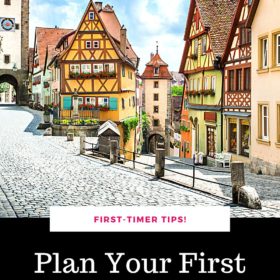
You’ve decided to visit Germany. Hooray! Whether you’re looking for bustling cities, sandy beaches, alpine hiking, intriguing history, fairytale castles, delicious food, fun festivals or friendly people, Germany is the perfect European vacation destination.
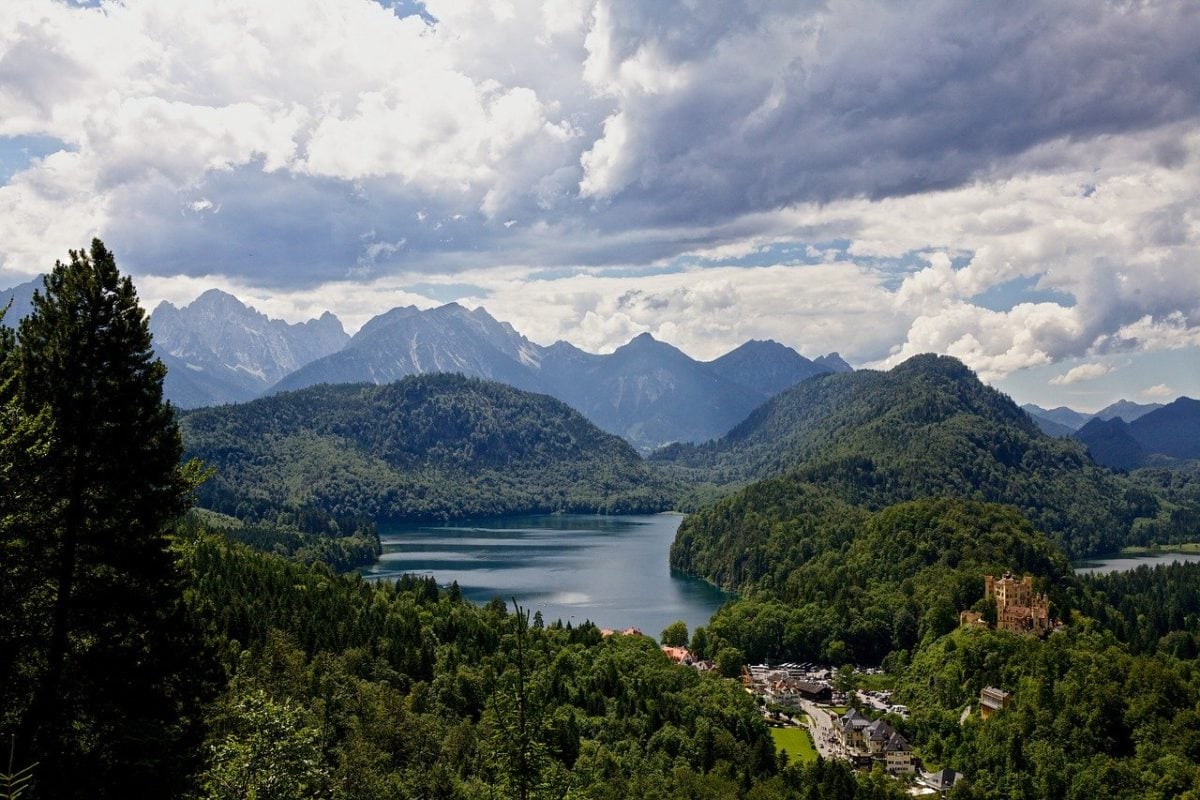
Not only is there a tremendous amount to do, see, eat, and experience in Germany, you can easily combine a visit to Germany with other European destinations. Germany is easy to get around in by train, bus, car or bike, and many people speak English.
You’re probably wondering…where do I even begin with planning my dream-come-true vacation to beautiful Deutschland?
Where should I go? Is it better to take the train or rent a car? What are the must-see cities and attractions? Which ones should I skip? Where’s the best place to stay? What should I eat and drink?
Join our FREE Germany Trip Planning Facebook Group!
Don’t worry! We’re here to help you narrow down your travel options, plan your itinerary , and book your trip with ease. It’s actually quite easy to plan a trip to Germany by yourself with the information in this article, on this site and with some help of some online booking engines.
To reduce overwhelm and help you plan your ideal vacation, we cover everything you need to know to get started planning your trip to Germany . And if you have any questions, you’re welcome to ask us in our free Germany travel Facebook community or send us an email .
Ok, let’s begin!
- 1 Meet Your Germany Travel Guides
- 2 Overview of Regions
- 3 Where to Go in Germany: Itineraries and Planning
- 4 Want more itinerary ideas? Are you a big city person? Check out…
- 5 Prefer smaller historic, picturesque cities? Check out…
- 6 What about cute little villages with “Fachwerk” (half-timber) architecture? There are so many! Here are a few ideas…
- 7 Looking forward to visiting fairytale castles?
- 8 Like islands and water? Take a look at…
- 9 What about nature, hiking, and national parks? Consider…
- 10 Passports & Visas
- 11 What’s the Best Time to Go to Germany?
- 12 Germany Booking Timeline
- 13 What’s the Weather in Germany Like?
- 14 What Time is it in Germany Right Now?
- 15 What’s the Best Way to Get to Germany?
- 16 Where to Stay in Germany
- 17 Getting Around Germany
- 18 What to Wear in Germany
- 19 My Absolute Favorite Travel Clothing Items
- 20 What to Eat in Germany
Meet Your Germany Travel Guides
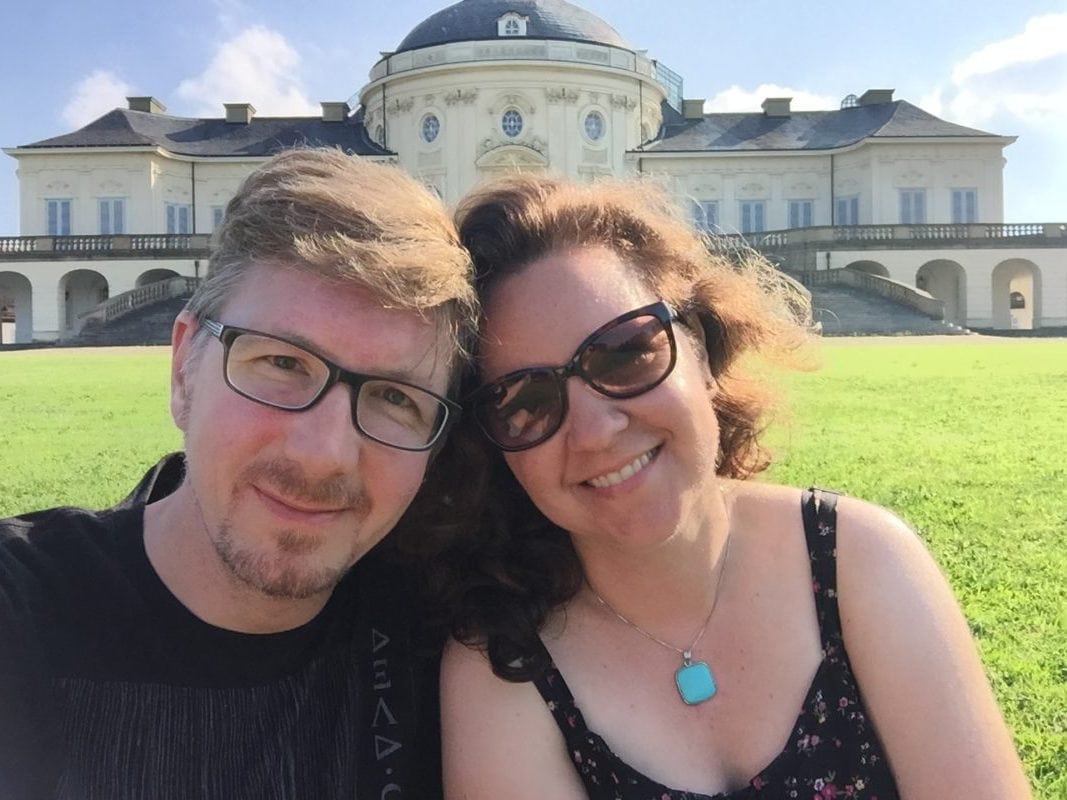
Hi, we’re Cate and Aaron, and we love helping people plan amazing trips to Germany. While Aaron has visited Germany several times (and is our chief rental car driver!), I lived there for 4+ years, have spent nearly 30 years of my life going back and forth between the US and Germany, and have traveled to all corners of the country.
I also taught German for several years and have a PhD in German Applied Linguistics, which means I’ve gotten to know Germany from several different angles. We’re so excited to help you plan your dream trip to Deutschland!
Overview of Regions
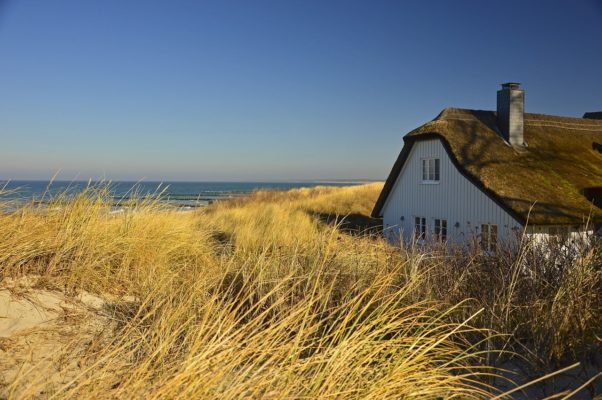
Northern Germany – Hamburg is the largest city in this region but there are other must-visit smaller cities like Lübeck , Stade, Bremen, and Lüneburg. Northern Germany also has the beautiful beaches of the North Sea and the Baltic Sea, the Wadden Sea national park, and the islands of Sylt, Flör, and Heligoland. Northern Germany is flat and great for biking. It looks so different from Bavaria! Combine a trip to Denmark with a visit to northern Germany.

Eastern Germany – Berlin is of course the feature city in this region, but Dresden, Leipzig, Magdeburg, Quedlinburg, Bautzen, Erfurt, and Weimar are smaller must-see cities. There’s also the Harz mountains, Swiss Saxony national park , Saalfeld Fairy Grottoes in Thuringia, Wernigerode castle, the Schwerin Palace, and Sansouci in Potsdam. Combine a trip to eastern Germany with a visit to Poland or the Czech Republic.
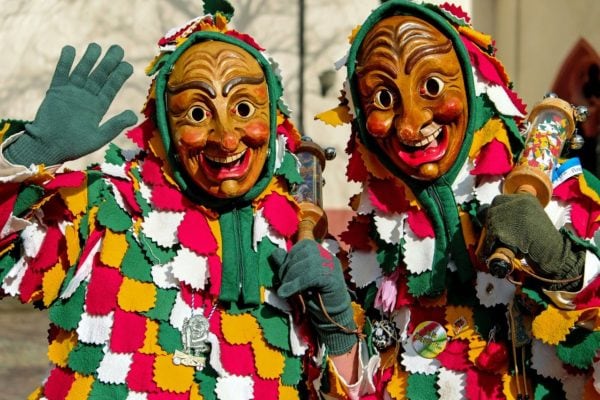
Central Germany – This region offers bustling cities like Cologne , Düsseldorf, and Frankfurt , smaller cities like Aachen, Wiesbaden, Koblenz, and plenty of cute villages. There’s also the Rhine and Mosel river areas, vineyards, the Eifel national park, castles , and beautiful rolling hills. Combine a visit to central Germany with a trip to the Netherlands, Belgium, Luxembourg, or France.
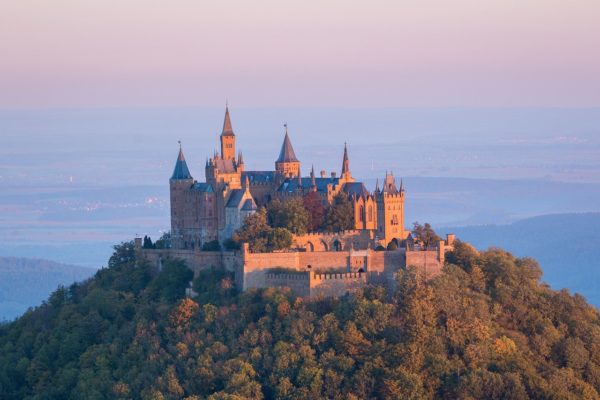
Black Forest/Baden-Württemberg – Stuttgart is the largest city in this region, and smaller cities like Baden-Baden, Heidelberg, Freiburg , Tübingen, and Ulm also warrant a visit. Vineyards and wineries, spa towns, castles (such as Hohenzollern or Lichtenstein ), waterfalls, Lake Constance, cute villages, and hiking are also features of the Black Forest /Baden-Württemberg region. Combine a trip to France or Switzerland with a visit to southwestern Germany.
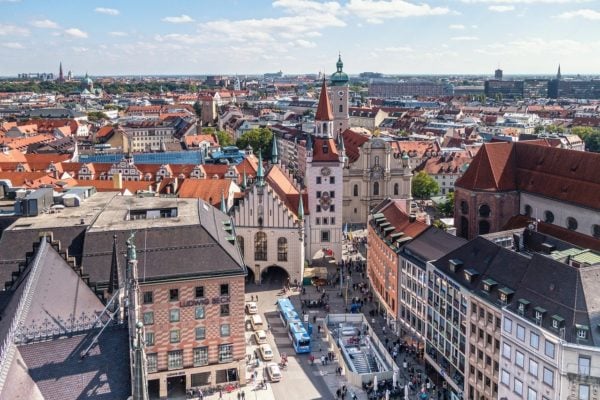
Bavaria/Alps – Munich is the feature city of Bavaria ( Oktoberfest! ), along with smaller cities like Regensburg, Nuremberg, Würtzburg, Bamberg, and Passau. There’s also the famous Zugspitze, Eagle’s Nest, Neuschwanstein castle , and Chiemsee lake, as well as lovely alpine towns like Garmisch-Partenkirchen and Berchtesgaden . Combine a trip to Bavaria with a visit to Austria, Czech Republic or Switzerland.
Click here for what to do in Munich!
Where to Go in Germany: Itineraries and Planning
There’s so much to see and do in Germany! Here’s some info to get you started on your itinerary (you can also check out this article with 10-14 day itinerary ideas ).
If you have just a few days, I recommend focusing on one city and a day trip (e.g., Hamburg with a day trip to Lübeck or Munich with a day trip to Neuschwanstein ).
If you have a week, you could visit 2 cities (plus 2 day trips) in different parts of Germany and allot one day for travel between cities (e.g., a few days in Munich with a day trip to Chiemsee, travel day to Berlin, then a few days in Berlin with a day trip to Potsdam). Or you could spend a week touring one region of Germany (e.g. the Black Forest or the Rhine and Mosel areas).
If you have two weeks, you can see a lot of Germany! You could, for example, start in Berlin, then visit Hamburg, take a day trip to Lübeck , then visit the Rhein river area, stop in the Black Forest , and end your trip in Munich. You could easily do this trip via train or car. Take a look at a couple 10-14 day itineraries we’ve outlined to give you a sense of how much you can do in that amount of time.
Grab our FREE Germany Trip Planning Checklist Now!
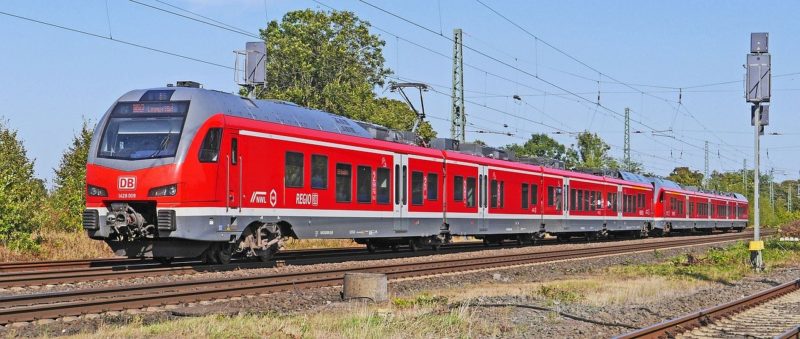
How long does it take to travel around Germany by train?
It’s quick and easy to travel around Germany by train. Here are some sample travel times to give you an idea:
- Berlin to Hamburg – 1 hour 45 minutes
- Berlin to Munich – 4 – 4 1/2 hours
- Hamburg to Lübeck – 1 hour
- Hamburg to Cologne – 4 hours
- Hamburg to Munich – 5 hours 40 minutes
- Frankfurt to Nuremberg – 2 hours
- Stuttgart to Munich – 2 1/4 hours
- Munich to Berchtesgaden – 2 hours
I use and recommend the official German rail system website to check travel times and book train tickets (point-to-point, saver tickets, and discounted regional tickets). I book all of our train tickets here!
Want more itinerary ideas? Are you a big city person? Check out…
- Cologne / Düsseldorf
Prefer smaller historic, picturesque cities? Check out…
- Lübeck
- Würtzburg
- Tübingen
What about cute little villages with “Fachwerk” (half-timber) architecture? There are so many! Here are a few ideas…
- Wernigerode
- Quedlinburg
- Dinkelsbühl
- Rothenburg Ob der Tauber
- Berchtesgaden
Looking forward to visiting fairytale castles?
- Neuschwanstein & Hohenschwangau (the “Disney castle”)
- Castles near Frankfurt
- Castles near Cologne
- 16 castles to visit in Germany
Like islands and water? Take a look at…
- Husum (North Sea)
- Timmendorferstrand (Baltic Sea)
- Lake Constance (Bodensee)
- Titisee
What about nature, hiking, and national parks? Consider…
- Schleswig-Holstein Wadden Sea National Park
- Hamburg Wadden Sea National Park
- Lower Saxon Wadden Sea National Park
- Jasmund National Park
- Western Pomerania Lagoon Area National Park
- Müritz National Park
- Lower Oder Valley National Park
- Harz National Park
- Kellerwald-Edersee National Park
- Hainich National Park
- Eifel National Park
- Hunsrück-Hochwald National Park
- Saxon Switzerland National Park
- Bavarian Forest National Park
- Berchtesgaden National Park
- Black Forest National Park
How about a road trip? Why not drive the…
- German Timber-frame Road (northern to southern Germany)
- Romantic Road (Bavaria and Baden-Württemberg, north/south)
- Castle Road (Bavaria to Baden-Württemberg, east/west)
- Wine Road (Palatinate wine region, north/south)
- Fairytale Route (from Hanau to Bremen, south/north)
- Black Forest High Road (Baden-Württemberg, north/south)
- Alpine Route (Baden-Württemberg to Bavaria, east/west)
- Volcanic Route (Rhein River and Eifel mountains, north/south)
Passports & Visas
If you’re from the US, Canada, Australia, New Zealand and many other countries, you do not need a visa to enter Germany (at the time of publishing this article). You do, however, need a valid passport with at least 3 months validity AFTER your planned departure date.
Play it safe and have MORE than 6 months validity on entrance to Germany! You also need at least 2 blank passport pages at the time of your arrival. Check your passport NOW so you have plenty of time to renew it if needed. Do not wait until the last minute to do this (been there, done that – it’s expensive and stressful)!
Germany is part of the Schengen zone, which means you can stay in Germany for up to 90 days without a visa. If you visit other countries in the Schengen zone before or after Germany, that counts towards your 90 days and reduces the amount of time you can spend in Germany. While on the automatic 90-day tourist visa you may not work but you can engage in business.
What’s the Best Time to Go to Germany?
The best time to visit Germany is whenever you can get there! No, seriously! There’s no best time of year for your Deutschland tour because there’s no bad time of year to visit. I’ve traveled all over Germany in spring, summer, fall, and winter and enjoyed every single season (Cate here, writing this article, by the way).
When should you travel to Germany? Well, it just depends on what you’re looking for…
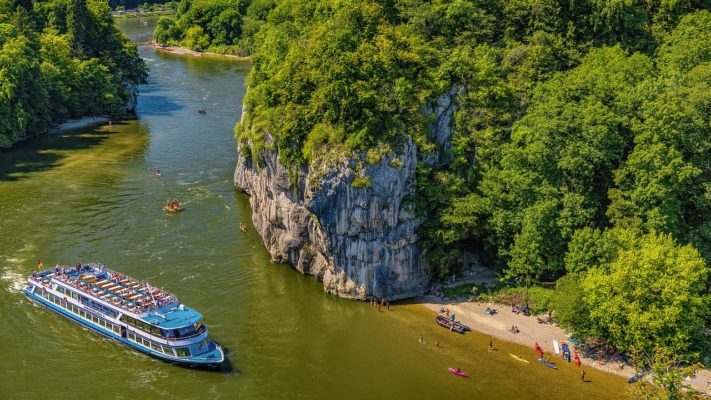
Summer is when you’re most likely to have warm (even hot) sunny weather. But it’s not guaranteed. I’ve had hot steamy summers in Germany (like last summer when we traveled during a heat wave), cold rainy summers, and everything in-between.
Fortunately, even if you encounter rain in the summer it likely won’t last more than a few hours or at most a couple days before you’ll see the sun again. The benefit of summer travel is that you’ll have nice long days for sight-seeing because the sun doesn’t fully set until about 10pm. If you’re interested in beaches or mountains, summer is a great time of year to visit.
Note, however, that not all hotels, cars, and restaurants use A/C. If you really hate hot weather, play it safe and avoid Germany in the middle of the summer. (Although, to be honest, in all of the summers I’ve spent in Germany, there have only been a few days in the summer that I’ve found truly unbearable without A/C.) If you must have A/C, be sure to confirm that your room or rental car has it.
Summer can also be a more crowded time to travel, since so many families make use of summer break. Book accommodation early for the most options and best prices!
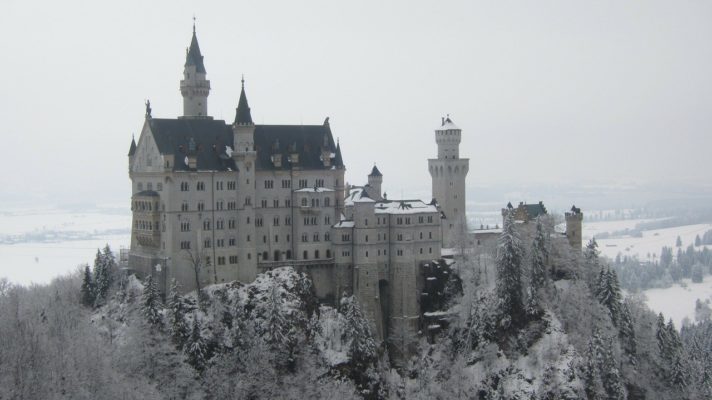
Winter travel in Germany can be cold but beautiful. One of my favorite times of year to travel in Germany is during the four weeks of advent at Christmas.
Yes, it gets dark early (by 5pm or a bit earlier) but the lights, decorations, and Christmas markets more than make up for it. Plus, you can go skiing and enjoy other winter activities.
I was just in Germany for a couple weeks in December and the weather was perfectly fine 90% of the time. There was only one day where the weather was truly miserable and even on that day there were enough breaks in the weather to enjoy my day trip exploring a new town and a new Christmas market.
Germans don’t let winter keep them from enjoying outdoor activities, hiking to strolling through a Christmas market or enjoying a coffee at an outdoor cafe. Don’t let it stop you, either! Just bundle up, grab a mug of Glühwein, and you’ll be fine!
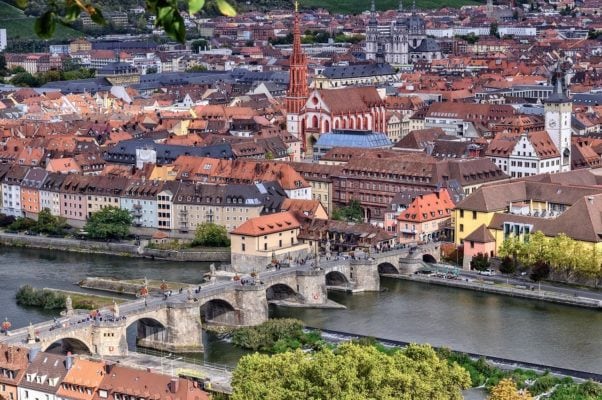
Fall and spring are also great times to visit Germany. In the fall you’ll enjoy crisp mornings and cool evenings and seeing the leaves change color.
In the spring you’ll experience the joy everyone feels when they can once again sit outside at cafes and restaurants. The weather can vary quite a bit day to day but if you travel late in the fall or early in the spring you can score great deals and will find smaller crowds.
Germany Booking Timeline
I’ve booked flights, accommodations , and tours and tickets a few weeks before my arrival, and I’ve booked them several months in advance. Book early if you:
- Are traveling during peak summer, Christmas market or ski season
- Have very specific travel dates or lodging, transportation, sight-seeing needs
- Are visiting big cities
- Are on a tight budget
- Are visiting during a special event, such as Oktoberfest
I usually start looking at my options as early as possible so I can figure out what a good deal looks like for my travel dates. I then set up flight alerts and start earmarking AirBnB’s and hotels. I begin booking whenever I find something that meets my needs and fits my budget.
Here’s a general booking timeline to get you started:
6-12 months in advance:
- Research and book your international flights
- Research travel insurance
- Plan your travel itinerary and dates
- Research and book flights within Germany or Europe
- Research travel options within Germany (rental car, train bus, etc)
- Research accommodation options (book if you find great deals or if availability is limited)
- Make sure your passport is up-to-date (you need at least 6 months left on it when you enter Germany) and apply for a new one if it isn’t
3 – 6 months in advance:
- Book accommodation
- Book trains or busses (usually 90 before your travel dates is the earliest you can book but always check if you can book earlier – the best deals go fast)
- Book rental car
- Book tours, events, and tickets
- Book travel insurance
- Review your travel wardrobe and gear and purchase the items you need
1 month in advance:
- Book any remaining attractions and tours
- Book airport transfers or plan how you will get to your lodging
- Purchase a sim card for phone or check how you can use your current phone service in Germany (e.g., I can use my Verizon phone service for a $10/ a day fee)
1 week in advance:
- Print out or ensure that you can easily access all bookings, tickets, and travel info on your phone (make sure you can access everything without data or wifi!)
1 day in advance:
What’s the Weather in Germany Like?
What will the weather be like when you visit Germany? Well, it depends on the time of year and where you are. Weather in Germany can be somewhat unpredictable no matter the time of year.
I recommend being prepared by wearing layers, packing an umbrella or rain jacket, and remembering that the weather will likely change soon. And, as I said earlier, don’t let any kind of weather stop you from enjoying Germany!
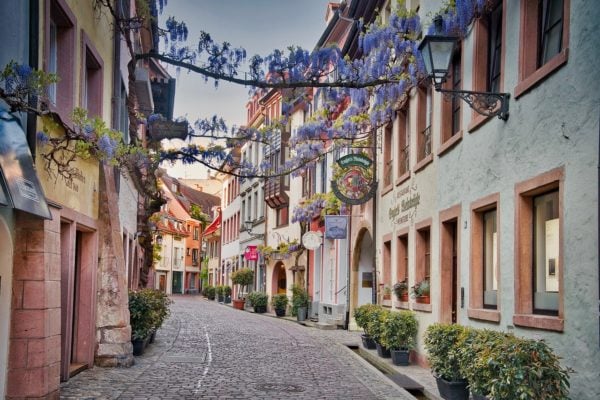
Summer. Germany comes alive in the summer with everyone and their dog (literally, there are dogs everywhere) outside enjoying the nice weather. Average high in the summer is 80F.
Be warned…it can rain in the summer but it doesn’t usually last that long. It can also be super hot in the summer…but again, scorching temperatures doesn’t usually last that long.
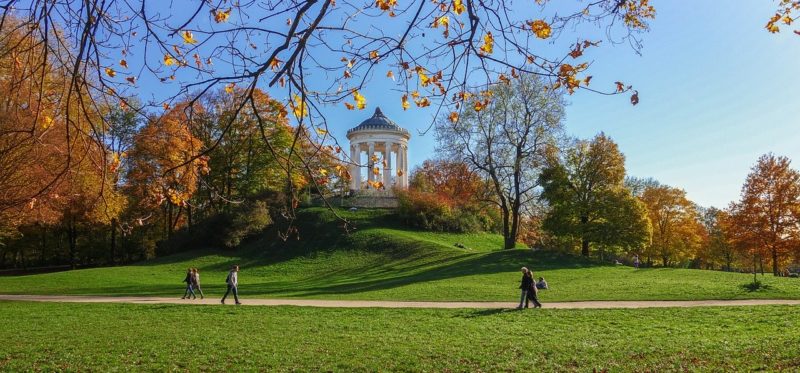
Fall. Such a beautiful time of year in Germany with the leaves changing colors and cool, crips mornings and evenings and warm days. One of my favorite times of year in Germany! In September, the average high is 67F and by November it’s around 47F.
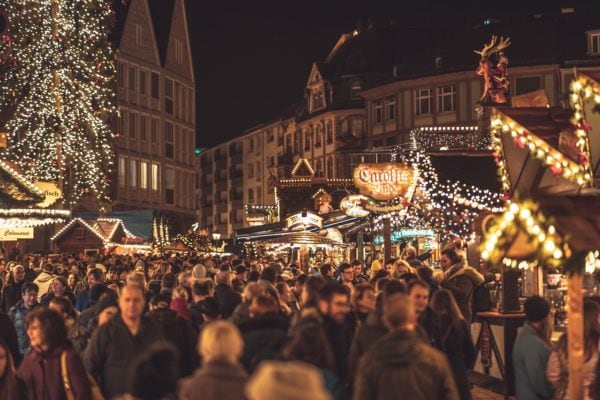
Winter. Bring your scarf, hat, and mittens because German winters can get cold! Average temps hover around freezing with warmer days in the 40s/50sF. While it can snow anywhere in Germany, you’ll find the most snow in southern Germany. Winter weather doesn’t mean everyone hides inside, though. On the contrary! Do what the Germans do – bundle up and enjoy the outdoors.
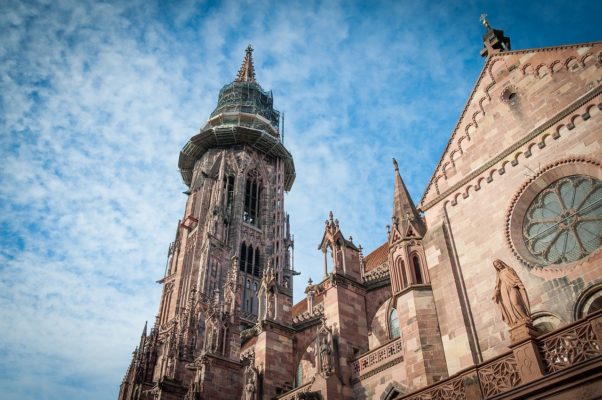
Spring. I love being in Germany on the first spring day because everyone heads outside to enjoy the sun and everyone is in such a good mood! Early spring will see a high around 47F but by late spring it’s more like 67F.
What Time is it in Germany Right Now?
Germany is in the Central European Time zone (CET) or UTC+2. It’s 6 hours ahead of the US EST, 7 hours ahead of CST, 8 hours ahead of MST, and 9 hours ahead of PST.
Daylight savings in Germany in 2020: time “falls back” on October 25 and “springs forward” on March 29. Write these dates in your calendar so you don’t accidentally miss any flights or trains (been there, done that)!
What’s the Best Way to Get to Germany?
It depends on where you’re coming from and where you’re going. When flying from outside Europe, many people fly into Frankfurt (FRA), the largest airport in Germany and one of the largest and busiest airports in Europe.
The benefit of flying into Frankfurt is that it has a ton of direct flights, and once you reach Germany you can easily take a commuter flight, train, bus or rental car to your final destination.
The downside? The airport is huge, busy, and I’ve noticed prices into Frankfurt have been higher than regional airports in Germany.
I used to always fly into Frankfurt , and then take a train, bus or rental car to my final destination. But recently? I’ve found that it’s easier (and sometimes cheaper) to bypass FRA and fly into other German cities, such as Munich , Hamburg , Berlin , Düsseldorf ( Cologne ) or Stuttgart .
You might even be able to find a direct flight from the US (I’ve flown direct Atlanta – Stuttgart and Washington DC – Munich, for example). Otherwise, you’ll change planes somewhere in Europe and take an easy 1-3 hour flight to Germany. We’ve changed planes in London, Amsterdam, Stockholm, Paris, and Vienna, for example. You could also fly into another European city and then take a train, bus or rental car into Germany.
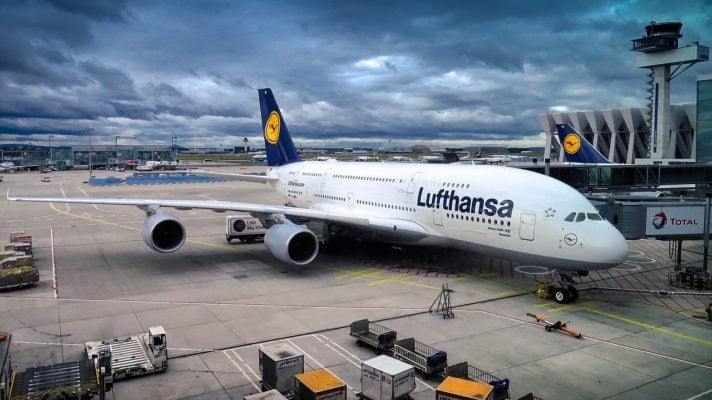
A Few Notes About Flying Into FRA (Frankfurt Airport) and Traveling Onwards
If you take a commuter flight from Frankfurt (FRA) to your final destination in Germany, you’ll go through passport control in FRA and then to your connecting gate. Super easy. Most flights from FRA to elsewhere in Germany are an hour or less in duration.
If you’re traveling onward by train from Frankfurt, you can transfer to the train right at the airport below Terminal 1. If your train leaves from the main station in Frankfurt, you can either take the S-bahn or a regional train from the airport to the Hauptbahnhof (main station) in about 10-15 minutes.
Important: you’ll find cheap “savings fare” train ticket prices if you book your ticket online well ahead of your arrival. Be sure to book your ticket for at least a few hours after your flight’s arrival time into FRA.
Be warned: getting through passport control, customs, picking up your checked luggage, and making your way to the train station can take longer than you think. And if your plane from the US (or elsewhere) is delayed…well, it’s easy to miss your train and have to buy a new, much more expensive ticket on the spot. Personally, I would book a saver fare train ticket for a train that leaves 3-5 hours after my international flight’s arrival time – at the minimum. And that’s still cutting it close if there’s any kind of delay!
Tip: If you want maximum flexibility and peace of mind, buy a “flex ticket.” You’ll pay more but these tickets aren’t tied to a specific train. So if your flight is five hours late, you can take a train later in the day without changing your ticket or losing money.
These tickets also you to stop somewhere en route to your final destination for a couple hours, and then get back on a different train (e.g., stop in Stuttgart for a couple hours on your way to Munich). So if you arrive on time, you can work in a short excursion on the way to your final destination (store your luggage at a locker in the train station). If your flight is late, just go directly to your destination. These tickets are also refundable before the first day of travel.
For ultimate flexibility and peace of mind, spend the night in or around Frankfurt and book a saver fare train for early the next morning.
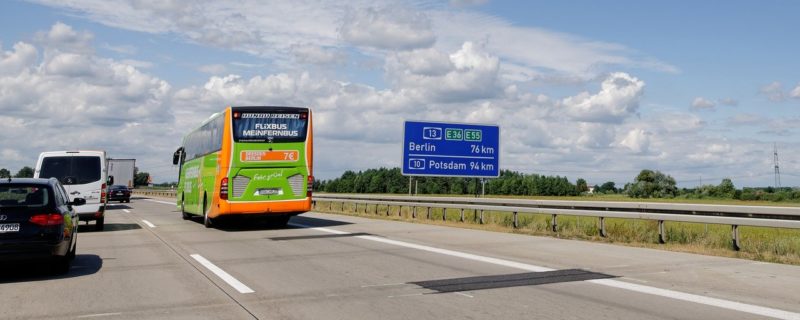
You can also easily pick up a rental car at FRA and drive to your final destination. Aaron and I have done this a few times and never had any problems.
The one problem we do have? Staying awake long enough to drive to our destination! We usually keep the driving distance to an hour or two on the day of our arrival and drink a lot of coffee. Sometimes we pull over at rest area and take a nap.
If you want to rent a car at the airport and are concerned about driving while jet lagged, consider picking up the car and then spending the night in nearby town, such as Wiesbaden (I spent an enjoyable few days there before catching my flight home a few years ago).
If you’re catching a bus from the city center to travel onwards, S-bahn 8 or 9 will zip you into town quickly and cheaply in about 10-15 minutes. Buy tickets at any of the ticket machines before you board the S-bahn.
You can also catch busses into Frankfurt and elsewhere in front of Terminal 1 (arrivals level) and Terminal 2 (level 2).
You’ll find taxis in the same general area. It takes about 20 minutes to get into downtown Frankfurt by taxi.
Flying to Germany from Elsewhere in Europe
These days it’s super easy and generally inexpensive to fly to Germany from all over Europe. Here are a couple tips:
When booking your international flight, you might be able to include a stop-over in the city where you’ll transfer to your Germany flight. I used to do stopovers in London, and a couple years ago I did an awesome stopover in Iceland. TAP also offers free stopovers in Lisbon or Porto.
I highly recommend looking into both flying and taking a train (or bus) into Germany, especially if you’re arriving from a neighboring country and not on a stopover. Of course, if you’re flying from cities like London, Barcelona, Rome or Oslo, flying is the best option. But if you’re traveling from Paris, Vienna, Copenhagen or Prague, for example, a train might be the better way to go.
Even if the actual flight is only an hour, you have to factor in the time it takes to travel to the airport, go through security, potential flight delays, and then traveling to your lodging once you land. A 5- or 6-hour train ride might actually take less time than a 1-hour flight when you total it all up!
Traveling to Germany By Train, Bus or Car
Traveling to Germany from other European countries by train, bus or car is easy. Train travel is generally simple, comfortable, and quick. Most train stations in Germany are located in the city center, so it’s easy to get to your lodging via taxi or public transportation.
If renting a car in another country, just double check that you’re authorized to take the car out of the rental country. If you are, you’ll have no problems crossing the boarder and driving around Germany.
Busses tend to cost less than trains, and you can find some amazing deals, but to be honest, I still prefer taking trains over busses. Trains are more comfortable, you can get up and walk around, and they’re almost always faster than busses. Plus, they don’t get stuck in traffic.
Tips for Booking the Best Flights with Cash or Miles:
- Start looking for flights early, especially if you’re traveling during peak season. I booked our mid-June flights in late January. While we found low mileage flights for very specific weekend travel dates, we could have found better flight times had we booked even earlier.
- Track flights through google or look at options in Hopper so you’ll know a good deal when you see one.
- Look for last-minute deals. When I decided to go to Germany in December I didn’t start looking for flights until early November (the trip was a last-minute decision). Because I was flexible on travel dates and went early in the month, I found excellent tickets using miles. This doesn’t always happen, but it never hurts to look for deals, even if your travel dates are right around the corner.
- Fly in or out of smaller regional airports (e.g., Berlin , Hamburg , Stuttgart , Munich , Düsseldorf). When I booked our flights for mid-June I couldn’t find anything into Frankfurt using miles. But I did find flights into Berlin and out of Stuttgart, and that actually worked even better for that trip ! For my recent December trip , I found that flying in and out of Stuttgart used the lowest amount of miles and had the best schedule. I’ve also flown into Hamburg and Munich airports.
Where to Stay in Germany
Germany has so many options for lodging:
- Vacation rentals (e.g., VBRO, AirBnB)
- Hip boutique hotels
- Quirky hostels
- More traditional HI hostels
- Large hotel chains
- American-styles hotels (Hilton, Marriott, etc)
- Family-run Pensionen (bed and breakfast)
- Camping (RV and tent)
When we’re in Germany we typically opt for AirBnB (I like having a kitchen to make breakfast) or a smaller family-run Pension or boutique hotel. We used to stay in hostels when we was younger (they’re pretty nice in Germany) but even then I found Pensionen to be very affordable – sometimes more affordable than hostels – especially when traveling with one or two other people. If we’re spending the night near an airport or train station and want convenience and ease we’ll stay at a larger chain hotel .
Whether you’re looking for luxury or budget accommodations, you’re sure to find what you’re looking for in Germany! To help you get started, check out our Germany hotel guides.

Breakfast is often included with lodging in Germany (but not always). Sometimes breakfast will feature fresh bread or Brötchen (delicious German rolls), cold cuts and cheese, butter and jam, and tea and coffee. Other times there will be an extensive breakfast buffet that includes things like yogurt, museli, a variety of breads, meats, cheeses, and even hard-boiled eggs. You’re unlikely to find things like omelets, bacon, pancakes, waffles, and hot oatmeal.
If you’re looking to save money on lodging, book rooms with a shared bathroom. (This is typically only an option in smaller or older hotels and not an option I come across as often anymore.) Sometimes that will mean sharing a full bathroom with other guests on your floor, and other times you’ll have a sink and/or shower in your room and will share a toilet located in the hallway. Shared bathrooms are more common in smaller Pensionen than in hotels.
These days I prefer the convenience of having a full bathroom in my room but I’m not averse to sharing a hall bathroom when needed (takes me back to my younger backpacking days – ha!). I’ve never had to wait to use a shared bathroom or had any trouble with them. Sometimes there are two or more bathrooms per floor. If you do opt for a shared bathroom, bring flip-flops!
Hostels can be a great option for families, as many offer family rooms. Hostels typically offer a simple breakfast and sometimes dinner. While accommodations are simple, some hostels can be in spectacular locations. The hostel in Bacharach, for example, is in an old castle on a hill and offers a gorgeous view of the town below and the Rhine river!
Getting Around Germany
One of the benefits of traveling in Germany is that it’s super easy to get around the entire country. You have so many transportation options.
You can rent a car and drive from place to place. Or you can stick to trains and busses. Or ride a bike – there are tons of bike paths throughout Germany.
If I’m primarily visiting big cities I prefer taking the train or a bus to get from one city to another. When I spend more time in smaller cities or want to take day trips to harder to reach places, I prefer having a car.
For our recent summer trip to Germany, we rented a car at the Berlin airport and returned it to the Stuttgart airport. We didn’t take trains or busses at all. We got a car so we could go to places that aren’t as easily (or quickly) accessible by train. We didn’t use the car every day, though. We walked and used public transportation when exploring cities.
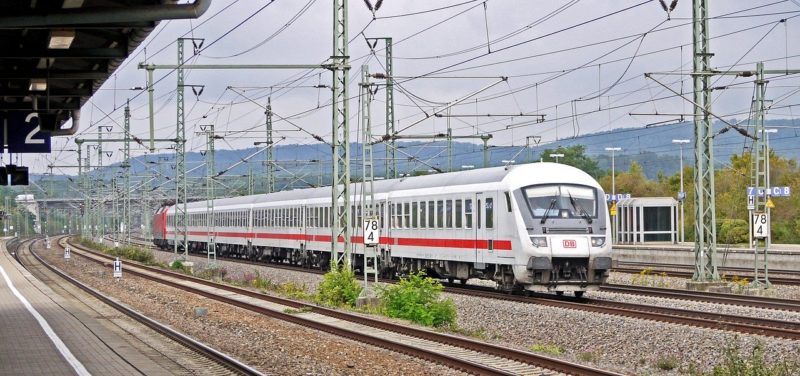
Speaking of public transportation, Germany’s is one of the best! It’s super easy to get everywhere you want to go via the S-bahn (above ground metro), U-bahn (underground metro), Strassenbahn (street car), and city bus. Taxis (and Uber/Lyft, where available) are also convenient options, though more expensive than public transport.
There are also car-share programs that you can look into. I haven’t used any of them and don’t know how convenient they are for travelers but it doesn’t hurt to check them out.
German cities are very walkable, so it’s easy to get around by foot. And, if you’d like to bike around like a local, there are lots of places to rent bikes (or scooters!) around town or maybe even at your hotel or AirBnB. If you’re more interested in just one afternoon of biking, try a city bike tour!
A few transportation tips:
- For the best train ticket prices book your ticket via the official German rail system website in well in advance. I book all of our tickets there. Note: if you pre-purchase your ticket at the lowest price you have to take the specific train you booked. If you miss that train, you have to buy another ticket.
- If you don’t mind taking slower regional trains you can get some really cheap tickets and regional day tickets. You may not want to use these tickets to go from Munich to Hamburg, but they’re great for day trips, whether traveling solo or with others.
- Busses are often less expensive than the train (though not quite as comfortable and often slower).
- There are Eurail options for Germany, and they’re a great choice if you value flexibility and ease or if you want to make stops while traveling (eg., stop in Cologne for a couple hours while traveling from Hamburg to Munich).
- If you plan to rely on public transportation in the cities you visit, buy a day pass (or perhaps a multi-day or week pass) rather than individual tickets. Also check to see if there are group day tickets or if young kids can ride free. Note: there’s often a small additional fee to bring a bike or a large amount of luggage on public transportation. There are often less expensive day passes for travel starting after 9am.
What to Wear in Germany
Check out my packing list for Germany!
Layer, layer, layer! The weather in Germany is often unpredictable so your best bet is to bring layers so you can customize your wardrobe on the fly. Since rain is a possibility any time of year, you may want to bring a light rain jacket or an umbrella.
Bring comfortable shoes. You’ll no doubt walk all day long (often on cobblestone), so bring your most comfortable, supportive shoes. Be sure to break in your shoes before you travel. There’s nothing worse than realizing a day into your trip that your shoes pinch your toes or give you huge blisters. (Bring along moleskin, just in case. I always have this kind in my day bag!) I typically bring a good pair of walking shoes appropriate for the season (e.g., boots in the winter) and a nicer pair of flats (sandals in the summer).
You can wear jeans. Some people say never travel with jeans but I’m not one of those people. I love traveling with jeans! They’re comfortable, I can wear them a few times without having to wash them, and I feel less like a tourist wearing them because everyone wears them. If you like jeans, wear jeans.
Scarf, hat, gloves. If you’re traveling in the winter or even late fall or early spring, definitely bring a warm scarf, hat, and gloves or mittens. Or buy them in Germany and take them home as a souvenir! Almost all of my winter accessories are from Germany. Even if you’re not traveling in colder weather, I recommend a travel scarf with a hidden pocket for ease and security.
You can wear shorts in the summer. Shorts are more popular in Germany than they used to be, so if you like them and are comfortable in them, wear them. That said, do also bring summer dresses or skirts and or lightweight pants to wear when shorts are too informal.
Bring a comfortable day bag or purse. When you’re out and about all day you want a comfortable bag or purse to hold your travel essentials – wallet, phone, camera, ipad/kindle/book, umbrella, journal, etc. For peace of mind, you may even want one with special security features. Click here to read my guide for buying the best travel purse.
My Absolute Favorite Travel Clothing Items
Merino wool camisole/tank – These camisoles are the BEST for travel! They’re soft, comfortable, easy to hand wash, and they never stink. This might be TMI but a few years ago, when I was traveling solo around Europe, I wore the same merino wool tank each day for 14 days in warm spring weather. It never smelled bad! Since that experiment I don’t typically go that long without washing my tanks, but I like knowing that I could! Click here to read more reviews and buy a merino wool camisole/tank.
Foldable flats – I splurged on a pair of foldable leather flats a few years ago, and after I broke them in I started really liking them. I wouldn’t recommend them for a full day of walking (especially on cobblestones) but I like to bring my foldable flats along for a change of pace or when I want the option of wearing a cute pair of shoes but don’t want them to take up much space in my suitcase.
Merino wool shoes – I bought a pair of dark grey merino wool walking/tennis shoes a couple years ago and I LOVE them! I can wear them barefoot in the summer, and not only do my feet stay relatively cool, my shoes don’t stink when I take them off at the end of the day. I can throw them in the wash if they get dirty (though mine still look great 2 years later), they pack flat and don’t take up much space in my suitcase or travel backpack, and the heel is thick and cushioned. You can also buy replacement merino wool insoles without having to buy a new pair of shoes.
What I don’t like: the pair I have doesn’t have enough arch support for me and there’s not enough padding under the ball of my foot. The first few times I wore them they were uncomfortable after walking all day and I was super disappointed! But after adding an arch support and a gel insert under the ball of my foot (I like this one ) I loved them and now wear them all the time while traveling and at home. Many people love them from the start! Click here to to read reviews and check out merino wool shoes.
What to Eat in Germany
You’ll never go hungry while traveling in Germany! While you can always find traditional items like Schnitzel, Spätzle, Rouladen, and Bratwurst, there are plenty of healthier options, including those that are vegetarian, vegan, and gluten-free.
Many restaurants now cater to special diets and accommodate allergies, as do some specialty grocery stores. Aaron has a meat allergy and frequently eats gluten-free and has never had a problem finding delicious food in Germany.
These days Germany has a wide variety of restaurants to ft all budgets featuring cuisine from all over the world (except Mexican…I’ve yet to find good tacos in Germany). So you won’t be stuck eating Schnitzel every day – unless you want to!
We usually eat breakfast at our AirBnB or hotel, enjoy a nice lunch at a restaurant we’ve stumbled upon, and then grab a Döner, salad or pizza for dinner. We also often picnic using ingredients from the bakery and grocery store or farmer’s market.
Traditional German dishes to try: Schnitzel, Spätzle, Rouladen, Bratwurst, Sauerbraten, Schweinehaxen, Maultaschen, Currywurst, Leberkäse, Flammkuchen, Sauerkruat, Kartoffelsalat (potato salad), Quark, all kinds of German breads.
Quick lunches and snacks on the go: Döner, Falafel, Bratkartoffeln (fried potatoes), Kartoffelpuffer (potato pancakes), Bratwurst, Currywurst, salads, Brötchen filled with meat and/or cheese, fresh pretzels, pastries, cakes. Click here to see the best German street food!
Desserts & sweet treats: Schwarzwälderkirchtorte (Black Forest Cake), Bienenstich (Bee Sting Cake), cheesecake, Stollen, Frankfurter Kranz, cake, Donauwellen cake, Berliner, Lebkuchen, Pflaumenkuchen (plum cake), all kinds of pastries and chocolate – just to name a few! Click here to see the 10 must-try German desserts and sweets.
Beer: every kind you could ever imagine! I usually just ask for the local beer unless there’s a specific one I know I want to try.
Christmas: This is the best time of year to be in Germany, partly because of the many delicious holiday treats like Lebkuchen, Stollen, Glühwein, and so much more. Click here to read more about what to eat in Germany during the Christmas season.
Want to try German food now? Click here to see where to buy delicious German food online!
Got a question about traveling in Germany? Join our free Germany trip planning community or send us an email!
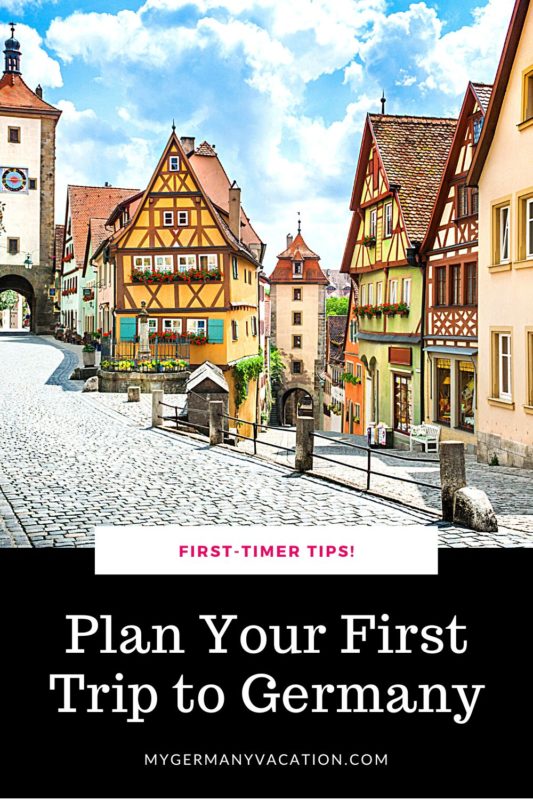
Cate has been traveling to Germany for 30+ years. She has lived in Germany, taught college German, and has a PhD in German Applied Linguistics. She loves helping travelers plan their dream trips to Germany!
Similar Posts
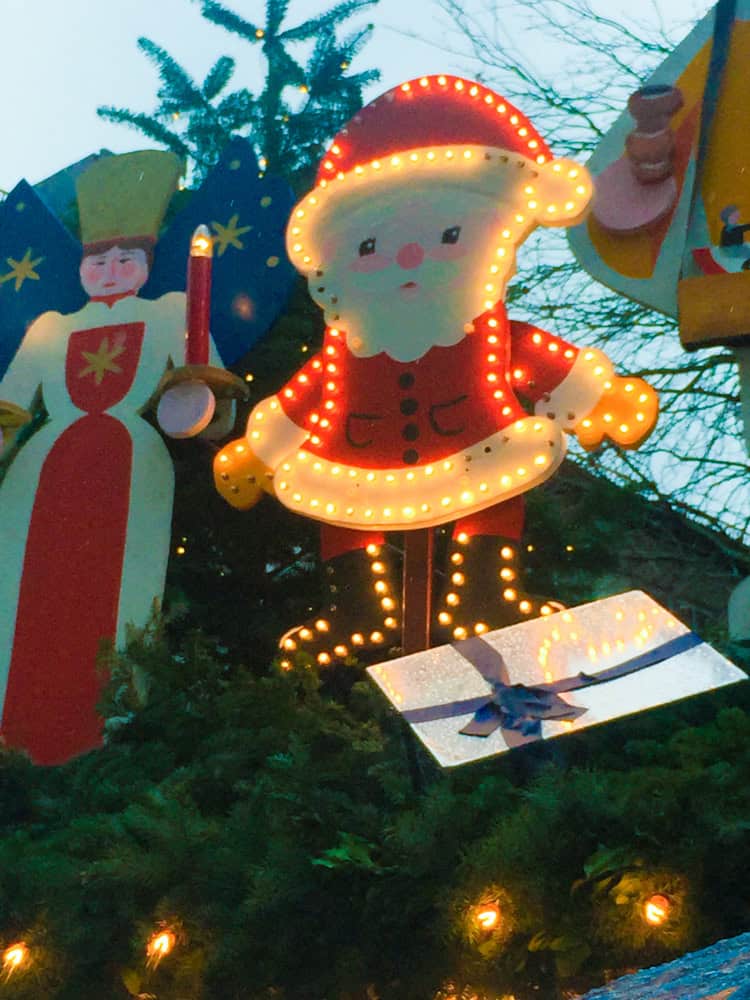
Stuttgart Christmas Market Guide for 2024
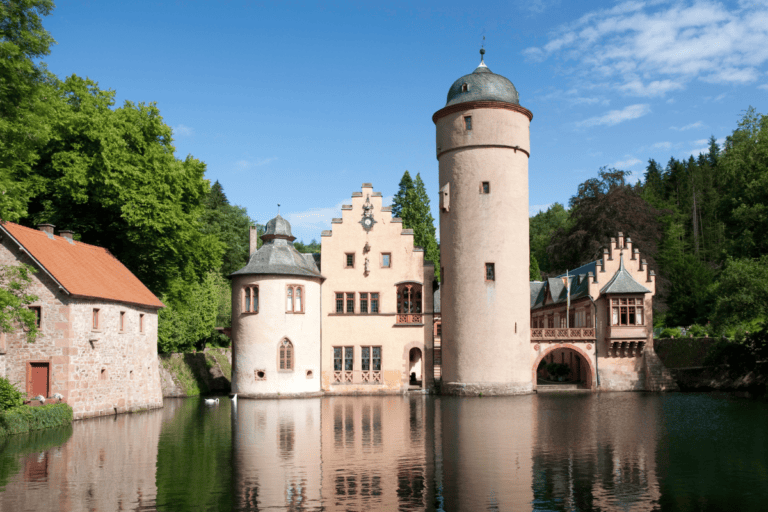
Best Castles To Visit Near Frankfurt, Germany
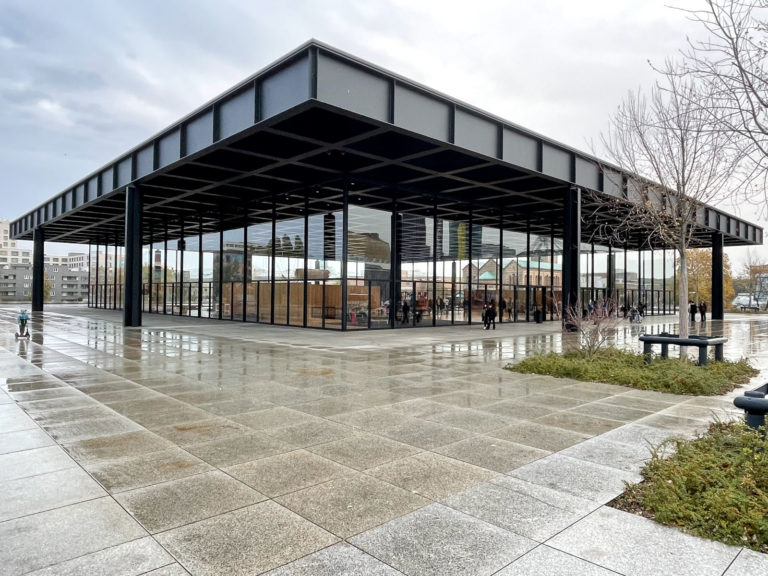
Best Museums to Visit in Berlin, Germany in 2024
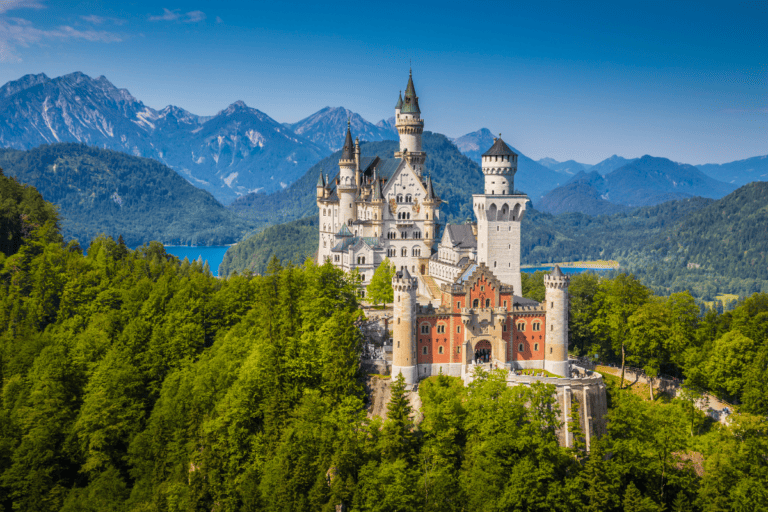
Best Hotels Near Neuschwanstein Castle & In Füssen
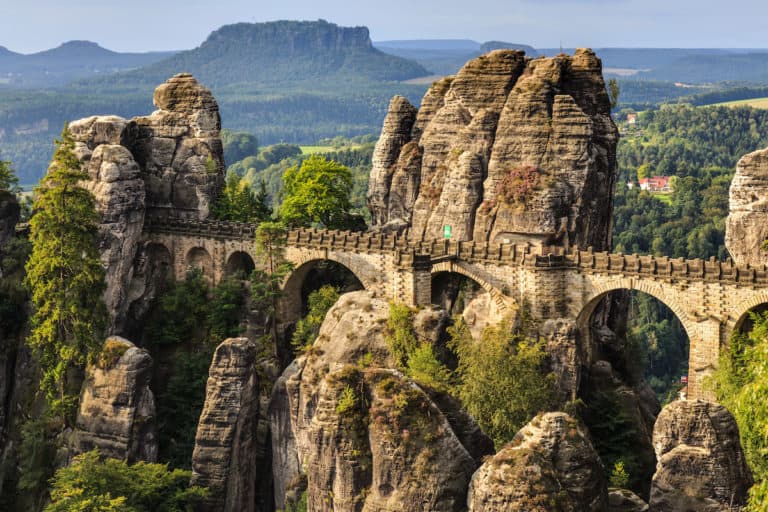
Saxon Switzerland National Park: Germany’s Hidden Gem

Voltage Converter Or Adapter For Germany?
Here’s how we can help you plan your perfect trip in 2024.
GERMANY TRAVEL PLANNER: Just getting started? Have questions about Germany’s confusing train tickets or how to find the best guided tours? Not sure which parts of Germany should be in your itinerary (and what to leave out)? Our Germany Travel Planner answers those questions and more via how-to videos, our interactive Germany Planning Map, City Cheatsheets, and MUCH more. Click here to unlock the best of Germany the easy way!
GERMANY TRAVEL CONSULT: Feeling overwhelmed? Itinerary just not coming together? Wonder if a few tweaks would take your trip to the next level? Book a Mini or Full consult with Cate! She’ll help you create or tweak your itinerary, recommend train tickets/passes, hotels, things to do, guided tours, show you how to buy train tickets, orient you to specific cities, help you plan out day trips, and answer your Germany travel questions.
ACCOMMODATIONS: We recommend using Booking.com since they have widest range of accommodations available from hostels, boutique hotels, luxury chains, aparthotels, at the best prices. Check out our accommodation guides for specific recommended hotels.
WHAT TO PACK: If you’re bringing your phone, be sure to bring this plug adapter , this power bank , and this wrist strap . They’ve been lifesavers for us! You can see our other packing essentials here and here .
TICKETS & TOURS: For guided tours, day trips, private tours, and skip-the-line tickets, Get Your Guide is our go-to!
TRAINS & BUSES: To research train schedules and buy tickets or a Germany Rail Pass, we recommend the official Deutsche Bahn (German Rail System) website (and download their DB Navigator app). For buses, look at FlixBus , which offers tickets for routes within Germany and to other European countries. FlixBus is often cheaper than trains but can take longer.
69 Comments
I enjoyed reading this information. My husband and I would like to stay in Germany for 2 to 3 months in 2022. I am interested in staying in the area of Bamberg with the plan of visiting other regions in Germany via a rental car. Either at the end or beginning of our stay we would like to visit France (especially Paris). I have so many questions. But our hope is to have basically our last trip on our own and experience more of the everyday lifestyle. Up to this point we have only traveled via being guest of Viking River Cruise and tours.
Hi Donna! 2-3 months in Germany sounds awesome! Since you’ll be there so long, you might want to consider spending 1 month in 3 different regions or 1.5 months in 2 regions. Otherwise you’ll be doing a lot of overnight or multi-night trips if you want to see other regions. Are you thinking about renting an AirBnB? If you want to experience the everyday lifestyle, I highly recommend it. Feel free to email me if you have questions as you start planning. 🙂
Hi! Thank you for this awesome post. It’s very useful. I wanted to ask you a question. I’m planning to travel to Germany as soon as the pandemic starts to be less dangerous. I want to go to Germany for 2 months, how many cities do you think is possible to visit? And also how much money do you think is possible to use everyday for food if my budget is small? Thank you very much!
Hello! Two months is a good amount of time to visit Germany, and you should be able to see and do quite a lot! Just how many cities depends on how quickly you like to travel and what you want to do in each place (e.g., just see the highlights or live like a local). If you want to stick to big cities you could spend 1-3 weeks in each and take lots of day trips to see the surrounding area.
If that’s the case, you could rent an Airbnb (or similar), which would not only save you money on lodging (they’ll often give discounts for stays of 1 week or longer) but also make it easier to make some inexpensive meals at the Airbnb (and it’s easy to make German dishes “at home”!) and maybe even do laundry for free.
If you want to be on the go the whole time, moving from city to city (big, medium, and small), it will be more expensive unless you stay at hostels (or super cheap hotels). And remember to factor in the constant packing and unpacking, time getting to/from the train station (or airport)…that gets tiring when traveling for a couple months!
I recommend coming up with a budget, then looking at what kind of lodging fits that budget (hotels, hostels, longer Airbnb stays, Couchsurfing, etc). Then think about what you most want to do in Germany (live like a local, just spontaneously explore, see specific sights, have specific experiences, etc) and what you want your daily experience to be like (e.g., do you want to feel relaxed each day and get to know fewer places or be on the go, packing and unpacking, moving from place to place). Neither is better than the other, it’s just important to get clear on what kind of experience you want!
A few ways to reduce your budget: – Eat in fewer sit-down restaurants. Eat breakfast at “home”, buy snacks and drinks at the grocery store and bring them with you each day, cook some meals each week at “home”, pick up lunch from a grocery store or bakery and eat in a park, etc. Make eating dinner in a sit-down restaurant a special occasion. Doing these things will save you money and you’ll eat healthier!
– Take busses or slower trains to travel around Germany. There are regional train passes you can purchase that allow travel in a specific area very inexpensively. Travel will be slower and there are some restrictions on when you travel (often not during rush hour) but you’ll save money and often you’ll see some out of the way sights. You can also get good deals on flights but once you factor in travel to the airport (time and cost), time to check in, waiting to board, potential delays, and then getting from the airport to your final destination, it’s often just easier to take the train.
– Buy standard train tickets in advance. You can get nice discounts on faster train tickets if you book far enough in advance.
This might be more info than you wanted but I hope that helps you start planning your trip! Let me know if you have any other questions. 🙂
- Pingback: Europe Through the Seasons: The Best Time to Visit - Intentional Travelers
Great post full of detailed information on all aspects of travel in Germany. When travel reopens in Europe we’re planning on a 2 week trip in Germany with our adult son. He’s an avid soccer fan so we’ll need to plan the trip around the soccer schedule so he can see as many games as possible. We are considering Eastern Germany with a short trip into Poland or Northern Germany with a few days in Denmark. We’d really appreciate your expertise and suggestions. Although we’ve traveled extensively in many western and eastern European countries, we have not spent a great deal of time in Germany. Thanks. J.
Hello! I’m back working on this site now and am happy to help. I’ve got more articles and resources coming but let me know if you have any specific questions!
Hi Both The Ueckermann family 9-10 adults and 2 little once to experience Germany in Oct 2023. Central G and Netherlands will be awesome. We need to do all planning and funds estimates please assist. We live in South Africa and hopefully COVID 19 not a factor any more. Plan 2-3 weeks depending on the funds regards Engela
Hi Engela! Let me know if you have any specific questions about planning your trip to Germany. Happy to help!
HI, I was having trouble with your email 🙂 so sorry I am just replying here. I was hoping you could help us and I wasn’t sure if you offer buying tickets and guidance of our specific places we would like to visit. Anxiously wanting to hear back from you, Anne
Hi Anne! I just sent you an email. 🙂
Hello Cate! Such a well written article with great info! My husband and myself would like to travel to Germany in Oct. of 2022, possibly with my then 16 year old son as well. We want to go in October so we can also experience Octoberfest. I cant have beer because I have celiac’s. IS THERE OTHER ALCOHOL DURING OCTOBERFEST OTHER THAN BEER? WHAT IS THE WEATHER IN OCTOBER AND DOES OCTOBERFEST RUN THE FULL MONTH? IS THERE A CERTAIN AREA WE SHOULD STAY TO REALLY EXPERIENCE OCTOBERFEST AND ANY POTENTIAL ISSUES TO AVOID DURING OCTOBERFEST? We are overwhelmed with planning our trip because we don’t even travel within the US and I feel like there’s so much we want to experience in such a short period. We would like to go for 2 weeks. We want to go because both our families are from Germany. My family comes from Nuremburg (sp) and my husbands family Bavaria but we are unsure which part. This trip is important for us to try to learn about our family roots. DO YOU KNOW WHERE WE COULD GO IN GERMANY TO LEARN ABOUT OUR GENEOLOGY? We would like a more of a laid back approach to experiencing Germany. I dont want to necessarily feel rushed every single day but I do understand that some events and places we would want to visit would need to be scheduled and we are ok with that. I would like to do the Air bnb but know nothing about them. I would like less stress worrying about transportation such as missing busses. We are interested in castles, picturesque views, experiencing floating on the Rhine River perhaps. ANY SUGGESTIONS ON AIR BNB’S THAT PROVIDE BREAKFAST AND ANY IDEAS ON AREA’S TO VISIT BASED ON EVERYTHING I’VE PROVIDED? P.S……our last name literally translates to “the German”. We have had so many Europeans tell us that when they hear our name…LOL
CORRECTION: This is Lisa Nemec. My hubands family is Bohemian. We believe his family crossed over from Czech.
Hi Lisa! There are plenty of other drinks at Oktoberfest, both alcoholic and non-alcoholic, so you shouldn’t have any trouble finding something. The weather at that time of year can vary but in late September to early October it’ll likely be warm during the day and cooler in the evening. Oktoberfest is mostly held in late September but I believe it goes until Oct 2 in 2022. There are a lot of hotels and AirBnB’s within walking distance of Oktoberfest (also walking distance to downtown) but book early because they fill up quickly! You’ll also pay a premium at that time of year. Some people prefer not to stay near the main train station but other people don’t mind it.
As to where you could go in Germany to find out about your genealogy, I’d start by searching the genealogy sites online and get as much specific info as you can. You can then try a site like http://www.genealogienetz.de/index_en.html (I haven’t used it, just found it).
If you have 2 weeks, you could fly in and out of Munich and focus on Bavaria. While in Munich you could take a couple day trips to Salzburg, Berchtesgaden, Neuschwanstein, the Alps, etc. You could see a lot at a laid-back pace in 2 weeks!
AirBnB’s are great if you’re going to be somewhere for at least a few days, want a little extra space, a kitchen, etc. Even just being able to make breakfast, coffee/tea, and keep drinks cold for when you come home in the evening is so nice. But you don’t typically get hotel-like services like a prepared breakfast, new towels each day or linen changes. If you want to be walking distance to lots of things in Munich, a hotel near downtown could be a great option. If you’re ok with being in a neighborhood, an AirBnB could be a good choice. There are so many great neighborhoods in Munich so you really just need to look at price, amenities, and distance to the things you want to see. I’ve stayed at hotels near Marienplatz and in an AirBnB further away (maybe a 10-15 minute walk + U-bahn ride to Marienplazt) and I enjoyed both.
I hope that helps!
- Pingback: 12 Most Popular German Drinks & Beverages You Must Try In Germany | travel-boo | Portugal & Spain Travel Blog
HELP……I have been put in charge of coming up with an itinerary for my hubby and 4 of our friends for travel in July 2022. I truly have no idea what I am doing. What we are looking for are castles, beautiful scenery and history (although I have been told that they do not want to go to concentration camps). The following is the tentative itinerary I have come up with. We are looking also, for moderate priced Inns/quaint hotels and castle stays centrally located. Any changes/suggestions/comments would be GREATLY appreciated. We will be renting 2 cars. 1 night Munich drive to Nuremburg 3 nights Nuremburg – drive to Fussen 1 night Fussen – drive to Ettal 3 nights Ettal – drive to Unterwossen 1 night Unterwossen – drive to Salzburg Austria 3 nights Salzburg Austria drive to Munich 1 night Munich – fly home
Hi Linda! Your itinerary looks good for a 2-week trip. Here are few suggestions:
-If you’re flying into Munich, you could drive right to Nuremburg on the first day, since it’s only a couple hours drive from Munich airport. If you pick up your car, drive into Munich, settle into a hotel, and then drive to Nuremburg the next day, you’re using a lot of time for driving/checking in/unpacking/packing and you won’t get to see much of Munich. If you go right to Nuremburg on arrival day and stay for 3 nights, you could add a night to the end of your trip so you have 2 nights in Munich or add a day to Salzburg and keep Munich at 1 night.
-Fussen and Ettal are pretty close to each other so you could stay 3-4 nights in one and then take a day trip to the other. I like to reduce the number of one night stays as much as I can during 1 and 2 week trips for the reasons I mentioned above. You could also stay in Ettal and make day trips to both Fussen and Unterwossen and cut out 2 1-night stays.
-If you don’t want to see Munich, I’d keep that at 1 night and stay near the airport at the end of your trip. If you do want to see Munich, I’d give that 2 nights minimum.
I hope that helps! I think you’ll really enjoy your itinerary!
- Pingback: Can I Go to Germany Right Now? (Your COVID-19 Questions Answered) - My Germany Vacation
Thankyou for all the wonderful suggestions! I’m visiting Germany closer to Christmas for two weeks.
That’s my favorite time to be in Germany! Everything is so beautiful and festive. You might be interested in my Stuttgart Christmas Market article – even if you won’t be near Stuttgart, it will give you an idea of what you can do, see, and eat at any Christmas market. I also talk about 6 other nearby Christmas markets that are super fun to visit. 🙂 Enjoy your trip!!
I had all but given up on our delayed 25 yr Wedding Anniversary(07/28/2020 delayed to Sept 2021, due to covid) trip to Germany. Then I found your website! It reinvigorated our desire to NOT CANCEL our plans! We have a son in Kaiserslautern(rhein main air force base) , and want to split a 2 week trip between seeing 7-8 days traveling in Germany( Berlin, Munich, Cologne, and Stuttgart) and Paris. And then 6 to 7 day visiting our son. We had all but given up, until I read your article. Thanks! I wish that there were some way to have everything planned for us in advance! But, your post at least has assured us that we can make this happen on our own. Thank you very much!!
Definitely don’t cancel your plans, even if you have to postpone! (We had to postpone our anniversary trip, too – such a bummer!) You can definitely make your trip to Germany happen. Here are a few ideas for you…
You could fly into Paris, then travel to Kaiserslautern to see your son and do a day trip to Stuttgart (visit the Christmas market if you’re there in December or nearby Esslingen any time of year) and then either visit Munich and the area around there (fly out of Munich) or travel up to Cologne and over to Berlin (fly out of Berlin).
It’ll be a lot to try to see Paris, spend several days in Kaiserslautern, and also see Cologne, Stuttgart, Munich, and Berlin but if you can combine things – like if your son can go with you to visit Stuttgart and Munich or Cologne and Berlin, you could see a lot of the places you’re interested in. Flying into one city and out of another will help a lot, too.
You could also fly into Munich, then go to Kaiserslautern via Stuttgart, take a short trip to Paris, then go to Berlin via Cologne and fly out of Berlin. Or do the same but start in Berlin and fly out of Munich.
You’ll have a great time no matter your itinerary! 🙂
Your website is a such a great resource! I have a ton of questions about planning a trip, I’m just going to send you an email.
Thank you Komal
Got it and replied 🙂
What is a good budget for 2 adults in Germany for two weeks?
It’s nearly impossible to give a guideline because it depends on so many things – your travel style, what kind of transportation you want to use, your accommodation & restaurant preferences, etc. I know that’s not very helpful in the short-term but it would be less helpful for me to give you a specific budget not knowing any specifics about you or your trip plans. Plus, most travelers like to splurge in one area and cut back in another but that’s so different for each traveler.
What I recommend is this: start looking at flights, transportation, and accommodations well before you want to book them in order to get an idea of what each costs for your travel dates. Add everything up for 2 weeks and then decide if you’re ok with that amount so far, keeping in mind you’ll still need to add on food, souvenirs, tickets/tours, insurance, and anything you need to get before you leave (clothes, luggage, passport, etc). I like to do this research before I book flights/transport/accommodations. That way I get an idea of what will be my splurge and where I will need to reduce costs to keep within the budget that’s right for me. Everyone’s ideal budget is so different!
hi i am planning to travail to Germany in December 2021 with my family , any idea
My big tip for Germany in December: visit the Christmas markets (if they’re open this year)! You’ll find one in nearly every German city, town and even small villages. They’re outdoors so dress warmly and enjoy the food, drink, and stalls. They’re a great place to pick up souvenirs and gifts, too.
Days are short in December, and some touristy sites do shut down in winter, so keep that in mind. But you’ll still find plenty to do after dark, especially if you’re in bigger cities. As long as you take these two things into consideration, you’ll have a great visit no matter where you go!
Hi, my partner and I are wanting to visit Germany in January 2022. I have previously stayed in Wurzburg for 3 weeks and dream of taking my partner there.Seeing as I went with school a few years ago we didn’t really have a chance to look around other parts of local Germany. Where would you recommend us to go whilst in that area? We like architecture (but not too much…) we’re in our 20’s so we also want to have fun 🙂 we’ll either be driving (we live in France) or we’ll be going by train. Will the Christmas markets still be on? I doubt it but you never know… Thanks
Also, we are wanting to go with our dog. Would that be possible or too complicated?
You could easily go to Munich and spend a few days there – lots to see and lots of places to have fun. (I had a great time there in my 20s!) There are also a lot of day trip options – Berchtesgaden, Salzburg, Neuschwanstein, Passau, Regensburg, etc. You could also stop in Nuremberg on your way to Munich. All of that is easy by car or by train – and if you go by train, you could probably do those day trips using a regional train pass. Or you could do guided day trips and not have to plan anything! I’ve got some listed in my Munich guide – https://www.mygermanyvacation.com/munich-travel-guide/
It looks like the Christmas markets are on for 2021 but they could always get canceled in the coming weeks. Most have their last day on Dec. 24 so unfortunately, you won’t get to see them if you visit in January. That just means planning another trip to Germany for December 2022! 🙂
Germany is pretty dog-friendly so it’s probably do-able. But there are likely museums and other sites that might not allow dogs inside. If you mostly want to spend time outdoors, and your dog is ok with possibly very cold/wet/windy weather, or if you can leave the dog at your lodging for part of the day, it might work ok.
Hope that helps!
Hi Cate, you have put together a terrific planning guide. Thanks. Our 4 children just gave us a trip back to Germany in celebration of our 50th wedding anniversary. We lived in Erlangen from Aug 1972 – 1973. We are excited to go back but we are debating between a Rhine river cruise or going on our own. We’ll probably go sometime in May/June or Sept/Oct 2022.
How exciting!! It’s so fun to go back and revisit where you used to live in Germany. Aaron and I did that in 2019 and had such a good time seeing what had/had not changed. I’m excited for you!
I’ve heard people say great things about Rhine river cruises. If you don’t have time to or don’t want to do much trip planning, that’s a great option. The downside is that you’re more limited to what you can do and see. If you have time and interest in planning your own trip, you can definitely do it. And since travel is coming back, I’ll be focusing on this site a lot more in the coming months and helping people plan their trips, so I’ll be here to help you, too. 🙂
Hi Cate, We have wanted to visit Germany (from the US) for a few years now and have finally decided to make it happen, but had no idea where or how to start. Your article is full of valuable information. Thank you. At least we now have a starting point. Our trip isn’t for another year, but it will go quickly. So excited and thank you for all the information.
You’re welcome! I’m so excited for you already. 🙂 The next year will fly by and you’ll be on a plane bound for Germany before you know it. Now that travel is coming back, I’ll be focusing on this site a lot more so be sure to come back when you’re ready to plan your trip. I’m working on lots of guides and helpful resources! 🙂
Hello. My grandfather expressed interest in going to Germany in 2022. More specifically, he wants to go to ‘The Battle of the Bulge’ where his older brother passed away in World War II. We would also like to go to the Holocaust Memorial. I have been trying to research/plan this trip but would be open to suggestions. We are from the US and could spend about a week out there. I am grateful that I stumbled across your blog as it is very informative and interesting! 🙂
Hello! That sounds like it will be a wonderful trip for your grandfather! If you’re talking about visiting the Holocaust Memorial in Berlin (highly recommended), you could fly right into Berlin (their new airport!) and spend half of your time seeing the city, then head to Brussels and take a Battle of the Bulge day tour! I found one here that you can look at (aff link): https://www.getyourguide.com/bastogne-war-museum-l35043/bastogne-battle-of-the-bulge-tour-from-brussels-t169657/?partner_id_Y5UOFLS It looks like it also goes into Luxembourg so you could get 3 countries in one trip. 🙂 If you have enough time, you could take a day trip to Brugges or Ghent – both are 30-60 minutes from Brussels. You could then fly out of Brussels back to the US. To get from Berlin to Brussels you’d probably want to fly but it’s a short flight and you could probably get an early morning or a late afternoon flight so it wouldn’t take up your whole day. Hope that helps with your planning!
Hi, your site is wonderful and has some great information! I am traveling (solo) to Germany in late April and will be there for one month. I have been to Munich/Bavaria/Salzburg before so I’d planned on focusing my trip on the rest of Germany. I’m flying into Berlin and was planning on staying there 4-5 nights, then I’m not sure where to go. I was thinking of spending a week in an area and going on day trips; for example, the Black Forest, the middle Rhine area, maybe Harz Mountain. But I also want to see some cities like Cologne, Frankfurt, Heidelberg, Trier, and Hamburg. So maybe a bit of both cities and countryside? Do you have any thoughts? Thanks!
I definitely recommend choosing 3-4 locations where you can stay for a week or so and then take day trips. You could do longer stays in Berlin and Hamburg – there’s tons to do and see in each city, as well as lots of day trip options. You could also do Cologne or try a smaller town on the Rhein or Mosel and explore that area in more depth. For the Black Forest you could stay in the university town of Freiburg and day trip to towns/hiking in the Black Forest, as well as Basel and Colmar/Strassbourg). You could also choose 3 locations for longer stays (e.g., Berlin, Hamburg and Freiburg) and then do a couple of 2 or 3-night stays as you travel between cities, e.g., a short stay in Wernigerode or Quedlinburg (Harz mountains), Trier, Heidelberg, Stuttgart, or Tübingen on your way to Freiburg. Tip: if you want to do a lot of day trips, make sure you stay where it’s fairly quick and easy to get to the train/bus station! Since you’ll be there for a month you have lots of flexibility and plenty of time to do and see a lot of the areas you mentioned!
@Cate, Thank you so much! I’m really enjoying going through your site, too!
Looking for a good travel guide book for Germany any recommendations?
Rick Steve’s is always a good one! I’ve used his guidebooks a ton. You can get his Germany guidebook on Kindle or as a hard copy (aff link): https://amzn.to/33z7d59
@Cate, Thanks
So excited to find your site! My husband and I will travel from Texas to Bavaria for 7-10 days in September. I am in charge of all the planning. I’m thinking Munich & surrounding area and Salzburg. Do you have any suggestions? I’m also pondering some organized day tours..
Munich is a wonderful home base for seeing lots of great sites in Bavaria! You could easily spend 1-3 days in Munich (especially if you’re there during Oktoberfest) and then take day trips to places like Neuschwanstein, Garmisch-Partenkirchen, Salzburg, Linderhof, Chiemsee, Berchtesgaden, Nuremberg…just to name a few! You can easily do all of that by train and mix it up with some organized day tours here and there. I’ve been working on a Munich guide that will have ideas for day trips and tours so keep an eye out for that!
Hello Cate, Your blog is very helpful. Like to seek your help and guidance. I am from Singapore and not familiar with Germany. Both me and my wife intend to fly to Amsterdam where my daughter is attending university and spend 18 days vacation with her in Europe during her break. Am planning 7 days touring Germany. Tentatively looking tourist site at hamburg, Berlin, Stuttgart and then off to another country eg. france, switzerland or Italy for another 7 days. then travel back to Amsterdam to fly home. Any advise how we can optimize the traveling as we are not familiar with these region? Appreciate your kind assistance. regards, Perry
It will be so much fun to travel with your daughter! It might be difficult to fit Hamburg, Berlin and Stuttgart into 7 days. On the train it takes about 6 hours from Amsterdam to Hamburg, 3 hours from Hamburg to Berlin, and over 8 hours from Berlin to Stuttgart. While all three of those cities are amazing, I recommend choosing either northern or southwestern Germany, rather than trying to hit all three (or make the Germany part of your trip 10 days).
You could, for example, travel from Amsterdam to Hamburg, then to Berlin, and fly from Berlin to France or Italy. That would give you plenty of time for travel, city exploring and day trips.
Or take the train from Amsterdam to Stuttgart and explore that area. Stuttgart is close to France, so you could spend several days seeing both southwestern Germany (Stuttgart, villages in the Black Forest, Freiburg, Baden-Baden, etc) and French cities like Strassbourg, Colmar and Mullouse. You could also very easily go to Basel in Switzerland! It’s a long train ride from Amsterdam to Stuttgart so I’d look into flights. Stuttgart is a great airport to fly into!
Hi, my family and I would like to visit Germany this summer. My husband and I have two teenagers (15 and 13), and one of them is reads a lot and it is very interested in history. We would like to visit german cities but also, some concentration camps. Our plans is to spend two weeks there. Any suggestions?
You’re going to have so much fun in Germany! Everywhere you go there’s so much history, so it just depends on what kind of history you’re looking for. For a 2-week stay you could easily visit 2 (maybe 3) different parts of Germany without feeling like you’re spending your whole vacation on the train or in the car. You could, for example, fly into Munich, visit the city and Dachau concentration camp, take a few day trips to Salzburg, the Alps, Neuschwanstein, Nuremburg, etc – there are so many options!…then visit the Black Forest area, the Rhein/Mosel area, the Hamburg area or the Berlin area and fly out of that second city (Stuttgart, Cologne/Düsseldorf, Hamburg or Berlin). If you want to focus on 2 main areas, say Munich and Berlin, you could do a 1-2 night stopover in a city in-between. Hope that helps you get started on your planning! 🙂
@Cate, We are from USA planning on attending next years NfL game if possible. We are a large group 10-15people who would also like to see the culture and history. Open to staying in Berlin, munich, or anywhere else as long as accessible to get to game. We want to fly out wed night from BOS be there Th F S Su (game in Frankfurt) leave M. Anything you would recommend?
Hi! I just now saw your question. If you’re flying into FRA and have Th, F, and S to do some sight-seeing, I’d stick to the Frankfurt area and do day trips. If you go to Berlin or Munich you’ll spend most of your time in transit and checking in/out of hotels. We’ve got a Frankfurt guide on our website and also a castles guide – so you could spend a day exploring FRA, then a day visiting a castle, and then 1 day visiting a nearby city like Heidelberg, Nürnberg or Rothernburg ob der Tauber. Hope that helps! Let me know if you have any other questions. We’ve also got a Germany Trip Planner and one-on-one travel consults, too. And lots of info on this website. We’re happy to help!
I just found your great website! We have just drafted a 3 week trip plan to Germany and Austria and I would love your thoughts about it!. Is late May better than June? (I really can’t do heat without AC!)
– [ ] 2. Land in Vienna- 2 nights… – [ ] 3. Take tour or just Spend a day in the sprawling Schönbrunn Palace, – [x] 4. Rental car to Take KM 29 for about an hour to Burg Liechtenstein drive an hour to Melk Abbey Then Steyr From Melk, Steyr 1 night stay – [x] 5. Spend a little time, touring the Steyr Mannlicher! – [x] 6. Wake up early and bike 15 minutes to spend the morning exploring more of Halstatt before the day-trippers.. Sky Walk salt mine – [x] 7. After lunch, enjoy more the beauty of Salzkammergut area! on to Salzburg in time to return the rental car. we will stay in the old town (Salzburg 3 nights) – [ ] 8. See Salzburg – [ ] 9. Take guided tour to Eagles nest – [ ] 10: To Munich by 2 hour train.. taxi to hotel, Sleep Munich 2 nights … – [ ] 11. Guided tour all day— Dachau and Munich sites – [x] 12 Slow morning to rest, checkout, cab, 1.5 hour train to Oberarmagau for lunch and stroll. Rent car in Garmish and Drive another hour to Sleep in Hohenschwangau 2 nights Maybe take 30 minute Schloss Hornschwangau Castle tour before closing if time – [x] 13 Visit Neuschwanstein! (Hohenschwangau castle first if not last evening) then rent a bike and go a mile -7 minutes to Tegelberg luge ride – [x] 14 drive 2.5-4 hours but first stop for lunch and see Ulm Cathedral. Going Opposite the crowds arrive in afternoon to stay in nearby Rothenburg 3 nights. See stunning Rothenburg – [x] 15 After coffee and quiet streets, walk the medieval wall. If crowds arrive, leave and drive a short way and tour the Bad Weinsheim Frankonian Open Air Museum – [x] 16 Drive 30 min to Ansbach, park and Take 30 min train and10 min cab into Neuremburgfor day. – [x] 17. leave in early morning and drive 3-5 hours through To St Goar take B9 along the Rhine from Bingen arrive in time to tour Burg Eltz and then maybe return car in Emmelshausen this day or next. Take cab back down to nearby St Goar for 3 nights. – [ ] 18 See Burg Eltz castle if not seen yesterday and then see Marksburg castle – [ ] 19 REST maybe just board a boat for a relaxing Rhine River cruise from Sant Goar. We will disembark to visit small Bacharach and back again by train. – [ ] 20 Depart by 70minute train to Frankfurt airport Or would it be better to do the trip in reverse, starting with Germany first? Thank you!!
It’s not usually super hot in May but it can be hot in mid-late June. The last time we were there in June (2019) it was incredibly hot and there isn’t as much a/c there…but you never know, I’ve had cold and rainy June visits, too. If you want to be more sure of not-super-hot weather, I’d go in mid-late May or early to mid-June — as long as you’re ok with the possibility of some not-so-warm days. If you go in mid-late June and don’t love hot weather, book hotels with a/c, rent a car with a/c, and plan to buy a lot of cold drinks. No matter the weather, it’s always fun to travel around Germany! 🙂
You could easily do your itinerary either way so I’d just look at whether flights are better into Vienna/out of FRA or vice-versa. Check the hotels you want to stay in to make sure they have availability — I’ve actually reversed my itinerary before due to hotel availability!
You’re planning to cover a lot of ground in 3 weeks and be on the go go go, which some people find more tiring than expected…but if you know your travel style, then go for it! 🙂 3 nights in one place gives you 2 full days, which is a good amount of time for most places. 2 nights means 1 full day, which can be enough in some locations but if you do many in a row, it can feel like you’re constantly checking in/unpacking/packing/checking out, and can get super tiring if you’re doing a lot of day trips.
Be sure to plan in time for getting ready, eating breakfast, packing, checking out of the hotel, getting to the train station/car rental – it often takes up more time than you’d expect. Trains aren’t as punctual as they used to be, so keep that in mind for what you plan on arrival after a train trip.
An idea — instead of taking a train to Oberammergau, then to Garmisch to rent a car, then driving to Hohenschwangau, I’d rent a car in Munich and drive to each place. It will probably be less expensive to rent in Munich and easier than doing the train and car pick-up (especially with luggage!).
For the longer drives, plan on them taking longer than what’s estimated in google maps because there’s often traffic! If you miss the traffic and arrive early, it’ll be a nice bonus!
Your idea to add in some guided day tours is a good one – it’s a nice change from having to figure everything out yourself and can feel like a mini vacation from your vacation.
Overall, you’ve got a really fun trip planned!
Hi Cate! I love your clear way of describing and explaining. My husband and I are invited to a wedding outside of Berlin the last weekend in April. From there we would love to head to the spas in Baden-Baden .. what else would you suggest to see in the Baden-Baden area and without driving the best transportation option? We can stay up to about 10 days. Thank you!
Thank you for your nice comment! 🙂 I’d take the train from Berlin to Baden-Baden. It’s about 6 hours and you can relax and see the sights along the way. You could fly from Berlin to Stuttgart but by the time you travel to the airport in Berlin (the new one is further out than Tegel was), check in, wait to board, fly, and then take the train from Stuttgart to Baden-Baden, it’s at least as long as – if not longer – then taking the train.
When in Baden-Baden you could visit Gengenbach, the Black Forest, Triberg (cuckoo clocks & waterfalls), Tübingen, Stuttgart/Esslingen, Lichtenstein Castle, Hohenzollern Castle, Freiburg, Basel (Switzerland), Strassbourg (France), Colmar (France) — just to name a few! You should be able to reach all of these places via train/bus. The Black Forest Open Air Museum is also a lot of fun! I’m working on guides to several of these locations – and some are already on the site – so check back soon for new ones. 🙂
You should be able to get a free KONUS train pass, which enables you to travel throughout the Black Forest region for free. I don’t think it works for every place I listed but it will get you to several of them. Here’s more info about the KONUS card: https://www.schwarzwald-tourismus.info/planen-buchen/konus-gaestekarte (you can switch to English if it’s in German).
You could fly out of Stuttgart airport or travel up to Frankfurt and fly out of there. Strassbourg or Basel might work, too.
@Cate, that really does! Thanks again,
You’re very welcome!
- Pingback: Best 31 Things to Do in Stuttgart, Germany in 2022 - My Germany Vacation
- Pingback: 10 Days in Germany: Itinerary Ideas For the Perfect Trip - My Germany Vacation
- Pingback: Perfect Berlin in 2 Days Itinerary: What to Do & See - My Germany Vacation
- Pingback: Vacation In Germany - Touriago
I am planning a trip with my husband, 18 year old daughter, mother in law and myself. We will have 8 nights total flying Munich to Amsterdam or vice versa. Interested in the Christmas markets, of course, castles (would love if we could stay the night in a castle if that’s possible), and just getting an authentic German experience. My mother in law found family ancestry in Stuttgart, so she would like to stop there. The other areas that we have an interest in are Frankfurt, Cologne (wonder if there is such thing as a day cruise on the Rhine River), and maybe Hamburg (for the canals, but I’m not sure December is the best time of year for that). Although, I’m not sure we’ll be able to see all those cities in just 8 nights, as we would also like 1-2 nights in Amsterdam.
We plan to rent a car and I will be doing the driving. We live in Colorado so I’m familiar with winter driving, but wonder if I can use Google maps while traveling through Germany.
Would love your thoughts or suggestions on this.
Thank you, Lea Ann
Hi Lea Ann, you’ve got the makings of a magical winter trip! All of the places you mentioned will be beautiful in December because of the Christmas markets. Stuttgart, for example, has a huge, old Christmas market (plus there are 2 other really beautiful ones nearby) and there are 2 nearby castles you can visit. Hamburg and Cologne and also wonderful cities (Frankfurt too but I’d skip it on a short trip unless you have a specific reason to go there).Amsterdam is also a lot of fun and a great place to fly in or out of.
It’s a lot to fit into 8 nights so you’ll definitely need to hone in on just a few places, otherwise you’ll spend your entire trip packing/unpacking/driving. 🙂
You can use google maps in Germany and that’ll make getting from place to place easy. But unless you want to stop at specific sights between cities, you could easily take the train, since you’re going to big cities (you don’t need a car in any of the cities you want to visit). If you don’t mind parking the car at each hotel in the city, a car can give you more flexibility.
You can also stay in a castle in Germany! We’ve got a guide for that right here so you can see which one you like best.
It’s hard to get more specific about an itinerary here in the comments without taking to you and getting a better sense of your interests and needs but we’ve got lots of resources to help you — Christmas market guides (definitely take a look at the Stuttgart one!), city and hotel guides , and we’ve also got a Germany Travel Bundle with an interactive Germany Travel Map, City Cheatsheets, and other resources, and I do one-on-one trip planning consults .
And be sure to join our travel planning Facebook group !
@Cate, thank you for your quick response and feedback! I’ll check out the links you shared and I’ve joined your Facebook group.
You’re welcome! Glad you joined the group! 🙂
Hi Cate , I have visited Germany but only Düsseldorf for my sugery. I will like to take my wife and kids with me this time I have an appointment in December might use the opportunity to take them for Christmas holiday . I have 12’night in total . 5 night in Düsseldorf can you please advise which city we can visit for the rest days and we are not leaving Germany until 26th. So I want them To enjoy the Christmas but I don’t know which city to choose .I will you to please give me where the kids can enjoy the trip age 8 ,6 and 3 . Do we fly back from Düsseldorf or from Another city ? Thanks for your help.
If you’d like to fly out of the Düsseldorf airport, you could spend the second part of your trip in Cologne so you could visit the markets there, in Bonn, and surrounding area (e.g. a day trip to Aachen).
If you’re ok with flying out of a different airport, you could go to Stuttgart (good Christmas markets in the area and a couple castles), Munich (good markets and day trips) or Berlin (good markets and day trips) and fly out of any of those airports.
Most everything will be closed on Dec 25 and the latter half of Dec 24 so keep that in mind when doing your daily planning.
Hope that helps with your planning!
Hi, Thank you for the detail page. I and my family will be visiting to watch a NFL game in Frankfurt and had some travel ideas outside of the city that I have not found solutions for. First, are US citizens allowed to rent cars without a permit? We want to travel to Stuttgart and Munich for some museums and possibly Berlin, but I’ve yet to figure how time and distances for the trip as these do seem to be quite a distance from each other. Then, we would end the trip back in Frankfurt to travel back to the US, unless we find an airline in Berlin. Do you have suggestions? This would be a 7-14 day trip, depending on cost. Thank you
Hi Marco! Yes, you can rent a car with just your US driver’s license. While not required, an int’l driver’s license can be helpful if you get pulled over or in an accident (you can get on at AAA). You can check distance between those cities via google maps (it’ll show you both driving and trains). I always add 25% to the times they suggest because there’s a good chance you’ll encounter traffic somewhere. We use google maps for all of our road trips in Germany. You could definitely do Frankfurt – Stuttgart – Munich – Berlin – Frankfurt (stay near airport on the last night) in 14 days. If you don’t want to drive from Munich – Berlin – Frankfurt, you could return the car in Munich and then take the train to Berlin and back to Frankfurt. Hope that helps you get started on your trip planning!
Leave a Reply Cancel reply
Your email address will not be published. Required fields are marked *
Save my name, email, and website in this browser for the next time I comment.

Ultimate GERMANY Travel Guide
Germany is a country located in western Europe . Berlin is the capital and while the Bavarian south tends to be the most popular with travelers, it is well worth spending some time in the North too.
The whole country is gorgeous and we can’t say enough good things about how unique your visit to Germany can be.
Between the landscapes, colors, brew houses, beer and brat culture and history you could easily max out a 90 day EU visa in Germany alone- without even visiting another country in Europe on your trip.
Most travelers spend an average of 1 week in the country. One of the biggest highlights is renting a car upon arrival and heading off on a road trip along the Romantic Road .
We’ve spent a total of two months in Germany across several visits to varying areas of the country. We like to dig a little deeper in the places we go, so there’s plenty left for us to see here, too.
Destinations
Germany travel: quick tips, don’t visit germany without:.
UNIVERSAL TRAVEL ADAPTER

GET A GUIDEBOOK

REUSABLE WATER BOTTLE

GERMANY BUCKET LIST
Drive the romantic road.
Pick up your car in Munich and head south to Fussen, in the footsteps of the Alps, before turning north on a journey through the very best of Bavaria along the Romantic Road . Ending in Wurzburg.
TRY GERMAN BEER
Delve into the heart and soul of German culture through an exploration of the many national beers. Find a beer hall, have a pretzel, and enjoy the music too! We personally love German Hefeweizen.
VISIT NEUSCHWANSTEIN CASTLE
You cannot miss a stop at the castle that fairytales were made from! The stunning Neuschwanstein Castle is located at the foot of the Alps and a must-visit on your Germany travels.
MORE THINGS TO TRY IN GERMANY
There is no shortage of great things to do in Germany during your visit and the biggest problem you’ll face is fitting them all into your itinerary.
Each city has its own offering and unique things to check out during a visit, so be sure to look at our city guides once you decide where your itinerary will take you.
LEARN ABOUT PIRATES IN HAMBURG: Historically one of the most important seaports in all of Germany, Hamburg is rich in history and lore. At its height, Hamburg was the center of merchant trade in Germany, receiving large ships on a daily basis. This made it a prime target for pirates. Some of the most famous pirate names in history have graced the shores of the city with their presence, and there is no shortage of stories to go with their visits.
FOLLOW THE WWII HISTORY IN BERLIN: From the remains of the Berlin Wall to Checkpoint Charlie, Berlin will take you on an emotional and enriching tour through the history of WWII in Germany.
GO TO ROTHENBURG OB DER TAUBER: Hands down, the most quintessential Bavarian village you can come across in Germany. Located along the Romantic Road, a visit to Rothenberg is a journey back to the medieval period of Germany. Get lost in the streets, take it all in and do not miss the medieval torture museum.
VISIT THE PRUSSIAN PALACES IN POTSDAM: Doable as a day trip from Berlin, but also worth more time if you have it, a visit to the Prussian Palaces in Potsdam will blow your mind. The architecture is not only opulent but rich in history and stories. This is where it all began for the royals in Germany.
SEE THE CHRISTMAS ANGEL IN NUREMBERG: Germany plays hosts to the best Christmas markets in all of Europe and Nuremberg is at the epicenter of the tradition. They boast the oldest market and as a result, are the home to the fabled Christmas angel. She appears in the main square market at the beginning of December and makes random appearances until Christmas Day.
TAKE A CYCLE TRIP: Cycling is a popular activity just about anywhere you go in Europe, but only Germany has the Elbe River Valley route. This cycle route is the most popular in Germany and follows the Elbe River from the German-Czech Republic border up to the North Sea coast. The route passes through the Saxon Switzerland National Park along the way.
GO HIKING IN THE BLACK FOREST: Having a border along the Alps, Germany has some fantastic hiking options. However, one of the best options is the Westwego Trail. It takes you through woodlands and moor before descending into the River Murg Valley and then leading you directly into the heard of the Black Forest.
GO CASTLE HUNTING: Germany has hundreds, if not thousands, of epic castles to check out across the country. Of course, there are many famous ones you shouldn’t miss, like Neuschwanstein, Burg Eltz and Heidelberg. But have some fun and seek out some of the lesser-known, but equally spectacular ones during your travel to Germany.
VISIT DRESDEN: We found this city to be fascinating, mainly for the fact that it was completely destroyed during WWII. What was once a literal pile of rubble, the city has been completely restored to its former glory and is chock full of German history and culture.
TAKE A RIVER CRUISE: Germany is an epi-center of sorts when it comes to river cruising in Europe. The popular Danube visits Bavaria, the Rhine travels through the western part of the country and the Elbe River cuts through the north offering some beautiful off the beaten path places along the way.
FOODIE BUCKET LIST
BRATWURST: German’s love their Bratwurst sausages, and it’s a must-try when you are in the country. Bratwurst can be served in buns, or as a main dish with sides such as potatoes.
CURRYWURST: Another sausage based dish beloved by Germans, is Currywurst. It’s a simple, fast food dish, consisting of sausage, chips and curry-flavored ketchup sauce.
SCHNITZEL: Take chicken, pork, or veal and deep fry the meat in a battered breadcrumb coating, to give you Schnitzel. It’s meaty and delicious.
GERMAN FESTIVALS
OKTOBERFEST: By far Germany’s most famous event, Oktoberfest is the iconic beer drinking festival held at the end of September and early October. While you can find events celebrating Oktoberfest across the country, the best place to visit in Munich, and Bavaria in general, where the festival originated. You can expect several weeks of intense beer drinking and festivities, with German culture and food being celebrated. This is one of the busiest times of year to visit Germany, and particularly Munich, and you might find accommodation hard to come by, and prices through the roof, but it will be worth the costs!
CHRISTMAS MARKETS: The festive period is a fantastic time of the year to visit Germany because every village, town and city across the country holds its own Christmas market. In the major cities, you’ll find entire Christmas villages set up to cater to the festive spirit, and you can enjoy excellent food and drink while you purchase unique souvenirs and presents. Germany hosts some of the biggest and the best Christmas markets in Europe , and it’s the perfect place to visit in winter.
CARNIVAL: Another fantastic German festival to attend, is Carnival. Generally held in February, this is a celebration where everyone in attendance lets loose before the onset of Lent and Easter in the proceeding weeks. Many cities hold their own Carnivals, and it’s unique in every different region, but the best places to visit are Cologne or Munich, where celebrations are all out.
PLAN AN EPIC ROAD TRIP THROUGH GERMANY!
Popular regions in germany.

The country’s largest state is found in the south, on the border with Austria, and it’s one of the best places to visit when you travel to Germany. This is where you will find the historic cities of Munich and Nuremberg . In the countryside, you can find fairytale castles, such as the dramatic Neuschwanstein Schloss, as well as dramatic alpine scenery and rural, historic villages. Travel to Germany and to Bavaria in September and October to experience Oktoberfest.
Cologne is found in the northwest and is one of the largest cities to visit when you travel to Germany. The city is known for its striking cathedral and many museums, as well as its beautiful location on the Rhine. Using cologne as a base, you can travel further into the Rhineland, and visit nearby cities such as Bonn – which was formerly the capital of West Germany. It is the birthplace of Beethoven – as well as the modern, contemporary cities of Dusseldorf and Dortmund which are both less than an hour away on public transport.
The capital is easily one of the most fascinating places to visit when you travel to Germany. Divided between East and West for decades after World War II, Berlin has evolved into a unique city since the wall was torn down. Known for its diverse culture and alternative art and music scenes, it’s often referred to as the hipster capital of Europe. As well as modern culture though, you can visit classic sights such as the Brandenburg Gate, the Reichstag, or the former royal palaces in the surrounding area.
Frankfurt is a mixture of old and new, and you can find restored medieval townhouses standing in the shadow of modern skyscrapers. It’s a historic place, but it’s also known for its financial services and industry, making this a unique look at contemporary German life. Visit the city’s many museums, take a cruise along the river, and see where Johann Wolfgang von Goethe was born. Close to Frankfurt, you can visit the fascinating and beautiful medieval university town of Heidelberg, one of the best places in the country to explore when you travel to Germany.
When you travel to Germany you won’t want to miss out on a visit to Hamburg , the country’s second-largest city. This former industrial stronghold and port city in the north has long been an integral part of the country. Today, you can find a revitalized, and modern city, which makes use of old and historic buildings and docks to create a sense of both heritage and modernity.
GERMANY TRAVEL BUDGET
Setting a budget for travel to Germany is highly dependent on your travel style. It is possible to visit jut about anywhere in Germany on any budget and still have a great trip. That said, you can make your trip as basic or as luxury as you desire.
To help you set your budget, we’ve included some base range price estimations for travel within Germany. Of course, keep in mind that prices can fluctuate based on seasons, availability and festivals.
ACCOMMODATION: Varies by type and rating. Generally, you can expect camping to be free to Euro 20 per night, hostels to average Euro 20 to 40 per night, mid-range hotels to average Euro 50 to 100 per night and luxury hotels to be Euro 100 and up per night.
ATTRACTIONS : Costs vary. Many museums and historical attractions will charge entrance fees, which may average to be around Euro 10 per person. Many natural attractions are free though.
TRANSPORTATION: The most popular method of travel around Germany are by train, bus or rental car. The Flix Bus Inter City Fare averages Euro 20 and the train averages Euro 5. Car rental varies by length of time and generally average around Euro 20 per day for a compact. A litre of petrol will cost you around Euro 1.50.
FOOD: Food will vary widely depending on your tastes and what restaurants you choose to visit on your trip. Generally, though, you can expect to find street food for around Euro 5, take a meal in a mid-range restaurant for Euro 20 per person and pay around Euro 3 for a pint of beer .
40 EURO PER DAY
Staying in hostels, eating fast food or cooking own food, and entrance and transport to a few attractions.
100 EURO PER DAY
Private rooms. Restaurant meals. Lots of museums, attractions and a couple of day trips.
200 EURO + PER DAY
Upscale hotels. Private transport. Restaurant meals and bars. No limit on attractions or museums.
WHERE TO STAY IN GERMANY
Below you will find some of the places we have stayed during our travels in Germany. These are individual properties that we enjoyed and would recommend to other travelers.
For more in-depth information, be sure to check out the following articles if you plan to visit Munich or Berlin.
- Where to Stay in Munich: Best Districts & Hotels
- Where to Stay in Berlin: Best Districts & Hotels
HOW TO GET AROUND IN GERMANY
While Germany might be one of the largest countries in Europe, distances between each city are still not enormous, and with an excellent road network and an excellent public transport system, it’s easy to travel around and to get from one destination to the next quickly and efficiently.
FLIGHTS: Germany has some of the busiest airports in Europe, and it’s easy to fly in and out of the country internationally. Given the short distances between cities though, domestic flights are not that necessary or cost-effective.
BUS: There is a vast bus network connecting major and minor German cities domestically, while there are excellent connections internationally too, particularly to neighboring countries. The German company, Flixbus, are well known across Europe for their cheap fares, and you can use them to travel around both Germany and much of continental Europe. Booking fares in advance online will give you discounts.
CAR RENTAL: Germany is home to the famous Autobahns, the highways that connect cities across the country and that have no speed limit. That makes car travel a very appealing option, while a road trip will also allow you to get off the beaten track and to explore the charms and sights of rural Germany easily. Check out Discover Rental Cars for great deals.
TRAIN: Germany also has an extensive and efficient rail network, both intercity and suburban. Fares are good value and generally simple to figure out. Most major cities are connected with regular schedules, while wider Europe can be reached easily too. There are fast, intercity trains, and these can be the quickest way to get around. ‘ICE’ trains are fast and direct, and Munich to Berlin can take as little as 4 hours.
CYCLING: Increasingly, long-distance cycling is becoming a popular way to see Germany. The country is well set up for cyclists, with cycle paths and lanes in cities and in the countryside.
RIVER CRUISING: On the major rivers, such as the River Rhine or the River Danube, there are plenty of opportunities to travel by boat. Some companies even offer multi-day river cruises, particularly on the Danube, which can take you through Germany and Central Europe. If you’re considering a river cruise, check out Viking River Cruises in Europe .
TOP GERMANY TOURS
Highlights of germany.
12 Days from Frankfurt See 13 cities including along the Rhine and Bavaria.
BEST OF GERMANY
9 Days from Cologne to Munich See 5 additional cities including the Black Forest and Bavaria.
GERMAN VISTA
8 Days from Berlin to Munich See 9 additional cities including Dresden & Neuschwanstein.
WHEN TO VISIT GERMANY
Germany experiences a predominantly continental climate, with comparatively hot summers and cold winters. It’s still a relatively mild climate though, with the four traditional seasons of spring, summer, fall and winter being experienced across the country.
That means that the weather is the best in summer. Generally between May and August when the sun is out, temperatures are high and there’s little chance of rain. This is peak season, particularly if you want to enjoy music festivals or go hiking.
Germany can really be visited any time of the year though, as the country is very different depending on the season.
In Fall , you will find the forests resplendent in shades of red and golden brown, while many famous festivals such as Oktoberfest are in full swing.
Spring is a lovely time to travel to Germany as well when the cold of winter is being shrugged off and the sun is beginning to shine.
Winter , while cold and dark, can also be a fantastic time to visit. This time of year you’ll find fairytale castles covered in frost and snow. During the holiday period, Germany plays host to the best Christmas markets in Europe.
PACK LIKE A PRO FOR YOUR EUROPE TRIP!
Safety in germany.
Germany is an incredibly safe country to visit, and few visitors ever experience much difficulty traveling around.
That being said, like anywhere in the world, the large cities and touristy areas can have their share of pickpockets or petty criminals, so always be aware of your belongings and surroundings.
English is widely spoken, meaning that if you do get into trouble or fall ill while on holiday, it’s relatively easy to sort any issues out in Germany.
As with any destination, we recommend learning and adhering to certain safety practices when you travel. Be sure to read our personal travel safety tips , compiled from our travels across 7 continents.
GERMANY TRAVEL: BOOKING RESOURCES
Germany travel guide: related articles.
Looking for more info? Check out all the articles we’ve written on travel to Germany and start planning your dream trip.
How to Experience the Best of Germany’s Moselle Valley
17 amazing german christmas markets (where to go & what to see), insider guide to fairytale rothenburg, germany (things to do & advice), 15 top things to do in dresden, germany, best area to stay in munich – best hotels & districts, best area to stay in berlin – best hotels & travel tips, 12 places to visit in berlin for the best photos, 25 unique things to do in munich (plus 4 day munich itinerary), berlin itinerary: the perfect itinerary for a 3-day adventure, romantic road germany: 10 best places to stop & see, 20 simply unreal castles in germany to visit, 10 best day trips from munich (that are worth doing), 11 awesome things to do in nuremberg, driving in germany this is the ultimate germany road trip guide, visiting neuschwanstein castle from munich: travel guide, 30 germany photos that will spark your wanderlust, how to spend 3 days in hamburg: the perfect 3 day itinerary, elegant elbe river cruise with viking river cruises, camping in berlin with huettenpalast.


Best Travel Guides Germany: Forget Lonely Planet!
03.11.2023 | Destinations Germany | 8 comments
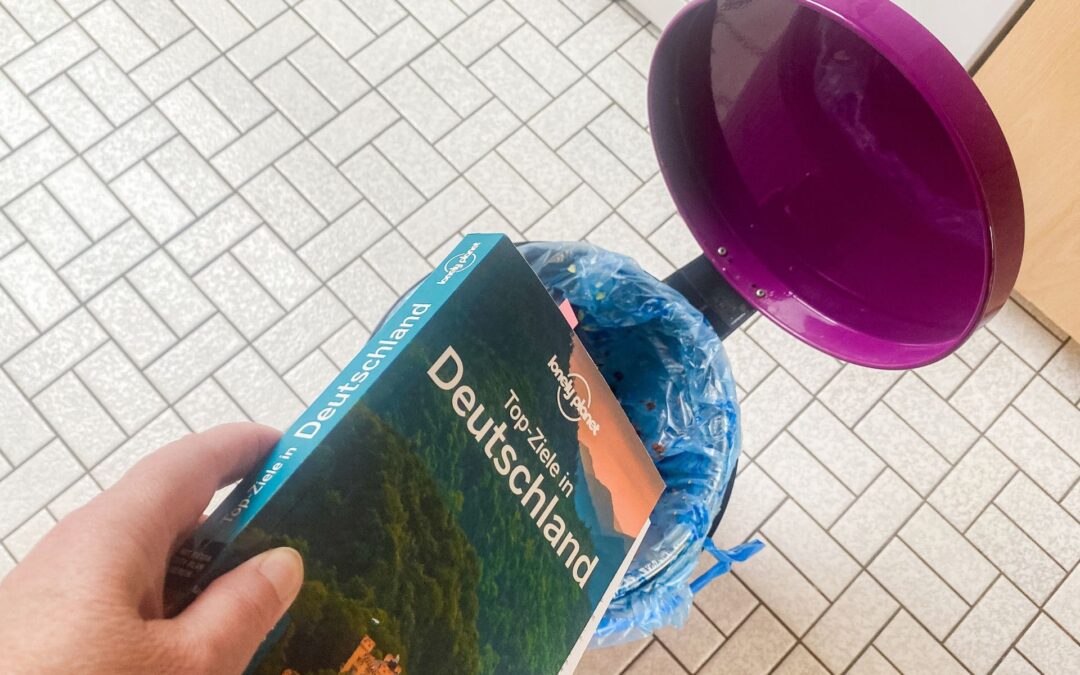
Updated on March 1, 2024 by Angelika
Lonely Planet, the bible of backpackers and independent travelers, is done for me! A recent news item on my favorite podcast startled me: Lonely Planet has published its annual "Best in Travel" destinations 2024 *. To mark Lonely Planet's 50th anniversary, the supposed 50 best travel destinations in the world were chosen for 2024. What annoyed me incredibly t was to hear that not a single German destination is on this list. But Nairobi has made it to number 1 of the cities! My first thought was: Who bribed the editors? Or were they all on drugs? To recommend a city where 60 % of the population live in slums as the best city break destination is, in my view, at least grossly negligent. Incidentally, I was in Nairobi for two days at the start of a Kenya safari in 2017, and I don't intend to check whether it has improved since then.
It was a bitter disappointment for me that Lonely Planet completely ignored my home country of Germany - the country that has the most UNESCO World Heritage Sites (52!) after China and Italy and offers diverse landscapes from the North Sea to the Alps. I took this as an opportunity to take a closer look at the Lonely Planet Travel Guide Top destinations in Germany *, which I bought recently. As a travel blogger for Germany, I wanted to know how Germany is viewed by foreign publishers and what they think are the most important travel destinations in our country.
This Post's Content at a Glance:
Why the Lonely Planet Guide "Top Destinations in Germany" is No Good
I was shocked to realize that for Lonely Planet, practically only southern Germany exists. At least Cologne, the Moselle valley and the Upper Middle Rhine Valley were mentioned in the west, and the cities of Berlin, Potsdam and Dresden in the east. That's it! The Wadden Sea and the Baltic Sea, the islands, the Harz Mountains, the Mecklenburg Lake District, the World Heritage cities of Lübeck, Wismar, Bremen and Hamburg - all missing! The whole of Thuringia - in my opinion one of our most interesting federal states, with places where world history was significantly influenced - Weimar, the Wartburg and the Bauhaus - is completely left out!
Even in Bavaria, only Munich, Nuremberg, Rothenburg ob der Tauber and Neuschwanstein Castle made it into this "top selection". Not even the Zugspitze, Lake Constance or the Alps are mentioned. I'm sorry, I just can't take a travel guide like this seriously! It doesn't help that there are useful practical tips for the few destinations mentioned.
I had the suspicion that Lonely Planet had asked some - relatively uninformed - non-German travelers which "top travel destinations" in Germany came to their mind, and compiled the travel guide based on this survey. But why this work was then translated into German remains a mystery.
Travel Guides Germany: My Recommendations
I have looked at a number of German-language travel guides covering the whole of Germany. All of these books are suitable to give you an overview of the different regions, cities worth seeing, cultural highlights and natural beauties of Germany, and for inspiration. Once you have decided on one or more destinations, I recommend that you also buy a specialized travel guide for the region or city in question. Here I almost always use the travel guides from Michael Müller Verlag or from Reise Know-How back. Although they are not as visually appealing as some other travel guides, they provide an incredible amount of information and background knowledge, which is important to me.
I can recommend the following travel guides for the whole of Germany:
1. Baedeker Germany: The Classic
- Detailed information on history and historical sights, important personalities, the country and its people
- High-quality maps and illustrations, including three-dimensional depictions of important sights
- Good tour suggestions
- Removable "Easy-Zip" card
Disadvantages
- Alphabetical organization of destinations makes geographical classification difficult
- No practical tips on how to get there, mobility on site, etc.
Recommendation: The Baedeker Travel Guide Germany * is an excellent choice for travelers looking for quality content and years of experience. If you are looking for inspiration for your next trip, it is less suitable, as the alphabetical structure makes it more of a reference book. Tips on how to get there, public transport and budget-friendly travel are also missing.
2. Vis-à-Vis Travel Guide Germany: Perfect for an Initial Overview
- High-quality visual presentation with maps, photos, tour suggestions and info boxes on special topics
- 3D drawings of interesting sights
- Structured by region
- Attractive information section on various topics relating to Germany (e.g. landscapes, festivals, history ...)
- Partly poor information about the sights
- Some regions are underrepresented compared to others (example: Berlin approx. 70 pages, Black Forest one page)
- No removable map
Recommendation: The Vis-à-Vis Travel Guide Germany * is a very nice and useful travel guide that is characterized by high-quality pictures and design. If you are more visually oriented, and cultural and historical information is important to you, you will like this travel guide. It even includes budget tips for individual destinations. However, it is relatively expensive.
3. MARCO POLO Hin & Weg Deutschland: Top Highlights and Insider Tips
- Structured by federal states from north to south
- Visually enhanced by infographics, images, info boxes and speech bubbles.
- Tips on lesser-known sights and activities
- Relatively superficial information
Recommendation: This "all-German" Marco Polo Travel Guide surprised me in a positive way. It contains a lot of - albeit condensed - information on all the important places and sights in Germany and also provides some insider tips. It is attractively designed with information boxes, graphics and funny speech bubbles. Compared to the Baedeker, for example, the information is somewhat superficial and lacks cultural and historical background.
4. 4. Das Reisebuch Deutschland (Bruckmann-Verlag) : Inspiration Especially for Road Trip Fans
- Comprehensive overview of Germany based on 12 routes that lead through different regions of the country
- Generally high-quality design and print quality.
- Description of dream roads and national parks with highlights covering different interests and activities.
- Some descriptions of places and sights are a little too compact
- Organized alphabetically within the regions, which makes tour planning more difficult
Recommendation: The Bruckmann travel guide * is particularly impressive thanks to its visual design with high-quality photos and information boxes. The routes presented provide inspiration for exciting road trips that include nature and cultural experiences. However, many beautiful regions and places are missing from this travel guide.
Conclusion: The Good Old Baedeker is my Favorite Travel Guide for All of Germany
Among the travel guides for the whole of Germany, I like the Baedeker the best. So far, I've found a paragraph on every sight worth mentioning. Admittedly, the alphabetical organization seems a bit antiquated and is my biggest, if not only, criticism of the Baedeker. Otherwise, I find it very attractively designed and think that it contains everything you can expect from a travel guide for Germany. A clear recommendation!
Travel guide Germany: Further tips
Travel guides for germany in english language.
Unfortunately, there are only a few travel guides on the English-speaking market that look at Germany as a whole. Here I can recommend DK Eyewitness Germany * and Fodor's Essential Germany *. Both travel guides cover all regions of Germany and go into detail about the culture, country and people. Another English travel guide is Rick Steves Germany *, which doesn't convince me 100 %, as it also leaves out entire regions. However, I would definitely prefer it to the Lonely Planet.
Special Germany Travel Guides from Bloggers
Caro and Martin from WE TRAVEL THE WORLD have two Germany travel guides which I like to use again and again to get inspiration for new destinations in Germany that I don't know yet. I also like to use them on the road because of their handy format - they served me well on my trips to Trier, Regensburg, Lübeck, the Moselle and the Saale-Unstrut region.
Both travel guides are also available as an e-book or in a practical double pack printed and as an e-book at a special price. Both are only available in German.
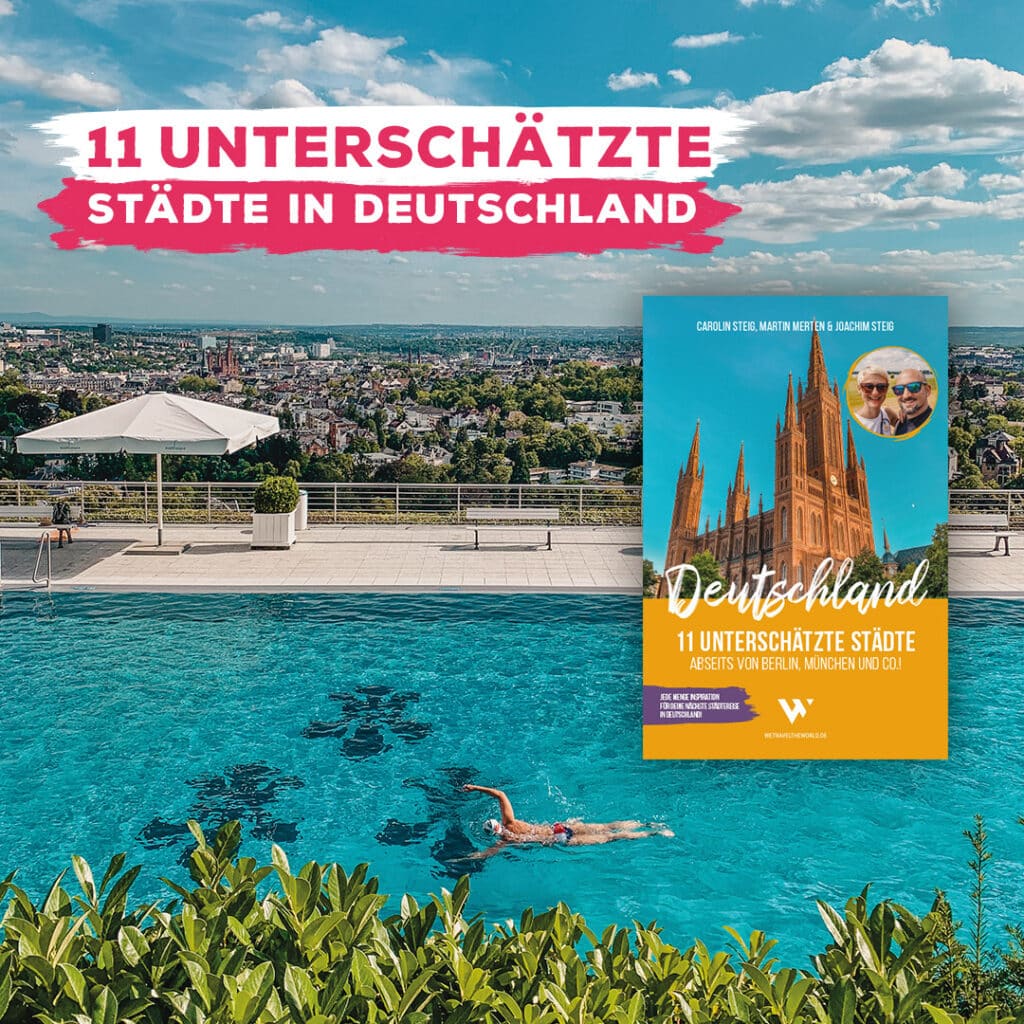
UNESCO World Heritage Sites are places of outstanding universal value, whether for their cultural significance or their unique natural setting. The UNESCO World Heritage List was read more

During the Corona pandemic, I took many road trips in Germany and became particularly fond of our country's beautiful cities. read more
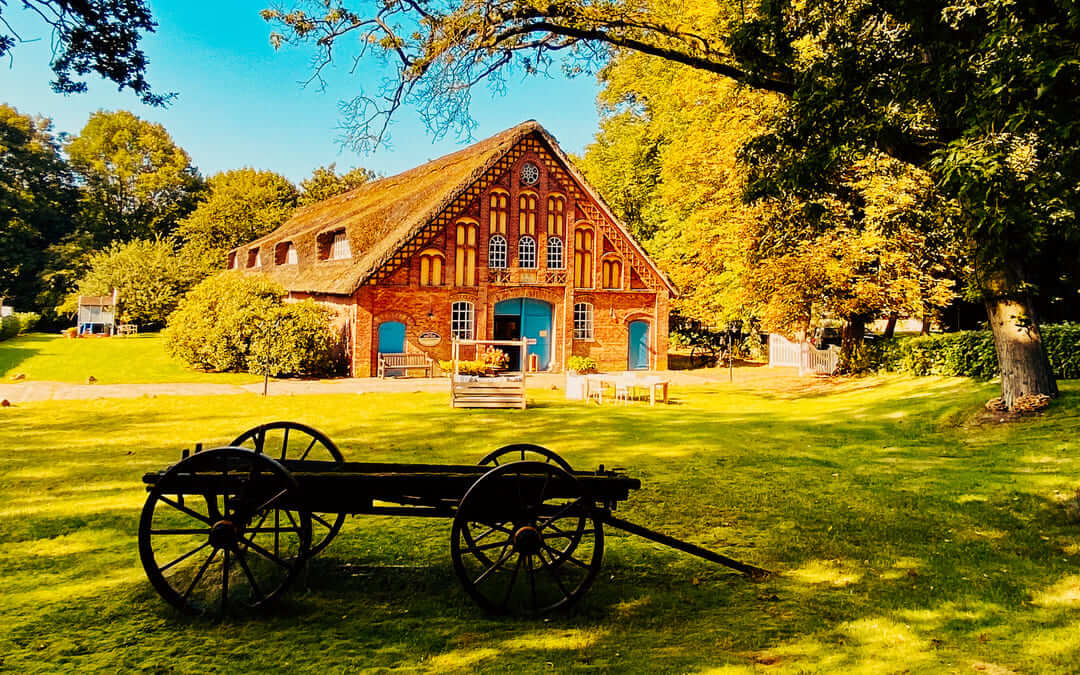
Good news for you! To plan an adventurous road trip in Germany, you no longer need to study Google Maps read more
Dear Angelica,
Thank you for this article. As a frequent traveler, I was not aware of the situation regarding travel guides within Germany.
I will be visiting from Latin America next year and I am very grateful to you for this overview. Your blog is also great cinema.
Best regards, Iris
Dear Iris, I'm delighted that you found my post useful. I'm sure you want to show your visitor from South America some beautiful places in Germany - I think you can find some suggestions on my blog😃. If you haven't found what you're looking for, please let me know which cities and regions you're considering. I still have a large pool of material and can move the topics around as required. Thank you very much for your positive feedback! Love, Angelika
This article is accurate and I urge you to visit Nairobi. The slum you are talking about is less than 20 percent of Nairobi's population.
Dear Josephine, Thank you for taking the time to read my blog post. Of course, anyone can have their own opinion - mine is that I would always travel to Kenya for the National Parks and the safari experiences, which are truly breathtaking. I also enjoyed the beaches near Mombasa, but for me Nairobi was only a hub to reach the more beautiful places in the country 🙂 Cheers, Angelika
Hello dear Angelica, Unfortunately, I've also experienced this and have literally thrown these books in the bin. Selling them would have done nothing for other families. Most of them were regional hiking guides with the top tours for families. But if every hiking trail consisted only of wide forest paths, then that might be nice for a pensioners' club, but you can't win a flower pot with children.
But there are such cool trails and it's such a pity when children store them in their heads early on: Harz/Palatinate/Odenwald is boring.
Thank you for this article!
Best regards Stefanie
Dear Stefanie, Very interesting to read that it's also an issue with hiking guides - I wouldn't have expected that. The marketing departments of the publishers would be better advised to formulate their advertising texts more clearly so that buyers know what to expect. I ordered the Lonely Planet online and relied on the description. In the future, I'll probably go back to buying from bookstores where I can see what I'm getting. Thank you for your great comment! Love and have a nice weekend, Angelika
Dear Angelica, thank you and right on. Keep your eyes open when buying travel guides and don't be tempted by the comments on the major sales platforms. I've already fallen for it too. As we usually travel with the camper, that's also my search field when it comes to travel guides. And there are often similar books with different titles but the same itineraries and tours. It annoys me because it's not transparent. It's great that you're clearing things up here. Best regards, Birgit
Dear Susanne, Thank you for your great comment! To be honest, I've always thought Lonely Planet was a good travel guide publisher, but it's worth looking twice at the market leaders too. I've now looked at several Germany travel guides from this publisher and wouldn't recommend any of them. I'm glad you found my comparison useful. Love, Angelika
Submit a Comment Cancel reply
Your email address will not be published. Required fields are marked *
Save my name, email, and website in this browser for the next time I comment.

I'm Angelika and I want your trip through Germany to be an unforgettable experience. I'll give you insider tips on highlights, hidden gems, restaurants and accommodation.
LATEST POSTS
- 12 of 12 in April 2024: With the Germany Ticket to Kirchheim unter Teck
- Month in Review March 2024
- The Common Thread in My Life: The Joy of Writing
- 12 of 12 in March 2024: Magnolia Blossom and Museum Visit in Stuttgart
- Month in Review February 2024
- Excursion destinations Baden-Württemberg
- Festivals and culture
- Travel Routes Germany
- Destinations Germany
Join my newsletter! !
You want more info about traveling in Germany? Then sign up for my newsletter and always get the latest tips!
Search hotels and more...
Destination, check-in date, check-out date.
The Best Berlin Guide Books for Every Traveler [2024 Update]
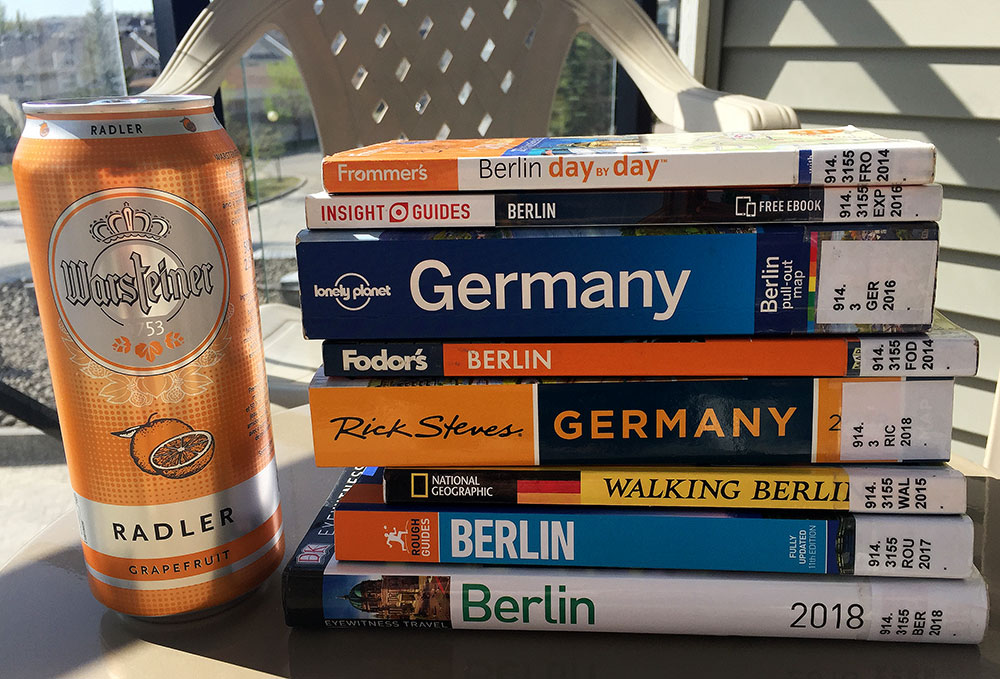
Although I visited Berlin last summer, I didn’t get to explore the city as much as I’d wanted, and I’m looking forward to re-visiting the German capital this summer. So, I recently sat on my balcony with a can (or two…) of German radler and a pile (or two!) of Berlin travel guide books for a marathon trip-planning session.
In addition to learning a lot about Berlin and discovering some amazing “must-see” attractions in Berlin, I quickly became an expert on Berlin guide books. I learned exactly which book had the best walking tours, the best photos, the best budget travel advice and the best background information.
If you’re planning a trip to Berlin, don’t just wing it! Berlin is too big, too exciting, too diverse and too interesting to be explored and enjoyed without a plan. Instead, invest in one, two or three of these Berlin guide books, which will help you maximize every minute of your time in Berlin.
I’ve noted exactly which Berlin travel guide books you should buy, borrow (from the library) and skip , so you can find the perfect book for your travel style. Read on for the complete guide!
( Wondering about radler ? Radler is the German word for cyclist, or the English word for “delicious beverage”. Okay, that’s a lie. Radler does mean “cyclist”, but it is actually only one specific kind of delicious beverage – a fifty-fifty blend of beer and lemonade or lemon soda. If you’ve ever had a shandy, it’s the same thing, but more German. I’ve been told it goes by the “cyclist” moniker because it’s perfect for hydrating after a long bike ride.)
Lonely Planet Germany – The Best Berlin Guide Book for Trips Across Germany

The Lonely Planet Germany is a massive, countrywide guidebook clocking in at 848 pages. The guidebook’s Berlin section spans seventy pages at the front of the book. Coverage begins with two detailed maps of the city, and then segues into comprehensive listings of sights, hotels, dining options, nightlife, shopping and general tourist information.
One-, two-, and three-day itineraries are suggested, and there are two-page spreads dedicated especially to the Berlin Wall and Museum Island. There is also an additional twenty-page guide to destinations around Berlin, like Potsdam, Sachsenhausen Concentration Camp and Spreewald.
The Lonely Planet Germany would be my top choice of guidebook for anyone visiting Berlin and then going on to explore other parts of Germany, because it is the most thorough Germany travel guide book on the market. However, it is also thick and heavy, so consider buying the Kindle edition rather than the cumbersome paper copy.
Buy, borrow or skip? Buy it, but consider the electronic version. I bought the Kindle edition, which I can read on my phone as I’m out and about in Berlin.
National Geographic Walking Berlin – The Best Berlin Guide Book toCarry Around the City

I didn’t expect much from this little Berlin travel guide book. However, in the end, National Geographic Walking Berlin – The Best of the City turned out to be my favorite Berlin travel guide!
Unlike the hulking Lonely Planet, this guidebook is five inches wide, seven inches tall and less than two hundred pages. It slips easily into a small purse or daypack without adding much weight.
I loved this book because it’s organized into thirteen different walking tours, each with an easy-to-follow, full-color map, lots of color photos, and interesting information about the things you can expect to see along the way.
This book completely aligns with my travel style, which is heavy on the wandering around and exploring at a leisurely pace, and light on the rushing from tourist attraction to tourist attraction. With this book in my purse, I can quickly learn about the things I stumble upon and the lesser-known places nearby that I might otherwise miss.
Buy, borrow or skip? I bought this book and brought it with me to Europe!
Insight Guides Explore Berlin – Best Berlin Travel Guide Book for People Who Are Too Cheap to Buy the eBook

At first, I had a hard time finding anything that differentiated this book from some of the other Berlin travel guide books. However, as I was skimming through a second time, I noticed that the Insight Guides Explore Berlin guidebook has one very unique feature: a free eBook !
By downloading the Insight Guides app (available from the App Store and Google Play), scanning a QR code from inside the physical book and registering with Insight guides, you can access a free digital travel guide to Berlin. The process of downloading the book was a little bit confusing, but once I’d figured it out I was pleased to discover that you literally get the entire book for free! The electronic version is effectively organized (hyperlinks help you navigate between references to the same things) and contains all the same full-color photos.
Buy, borrow or skip? Borrow, obviously! Sign this book out of your local public library, scan the code inside and use the digital version for free! (I clearly don’t have a future in book sales…)
Interlink Cultural Guides Berlin – The Best Berlin Travel Guide for Readers

I was not expecting this! The Interlink Cultural Guides Berlin travel guide book reads more like a first-year college textbook than a typical travel guide.
This Berlin guide book contains almost 240 pages of dense text, supplemented with only a handful of photos (in fact, the first photo doesn’t appear until page 26). The book is divided into chapters including Geography & Topography, Landmarks, Leisure & Pleasure and Spending Power. Each chapter then includes several sub-chapters focusing on a very specific aspect of Berlin. For example, the Geography & Topography chapter is further divided into Water: Rivers, Water: Canals, Water: Lakes, Green Spaces: Forest and Hills, and Green Spaces: Parks.
Similar to a textbook, this Berlin travel guide also features a short glossary of common German terms that you’ll read throughout the book (from alt to Westen) and a reference list of books and websites that can provide more information for inquisitive readers.
Buy, borrow or skip? Voracious readers and academic travelers should definitely buy this one, while others should borrow it and just read the sub-chapters pique their interest.
Eyewitness Travel Berlin – The Best Berlin Guide Book for Visual Travelers

The motto at Eyewitness is “the guides that show you what others will only tell you”, and that’s especially true in the case of their Berlin travel guide book.
Eyewitness Travel Berlin was updated in spring 2023. The new edition contains almost 300 pages of full-color photographs, annotated diagrams and easy-to-follow maps. These stunning images are supplemented with text, but it’s clear that visuals are the focus in this book.
This is a fantastic book to rifle through in the days leading up to your trip. It’s impossible not to be inspired by the images inside, from the double-page photograph of the illuminated Brandenburg Gate to the illustrated cross-section of the Marienkirche church. However, the book is weighty and wouldn’t be great for carrying around Berlin during a day of sight-seeing.
Buy, borrow or skip? Borrow this one from the library if you’re considering booking a trip to Berlin. By page ten you’ll have whipped out your credit card and you’ll be comparing flights online!
The Rough Guide to Berlin – The Best Berlin Guide Book for Budget Travelers

I’ve always had a soft spot for Rough Guides. Sometimes, they feel like the neglected younger sibling of the Lonely Planet series. However, when you actually crack one open, you realize that Rough Guides have stayed true to their budget travel roots (unlike some “other” travel guide book series…).
The Rough Guide Berlin is an excellent example of a guide book that really caters to budget travelers. It has more than three hundred pages of affordable travel advice, including a full-color guide to seventeen “can’t miss” spots in Berlin, customized itineraries (including one focused on budget travel, and another on the city’s nightlife) and well-curated directories of affordable accommodation and restaurant options.
Although the full edition was last updated in 2016, a brand new pocket edition was released in March 2020. Check it out if you want a smaller, more current publication from this great series!
In my opinion, the only downside of The Rough Guide to Berlin is the editors’ choice to put all of the maps at the back of the book. This makes it harder to visualize which attractions are close together, or what would be the best walking route between different sights.
Buy, borrow or skip? Budget travelers should buy this one. By following the tips for smart, inexpensive travel in Berlin, you could easily save the equivalent of the price of the book in your first few hours in Berlin.
Rick Steves Germany – The Best Germany Travel Guide Book for Your Grandmother
The latest version of this Germany guidebook was published in December, 2022. Click here to order the latest edition.
Rick Steves is a pretty cool guy. He’s dedicated his life to encouraging Americans to explore Europe in a way that embraces and shows respect for the local people and culture. So, I always feel a bit sad that I can’t personally get behind his guidebooks.
First, the good stuff. The Rick Steves Germany guidebook is updated every year, so you never have to worry about outdated information. As well, it’s even longer than the Lonely Planet Germany guidebook (it’s more than 1050 pages long!) but, thanks to its tissue-thin paper, is smaller and lighter than its counterpart. The Berlin section in this book is about 130 pages long.
So, why don’t I love this Germany travel guide book? Well, there are two huge reasons.
First, Rick Steves books have the worst maps of any guidebook I’ve ever seen. Each map is hand-drawn in a simple style, and they often leave out smaller streets and lesser-known landmarks. There have been several occasions where I’ve planned a walking trip based on a Rick Steves map, thinking my destination is only five or ten blocks away, and later discovered that the map didn’t include dozens of smaller streets along the way. His maps are so confusing!
Second, I find that the travel tips in Rick Steves guidebooks cater more to older, less-able or less-experienced travelers. For an experienced traveler the tone can be a bit patronizing, and for a younger traveler, trendy or up-and-coming attractions are only ever mentioned in passing.
Buy, borrow or skip? Borrow this Germany travel guide book from the library before your trip, or buy it as a gift for your grandparents if they’re heading to Germany.
Frommer’s Berlin Day by Day – The Best Berlin Travel Guide Book for Short City Breaks

Another pleasantly purse-sized Berlin travel guide book, Frommer’s Berlin Day by Day is a good option for travelers taking a short city break in Berlin.
The book opens with one-, two- and three-day itineraries, each with a full-color map, descriptions of the highlights you can expect to see, recommendations for where to eat and some color photographs. Next, there are recommendations based on particular interests (including beer, art and East German history) and six easy-to-follow neighborhood walking tours.
The last half of the book is a typical travel directory of hotels, restaurants, nightlife, day trips and travel directories. There’s also a quick list of useful German expressions at the back of the book.
Overall, Frommers Day by Day Berlin is a solid Berlin travel guide book. However, I still prefer the National Geographic Walking Berlin, mainly because its maps have more details and it contains significantly more color photographs.
Buy, borrow or skip? I’d recommend borrowing this Berlin guide book from your local public library.
Eyewitness Top 10 Berlin – The Best Berlin Travel Guide Book for Travelers with a Short Attention Span

TikTokers take note – The Eyewitness Top 10 Berlin is the Berlin guidebook of your dreams, and it was just updated in late 2023!
Unlike Eyewitness’ comprehensive Berlin city guide (discussed above), this unique book has fewer than 200 pages, divided into almost 100 “Best of Berlin” lists. The book begins with one hundred fascinating facts, divided into the top ten things to know about each of Berlin’s top ten tourist attractions. The next section is more topical, featuring two-page spreads like the Top 10 Historic Buildings in Berlin and the Top 10 Festivals and Fairs in Berlin. Finally, it closes with the Top 10 highlights in each of Berlin’s ten most interesting districts.
Buy, borrow or skip? This is a great Berlin travel book to gift to the non-reader in your life who needs to be convinced to join you on a trip to Berlin. It’s as breezy and skimmable as a gossip magazine, so buy it as a gift for them! If you’re already sold on a trip to Berlin, borrow this from the library and flip through it on your coffee break at work.
Fodor’s Berlin – The Best Berlin Travel Guide Book for People Who Hate Trip Planning

Where some other Berlin travel guides have attempted to include everything under the sun (or should I say, everything under the Reichstag dome?), Fodor’s Berlin offers a much more curated look at Germany’s capital city.
This short Berlin travel book opens with a “Best of Berlin” section before transitioning into a neighborhood-by-neighborhood guide to the city. This content makes up the first third of the book, and the latter two thirds are a typical travel directory. Fodors’ correspondents often give their highest ratings to expensive service providers. For example, one of their recommended restaurants has prices starting at € 115 for dinner (!) and the ultra-expensive Hotel Adlon is one of their top picks for accommodation in the city.
Buy, borrow or skip? I think that most readers of my blog can skip this Berlin guide book. It doesn’t offer anything unique compared to the other Berlin travel guide books I’ve recommended, and constantly reading about experiences that are out of your price range isn’t very much fun!
Heading to Berlin? Check out my list of the 25 Best Things to Do in Berlin (no Berlin guide book required!).
There are lots of cool hotels in Berlin, but there’s one in particular that strikes the perfect balance of design, affordability, comfort and luxury. Read about my stay at Casa Camper Berlin .
Traveling on a tighter budget? I know a central Berlin hotel with comfortable private rooms at hostel prices! Read about my six-night stay at Hotel 38 Berlin .
There is an alternative to expensive hop-on, hop-off bus tours of Berlin that still lets you see the city from the second floor of a double-decker bus. Read about the secret €3 Berlin sightseeing bus tour .
Then, check out my guide to finding the best vegetarian food in Berlin (and the rest of Germany too!).
Browsing for Berlin guidebooks later? Pin this post to your trip-planning board!

20 Solo Female Travel Quotes to Inspire Your Next Journey
Obidos medieval festival 2024 – what to know before you go, you may also like, the best things to do in cascais (a..., where to stay in calgary, canada – the..., is madrid worth visiting an honest traveler’s perspective, one day in barcelona, spain – an easy-to-follow..., what is the best time to visit the..., barcelona to paris train – tips for traveling..., visiting the alcazar of segovia – 10 things..., how to use the calgary transit app, the best places to visit in mumbai in..., a 7-day kerala itinerary (solo female traveler approved).
- Natural Wonders
- Federal States
- UNESCO Sites
- Architecture
- Art Museums
- Famous People
- Holidays & Customs
- Extreme Sports
- Family Trips
- The Romantic Road
- Do's & Don'ts
- Top Ski Resorts
- Plants and Animals in Germany
- Privacy Policy
- About Lydia
Welcome to My Germany
Discover the adventures that await.
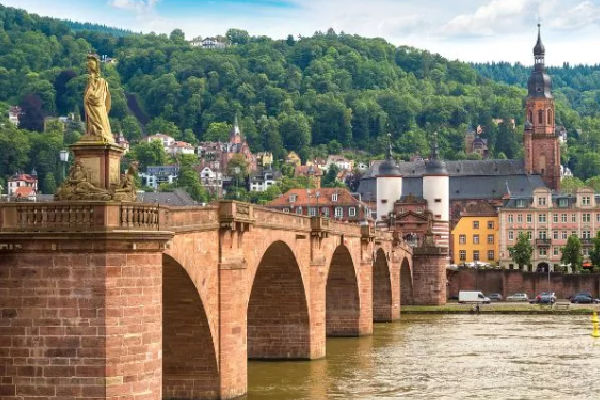
Discover Cities
A rundown of the best cities in Germany to visit. Where to go for historical, cultural, and culinary experiences set in stunning landscapes and beautiful architecture.
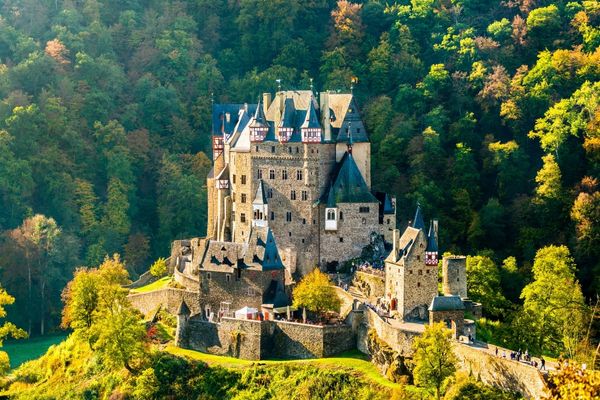
Discover Castles
Discover some of Germany's famous castles, from the iconic Neuschwanstein to the tiniest of country lodges. Uncover interesting facts and helpful tips as you explore!

Discover Natural Wonders
Embark on a journey through the natural wonders of Germany with our guide to breathtaking alpine landscapes, turquoise waters, and stunning rock formations.
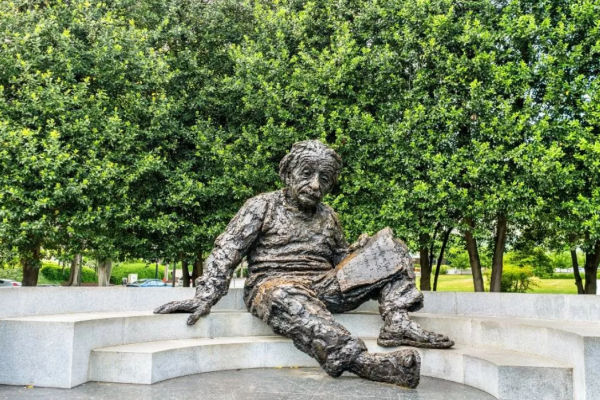
Discover Famous Germans
From famous musicians and poets to kings and queens, Germany was the home to so many inspirational and entertaining folk. Let's learn about the famous Germans in history!
Tour My Germany Travel Guide: Discover the Best of Germany
Do you know where the best place to eat bratwurst in Germany is? Why are there shelves inside German toilets? What is the most famous fairy tale castle to visit?
For answers to all these questions and more , read on!
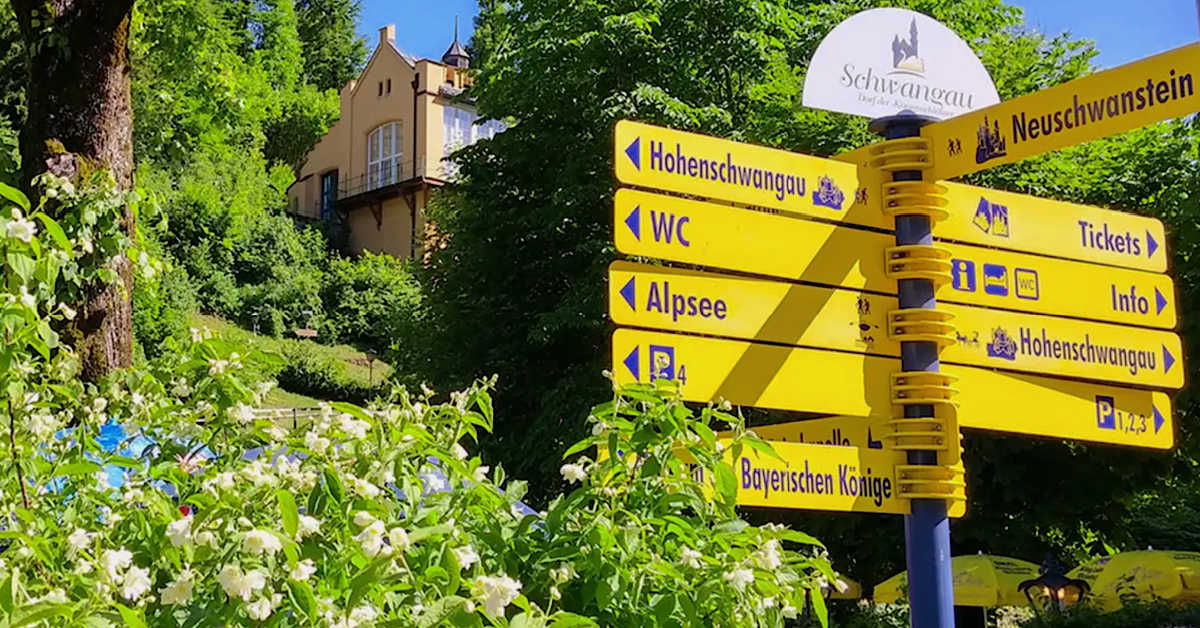
Herzlich willkommen!

I'm Gerhild and for over 15 years, I've been sharing my German cuisine on Just Like Oma . Join me now as we tour my Germany to see where these delicious foods originate.
As we travel, we'll marvel at the spectacular scenery, delve into the local culture, uncover hidden historical treasures, and find the best destinations off the beaten track that are worth exploring.
Joining us on this tour is my son Eran and my granddaughter Lydia each writing as they travel throughout Germany, discovering more about their heritage. Experience the country through their eyes as we:
- Gaze upon fairytale castles and baroque palaces
- Embark on a river cruise along the Rhine River
- Camp in interesting locations throughout Germany
- Drive down the scenic drive down picturesque Romantic Road
- Stroll through the charming Christmas markets in places like Rothenburg ob der Tauber
- Explore historic cities , towns, and the natural wonders of Germany
- Visit more than one UNESCO World Heritage Site
Be inspired to join us! Discover this popular destination in Central Europe, Germany, but not just as a tourist following the typical Germany travel guides.
- The Black Forest and the Rhine valley
- The picturesque shores of Lake Constance
- The iconic Brandenburg Gate
- The majestic peaks of the Bavarian Alps and other natural wonders
- The grand palaces and iconic landmarks and buildings
- The famous Oktoberfest celebration in Munich
Experience all of this in the best way possible, with the help of the travel tips you'll find throughout our Tour My Germany guide.
Gain insights into German culture, including customs, etiquette, and popular activities, whether you're taking a road trip, using train stations, public transportation or some of the busiest airports. Be prepared, making travel plans with the best time to go, whether during peak season or not, and the best things to do and things to avoid .
Explore today's Germany by touring the heart of Europe and visiting the major cities or fairytale towns in southern Germany, or the big cities and smaller towns in northern Germany. Meet the welcoming German people, who will inspire you to continue your quest to learn about all things German, including interestingly strange and fun facts . And of course, savor the delicious German cuisine throughout your journey!
Recent Articles and Newest Posts
Plants and Animals in Germany: The Flora and Fauna of the Regions

Things to do in Heidelberg: Amazing must-see attractions

Hamburg, Germany: Things to do and the best places to see.
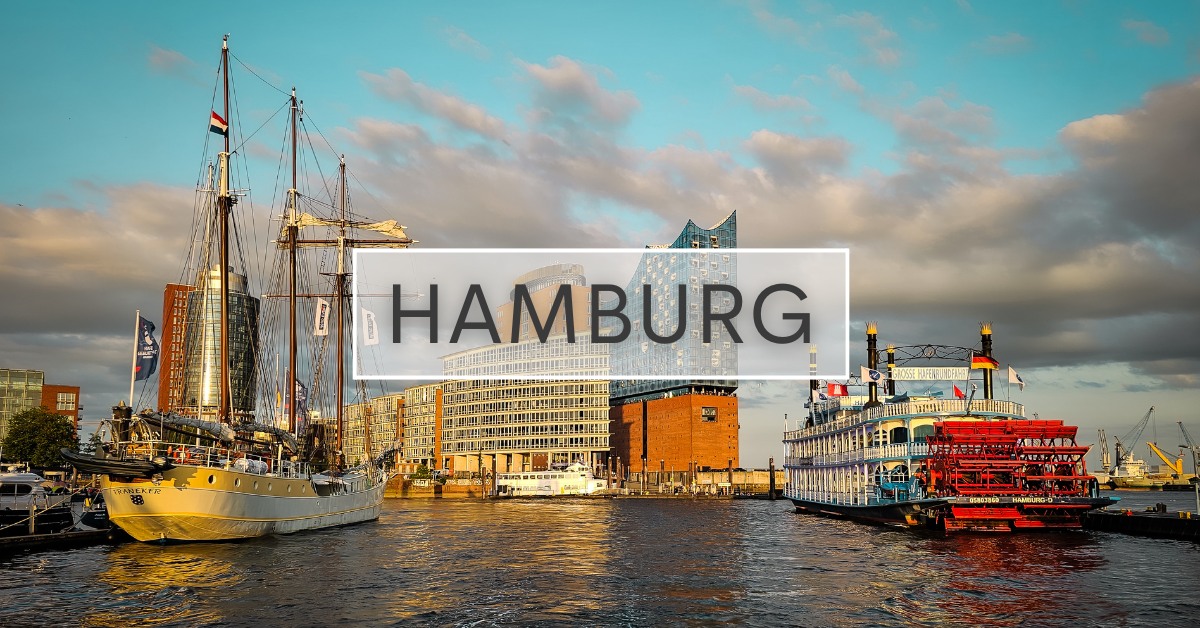
Famous Architecture in Germany: Iconic Landmarks and Buildings

Top Things to do in Stuttgart: More Than Just Fast Cars.
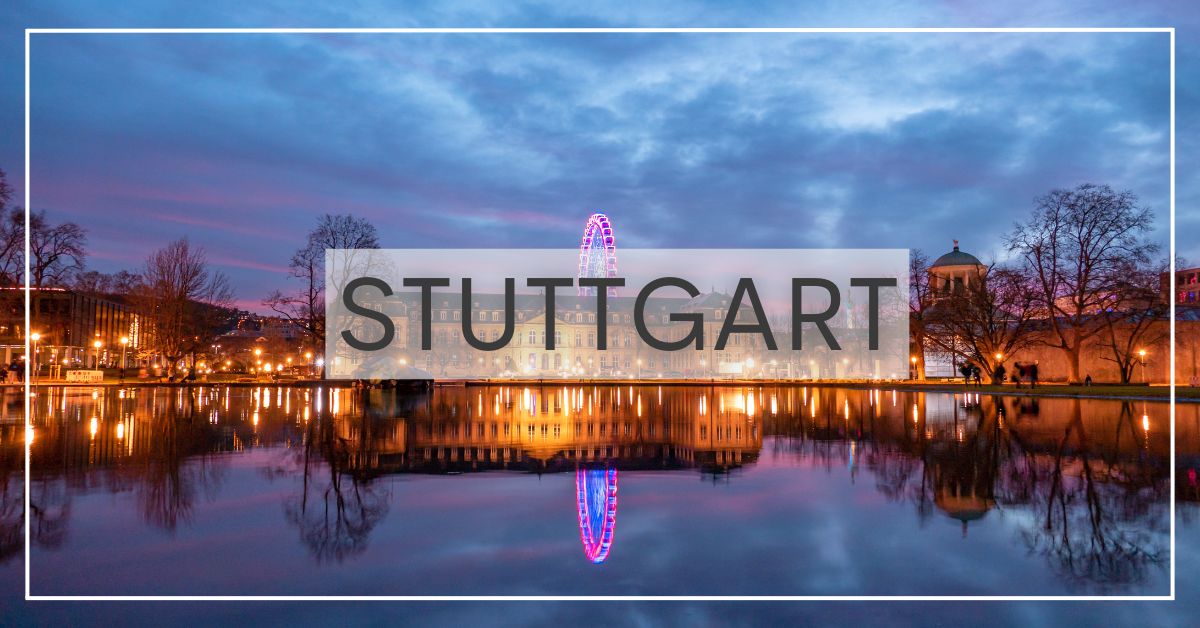
Things To Do in Cologne: A Guide to the City's Best Attractions
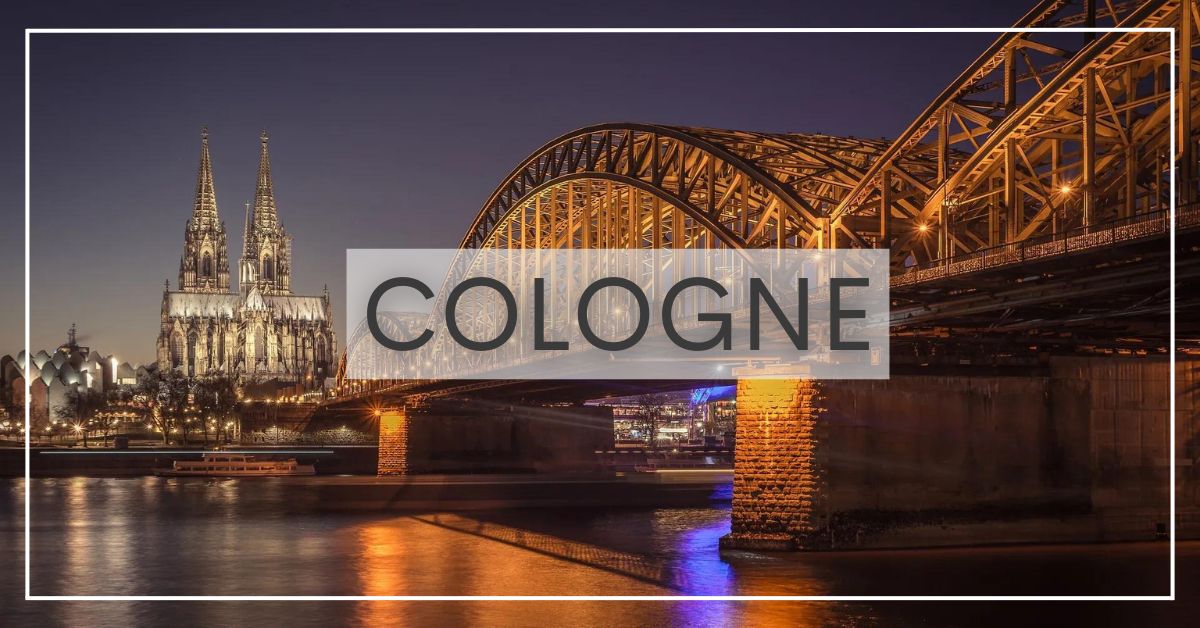
Pears, Beans, and Bacon: Birnen, Bohnen, und Speck (from Bremen)

Best Things to do in Rothenburg ob der Tauber
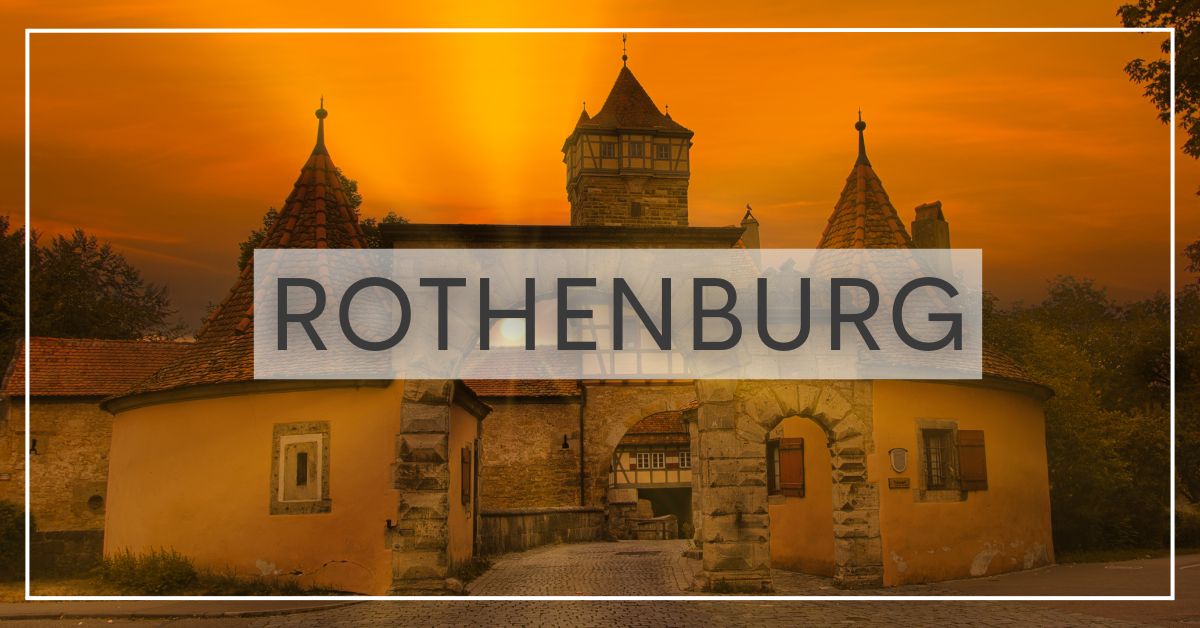
Tour My Germany Affiliate Sign Up
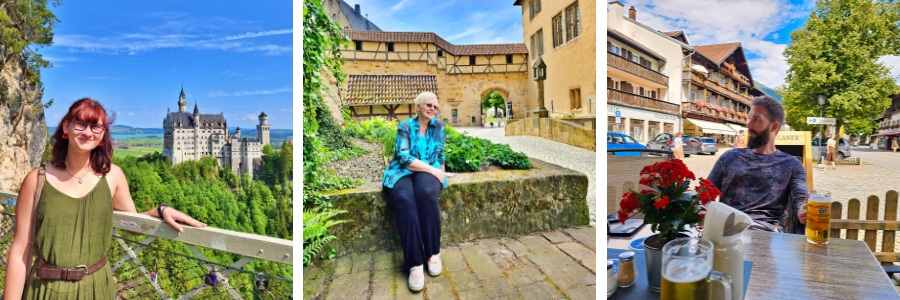
Attractions to See in Dresden: Uncover the Hidden Gems
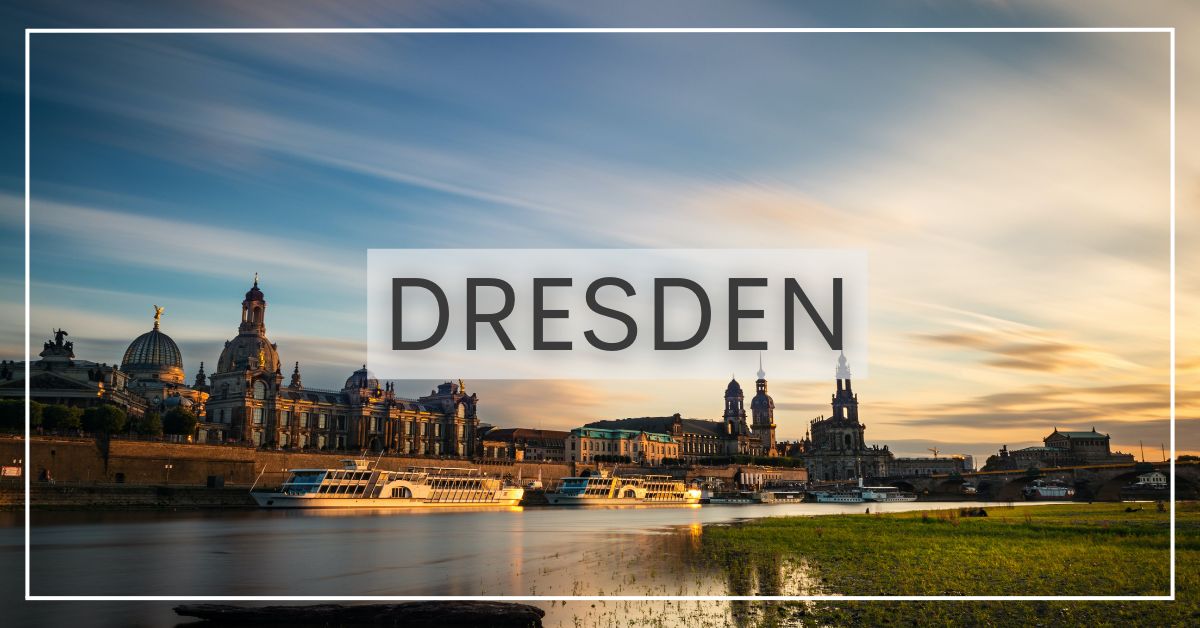
Unique Things to do in Berlin: More than a museum or two.
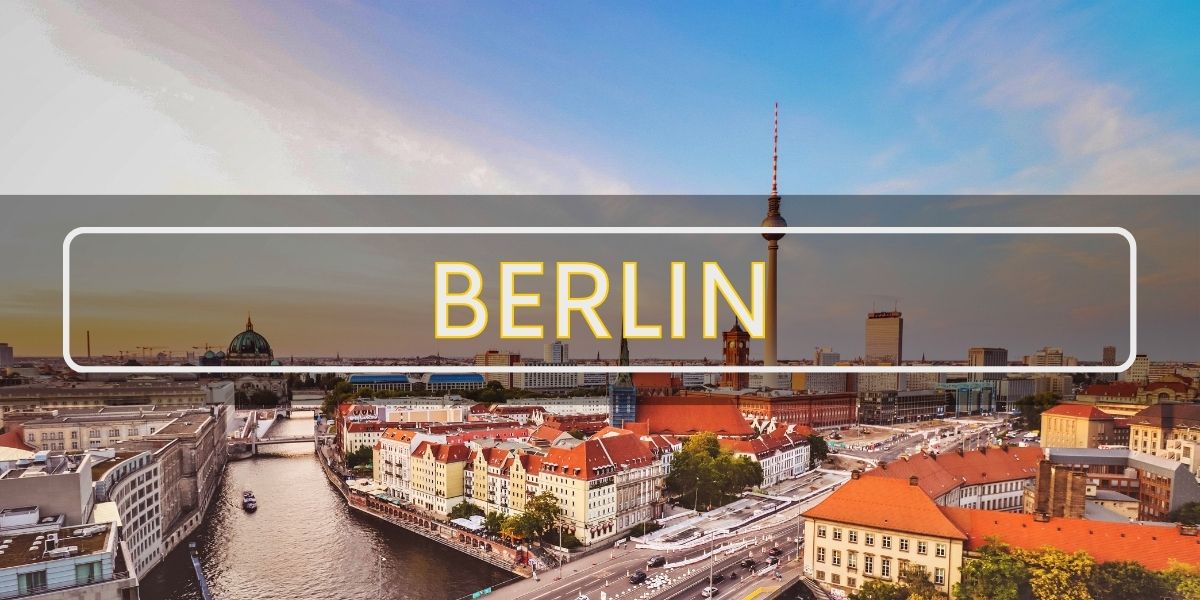
Famous Churches in Germany
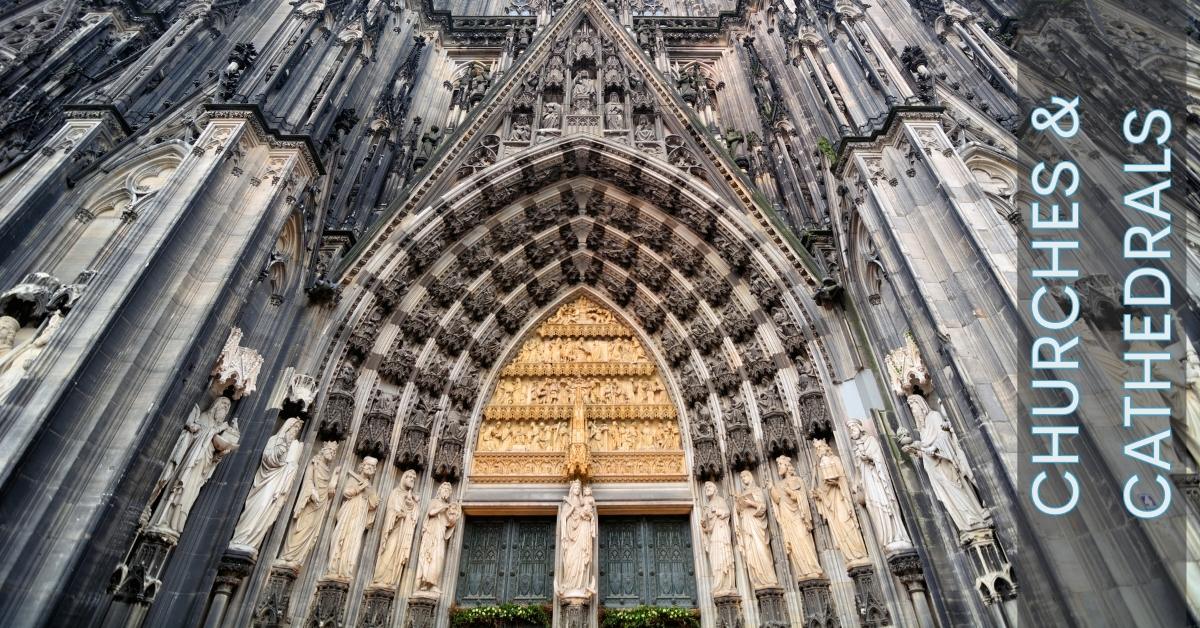
Looking for something different? Use the search in the upper-right corner or go to our sitemap .
Follow us on
Tour my germany vip club.
Get updates on posts, insider info, and a 20% discount in our shop. It's ALL about Germany. Let's go!
Congrats! You're now part of our VIP's Club.
Watch your email inbox for your Welcome Email. (If it doesn't arrive, please check your spam folder.)
Recent Articles
SITEMAP | Privacy Policy | Disclaimer | Terms and Conditions | affiliate program
AFFILIATE DISCLOSURE : Tour My Germany participates in various affiliate advertising to provide a means to earn advertising fees by linking to retail websites. We are a participant in the Amazon Services LLC Associates Program, an affiliate advertising program designed to provide a means for us to earn fees by linking to Amazon.com and affiliated sites. We will not promote products WE do not own or would not buy ourselves. Our goal is to provide you with product information and our own personal opinions or ideas. At times, We will showcase services, programs, and products. We aim to highlight ones that you might find interesting, and if you buy items from those companies, we may get a small share of the revenue from the sale.
We are independently owned, and the opinions expressed here are our own. YOU SHOULD ALWAYS PERFORM DUE DILIGENCE BEFORE BUYING GOODS OR SERVICES ONLINE.

5+ best Germany travel guides

- Post author: Avoid Crowds
- Post published: October 31, 2020
- Post category: General
- Post comments: 1 Comment
In 2024, the allure of Germany continues to captivate travelers seeking the rich cultural tapestry and dynamic urban life of cities like Berlin , Munich , and Hamburg . Whether you’re in the early stages of planning your journey or already counting down the days, we’ve curated a list of essential travel guides to enhance your experience.
Our selection at Avoid-Crowds.com, updated for 2024, is tailored to cater to a variety of travel preferences. We meticulously evaluate each guide based on three key aspects: comprehensive coverage for general travelers, budget-friendly options for the cost-conscious, and family-oriented guides for those adventuring with children. Additionally, we include a distinguished history book to deepen your appreciation of Germany’s heritage and cultural nuances.
At Avoid-Crowds.com, our goal is to streamline your travel experience. That’s why we provide daily crowd forecasts for various destinations across Germany, ensuring you can sidestep the hustle and immerse yourself in the beauty and tranquility of your chosen locales. Our extensive blog also provides up-to-date advice on the best times to visit Germany, ensuring your trip is as enjoyable and fulfilling as possible. Explore our resources today and prepare for an unforgettable exploration of Germany.
For the latest crowd forecasts, visit our dedicated page here . And for insights on the best time to travel to Germany, check out our blog here .
- Each book is hand-picked after extensive research
- Books with little or bad reviews are left out
- This post includes affiliate links on which we might earn a commission
Lonely Planet Germany
Lonely Planet’s Germany Travel Guide for 2024 is your quintessential companion for exploring Germany’s rich landscapes, historical sites, and vibrant culture. From the enchanting castles of Bavaria to the spirited festivities of Oktoberfest and the profound history of Berlin, this guide offers an in-depth look into Germany’s most cherished experiences. With visually inspiring top picks, tailored itineraries, and local insights, you’re equipped to create a journey that’s uniquely yours, while diving deep into the essence of German life.
Why this guide is a must-have for your German adventure:
- 🏰 Comprehensive Coverage: From popular attractions to hidden gems, explore every corner of Germany with confidence.
- 📅 Tailored Itineraries: Customize your trip with itineraries that match your interests and time.
- 🍽 Local Gastronomy: Savor Germany’s culinary delights with expert recommendations on what to eat and drink.
- 🌍 Inclusive Planning: Includes tools for solo travelers, LGBTQIA+ travelers, families, and those requiring accessible travel.
- 🗺 Practical Tips: Navigate like a local with insider tips, avoiding crowds and maximizing your time and budget.
Lonely Planet has been the go-to source for travel wisdom since 1973, reaching millions of travelers each year and turning travel dreams into reality. This guide not only promises to enrich your German journey with unparalleled experiences but also provides practical advice to ensure a smooth adventure. Whether you’re drawn to the historical allure of Berlin, the scenic beauty of Bavaria, or the culinary delights scattered across the country, Lonely Planet’s Germany Travel Guide is an indispensable tool for unlocking the best of Germany. Make this guide your travel companion and discover the soul of Germany with every page turn. To be released in May 2024.

Rick Steves Best of Germany: With Salzburg
“Rick Steves Best of Germany: With Salzburg” is an expertly crafted travel guide that distills Germany’s and Salzburg’s must-see art, sights, and experiences into potential two-week itineraries. Designed for those looking to immerse themselves in the essence of these locations, this guide offers strategic advice on how to maximize both your time and budget. From exploring Munich and Bavaria to venturing along the Romantic Road and the Rhine Valley, not to mention the vibrant streets of Berlin and the historic charm of Salzburg, Austria, this book has you covered.
Here’s why “Rick Steves Best of Germany: With Salzburg” is a must-have for your travel collection:
- 🕰️ Strategic Advice : Get expert tips on what’s truly worth your time and money.
- 🗺️ Efficient Itineraries : Explore the best of Germany and Salzburg with tailored itineraries.
- 🚫 Avoid Tourist Traps : Rick’s tips help you bypass crowds and tourist traps for a more authentic experience.
- 🍽️ Local Flavors : Dive into the best of local culture, flavors, and neighborhoods.
- 🎒 Travel Smart : Comprehensive planning strategies make navigating your trip a breeze.
This guide is perfect for travelers eager to experience the unique blend of old-world charm and modern excitement that Germany and Salzburg have to offer. With over 400 full-color pages, vibrant photos, and maps, this book doesn’t just plan your trip; it enriches your journey. Whether you’re plotting a concise adventure or looking to complement a more extended exploration, Rick Steves’ insights ensure a memorable and deeply personal travel experience. Embrace the opportunity to discover Germany and Salzburg through the eyes of a seasoned traveler. Let “Rick Steves Best of Germany: With Salzburg” transform your travel dreams into reality.

Delve into Germany’s Heart: The Dom of Cologne – A Gothic Marvel
Germany, a land of fairytales and innovations, hides one of its most splendid treasures in the heart of Cologne—the magnificent Dom. As your steps guide you towards this majestic cathedral, prepare to be enraptured by centuries of artistry, faith, and resilience. Cologne’s Best Things to Do Cologne City Tour Experience

Best Time to Visit Germany: Escape Crowds & Uncover Hidden Gems
Guten Tag, fellow travelers! 🌍 Are you ready to embark on an unforgettable journey to the land of enchanting castles, picturesque landscapes, and lively beer gardens? Germany awaits you, offering a unique blend of history, culture, and natural beauty. But when is the best time to visit Germany while avoiding

Delight in the captivating charm of Germany, a diverse European powerhouse known for its historic cities, stunning landscapes, and rich cultural experiences. Wander through the bustling streets of Berlin, marvel at the fairy tale castles of Bavaria, or delve into the vibrant arts scene of Hamburg, all while evading the
Fodor's Essential Germany
“Fodor’s Essential Germany” offers a comprehensive and engaging exploration of Germany, tailored for travelers seeking to immerse themselves in everything from serene boat rides down the Rhine to the lively festivities of Oktoberfest in Munich, or the enchanting depths of the Black Forest. Authored by local experts, this guide equips you with all the necessary tools to simplify your trip planning, featuring detailed maps, curated recommendations, and the latest information, all presented in a freshly redesigned, easy-to-read format adorned with stunning color photographs. Awarded as part of the Best Travel Guide Series of 2020 by Booklist, this guide stands out for its quality and utility.
Here’s why “Fodor’s Essential Germany” is invaluable for your German adventure:
- 🗺️ Detailed Maps : Over 55 maps guide you confidently through Germany’s landscapes.
- 📸 Vibrant Photos : Full-color images throughout the book inspire and inform your journey.
- 🏰 Expert Recommendations : Honest insights on the best sights, dining, lodging, and more.
- 📚 Cultural Insights : Gain a deeper understanding of Germany’s history, culture, and people.
- 💡 Practical Tips : From travel logistics to cultural norms, get all the advice you need to travel smart.
“Fodor’s Essential Germany” is much more than a travel guide; it’s a companion that brings you the best of Germany through the eyes of those who know it best. Whether you’re drawn to historic sights, charming small towns, or the country’s renowned beer and wine culture, this guide has something for everyone. Special features on Oktoberfest, King Ludwig’s fairy-tale castles, and wine tasting in the Mosel Valley offer unique insights into Germany’s signature experiences.
Don’t just visit Germany; dive deep into its heart and soul with “Fodor’s Essential Germany.” Let this guide be the key to unlocking unforgettable experiences, hidden gems, and lifelong memories in one of Europe’s most diverse and fascinating countries. Get your copy today and start planning the journey of a lifetime!

Kids' Travel Guide - Germany: The fun way to discover Germany - especially for kids
The “Kids’ Travel Guide – Germany” by Shiela H. Leon, Salome G., and FlyingKids is a vibrant and engaging guide that transforms a trip to Germany into an exciting adventure for children. Leonardo, the friendly tour guide, leads young readers on a journey through Germany, making stops in Berlin, Munich, Hamburg, and Frankfurt. This book is not just about visiting places; it’s about immersing kids in German culture, geography, history, and even language, all while making it fun with quizzes, tasks, coloring pages, and a travel diary.
Why “Kids’ Travel Guide – Germany” is a must-have for young explorers:
- 🌍 Educational Adventure : Makes learning about Germany’s culture, geography, and history exciting and engaging.
- ✏️ Interactive Fun : Packed with activities, quizzes, and coloring pages that keep kids entertained and engaged.
- 📚 Cultural Immersion : Teaches about German cuisine, popular words, and national symbols in a child-friendly manner.
- 🏰 Explore Major Cities : Guides children through Germany’s most famous cities and attractions, enriching their travel experience.
- 📖 Travel Diary : Encourages kids to keep track of their adventures and what they’ve learned, making it a personal and memorable journey.
This guidebook is an excellent tool for parents and educators to introduce children to the wonders of Germany in a manner that is both educational and fun. It’s designed to spark curiosity and encourage young minds to explore the rich tapestry of cultures and histories around the world. Whether your family is planning a trip to Germany, has already visited, or your child is just curious about different cultures, this book is a fantastic way to travel through the pages and learn.
Encourage your child’s love for exploration and learning with the “Kids’ Travel Guide – Germany.” It’s more than just a travel guide; it’s an adventure that expands horizons, introduces new cultures, and fosters a lifelong love for travel. Don’t miss out on the chance to give your child the world. Grab a copy of this guide, and maybe even explore the entire Kids’ Travel Guide series for more global adventures from the comfort of your home. This is your ticket to a new and exciting family adventure, opening doors to understanding and appreciating the diverse world we live in.

German Men Sit Down To Pee And Other Insights Into German Culture
“German Men Sit Down to Pee and Other Insights into German Culture” offers a light-hearted yet insightful exploration into the quirks and idiosyncrasies of German culture. This book navigates the maze of social norms, traditions, and behaviors unique to Germany, covering everything from the importance of punctuality and the etiquette of public spaces to the peculiarities of social interactions. It’s an essential read for anyone looking to understand the cultural nuances that make Germany distinct, providing valuable context for both visitors and those newly relocated.
Why this book is a must-have:
- 🤣 Humor and Insight : Enjoy a humorous take on German cultural norms while gaining genuine insights.
- 🕒 Punctuality Praised : Learn why being on time in Germany is not just appreciated but expected.
- 🚫 Cultural Faux-Pas : Avoid common misunderstandings and blend in with local customs.
- 🌳 Public Spaces : Understand the do’s and don’ts in German parks and other communal areas.
- 🍩 Social Etiquette : Decode social signals, from accepting a doughnut to lawn mowing on Sundays.
“German Men Sit Down to Pee” is not just an entertaining read; it’s a practical guide to navigating daily life in Germany without stepping on cultural toes. Beyond its humor, the book serves as a bridge to understanding the deeper values and principles that guide German society. Whether you’re planning a short visit, a longer stay, or just curious about what makes Germany tick, this book will enrich your experience and provide laughs along the way. Dive into this exploration of German culture and ensure your journey or transition is as smooth and enjoyable as possible.

The Shortest History of Germany: From Julius Caesar to Angela Merkel—A Retelling for Our Times
“German Men Sit Down to Pee and Other Insights into German Culture” offers an amusing yet insightful exploration into the everyday quirks and cultural norms of Germany, from strict adherence to traffic lights to the unique etiquette surrounding public nudity and lawn mowing. Authors Niklas Frank and James Cave delve into the societal rules that both perplex and define German culture, providing valuable context for anyone looking to navigate this fascinating country without committing a faux pas.
Why this book is a must-read for understanding German culture:
- 🇩🇪 Cultural Insights : Unpack the mysteries of German behavior and traditions.
- 😂 Humorous Take : Enjoy a lighthearted look at what makes Germany unique.
- 🚫 Avoid Faux Pas : Learn the dos and don’ts to blend in seamlessly.
- 📚 Entertaining Stories : Engaging anecdotes make cultural norms easy to remember.
- ✈️ Travel Companion : Perfect for visitors or new residents seeking to understand the local way of life.
“German Men Sit Down to Pee” is more than just a guide; it’s your insider pass to understanding the subtleties that make German culture both intriguing and endearing. Whether you’re planning a visit, have recently moved to Germany, or simply have an interest in cultural studies, this book promises not only to enlighten but also entertain with its witty observations and invaluable insights.
Dive into this book to navigate German culture with confidence and a smile. It’s the perfect companion for anyone eager to embrace Germany’s unique way of life, ensuring your journey or transition is as smooth as it is enjoyable. Let “German Men Sit Down to Pee” be your guide to the charming complexities of German life.

You Might Also Like

Miami for Adults: 10 Things to Do

What flying a seaplane in the Maldives is really like

Best tours in Venice
This post has one comment.
Berlin all the way, no offence all the rest of Germany! Berlin is a fascinating city- for tourists, expats, and residents alike. Co-living Berlin, LINK DELETED, is a great way to bridge the gap between being a tourist and being a resident.
Leave a Reply Cancel reply
- South Africa
- Turkmenistan
- South Korea
- Philippines
- Timor Leste
- Afghanistan
- Saudi Arabia
- United Arab Emirates
- Northern Ireland
- Isle Of Man
- Bosnia and Herzegovina
- North Macedonia
- Liechtenstein
- Netherlands
- Switzerland
- Czech Republic
- Antigua And Barbuda
- British Virgin Islands
- Cayman Islands
- Dominican Republic
- Puerto Rico
- Saint Barthelemy
- Saint Kitts and Nevis
- Saint Lucia
- Saint Martin & Sint Maarten
- Trinidad And Tobago
- Turks And Caicos
- US Virgin Islands
- Falkland Islands
- French Guiana
- El Salvador
- United States
- New Zealand
- Papua New Guinea
- Cook Islands
- French Polynesia
- Accessories
- Bags & Backpacks
- Horseback Riding
- Photography
- Maintenance
- Airport Hotels
- Bed & Breakfast
- Budget Hotels
- Business Hotels
- Family Friendly Hotels
- Gay Friendly Hotels
- Luxury Hotels
- Pet Friendly Hotels
- Pool Hotels
- Romantic Hotels
13 Best Germany Travel Guide Books
- Travel Gear
- 13 Best Germany Travel Guide…
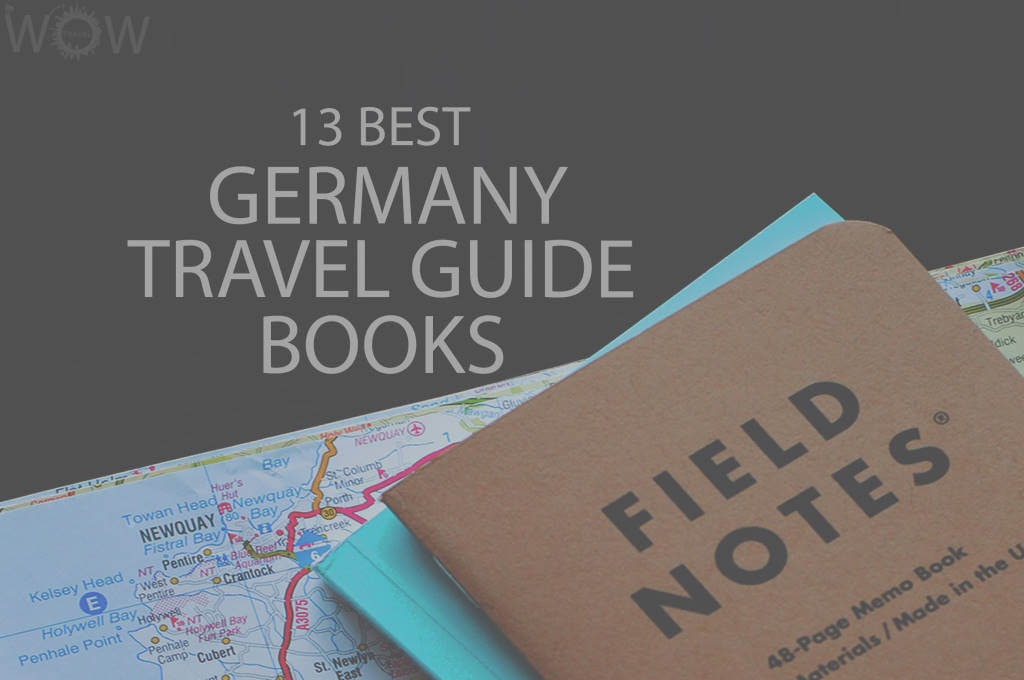
Planning on traveling to Germany? Whether it’s solo traveling, backpacking, or traveling with family, exploring Germany is going to be a wonderful travel experience. Germany is a huge, diverse, and amazing country. That’s also why you need travel guides to Germany. The country is also famous for its beer, sausages, majestic castles, and incredible hiking trails. It’s recommended to take your time and don’t rush while you’re visiting the country. Hence, you may want to have a basic plan or itinerary to make the best of your trip. To start your planning process, you can always refer to Germany travel guide books.
These travel guide books will help you figure out what to do, what to see, ways to get around, and show you everything you need to have the experience of a lifetime. Germany tour guide books also give you a little of the history of the places you visit. So, you can understand the culture better.
How To Choose The Best Germany Travel Guide Books?
Choosing the best Germany travel guide books helps you travel through Germany as seamlessly as possible. But, when you look at the shelves in the bookstore or online, it can be overwhelming. There are different aspects you should consider when selecting travel guides to Germany. Here are some of them!
Publisher/author
There’s a full range of guide book publishers. Choosing one of the known publishers or authors gives you up to date, inspiring, and trustworthy information. World-class guide books are written by expert writers that really know and familiar with the city, places, and others. Some well-known authors also write the guidebook based on their own experiences.
Paperback, hardcover, or digital version? Some travelers who look for the best Germany travel guide books may prefer physical books (either it’s paperback or hardcover). Though it may not be handy, these books are useful when you need to take notes, use the maps, or look at the photos for preferences. Most publishers also provide a digital version for travelers who prefer practicality more.
There are different kinds of Germany tour guide books you can choose from. Some books focus on relaxation, adventure travel, and traveling with children. Other books aim at travelers with different budgets. For example, if you want to visit Munich for its famous Oktoberfest, you can choose a guidebook that focuses on the festival and places you can stay near Oktoberfest itself. Are you planning to hike in the Alps? Then, choose a guidebook about Bavarian Alps with information about the mountain treks and detailed information, such as elevation, the trail, and more.
Whichever traveling style you have, the best Germany tour guide books should give you all the information you need. Some travelers may like guidebooks with stunning photos, others may like those with the history or background about the region or the places they’re visiting. If you plan to have road trips or walking tours, getting a guidebook with maps and noted sights along the way is the best choice. What’s more, good guidebooks provide you handy tips and tricks from the insiders.
What should a travel guide include?
A good guidebook should include information about everything that useful for travelers, including places (regions), sights, and activities. Other information, like restaurants and accommodation, may be outdated, but still, it helps travelers to get a recommendation. Plus, the travel guide book that contains historical and cultural information and maps of varying details will be very useful.
German Survival Guide
Traveling in Germany without speaking a word of German is possible. But, having German Survival Guide is not only giving you language and cultural information about the country but also provides a lot of vocabulary and basic instruction that all focused on travelers’ needs. This why this book is on our list of Germany travel guide books.
Knowing a few phrases helps you making friends and ensuring a rich and rewarding travel experience. You can buy last-minute tickets to the opera, how to get help in an emergency or to find things to do in Berlin including discovering a hidden bar. For every purchase, you’ll get two cassettes and a small glossary/dictionary. All these make it one of your best travel guides to Germany.
The book has three parts, including phrases and grammar. It also includes full of cultural notes, like how not to look like a tourist, why not use first names, how to tip, and how to have good table manners. So, you understand daily social expectations, know what to expect and how to deal with them. You will find German pronunciations written throughout the book. With this, you’ll always have guidance on how to pronounce new words and phrases. Besides, the book provides an extensive index to help readers find the topics they want.
Long-term travelers, backpackers, business, and student travelers

101 Amazing Things to Do in Germany
If this is your first time traveling to Germany, 101 Amazing Things to Do in Germany is one of the best Germany tour guide books to get. It offers you clear explanations about Germany and it’s compact enough to take everywhere.
This book provides the insight track on the most amazing and coolest things to see and do around the country. Whether you’re visiting popular attractions in Cologne , Hamburg, Dusseldorf, Stuttgart, and Bonn, or visiting incredible festivals, from electronic festivals with world-famous headliners to the Berlin International Film Festival.
It also includes good information and travel tips, like where you want to dine, the places where you can party like a local and make new friends, and where to shop for authentic souvenirs. Visiting the fairytale castles that inspired Disney movies? You can find information about the coolest historical and cultural sights that you can’t miss. What’s more, there are some recommendations for outdoor activities and destinations for nature and outdoor lovers.
Adventurers, backpackers, photographers, party-goers, art, and cultural lovers
The Ultimate Guide to Oktoberfest
You can find Oktoberfest around the world, but Munich is the place where you can get an authentic experience in its original place. The book is written based on the author’s knowledge and experiences from countless visits to the festival for years, making it one of your best travel guides to Germany. It gives visitors of Oktoberfest extensive practical advice and a clear idea of things to do and see during the festival, no matter if you come as single travelers, couples, groups, or family.
You will find everything about the event in 39 pages of The Ultimate Guide to Oktoberfest . There is a section about Oktoberfest’s background to give you some insight into the world’s biggest folks and beer festival. The table of contents guides you on the essential information, like How to get there, What to Wear, What to do if you don’t have a reservation, and What to eat and drink.
Some sections give you a description of each tent (14 big beer tents and more than 20 small and medium-sized tents). Get the details about The Parades, such as the Traditional Costume Parade and Opening Parade. You will also find the lyrics to few German songs. So, you can join in the singing in the beer tents.
Food travelers, photographers, party-goer travelers, groups, and family travelers
The Rough Guide to Germany
If you’re looking for Germany travel guide books in the Kindle version, The Rough Guide to Germany is your best choice. Whether you’re planning to cruise down the Rhine Valley, go wine-tasting along the Mosel Weinstrasse, or enjoy the Schauinsland cable car, it helps you discover Germany and get the most of your visit that suits every traveler’ budget.
It provides detailed regional coverage, including off the beaten track or more tourist destinations like Berlin and Brandenburg. The book also includes ideal places and attractions to visit, such as Schloss Neuschwanstein, Elbe Sandstone Mountains, and Berlin Wall Memorial along the way to help you organize your trip itineraries. Plus, recommendations to sleep, eat, drink, and shop.
Rough Guide books are written by expert authors who are passionate about both writing and travel to deliver insight and priceless information. The Rough Guide to Germany is full of a stunning and rich collection of inspiring color photography. Plus, there are full-color maps that you can use without needing to get online. There’s even essential basic pre-departure information, including getting there, local transports, and background information about history, books, film, and music. So, if you need Germany tour guide books for your traveling, this is the one.
Family or group travelers, solo travelers, backpackers, photographers
DK Eyewitness Travel: Back Roads Germany
DK Eyewitness Travel: Back Roads Germany is one of the best Germany travel guide books for travelers who want to discover the real soul and charm through the back roads of Germany. The book provides you twenty-four researched routes, each lasting one to five days. The book reveals hidden gems, breathtaking views, and authentic local experiences that you can only discover on road.
Get the unexpected experience on each tour that is burst with information and loaded with ideas for varied activities. These include cycling trips, short walks, and longer hikes to days on the beach, watersports, to wine tours. This book includes glossy color photos and a pull-out map of the entire region for easy navigation between tours and zip code information for use with a GPS device.
Plus, it has practical information you would need, including road conditions, length of the drive, parking information, and opening hours. On top of that, the authors also put the best-value hotels, guesthouses, and restaurants specializing in regional produce. All this information making it your best travel guides to Germany.
Adventurers, backpackers, family/group travelers, and photographers who want to experience Germany on a road trip
Journey Through Germany
Journey Through Germany offers you a guide from north to south Germany that offers many different natural and cultural landscapes. These include the plains of northern Germany, the midlands hills to the highest point in the land, the Zugspitze, the coastal mudflats, and the popular islands of Sylt and Rügen. Besides, there is also additional essence about Germany, like Goethe and Schiller, Ludwig II of Bavaria and his palaces, plus the castles on the Rhine and Saale.
This travel guides to Germany book has the cover picture of Neuschwanstein Castle and more famous sights presented in the book. It gives a good overview of rich and turbulent past places in Germany, from the fairytale castles of Ludwig II of Bavaria to the Romanesque cathedrals of the German emperors. You will find that the book contains 75% photos and 25% text. Plus, there is short (yet informative) information for each image.
It provides a wide variety of photos, including churches, castles, small towns, big cities, people in local costumes, landscapes, and food that can be your photos’ inspirations. The book also includes Medieval cities and modern architectural constructions that harbor many highlights of Germany’s artistic and cultural history.
Photographers and the tech-savvy travelers
Walking in the Bavarian Alps
Planning to hike the Bavarian Alps on the border of Germany and Austria? You should get Walking in the Bavarian Alps before going. This guidebook provides information on mountain walks and treks in Bavarian Alps, (southern Germany) between Lake Constance and Berchtesgaden. There are 70 routes range from half-day walks to 3-day hut-to-hut treks you can choose from, making it one of the best Germany travel guide books that all hikers and adventures need.
Some treks, including Partnach, Königssee and Breitach, and Höllental gorges are accessible from Munich, Salzburg and Innsbruck. This Bavarian hiking guide in the English book helps you narrow down your hike routes. Also, it gives you detailed information, including elevation gain, what there is to see along the way, a nice description of the trail terrain, and difficulty level. Along the way, you’ll find its detailed hiking map very useful. It also includes color photos, transport advice, and good tips for accommodation and refreshment stops.
Adventurers, hikers, outdoor lovers, and photographers
National Geographic Traveler Germany (4th Edition)
If you’re looking for Germany travel guide books that mention smaller towns in Germany outside the cities, National Geographic Traveler Germany (4th Edition) is a great choice. For example, the book gives a short page of information about the city of Münster, but with quite detailed facts and interesting things to do in Münsterland and the area around Münster. It also the perfect Germany Travel Guide book for getting to know the countryside, complete with detailed background descriptions and self-guided walking and driving tours. This guidebook will satisfy your eyes with lots of fabulous photos from National Geographic.
If you want to take a walk up to the Summit of the Brocken, you will get everything you need to know about the information on walking or taking a train. Also, there are details on how hard the walk is, what is not to be missed, and how long it will take you. Besides, the book covers the entire country region by region, from the capital city of Berlin, Rheinland-Pfalz, Thuringe, Sachsen, northern Bavaria, Munich, and the Alps, and finally Baden-Wurtemberg.
What’s more, it provides you the insider tips on favorite or little-known sites and events. These include attending the medieval festivals celebrated at many castles in the Rhine Valley, surfing and windsurfing off the northern Baltic coast, touring underground Berlin, and learning how to brew beer in Bavaria.
Backpackers, adventurers, hikers, and photographers who look for enriching and authentic experience
Kids’ Travel Guide Germany
Traveling with kids can be challenging. If you plan a family trip to Germany for the first time, Kids’ Travel Guide Germany is one of the best Germany travel guide books to give your kids. It’s a smart and fun way to keep your children interested in traveling from an early age. It focuses on four main destinations in Germany: Berlin, Munich, Frankfurt/Main, and Hamburg. The book helps them (and also you or other adults) to get more familiar with the country and ready for the journey.
It includes activities before leaving, even suggestions for what to pack. Children can learn a little about the country, from flags and symbols, geography, food, history, and even some useful word in Germany.
With the help of a fun, educational, and engaging tour guide, Leonardo, kids can read relevant facts about Germany. The texts are well written and simply accompanied by big drawings and pictures. This unique travel guide and activity book in one also includes puzzles, useful tips, quizzes, coloring pages, and special tasks to keep them interested during the trip. What’s more, they can document and write about their experience in the several journey pages in the book. Not only available in paperback, but it’s also available for e-book readers.
Kids and family travelers
Fodor’s Travel Essential Germany
Whether you’re planning to visit Munich, Berlin, and the Bavarian Alps for the first time or third, Fodor’s Travel Essential Germany is a great guidebook to make the best travel experience. Fodor’s travel guides are written by local writers who know the destination better than anyone else.
It’s divided into regions to help planning your trip. From the capital city Munich, the art scene of Berlin, to the more traditional region of Bavaria. Whether you’re interested in Germany’s beautiful scenery, vibrant nightlife, and hearty food and drink, the book gives recommendations, up-to-date references, and important facts.
It also includes useful details, such as where to eat and stay, climate throughout the year, and when attractions are closed. Plus, there are full-size street maps that will help you get around confidently. Spectacular color photos give you some guides and inspirations of the ultimate places and attractions throughout Germany. What’s more, there are some sample itineraries to help you plan. These include a map with travel times by train and recommended scenic bike rides and drives. Get this full-color travel guide book on paperback and digital version, where you can get it on Kindle.
Backpacker and adventure travelers, family or group travelers, business travelers, food travelers, and party-goers who are looking for insider tips from local experts
Rick Steves Germany 2020
Rick Steves Germany 2020 is one of the most useful Germany travel guide books you can have. It helps you in preparation if you plan on visiting Germany for the first time and don’t know where to start. The book is easy to navigate, full of advice, and also focuses on details like money and transportations. So, you can create unique itineraries aligned with your interests for a multi-week trip through Germany on budget. Whether you’re visiting modern cities, alpine forests, remarkable villages, or fairytale castles, it has it!
Even before you leave, the book already helps by providing a packing checklist. It also gives historical information and how to get the most out of your time visiting top sights and hidden gems. The book is divided into some cities to help you find the destination easily. Plus, there are sections with helpful tips on finding places to sleep, eat, and see. You will also find information about transportation and travel tips to connect with local culture or self-guided walking tours. On top of that, this comprehensive travel book includes a German phrasebook and a fold-out map.
Backpackers and adventurers
Lonely Planet Best of Germany
Lonely Planet is here with one of the best Germany travel guide books. It always comes with loads of information in a short amount of time. As one of the world’s best travel guidebook brands, Lonely Planet Best of Germany provides trustworthy information for every kind of traveler. You’ll find info on several top major cities, like Berlin, Cologne, Neuschwanstein, Potsdam, and Dresden, as well as Germany’s most popular attractions. So, you can get the best cultural insights about history, art, food, and more!
The book is available on both digital (Kindle) and paperback versions. The paperback version is small and sleek, making it easy to carry around during your traveling. It also includes several suggested itineraries with some information about various aspects of the trips. You’ll find recommendations about things to see and do, places to eat, places to avoid, and how to get to and from. Though it doesn’t provide lodging recommendations, the book provides some brief information on the different areas to stay in town. Besides, our website has covered that section for you!
At the end of the book, there are two short sections about German history, food, beer, and wine. Also, the arts and architecture of Germany, the German outdoors, and Germans as a people. It has full-color pictures of Germany’s interesting places. What we love the most is that the book has several detailed maps.
Backpackers, group travelers, photographers, family travelers, and tourists who prefer short stays in different places
DK Eyewitness Travel Guide Germany
Filled with information, DK Eyewitness Travel Guide Germany is a book that any traveler would need. Like others DK Eyewitness Travel Guide, this book is written by their expert travel writers and researchers. This guidebook is divided into states and major cities by a color-coding on the page edge. So, you will find the best attractions easily, from its Christmas markets, festivals, popular beer halls, to beautiful castles. Also, the book provides detailed itineraries and “don’t-miss” destination highlights with insights into history and culture. This makes it great for planning your visit.
There’s a breakdown of each state into smaller cities that are filled with a Visitor Checklist, several walking tours, and a map. It includes practical information about each location, like hours of operation and a phone number. Plus, the book provides about federal holidays. What’s more, there are hotel and restaurant listings for your recommendation.
The book also includes hand-drawn illustrations and hundreds of beautiful photographs. Our favorite is the 3D image of the Castle in Heidelberg with complete tags. All show what each part is and when it was completed. Sits at the top of our list of the best Germany travel guide books, it’s the next best thing to have a personal guide at your side. It’s also available in Kindle if you prefer the digital version.
Any type of traveler, from business travelers, family or group travelers, long-term travelers, backpackers, to solo travelers, and more
Author: Adam G
As a travel enthusiast and experienced adventurer, I have spent years exploring the world and discovering hidden gems in every corner of the globe. From backpacking through Europe to trekking in the Himalayas, I have chased my passion for travel and embraced every opportunity to learn about different cultures and ways of life. Now, as a travel writer, I channel my love of exploration into creating informative and inspiring content for fellow travelers. Whether you're planning a solo trip to a remote destination or seeking family-friendly activities in a bustling city, I am dedicated to providing you with the tools and knowledge you need to make the most of your journey. With a keen eye for detail and a love of storytelling, I bring each destination to life through vivid descriptions and engaging narratives, highlighting the unique experiences and attractions that make each place so special. So join me on this journey of discovery, and let's explore the world together!
Leave a Reply Cancel reply
You must be logged in to post a comment.
How to travel in Germany — a compact guide
P lanning a trip to Germany? Here's what you need to know to have a great vacation.Are you planning a trip to Germany and wondering what you need to know? We've got you covered! In this short guide we answer some of the main questions tourists ask before visiting Germany. Here's what we'll discuss:
Basic facts about Germany, top sights, how to get around, where to stay, safety issues, how to pay and tip, cuisine, drinks and culture
Basic knowledge
When traveling to Germany it's helpful to know a few basic facts about the country.
Where is Germany located?
Germany is in the center of Europe and is divided into 16 federal states, including the city states of Berlin, Hamburg and Bremen. The largest states are Bavaria, Lower Saxony, North Rhine-Westphalia and Baden-Württemberg.
How big is Germany?
It is approximately 360,000 square kilometers (137,847 sq miles) in size. The population is around 84 million people.
Which cities are the largest?
Berlin is the capital of Germany and the largest city with almost 4 million inhabitants. The next largest is Hamburg in the north, followed by Munich in the south and Cologne in the west.
Which languages are spoken?
German is the national language. Depending on the region, there are different dialects, some of which are not so easy to understand. Danish and Frisian are also spoken in the north, while Sorbian is spoken in parts of Brandenburg and Saxony. Many Germans also speak English well.
What is the weather like?
Generally, Germany has a moderate climate. In summer you can walk around in shorts and a T-shirt -- although some days it can get really hot. In spring and fall be prepared to wear trousers, sweaters and light jackets. In winter, temperatures can dip below freezing and it can snow.
Germany's landscape is very diverse. If you head north, you can take a beach vacation on the Baltic Sea or North Sea. In the center of the country you'll find many forests, lakes, rivers and nature preserves. The Alps are in the south and are perfect for hiking and skiing in the winter.
What must you see in Germany?
Germany has many castles, fortresses and ruins, as well as charming half-timbered houses. The harbor cities of the north are characterized by brick buildings.
Which sights are particularly well-known?
Here is a short list, which is not exhaustive:
Berlin: Brandenburg Gate, Reichstag building, television tower, Museum Island, Berlin Cathedral Hamburg: Elbphilharmonie, Speicherstadt district, Town Hall, Harbor Munich: Marienplatz square, Munich Residenz, Nymphenburg Palace, English Garden Cologne: Cologne Cathedral Palaces: Neuschwanstein Castle in Füssen, Sanssouci Palace in Potsdam, Heidelberg Castle, Hohenzollern Castle in the Swabian Alb
Which events and festivals should not be missed?
The largest folk festival in the world takes place in Munich each fall: Oktoberfest -- you can immerse yourself in Bavarian tradition here. The Christmas period is a great time to visit -- you can visit the country's charming Christmas markets. And in February, many cities celebrate Carnival, also known regionally as Fasching or Fastnacht. You'll see thousands of people wearing costumes and celebrating on the streets or in clubs and bars. The biggest public festival in the north is Kiel Week, which takes place in summer. It is one of the largest sailing events in the world and dates back to the end of the 19th century. Other well-known festivals include Hamburger Dom (spring, summer and winter), Hafengeburtstag in Hamburg (May), Schützenfest in Hanover (June/July), Rheinkirmes in Düsseldorf (July), Maschseefest in Hanover (July/August), Cranger Kirmes in Herne (August), Cannstatter Volksfest (Wasen) in Stuttgart (September/October) und Bremer Freimarkt (October)
What is the best way to get to all these places?
Germany is so big that it can take the better part of a day to drive from north to south, so you can also take a flight if you're short on time. Train, bus or car rental all work for shorter distances.
What should you consider when driving in Germany?
In Germany people drive on the right side of the road. And as you may have heard, often there's no speed limit on the autobahn -- Germany's highway. But in urban areas speed limits are 50 km/h or 30 km/h. On country roads the speed limit is 100 km/h, and on highways it is often 120 km/h -- unless there's no limit at all.
How does the rail system in Germany work?
There are different types of trains. The ICE and IC high-speed trains connect the major cities and travel at speeds of up to 300 and 200 km/h. There are also local trains such as the Regional-Express, the Interregio-Express, the Regionalbahn and the S-Bahn, which also take you to your destination, albeit at slower speeds. The German ticketing system is based on trust. There are no track access restrictions, although inspectors on trains carry out spot checks and give fines to anyone not holding a ticket.
Which ticket is right for me and how do I book?
You can buy tickets online, via the Deutsche Bahn app, at ticket machines or at ticket counters. If you book early, you can get cheaper tickets, but the tickets cannot be changed. If, however, you cannot catch the train you've booked due to previous train delays or the train is canceled then you can use it on another train. However, if it's your fault you missed the train, the ticket expires. Flextickets, which are quite expensive, allow you to choose any train connection on a given day. There are various railcards that give you discounts, but these are not useful for short visits, since you need to sign up for an annual subscription. However, if you are in the country for longer than a few days, you can buy the Deutschlandticket. This is also a subscription, but can be canceled monthly and costs only E49 ($53) per month. This ticket allows you to use all local public transportation throughout Germany. Larger cities are often divided into zones like A, B and C. When you buy a ticket, check in advance which zone your destination is in, since ticket prices differ accordingly. Most stations have maps which show the different zones in relation to stops so you can easily find what you need.
What alternatives are there to car, train and plane?
Plenty! It is relatively inexpensive to travel with long-distance buses. In cities, you can choose from city buses, streetcars, subway trains or trams. Many places also offer rental bikes or e-scooters that you can book via various apps. You can also choose to book taxis in large cities with apps. This can help you to know the price in advance and not to be overcharged, since the price is preset in the app. Keep in mind that taking a taxi in Germany can be expensive.
Accomodation
What accommodation options are there?
Well-known international hotel chains such as Hilton, Holiday Inn or Maritim can be found in Germany, especially in larger cities. There are also many smaller, privately run hotels and guesthouses. Hostels and vacation apartments are also available, as well as inexpensive accommodation with locals via platforms like Airbnb. Germans love camping! There are many campsites in Germany where you can spend your vacation close to nature for a reasonable price. It's important to know that in smaller hotels, there may not be someone working at reception 24/7. If you're arriving late at night, check the website beforehand or call to let them know when you'll arrive so you're not left standing in front of a locked door.
How safe is Germany?
Germany is generally safe. Nevertheless, storms, floods or even riots can occasionally occur, such as on May 1st, Labor Day. It's a good idea to always keep an eye on your belongings, since theft can happen.
Payment and tipping
How do you pay in Germany?
Germans love to pay with cash! The currency is Euro, and it's best to always keep some cash on you. Many restaurants and bars don't accept credit cards.
How much and when do you tip?
Whether you pay with card or cash, in Germany you usually tip around 10% in restaurants. Servers will tell you the amount and you will then tell them the total price, including tip, that you would like to pay. For example, if you have a bill of E46 ($49), you would tell the waitress to round up to and charge E50 euros ($54).
Food and drink
What is typical German cuisine?
German food varies depending where you are. In the north near the sea, you'll find plenty of fish, while the south has many hearty dishes from Bavaria or Baden-Württemberg, such as roast pork, pork knuckle, dumplings or spaetzle (pasta that is similar to noodles). Bakeries in Germany have a large selection to choose from, including many different types of bread, rolls and small sandwiches.
What do people like to drink in Germany?
Germans are fond of beer and wine -- and they also make it too! There are 13 wine-growing regions in Germany. These areas make great destinations for day trips. When it comes to non-alcoholic drinks, coffee and tea are popular, as well as the famous German Apfelschorle -- apple juice mixed with sparkling water. Germans generally love mixed drinks -- beer is sometimes drunk with soft drinks (Radler) and wine is mixed with sparkling water, too (Weinschorle).
When you discover a new country it's an advantage if you know and understand the characteristics of local people in order to avoid misunderstandings.
What is important to Germans?
It's not just a stereotype -- Germans generally like punctuality. They usually let each other know if they will be five minutes late. Germans aren't really fans of small talk and tend to keep quiet on public transport. Don't feel offended by this, they don't mean any harm! Taking care of the environment is very important to Germans -- waste is separated, and bottles and cans are recycled. Don't be surprised if a bottle seems more expensive than you expected -- you're also paying a deposit. Once you return the empty bottle, you'll get the deposit back. Germans are relaxed when it comes to nudism. There are nudist beaches by the sea or lakes, and saunas are also textile-free. This can be quite disconcerting for some visitors to Germany.
So, you are now a Germany pro! Have fun traveling and getting to know the country!
Copyright 2023 DW.COM, Deutsche Welle. Distributed by Tribune Content Agency, LLC.


Did Marie Antoinette Have the Best Bedroom in Europe?
Who’s the most powerful ruler of them all? For a new series, one photographer found answers—in the bedroom.
Running as a parallel to this project is another ongoing work in progress that trades the stage for more intimate—though certainly no less performative—environs: the royal bedchamber. For this series, Leventi has been letting himself into the private quarters of Europe's grand palaces and aristocratic piles. Thought gilded thrones were the true seats of power? Think again.
We asked the photographer to share a few of these bedrooms with T&C . Then we got to work uncovering the secrets buried within. Where did Mad King Ludwig of Bavaria spend his nights? Just how much did a former prime minister spend on his trimmings alone? And did Marie Antoinette have the best bedroom of them all? Find out below.
Herrenchiemsee, Herreninsel, Germany
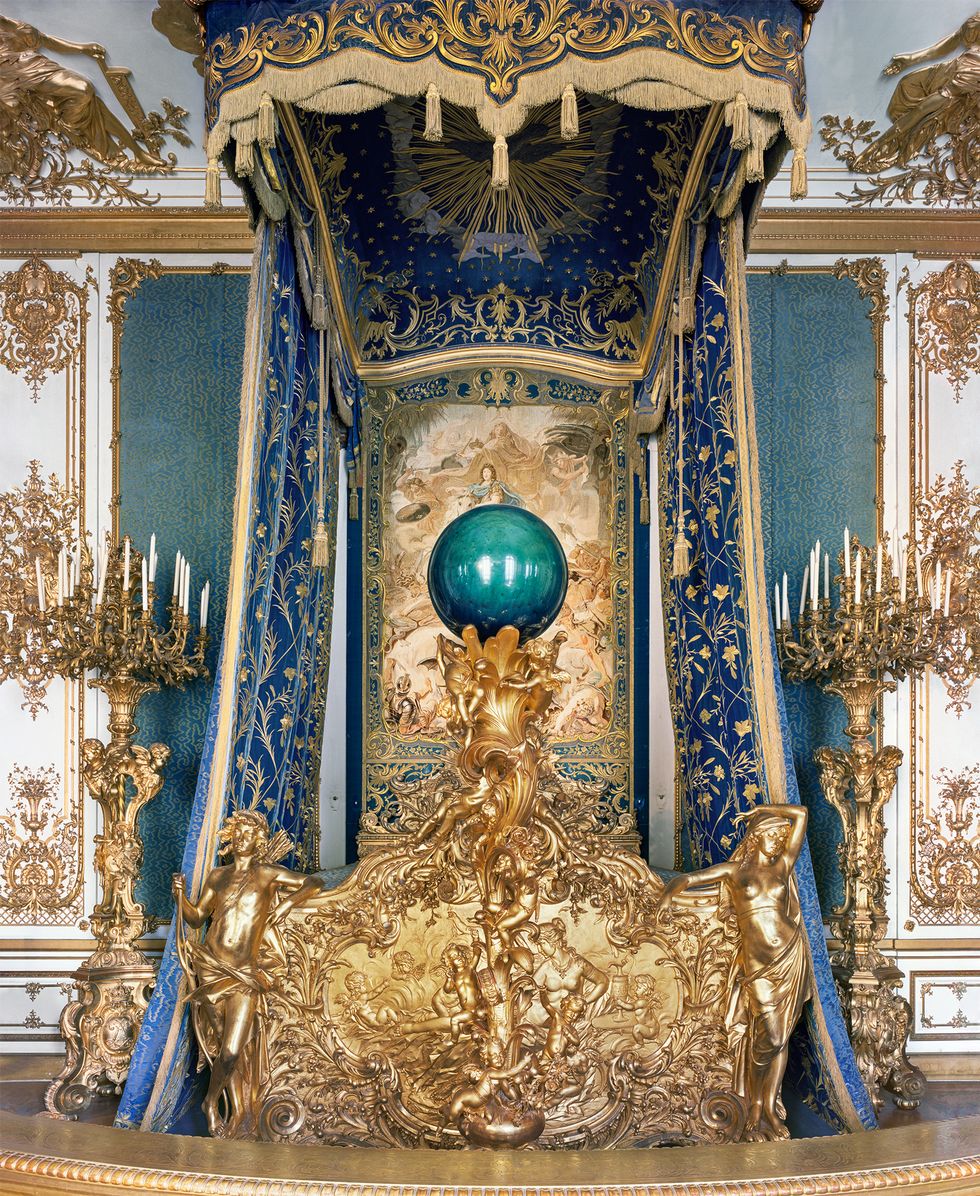
King Ludwig II of Bavaria built such extravagant castles, including this one modeled on Versailles, that he was called the Fairytale King. But his bankrupting spending habits (among other eccentricities) earned him a more enduring moniker: Mad King. Guided tours only, herrenchiemsee.de
Chatsworth House, Derbyshire, England

In 18th-century England, Lord Chamberlains had first dibs on the furniture of deceased kings, which is how the fourth Duke of Devonshire ended up with the damask bunk of George II, who reportedly died in it. As they say, one man’s deathbed is another man’s status symbol. Open January–May, chatsworth.org
Houghton Hall, Norfolk, England
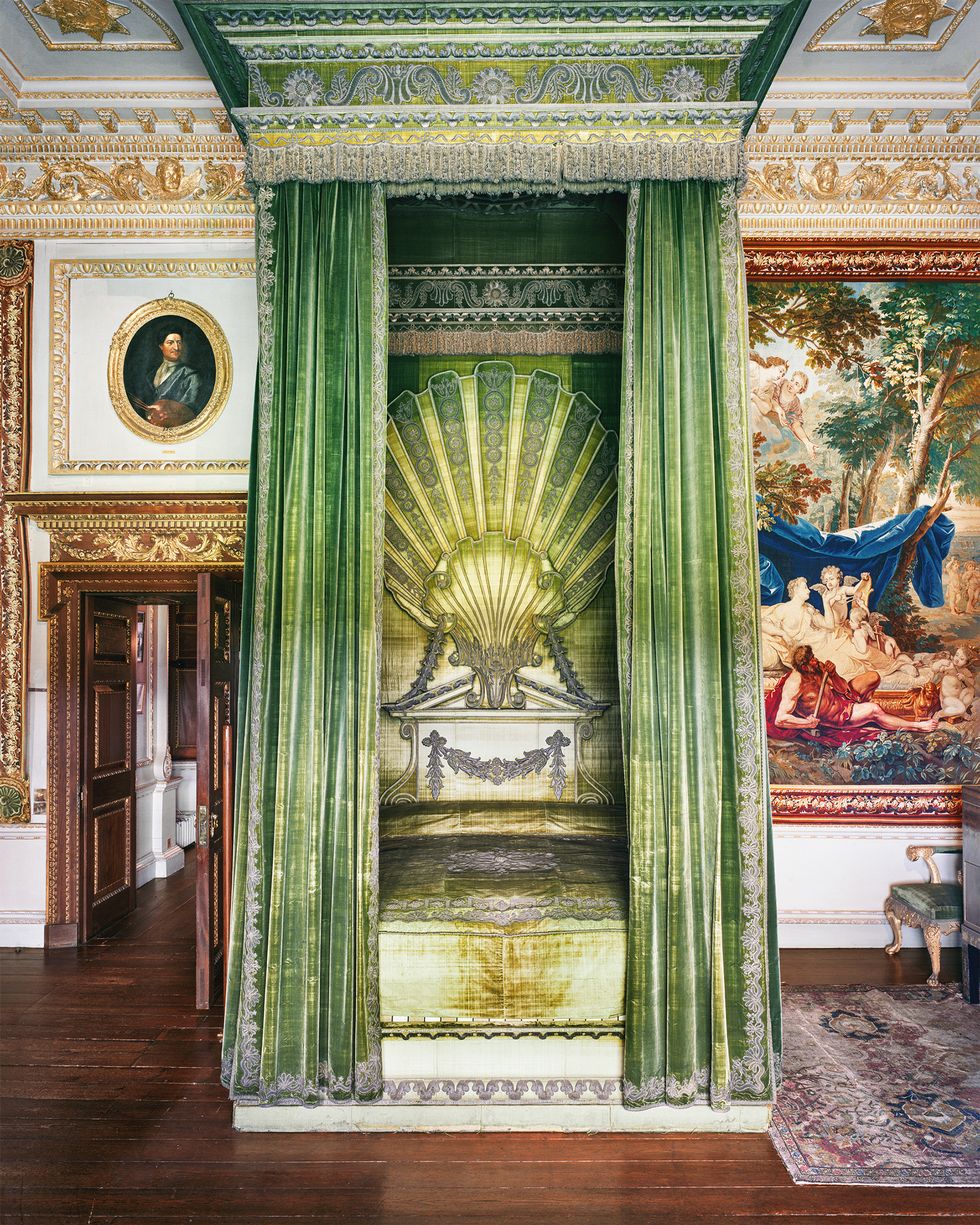
Robert Walpole wasn’t a king, but as England’s first prime minister he considered himself deserving of just as fabulous a bed for his home at Houghton. The velvet and gilt trimmings alone cost £1,200. That was in 1732; today it would be more than $300,000. Open April–October, houghtonhall.com
Chateau de Versailles, Versailles, France

Marie Antoinette regularly redecorated her apartments at Versailles to suit her taste du jour. She did the same with her private chambers, which were accessed via a secret door next to her bed and where she could take a break from royal obligations—and, presumably, her husband. chateauversailles.fr
This story appears in the April 2024 issue of Town & Country.
@media(min-width: 40.625rem){.css-1jdielu:before{margin:0.625rem 0.625rem 0;width:3.5rem;-webkit-filter:invert(17%) sepia(72%) saturate(710%) hue-rotate(181deg) brightness(97%) contrast(97%);filter:invert(17%) sepia(72%) saturate(710%) hue-rotate(181deg) brightness(97%) contrast(97%);height:1.5rem;content:'';display:inline-block;-webkit-transform:scale(-1, 1);-moz-transform:scale(-1, 1);-ms-transform:scale(-1, 1);transform:scale(-1, 1);background-repeat:no-repeat;}.loaded .css-1jdielu:before{background-image:url(/_assets/design-tokens/townandcountrymag/static/images/diamond-header-design-element.80fb60e.svg);}}@media(min-width: 64rem){.css-1jdielu:before{margin:0 0.625rem 0.25rem;}} In the Magazine @media(min-width: 40.625rem){.css-128xfoy:before{margin:0.625rem 0.625rem 0;width:3.5rem;-webkit-filter:invert(17%) sepia(72%) saturate(710%) hue-rotate(181deg) brightness(97%) contrast(97%);filter:invert(17%) sepia(72%) saturate(710%) hue-rotate(181deg) brightness(97%) contrast(97%);height:1.5rem;content:'';display:inline-block;background-repeat:no-repeat;}.loaded .css-128xfoy:before{background-image:url(/_assets/design-tokens/townandcountrymag/static/images/diamond-header-design-element.80fb60e.svg);}}@media(min-width: 64rem){.css-128xfoy:before{margin:0 0.625rem 0.25rem;}}

Why Billionaires Are Buying Up Sports Teams

Sanderson Launches New Home Collection

The Dawn of the Dumb House

Investment Portfolio April 2024: Wedding Edition
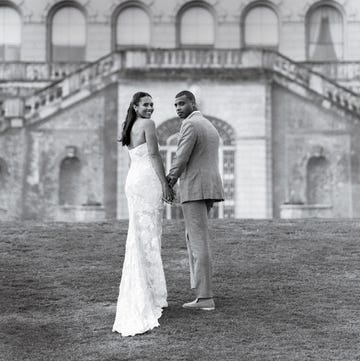
Zoe Otedola & Cole Weston's Bucolic Wedding

Emma Molz & Warren Elgort's Park City Wedding

The New Must in Wedding Prep: An Insta Makeover

Alejandra Alonso Rojas Launches a New Bridal Line

Exclusive: The Couch-Surfing Principessa

Why Ivy Leaguers Still Join Secret Societies
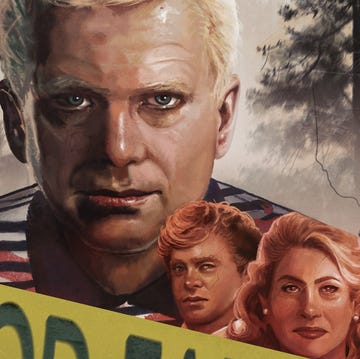
Murder and the Myth of the Good Family

IMAGES
VIDEO
COMMENTS
Here are some German trip itinerary ideas…. Germany itinerary ideas for a taste of everything: Southern Germany Classic: Munich, the Allgäu (for Castles!), Garmisch Partenkirchen, Berchtesgaden National Park, Stuttgart & Area, Black Forest. Eastern Germany Classic: Berlin, Dresden, Saxon Switzerland.
15. 1001 Easy German Phrases. $7.95. This German phrase book is the ideal companion for your trip to Germany. With more than 1,000 basic words, phrases, and sentences in German it covers every travel situation you could think of from small talk, asking for directions, finding a bank, and ordering at restaurants.
Germany Travel Guide: The Best Booking Resources. These are my favorite companies to use when I travel. They consistently have the best deals, offer world-class customer service and great value, and overall, are better than their competitors. They are the companies I use the most and are always the starting point in my search for travel deals.
Munich, Bavaria & the Black Forest. Berlin. Munich. Hamburg. City West & Charlottenburg. Historic Mitte. Prenzlauer Berg. St Pauli & Reeperbahn. Germany's best sights and local secrets, from travel experts you can trust.
Germany is blessed with some of Europe's most high-powered sights. It has spectacular scenery — the jagged Alps, flower-filled meadows, rolling hills of forests and farms, and mighty rivers — dotted all over with castles and churches of every variety. In Deutschland's idyllic half-timbered villages, you can enjoy strudel at the bakery or sip a stein of beer while bikes rattle by over the ...
Germany Travel Itinerary 7 Days - West. For this itinerary, the total driving time would be around 14 - 15 hours and the distance would be slightly over 1100 km. For these calculations, we included the day trip to Monschau (and back to Cologne) as well as the day trip to Freiburg im Breisgau (and back to Stuttgart), which would be a longer ...
Get information on Germany Travel Guide - Expert Picks for your Vacation hotels, restaurants, entertainment, shopping, sightseeing, and activities. Read the Fodor's reviews, or post your own.
Destinations like Berlin, Munich, Hamburg, and Frankfurt all offer something different, from modern architecture and 24/7 nightclubs to historic churches and cobblestone streets. Of course, some of the best places to go in Germany are the smaller cities and towns. Leipzig, for example, is just a short train ride from Berlin.
Saxony-Anhalt and the Harz Travel Guide. The Alps and eastern Bavaria Travel Guide. The Black Forest Travel Guide. Thuringia Travel Guide. World Heritage sites in Germany. Bremen and Lower Saxony. Munich. UNESCO world heritage sites in Germany. Germany sport a whopping 46 UNESCO world heritage sitesworth your visit.
Trier. #20 in Best Places to Visit in Germany. Situated about 10 miles east of Germany's border with Luxembourg, the country's oldest city draws history buffs in droves. Trier was founded by ...
Travelling in Germany. Audrey is a full time travel blogger so spends most of her time on the road. She has done extensive travel throughout Germany, including Berlin, Hamburg, Bebenhausen, Tuebingen, and more. Starting her blog in 2010, she never expected this ti turn into her full time job. But through sharing captivating photos and unique ...
Planning Your Trip. Best Time to Visit: If you're traveling to see the sites, the months of May and September usually offer less crowds and better weather. However, events like Oktoberfest and Germany's ever-popular Christmas markets draw tourists every year. Getting Around: Every corner of Germany is well-connected by car or train, with ...
Summer At Last: Beer Gardens, Swimming Fun, Strawberry Ice Cream. Summer Pleasures in Germany. Golden sunshine, colourful forests: the Indian summer can also be found in Germany. An ideal time for active holidaymakers and wellness fans. And for epicures, since this is harvest time. Autumn Holidays in Germany. Winter is the favourite season for ...
How long does it take to travel around Germany by train? It's quick and easy to travel around Germany by train. Here are some sample travel times to give you an idea: Berlin to Hamburg - 1 hour 45 minutes ; Berlin to Munich - 4 - 4 1/2 hours; Hamburg to Lübeck - 1 hour ; Hamburg to Cologne - 4 hours ; Hamburg to Munich - 5 hours ...
TRANSPORTATION: The most popular method of travel around Germany are by train, bus or rental car. The Flix Bus Inter City Fare averages Euro 20 and the train averages Euro 5. Car rental varies by length of time and generally average around Euro 20 per day for a compact. A litre of petrol will cost you around Euro 1.50.
The best time to visit Germany is during the spring or fall months, specifically May or October. The spring is often met with moderate temperatures, and rain showers, but fewer crowds. Summer is peak season and locals rejoice as the weather finally warms up, and the sunshine arrives. Pack light clothing and expect large crowds if you visit ...
Here I can recommend DK Eyewitness Germany* and Fodor's Essential Germany*. Both travel guides cover all regions of Germany and go into detail about the culture, country and people. Another English travel guide is Rick Steves Germany*, which doesn't convince me 100 %, as it also leaves out entire regions. However, I would definitely prefer it ...
TikTokers take note - The Eyewitness Top 10 Berlin is the Berlin guidebook of your dreams, and it was just updated in late 2023! Unlike Eyewitness' comprehensive Berlin city guide (discussed above), this unique book has fewer than 200 pages, divided into almost 100 "Best of Berlin" lists.
Experience all of this in the best way possible, with the help of the travel tips you'll find throughout our Tour My Germany guide. Gain insights into German culture, including customs, etiquette, and popular activities, whether you're taking a road trip, using train stations, public transportation or some of the busiest airports. Be prepared ...
Germany is easily one of the most incredible countries in the world! Enjoy this 4K travel guide across Germany. From the towering Bavarian Alps, to magical ...
The "Kids' Travel Guide - Germany" by Shiela H. Leon, Salome G., and FlyingKids is a vibrant and engaging guide that transforms a trip to Germany into an exciting adventure for children. Leonardo, the friendly tour guide, leads young readers on a journey through Germany, making stops in Berlin, Munich, Hamburg, and Frankfurt.
3. Rick Steves Germany 2020 is one of the most useful Germany travel guide books you can have. It helps you in preparation if you plan on visiting Germany for the first time and don't know where to start. The book is easy to navigate, full of advice, and also focuses on details like money and transportations.
How does the rail system in Germany work? There are different types of trains. The ICE and IC high-speed trains connect the major cities and travel at speeds of up to 300 and 200 km/h.
Marie Antoinette regularly redecorated her apartments at Versailles to suit her taste du jour. She did the same with her private chambers, which were accessed via a secret door next to her bed and ...